- Destinations

11 Best Things to Do in Tokyo 2023
Travel guide for Tokyo: Newly opening attractions in 2023
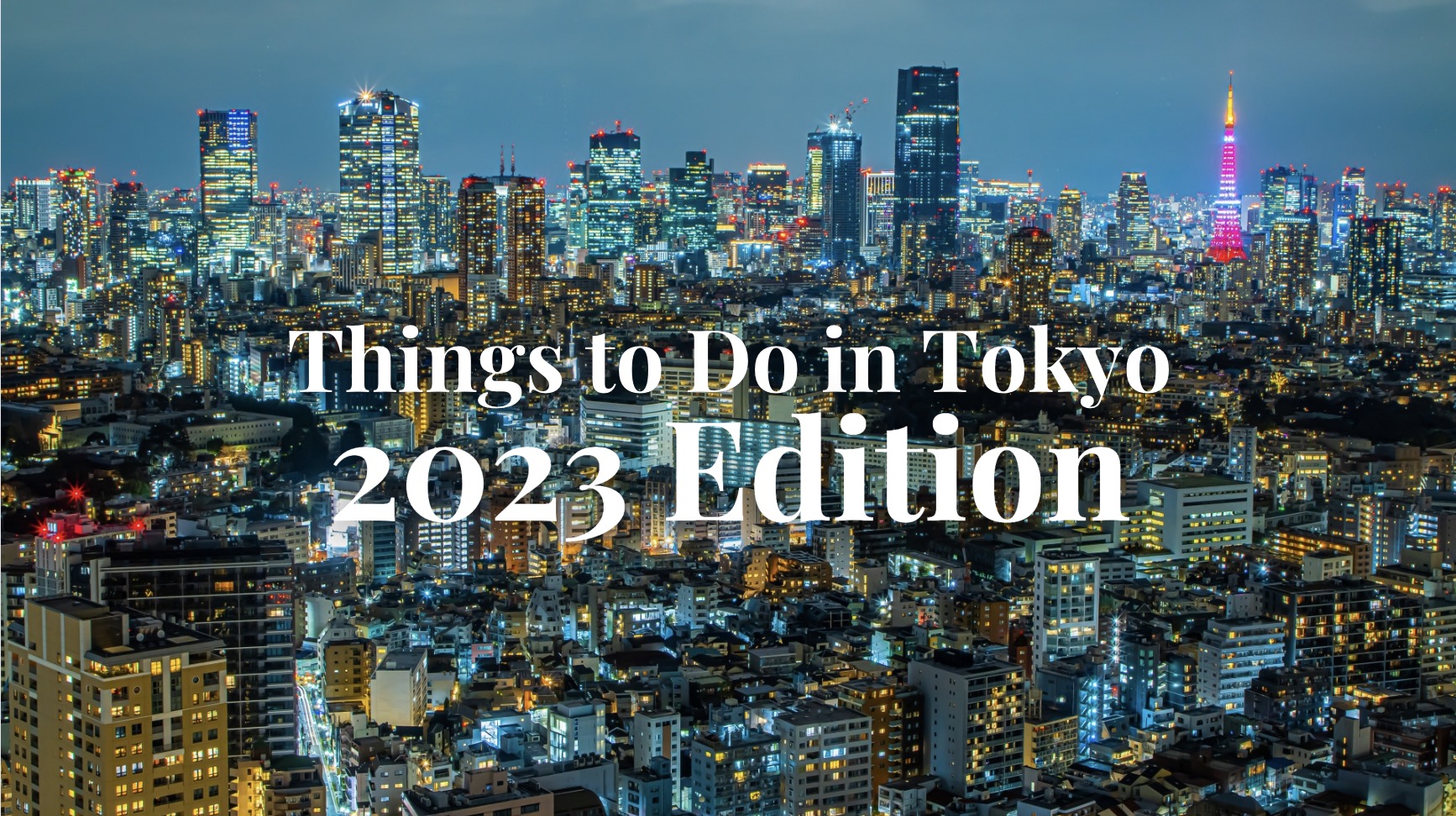
2023 is the year that tourism in Japan will revive. Now that border measures due to COVID are being dropped in May, international traveling to Japan is expected to increase to levels equal to that of pre-pandemic times.
Other than this, there are many large new commercial and entertainment facilities opening in 2023, especially within Tokyo. From high-rank hotels and shopping establishments to amusement facilities and multi-purpose high-rising buildings.
In this article, I will introduce to you our picks for the 11 best things to do in Tokyo in 2023. We will not only share with you the newly opening facilities, but also remind you of the already existing, but lesser-known tourist attractions and events you should check out in 2023. Hopefully, this article will give you some ideas for you in the case that you are planning on coming to Tokyo for sightseeing.
Apart from this list, if you’re looking for a list of things to do in Tokyo for your first-ever visit, you can also check out our list of the 30 best things to do in Tokyo in general from the following article.
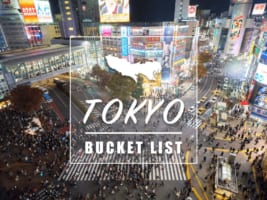
*Please note that this article contains affiliate links.
1. Stay at New Hotels Opening in 2023

As I previously mentioned, inbound tourism in Japan is expected to increase in 2023 and with that, one of the essential parts of traveling is picking where to stay during your journey. These past few years have been tough in that matter and because of this, many hotels had to close their businesses.
However, now that things seem to be heading to full recovery, many new hotels are planning to open this year. From high-end luxury hotels to charming neighborhood boutiques, all kinds of fresh new hotels will be waiting for your arrival.
Some of the most anticipated openings include the “Bvlgari Hotel” opening in April as well as the “Bellustar Tokyo” opening in Shinjuku in May.
For more information about new hotels opening in 2023 in Tokyo, be sure to check out the following article!

2. Tokyu Kabukicho Tower: Check out the brand new water motif building in Shinjuku

Talking about newly opening hotels, two of the most anticipated hotels opening this year are in the Tokyu Kabukicho Tower (東急歌舞伎町タワー) . This multi-purpose building opened in April of 2023 in Shinjuku.
This 48-story, 225m tall building includes two hotels (Hotel Groove Shinjuku, Bellstar Tokyo), a movie theater (eight screens), three multi-purpose theaters, an entertainment and food area, etc.
It is definitely a huge addition to the already popular city of Shinjuku.
▽More details about Tokyu Kabukicho Tower▽
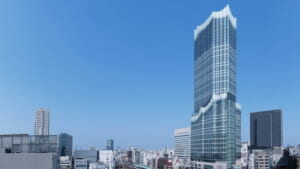
Information
3. Immerse yourself in the magical world of Harry Potter at Harry Potter Studio Tour Tokyo

Toshimaen was a long-running amusement park located in Nerima Ward. This amusement park closed in August of 2020 after being in business for 94 years. Three years after its closing, a brand-new entertainment facility is opening in this same location.
Harry Potter Studio Tour Tokyo – The Making of Harry Potter is a walk-through style entertainment facility that will show its visitors the making and behind-the-scenes of the Harry Potter movies. You’ll see the sets, real props, and even original costumes used by the actors.
This is without a doubt, one of the most anticipated attraction openings of the year 2023.
For more information about the Harry Potter Studio Tour Tokyo, check out the following article!

4. Visit teamLab Borderless at Azabudai Hills

The main building is, similar to the previously mentioned “Tokyo Kabukicho Tower”, a multi-purpose building that will include many different types of tenants.
This 64-story, 325-m tall building is just a part of the full Azabudai Hills which is like a small village that will include offices, a residential area, medical facilities, commercial areas, and even an international school.
One of the anticipated attractions in Azabudai Hills is the MORI Building DIGITAL ART MUSEUM which will feature the highly popular teamLab Borderless . TeamLab Borderless used to be located in Odaiba but closed in 2022. Now, it will re-open in a more accessible location in central Tokyo.
For more information about Azabudai Hills and Mori Building Digital Art Museum, check out the following links!
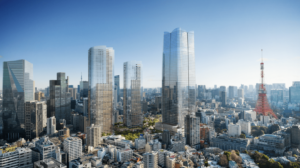
5. Stop by Haneda Airport Garden before taking a flight
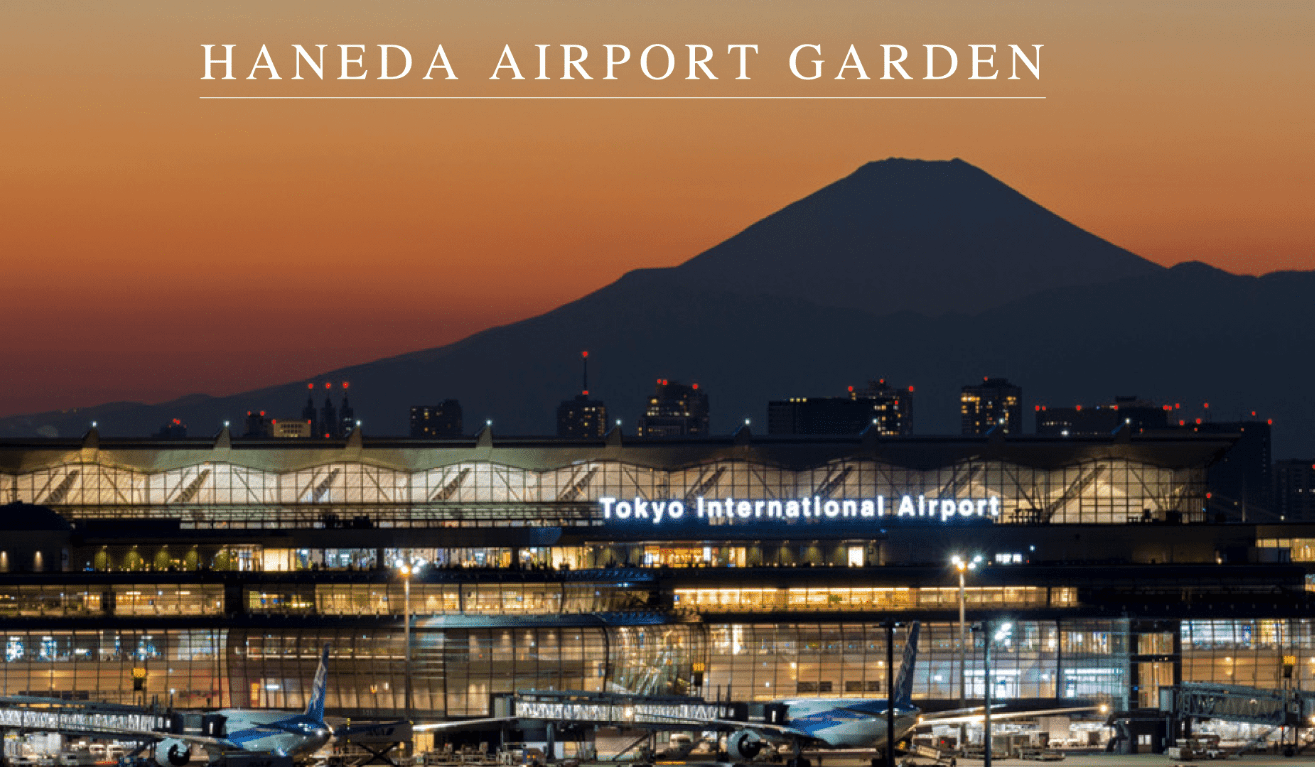
Haneda Airport Garden (羽田エアポートガーデン) is a large commercial building directly connected to Terminal 3 of Haneda Airport. It partially opened in December of 2022 and in January 2023, the remaining areas opened.
The shopping area has over 70 shops and is divided into five zones: “Japan Promenade” which offers made-in-Japan products that well represent Japan, “Haneda Sando” which has many souvenir shops, “Haneda Collection” where you can find useful travel products, “Haneda Food Selection” where you can find foods from various regions across Japan, and the drug store/convenience store area.
Other than the shopping area, this building also includes two hotels and a hot spring bath.
▽More details about Haneda Airport Garden▽
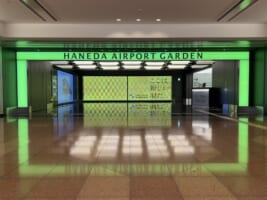
6. Tokyo Midtown Yaesu: Brand new commercial building next to Tokyo Station
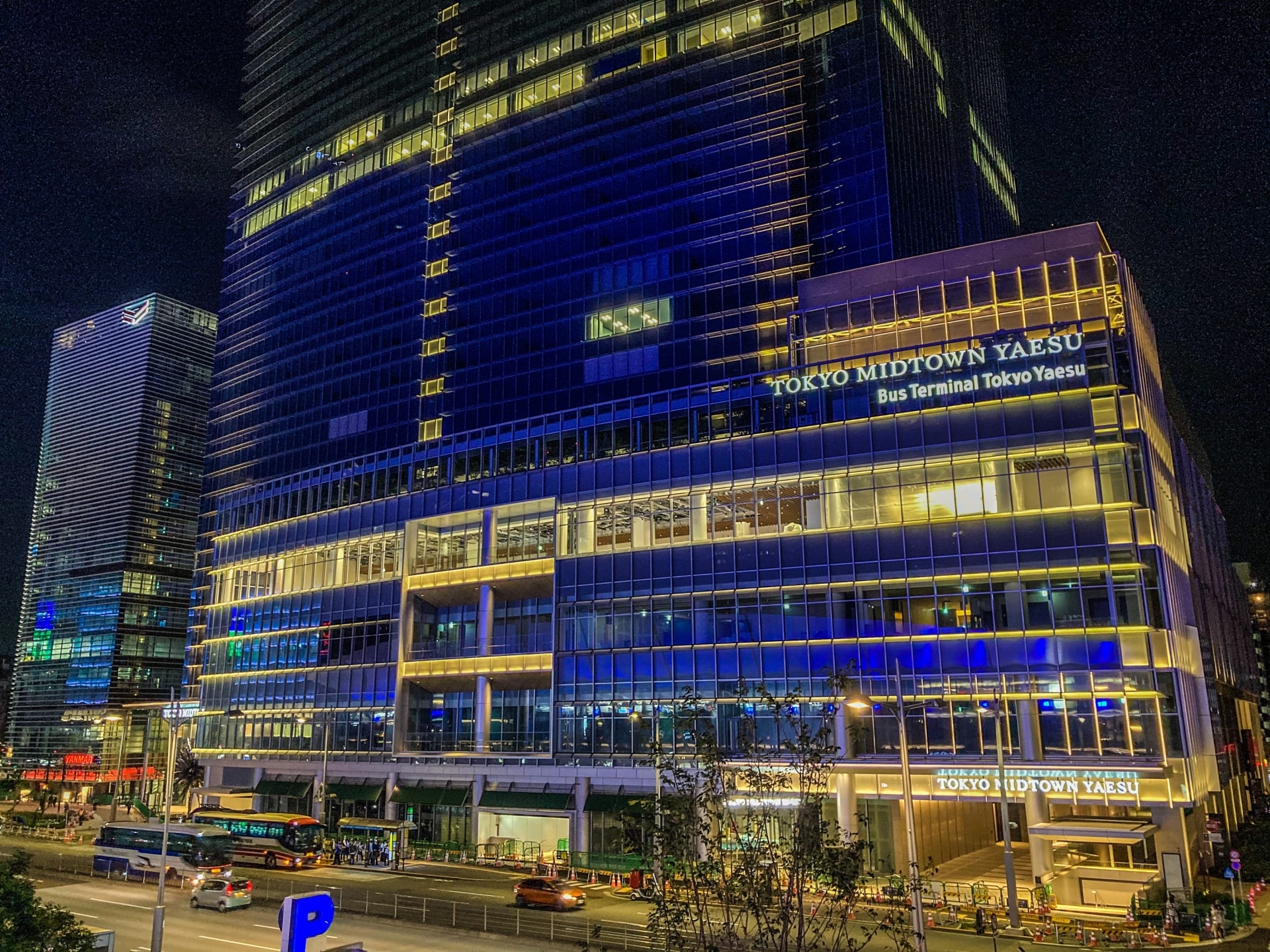
The complex actually consists of two buildings: the central tower and the central square. The central tower includes offices, a hotel, shops, a bus terminal, and a school. The central square includes offices, shops, and a childcare facility.
This building is a good addition to the lesser popular east side of Tokyo Station.
▽More details about Tokyo Midtown Yaesu▽

7. Visit the new hot spot in Ginza at Granbell Square

Granbell Square is a part-hotel, part-commercial building in Ginza. The hotel (GINZA HOTEL by GRANBELL) and the Spa & Sauna facility opened in April, while the rest of the facilities will open in September 2023.
Other than the hotel and Spa/Sauna, this building will also have restaurants (including a rooftop restaurant), a nightclub, a library lounge, and even a co-working space.
This place is located just a five-minute walk from Ginza Station on the Tokyo Metro Ginza Line, making it not only making it convenient for visiting but also a hotel option.
8. Go to Manga/Anime Paradise at Animate Ikebukuro
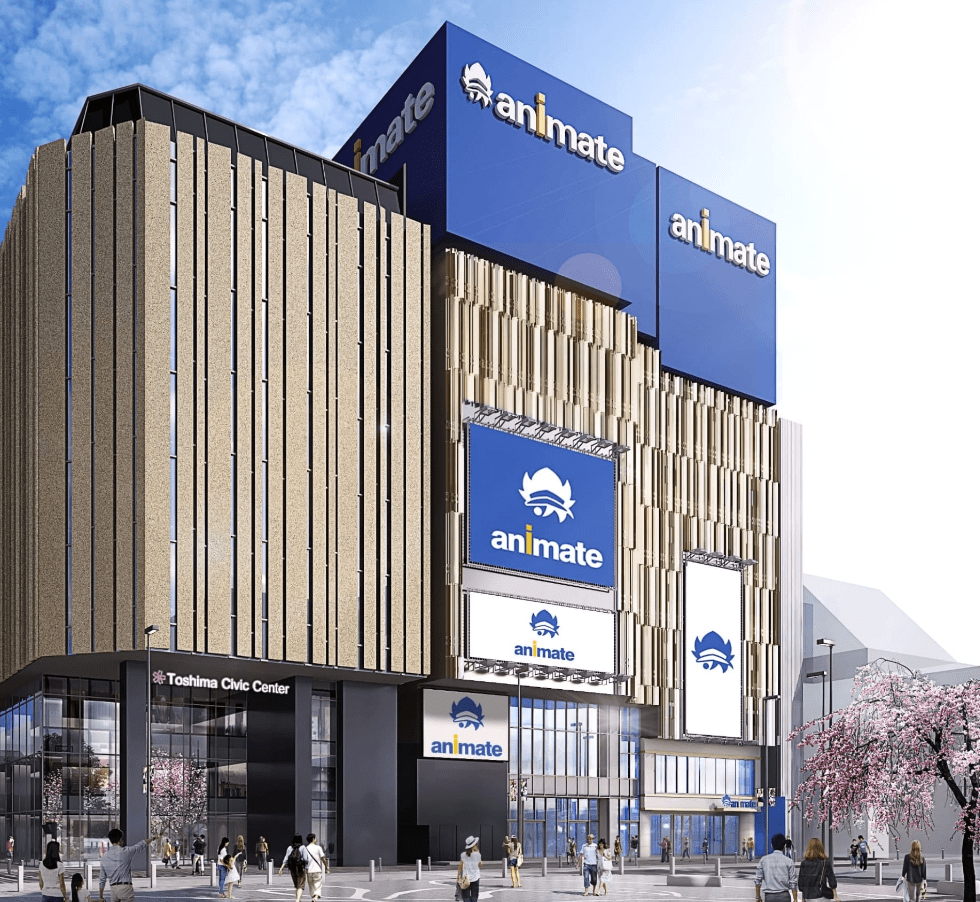
Animate Ikebukuro Flagship Store (アニメイト 池袋本店) is a long-running Anime-related shop that is celebrating its 40th anniversary. Along with the celebration, it re-opened its Flagship store in Ikebukuro.
The new store is now twice as large as it was before the renewal, including brand new features that will certainly appeal to the fans of this store. The Anime and Manga area is much larger than before and now they also have an apparel shop area as well as a theater, an exhibition area, and a cafe.
The new store was built to match the surrounding buildings in order to provide an atmosphere of unity within the city of Ikebukuro.
9. JIYUGAOKA de aone
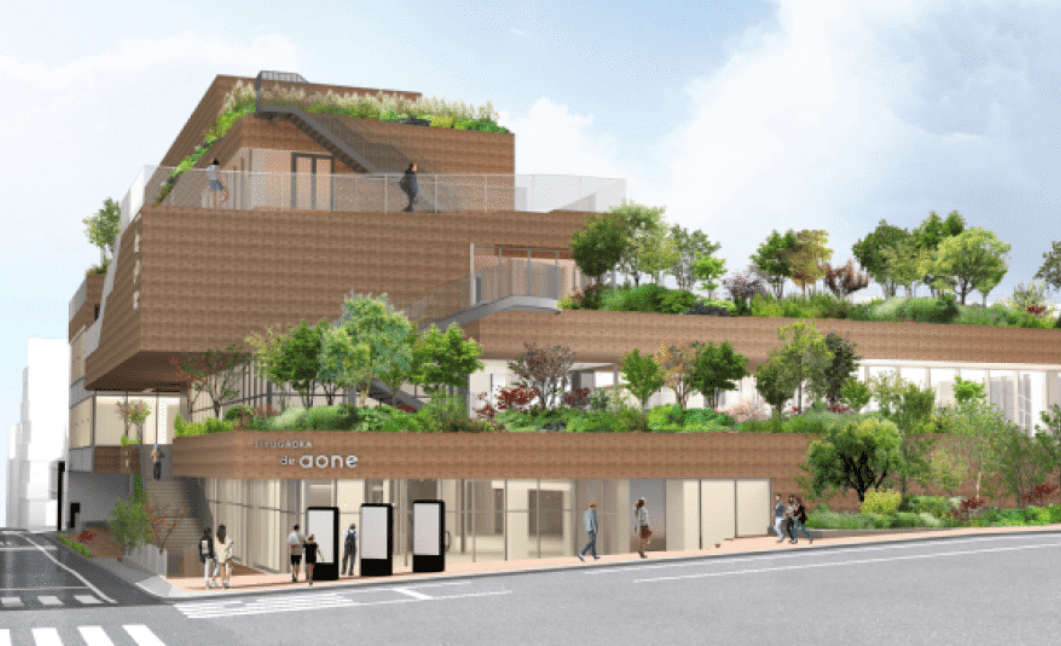
Opening on October 20, 2023, JIYUGAOKA de aone (自由が丘 デュ アオーネ) is Jiyugaoka’s new commercial hub managed by Aeon Mall. Located a short walk from Jiyugaoka Station, this expansive space hosts 26 specialty stores, offering diverse products from groceries to lifestyle goods.
The facility’s design mimics Jiyugaoka’s street atmosphere, especially evident on the second floor. The third floor houses various eateries alongside a sizable green terrace, blending seamlessly with the area’s refined aesthetics. This terrace, spanning around 1,000 m², is set to host events throughout the year, making JIYUGAOKA de aone a dynamic, interactive destination for visitors.
10. Explore hidden gem tourist locations near Tokyo
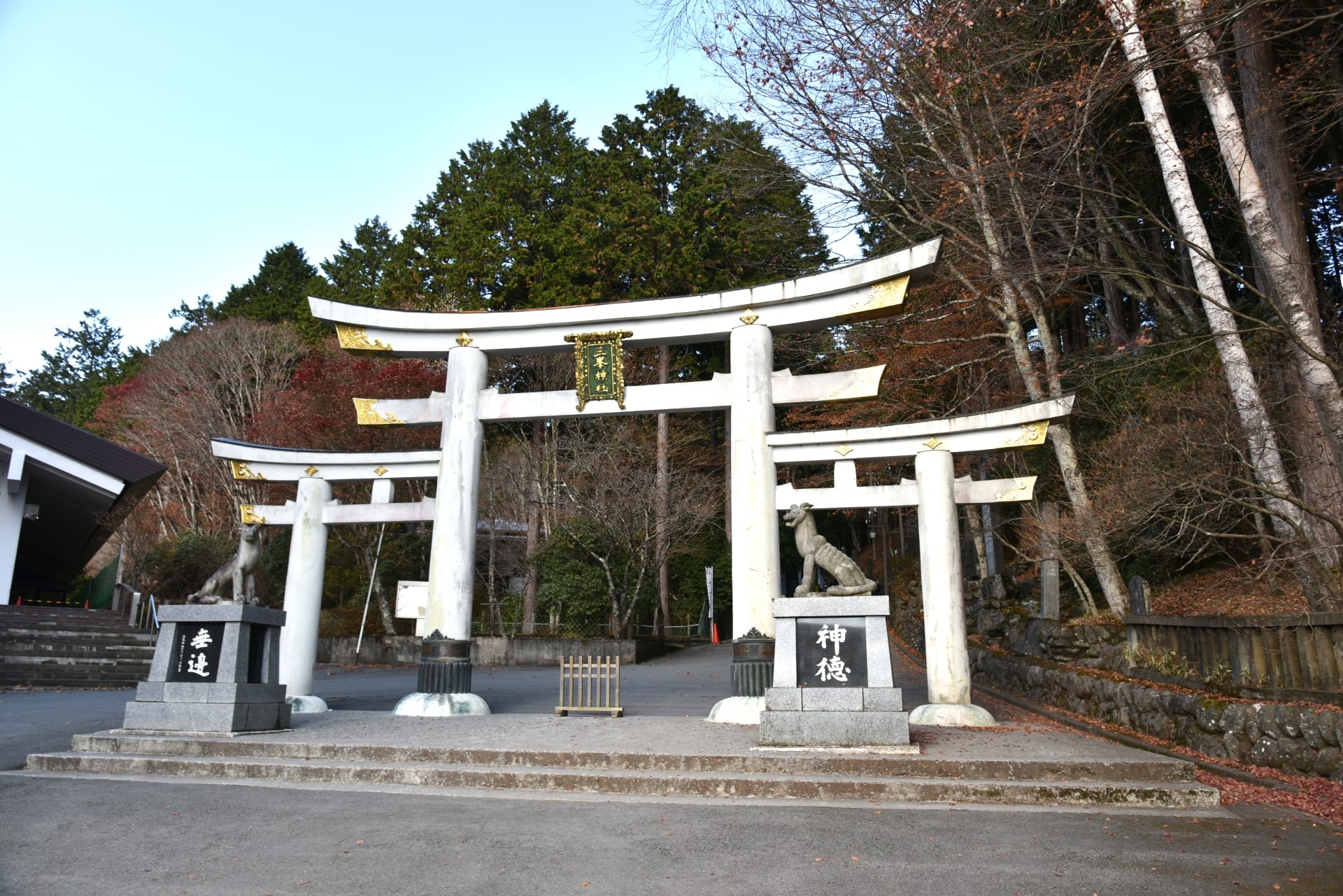
In the case that you would like to avoid large crowds in Tokyo, then one thing that we would recommend is for you to visit some of the lesser-known tourist locations. There are plenty of hidden gems near Tokyo if you just step out of the central area.
A good place we recommend is the town of Chichibu (秩父) in Saitama prefecture. Although not a place in Tokyo, it only takes less than 2 hours by train, making it a great location for a day trip. The town has various attractions such as the Mitsumine Shrine and the Hitsujiyama Park. It is a popular place to visit among Japanese tourists, but yet to be widely known by international visitors.
If you want more details about Chichibu, be sure to check out the following article.
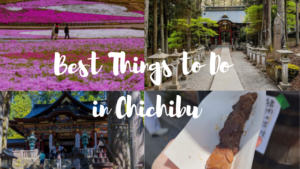
11. Check out the Seasonal Events in Tokyo
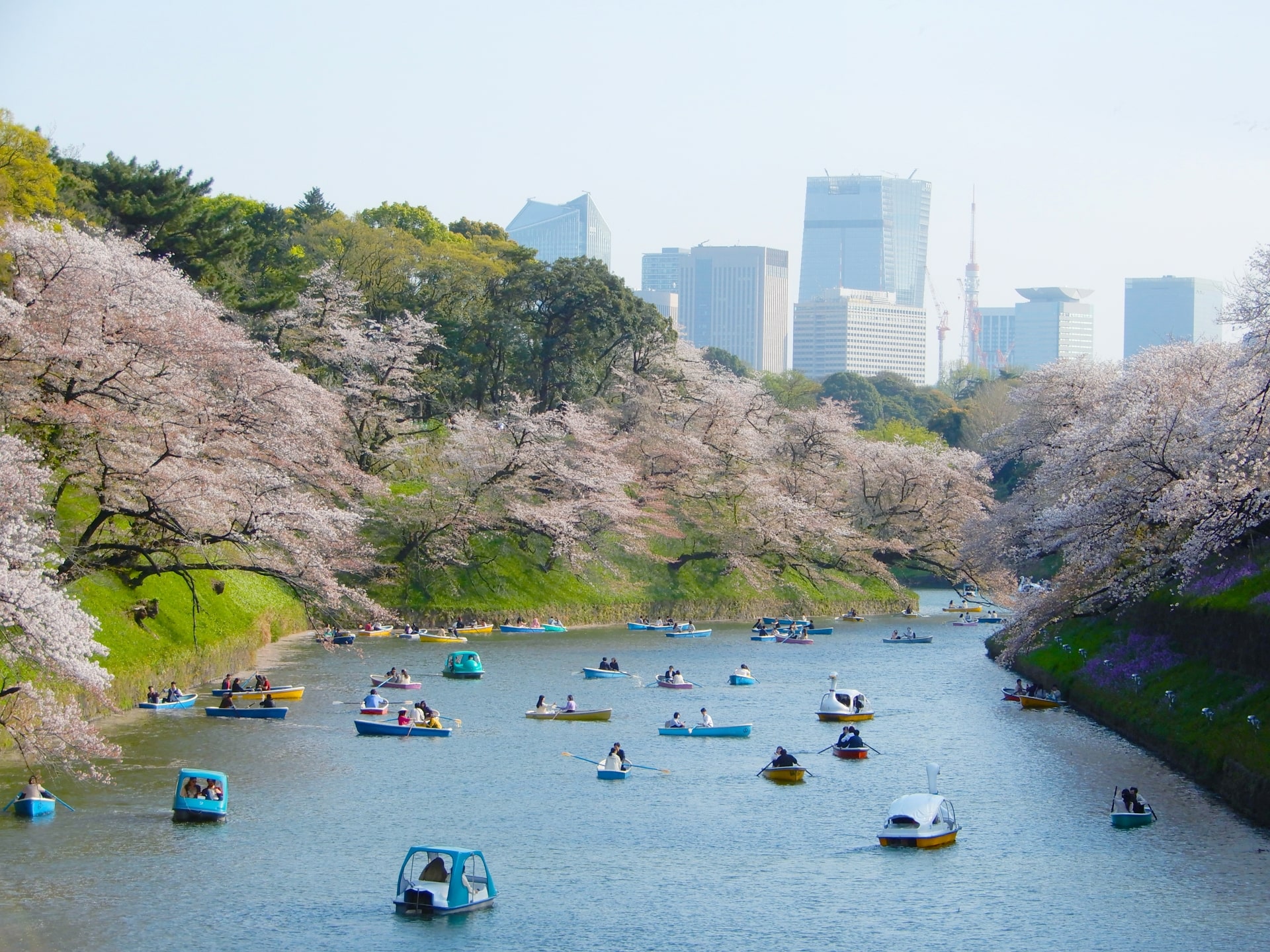
And lastly, on our list, we have seasonal events in Tokyo. Being a large city with a large population, Tokyo is full of events all year long. Depending on the season that you choose to visit Tokyo, you may have a completely different experience.
Cherry blossoms and other flower festivals are common in Spring while firework festivals are a thing of Summer. In Autumn, there are many popular locations to watch the tree leaves become red, yellow, and orange. And lastly, winter is when illuminations can be spotted in many places within the city.
No matter what season you decide to come visit, there will always be some event happening somewhere within the city. Be sure to check out the following articles for more information about things to do in Tokyo depending on the season.

+ Tourist Attractions in Tokyo 2024
If your plans for coming to Japan are for 2024, there are also some exciting facilities and projects planned to open in 2024.
One of the most anticipated projects is the Senkyaku Banrai Facility (千客万来施設) which is planned to open in February 2024. This is a large project in Toyosu that includes a large commercial area as well as a large hotel and Onsen facilities. Other exciting projects to be opened in 2024 include; Tokyo DisneySea’s new theme port “ Fantasy Springs ” and the “ Ariake Urban Sports Park (有明アーバンスポーツパーク) ” which is a large outdoor sports facility that will open in Koto city.
▶︎Check more details about Toyosu Senkyaku Banrai Facility open for 2024!
“Fantasy Springs” in Tokyo DisneySea will open in spring 2024 and will include three brand new areas as well as a new hotel. “Ariake Urban Sports Park” will partially open in March 2024 and fully open in October 2024. The place was previously used to host some of the competitions of the 2021 Tokyo Olympics.
Find everything you need for your trip to Japan at Klook! Tickets, train passes, activities, hotels and more!
▽Check these lists of best things to do in other popular areas in Japan for 2023!▽

I hope this article was helpful in providing you with ideas to plan your itinerary for your trip to Tokyo. As I previously mentioned, Tokyo is full of things to do such as events, shopping, activities, dining, etc. We really hope you have the best possible Tokyo experience!
For more information about things to do in Japan, be sure to check the articles below.
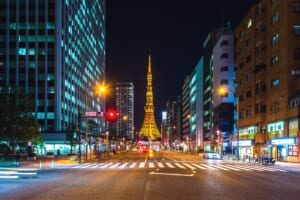
▽ Related Articles ▽

▼ Editor’s Picks ▼

Born and raised in Costa Rica, I started living in Tokyo from college. I love traveling within Japan & around the world. Since I wasn’t born in Japan, I know the cultural impact that you can get when visiting Japan for the first time and what you might be worried about before your trip. And I’ve lived long enough to somewhat understand the nuances of the Japanese culture that make this country such an attractive place to visit. Hopefully I can provide to you both the information you’re looking for and the information you didn’t know you needed to know.
- Things to Do
36 Hours in Tokyo
By Motoko Rich Updated April 6, 2023
- Share full article

For two and a half years, pandemic border controls kept international travelers out of Tokyo, leaving its neon shopping precincts and most popular temples and shrines to the locals. Now, with foreign tourists welcomed back since October, those willing to explore beyond highly trafficked neighborhoods like Harajuku, Shibuya and Shinjuku and wander down side streets in places like Setagaya or Koto will be richly rewarded with offbeat boutiques, cafes or surprising oases of natural beauty. Think of Tokyo as a warren of concealed gems, where you can drink at an artisanal bar tucked up in a small office or apartment building or taste exquisite sushi in a basement at the end of a dark street.
Recommendations
- Todoroki Ravine Park , Tokyo’s only natural valley, is a place to clear your head and experience beautiful bamboo groves up close without leaving the city.
- Gotokuji Temple is a peaceful Buddhist temple surrounded by thousands of maneki-neko, the waving cat figures that are one of Japan’s most popular symbols of good luck.
- Kappa Bashi offers a long street of kitchenware shops. Save room in your suitcase for ceramic rice bowls, sake cups, chopsticks and knives.
- The Oshio Tempura and Wine Bar serves unorthodox tempura, with wine pairings, in an old train viaduct.
- Unafuji is a Tokyo outpost of a Nagoya restaurant that specializes in charcoal-grilled eel.
- No. is a mellow bar with a Japanese-Nordic vibe serving specialized cocktails on the third floor of an apartment building.
- Lakan-ka serves fresh and light small dishes and teas infused with monk fruit.
- Toraya-An Stand is a cafe serving sweet bean paste buns and light salads in the trendy Aoyama neighborhood.
- Sushiya-Ono is the place for a blowout omakase sushi meal with exquisitely cut fresh fish served by the chef at a seven-seat counter.
- Ramen Kamuro serves ramen noodles in chicken-based broth in a casual diner setting.
- Bar Martha is a place to listen to vintage vinyl while you drink Japanese whiskey or cocktails. Warning: You could get shushed for talking.
- Iki Roastery & Eatery serves quiche, pastries and espresso drinks in an industrial space on the banks of the Sumida River.
- Dover Street Market is where to shop Japan’s top designer clothing brands, including A Bathing Ape and Commes Des Garcons.
- Ginza Akebono sells delicate Japanese traditional confectionery sweets like the signature strawberry and azuki bean paste wrapped in mochi.
- Tideway sells Japanese-made leather bags and wallets.
- Mizuno Dye Factory offers a mix of indigo tie-dyed clothing and accessories.
- Sou Sou is the Tokyo branch of a Kyoto-based textile company that brings a classical kimono sensibility to contemporary styles.
- Watari-um is a small museum and gallery exhibiting modern and contemporary artists.
- Taro Okamoto Memorial Museum celebrates the art of the late Japanese abstract painter and sculptor in the studio where he worked in the Aoyama neighborhood.
- Kiyosu Bashi is a Western-style suspension bridge that spans the Sumida River in eastern Tokyo.
- Kiyosumi Gardens is a natural oasis in an old industrial neighborhood where you can see turtles and ducks and carp among trees and blossoms.
- Aoyama Grand Hotel , on a busy intersection in Kita-Aoyama, an area near Tokyo’s high-end Omotesando district, has elegant rooms furnished in midcentury-modern style. Doubles start from about 47,200 yen a night, or about $360.
- Trunk Hotel , a boutique hotel in Jingumae, is as popular with locals for its bar and restaurant as it is with out-of-town travelers looking for minimalist rooms in a trendy neighborhood. Double rooms start from about 44,300 yen a night.
- All Day Place Hotel is on a quiet corner near a main thoroughfare in bustling Shibuya, with a pizza joint and the About Life Coffee Brewers on the ground floor; smooth lattes and outdoor seating make for a good place to rest before plunging back into the city. Doubles start from about 21,400 yen.
- For short-term rentals , search in the Aoyama, Shibuya, Shinjuku and Yoyogi areas, which are centrally located and near good transport connections.
- Tokyo is best navigated on its world-class subway , train and bus systems. Cabs , while plentiful, are expensive. Ride-hailing apps are not as commonly used as elsewhere, but JapanTaxi and Uber are available. Google Maps is the best navigation app to use here.

Have a weekend to explore a destination? We’ve got the perfect travel itinerary.
Colorado Springs: Colorado’s second-largest city, which brims with outdoor activities , is enticing visitors with a new museum and revamped hotels.
Minneapolis: Springtime is best for exploring this Midwestern city’s lakeside trails, robust arts scene and top-notch restaurants .
Maui: The beauty and hospitality of this Hawaiian island, still recovering from last year’s wildfires, remain as vibrant as ever .
Toronto: Savor the diversity of this lakefront city through its hidden bars, small-but-fascinating museums and vibrant restaurants .
Cape Town: Take a food and storytelling tour, cruise one of the world’s most beautiful coastal drives and see contemporary African art in this city with stunning views in every direction .
Advertisement

The Perfect Tokyo 5 Day Itinerary And City Guide (2023)
By: Author Lotte
Posted on Last updated: January 1, 2023
Categories Japan

Tokyo is the most populated metropolitan area in the world, almost 37 million people live in the greater Tokyo area.
When arriving in Tokyo for the first time, it's easy to feel overwhelmed: confusing Kanji signs everywhere, delicious smells drifting through the doors of tiny restaurants and happy jingles playing in the metro.
This Tokyo 5 day itinerary and complete guide for first-time visitors will show you the best things to do in Tokyo, while also leaving enough time to wander around Tokyo's hidden streets and alleys.
Tokyo 5 day itinerary

Disclosure: Some links in this post are affiliate links. If you make a purchase through one of these links, we may earn a small commission (at no extra cost to you!). We're very grateful when you use our links to make a purchase:-).
Tokyo in 5 days
I've visited Tokyo three times up until now, and always discover new things to see in this vibrant city.
You will find ancient temples, modern buildings, thousands of excellent places to eat, green parks, interesting museums, and a myriad of other things to do.
Planning a trip to Tokyo can feel daunting, which is why I wrote this post. I hope this Tokyo trip itinerary and guide will help you make the most of your Tokyo trip!

Things to know before traveling to Tokyo

The official currency in Japan is the Japanese Yen (¥). Here you can find the current exchange rates, at the time of writing €1 is approximately 120¥ and $1 is around 110¥.
From Narita Airport there are various ways to get to the city center of Tokyo, the cheapest one is by bus. Keisei bus charges ¥1000 per adult for a single trip into the city. The journey takes around an hour, depending on traffic. You can find all the information (timetable and where to find the bus stops at Narita airport and in Tokyo city center) on the Keisei website . Alternatively, you can take the Narita Express from Narita airport to Tokyo Station. This is more expensive (¥3000 per ticket), however, it's included in the Japan Rail Pass . If you have one of these ( or want to buy a JR Rail Pass ) this would definitely be the easiest way to Tokyo's city center!
Yes, of course! This is another easy and comfortable way to travel from Narita Airport to your hotel in the city of Tokyo. This shared shuttle transfer takes 1 hour and 20-minute service is available for airport arrivals and departures. Book your shuttle here.
The Tokyo metro system is one of the largest in the world, however, it's not difficult to use. First of all, you can find the metro map here . Stops are numbered and once you figure out the system it's very easy to determine where you are and when you need to get out. Stops are announced in Japanese and English, so don't worry: you won't have any issues navigating the Tokyo subway!

Plan your Japan trip like a pro with these tools: ✅ Get a Japan Railpass to save lots of time and money. ✅ Rent a car for your Japan road trip via Rentalcars.com . ✅ Stay connected with Airalo Japan offer . ✅ Plan your journey with the Japan Lonely Planet . ✅ Find the best hotel deals on Booking.com . ✅ Join the best tours in Japan via Klook . ✅ Travel safely and get reliable travel insurance from Safety Wing .
How to spend 5 days in Tokyo: map with Tokyo highlights
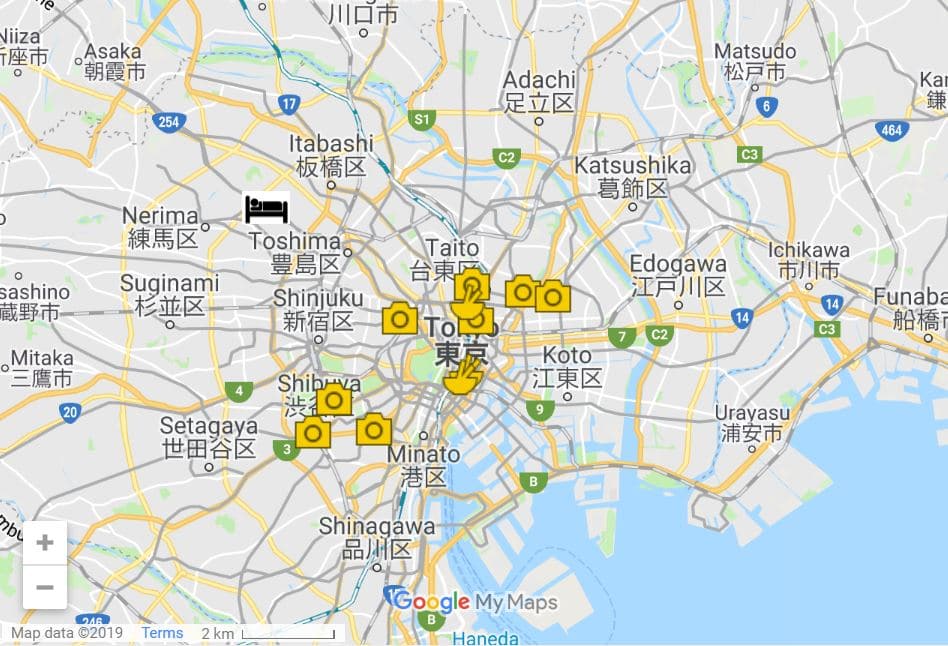
Click here for the interactive map.
Tokyo itinerary 5 days
- Tokyo day 1: Tokyo Skytree ( book tickets online ), Asakusa, Senso-Ji temple, Ueno Park, and Tokyo National Museum
- Tokyo day 2: TeamLab Digital Art museum ( book tickets online ), the Imperial Palace, and Akihabara
- Tokyo day 3: Shinjuku, Harajuku, Shibuya, and the Tokyo Tower ( book tickets online )
- Tokyo day 4: day trip to Nikko
- Tokyo day 5: day trip to Kamakura
Tokyo itinerary day 1
The tokyo sky tree.

One of the best places to visit in Tokyo is the Tokyo Sky Tree. This impressive tower stands a whopping 634 meters tall and is the 3rd tallest structure in the world (only the Burj Khalifa in Dubai and the Warisan Merdeka Tower in Malaysia are higher).
There are two observation decks: the Tokyo Skytree Tembo Deck at 350 meters and the Tokyo Skytree Tembo Galleria at 450 meters.
In the early morning on a sunny day, it's possible to see Mount Fuji from the Tokyo Sky Tree. You have to be lucky though, as the distance between the two is approximately 100 kilometers and conditions have to be perfect.
Click here to book an epic Mount Fuji day trip and see this iconic mountain up close .
Easier to spot is the Yokohama Landmark Tower which is ‘only' 33 kilometers away. From both observation decks, the views of Tokyo are truly impressive.
The Birdseye view clearly shows how vast and extensive the city is. You can spot many landmarks from the Tower and will get a feeling of which area is where.
I recommend going up the Tokyo Sky Tree on your first day in Tokyo (if weather permits) as it will help you orientate yourself better in the days to come.
Insider tip: book your ticket online to save money and skip the queue!
Visit charming Asakusa

Asakusa is a beautiful and historic neighborhood in Tokyo.
It's a very charming area where you will feel the atmosphere of old Tokyo. During the Edo Period, Asakusa was the place to go for entertainment, such as kabuki performances.
Much of Asakusa was destroyed during World War II, luckily its most popular attraction, the impressive Sensō-Ji temple, has been restored to its former glory after being damaged by air raids.
Take your time to wander around this area and explore the quaint little streets, shops, and shrines. Or, rent a kimono and hop into a rickshaw for the ultimate Asakusa experience .
Sensō-Ji temple
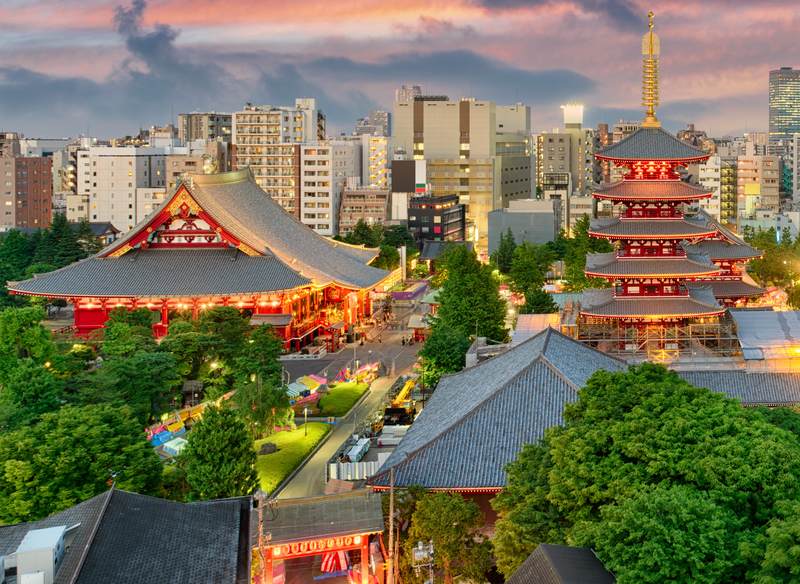
Over 30 million people visit Sensō-Ji every year and with good reason, it's a magnificent temple complex! Also called Asakusa Kannon Temple, the original building dates from the year 645.
Throughout the years, it has been damaged by earthquakes, fires, and air raids during the war but always has been restored.
Enter the complex through the beautiful Kaminarimon (meaning Thunder Gate). Stroll through Nakamise-dōri, a 250-meter-long street within the complex, housing dozens of little shops and you will find yourself at the actual temple.
Standing in the main hall you can't help but feel impressed. Allow plenty of time to wander around the grounds, and admire Hozomon (the inner gate), the Five Storey Pagoda (55 meters tall) next to the temple, and the Asakusa-jinja shrine.
Visiting Sensō-Ji is free, and the temple is easy to reach as it's very close to Asakusa Station.
Ueno Park and Tokyo National Museum

Ueno Park is an expansive green area and a great place to get away from busy Tokyo. Within Ueno Park, you can often enjoy live performances, and there are several shrines.
There are also multiple museums located in and around the park, one of these is the Tokyo National Museum.
A visit to the Tokyo National Museum is a must-do activity on any Tokyo travel plan. This extensive museum owns a tremendous amount of artifacts, which are rotated often (as it's nowhere near possible to display everything at once).
You will learn about Japanese art history and can admire samurai swords, colorful kimonos, ancient pottery, and much more.
There are also many Buddhist sculptures and scrolls as well as artifacts from Japan's historical minorities (such as the Ainu from Hokkaido and the Ryūkyū Empire on Okinawa).
If you are an art lover, it's easy to spend an entire day in this terrific museum. However, you see quite a lot within a couple of hours.
Tokyo travel itinerary: day 2
Teamlab digital art museum.
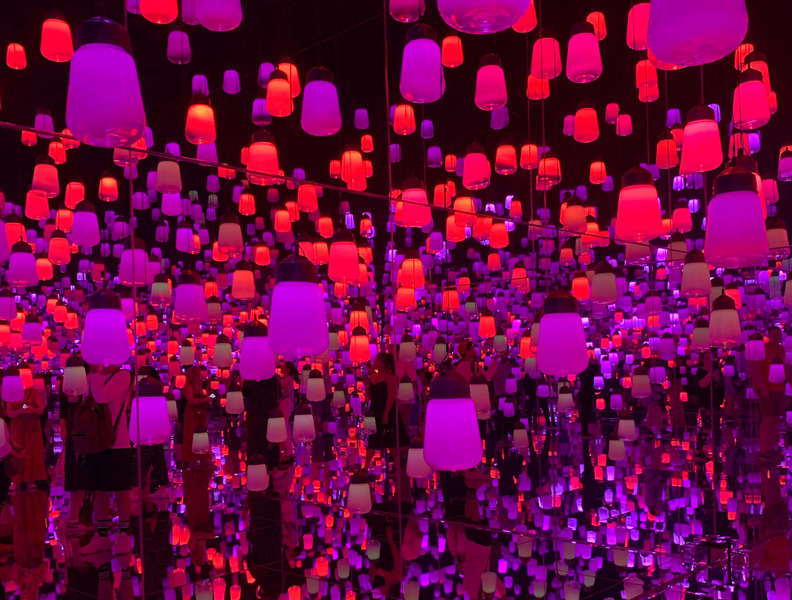
Sydney from A World in Reach : Tokyo’s teamLab Digital Art Museum is an experience that must be added to your Tokyo bucket list .
This interactive museum, located in futuristic Odaiba, uses computers and projectors to create a world of color and light without borders.
When you arrive at teamLab, you can move freely through the many rooms and exhibits. There’s no set pathway in the museum, so you can move around as you please.
The exhibits are an Instagrammer’s paradise, so make sure to bring your camera! Some of the most popular exhibits are Crystal World and the Forest of Resonating Lamps.
There may be a line to enter some of the more popular exhibits, but the lines move rather quickly and the exhibits are well worth the wait.
On weekdays, teamLab is open from 10 am to 7 pm. On Saturdays and Sundays, it stays open until 9 pm. A ticket costs ¥3200 (for an adult) or ¥1000 (for kids).
I highly recommend booking your tickets online before your visit, as they often sell out!
During your visit, make sure to wear flat, closed-toed shoes in order to be able to fully experience all of the rooms at the museum.
To get to the teamLab Digital Arts museum, take the Yurikamome line to Aomi Station in Odaiba. The museum is located on the second floor of Palette Town.
Once you’re there, go through the Mega Web building toward the Ferris Wheel and you'll arrive at the museum.
The Imperial Palace

While the actual Palace isn't open to the public, you can stroll around the grounds and admire the stone bridges, watchtowers, and gardens.
However, the best way to explore the Imperial Palace is by joining a tour. Tours take 75 minutes and reservations must be made at least four days in advance.
Though it's recommended to book as early as possible, bookings can be made up until a month before your visit. You can make a reservation on this website .
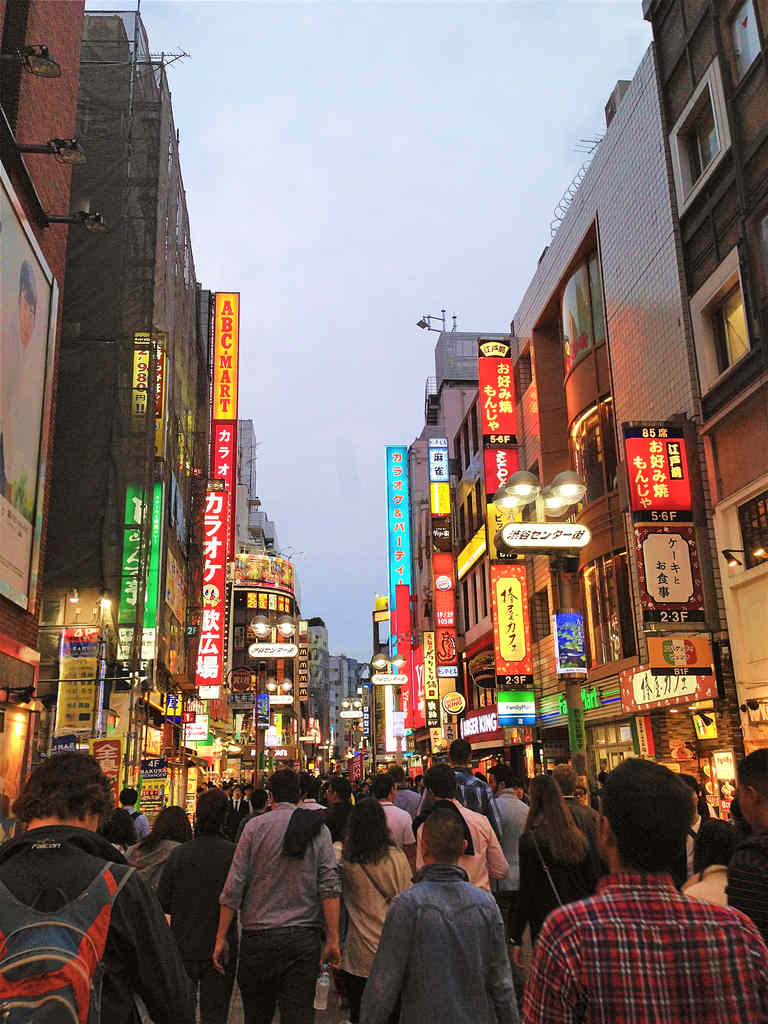
Stella from Around The World In 24 Hours : Tokyo is huge but exploring the city becomes much more manageable when you concentrate on one of its many neighborhoods at a time.
One of the most interesting neighborhoods in Tokyo is Akihabara.
Akihabara, or Akiba for short, is sometimes advertised as Akihabara Electric Town. That's because it’s famous for its enormous number of electronics stores.
You can find any type of electronics in Akihabara, from microwaves and computers to video games and anime.
Akihabara is also the favorite hangout for otaku , the Japanese word for a superfan of anime, manga, and video games.
In Akihabara, there are several maid cafes, where waitresses dressed as maids or anime characters cater to their otaku guests. Some of the most famous maid cafes are Cure Maid Cafe, which was the first one, and @home.
Manga fans will head straight for Comic Toranoana, while video-game fans will prefer Media Land, which carries rare games that aren’t available outside of Japan.
Many Japanese games aren’t playable on foreign systems, but the main exceptions are games for a Game Boy or Game Boy Advance.
Fortunately, it’s easy to find these rare Game Boy games in the video game stores of Akihabara, which makes them the greatest possible Tokyo souvenir for any Japanese pop culture fan.
Tokyo tour itinerary: day 3

Alyse from The Invisible Tourist : Japan is a wonderful land of contrasts, yet they seem to blend together so beautifully. One of Tokyo's neighborhoods that is a great example of this is the popular Shinjuku.
Not only is it home to the world’s largest (and busiest) train station and a dinosaur, but it also has an array of little alleyways to explore and one of the city’s most tranquil gardens to escape the crowds.
The station itself is an amazing drawcard here, with over 200 exits you’ll want to make sure you take note of the one you need!
A short walk from the station will take you to Godzilla Street, its vibrant flashing lights and signage are a great photo spot.
And as the name suggests, here you’ll find the giant Godzilla perched atop Hotel Gracery baring his teeth.
East of the station is a popular set of narrow laneways lined with eateries, karaoke bars, and small pubs, dubbed the Golden Gai.
If you’ve always wanted to see robots dancing amongst laser beams, the famous Robot Restaurant here is not to be missed!
Finally, once you’ve had your fix of busy Shinjuku, take the time to relax on the lawns in gorgeous Shinjuku Gyoen.
Despite a few skyscrapers visible over the treetops on the park’s edges, it really feels as though you’re miles away from the bustling city outside.
The entry into Shinjuku Gyoen is JPY 500. Bring a picnic blanket and snacks to enjoy under one of the park’s 20.000 trees and be sure to add this lovely park to your Shinjuku itinerary!

Mar from Once in a Lifetime Journey : Harajuku is the shopping center of Tokyo . Starting in the 1980s, Harajuku became the place to be if you were into fashion.
Teens gathered around Harajuku Bridge as it became a sort of urban catwalk where the various “style tribes” were founded.
Today, possibly the best thing to do in Harajuku is to just people-watch. You can spot all the modern fashion styles from Lolita to Decora, cyber-Goth to cutesy Kawaii-Kei.
All things weird and wonderful that fall under the J-pop umbrella can be found here.
While you can hit the major stores like Forever 21, it’s best to try and spot the independent boutiques selling youth-oriented fashion geared toward the youth subcultures.
Start your meandering at Takeshita Dori, Harajuku’s main shopping street which is located right out of Harajuku Station (原宿駅) on JR’s Yamanote line, and Tokyo Metro’s Chiyoda and Fukutoshin lines.
You’ll be able to spot alternative fashions here from J-rock and heavy metal to fairy princesses. You can also spot girls in the Lolita-inspired layered frilly “jumper skirts” here. Pop into Laforet to find cosplay clothes and J-rock “meet and greets”.
While Harajuku is always pumping with people, weekends are carnage. So while it’s the most chaotic time to visit, it’s probably the best time for spotting all sorts of Kawaii outfits.
Bring your camera and an extra battery as there are plenty of photo opportunities !
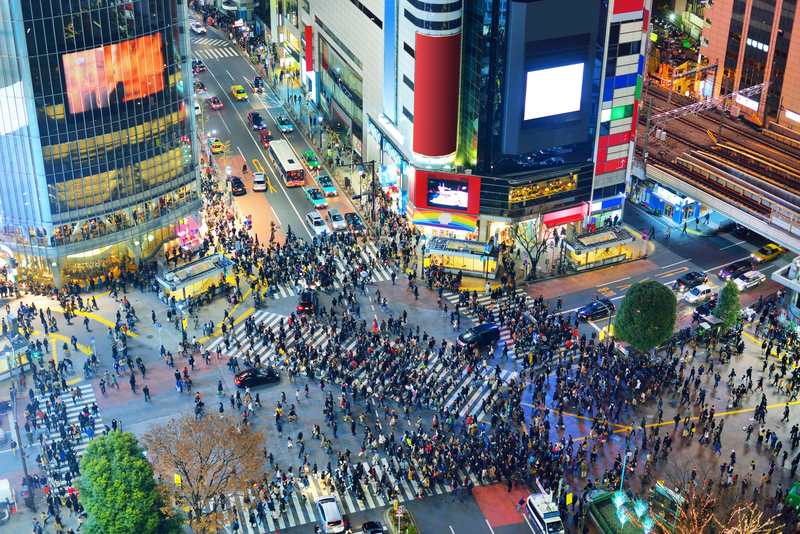
Alexander from Destinavo : Shibuya is one of the most popular areas in Tokyo and it's filled with entertainment and shopping.
It's a vibrant neighborhood that is characterized by the famous Shibuya Crossing where hundreds of thousands of people walk every single day.
This is where you will find all the trendy stores in Tokyo, as well as second-hand clothing. The area is known as a fashion center and it's especially popular among younger people.
At night, you can also explore the lively nightlife.
One of the best things to do in Shibuya is to just stroll around along the streets and explore the big malls and cool designer stores. There are lots of interesting alleys as well where you can find hidden gems away from the hustle and bustle.
Furthermore, you can find the high-end shopping boulevard known as Omotesandō. Also, don't miss to enter the giant Don Quijote store that is located about 5-10 minutes walk from Shibuya Station.
If you are looking for a nice spot for dinner, I recommend the Uobei Genki Sushi, which is a well-known sushi chain in Tokyo.
The easiest way to get here is to take the metro or JR line to Shibuya Station, which is accessible from all major stations in Tokyo.
The area is lively from morning to nighttime and a visit to Tokyo is certainly not complete without exploring Shibuya.
Tokyo Tower
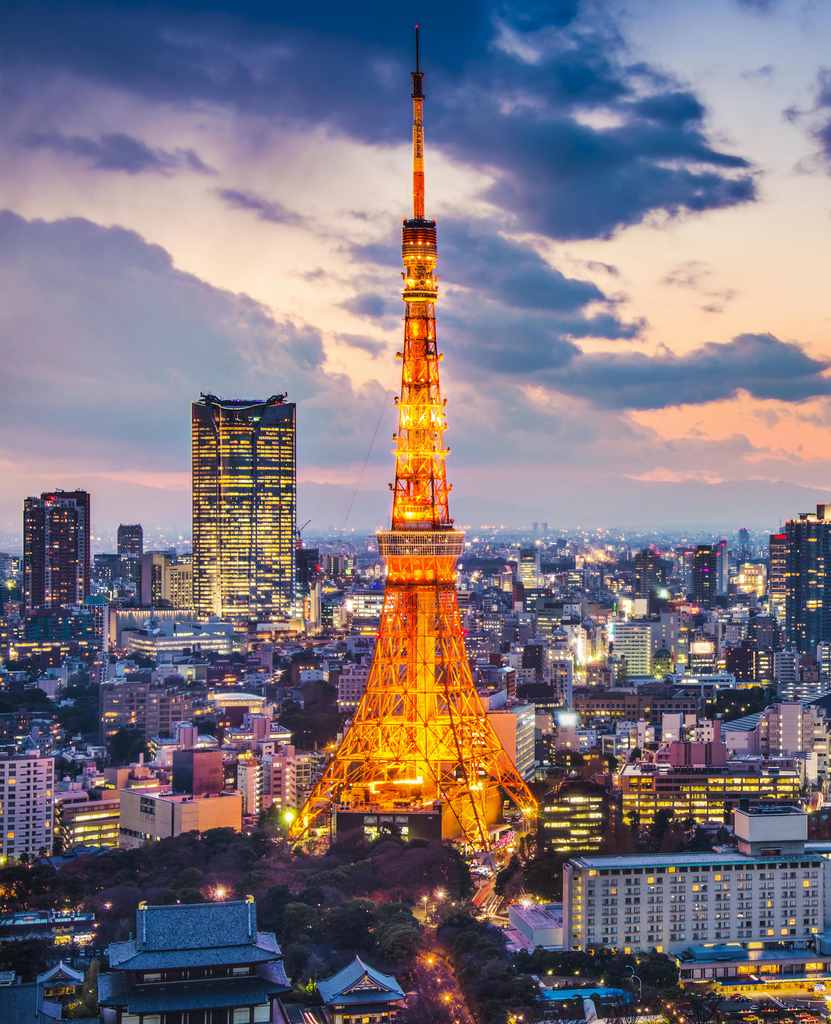
Sara from Picturesque World : the Tokyo Tower is one of the most popular attractions in Tokyo.
Located in the ShibaKoen district of Minato it is the second tallest structure in Japan, standing 333 meters tall. Only the Tokyo Sky Tree is higher!
The Tokyo Tower is easily accessed by public transport, from Akabanebashi Station it's about a 5-minute walk to the tower.
The Tokyo Tower has two observation decks for visitors, one at 150 meters and another at 250 meters. From the observation deck, you can admire the view over Tokyo once again, and it never ceases to amaze you.
Going up to the 150-meter observation deck costs ¥1200 (per adult). The top deck tour is a bit more expensive, one ticket costs ¥3000 (per adult) and gives you access to the main deck as well.
At the base of Tokyo Tower, there is a 4-story building called Foot Town with restaurants, souvenir shops, museums, galleries, and even an amusement park.
It's highly recommended to visit the Tokyo Tower around sunset as you can slowly see the nightfall and see the city light up. The Tower itself will be lit as well, in bright red and white colors.
The Tokyo Tower is open every day from 9 am until 11 pm. You can book a ticket online here .
Tokyo itinerary day 4: day trip to Nikko
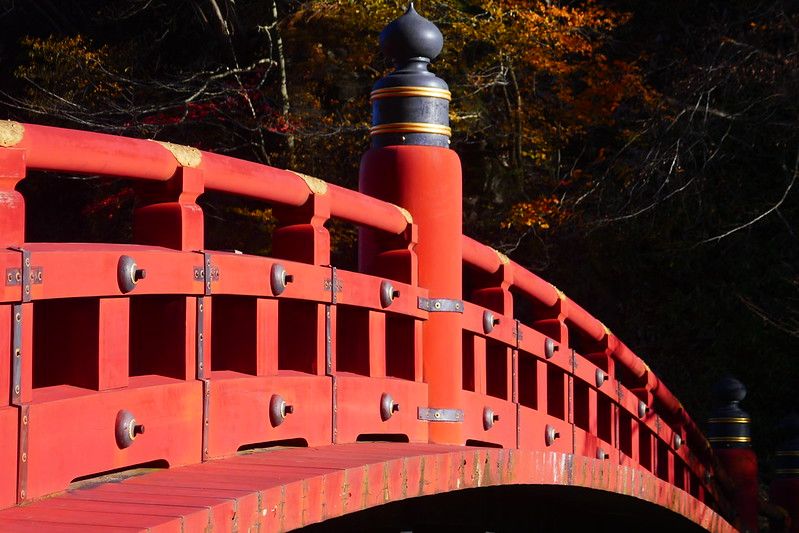
Wendy from The Nomadic Vegan: Nikko is a beautiful mountain town that lies a couple of hours north of Tokyo.
To fully explore the whole area, including Nikko National Park, the famous Kegon waterfall, and the nearby onsens, you would need at least a couple of days.
However, the UNESCO World Heritage Sites in the center of town are all within easy walking distance of each other and make a very doable and worthwhile day trip.
Of the several temples and shrines here, the one you absolutely must see is the Tosho-gu Shrine.
It's the final resting place of Tokugawa Ieyasu, the powerful shogun who unified all of Japan, and is one of the most lavishly decorated buildings in the whole country.
Another famous spot in Nikko is the Shinkyo Bridge, which is considered to be one of the three finest bridges in Japan.
To get away from the tourist crowds, take the peaceful five-kilometer trail to the Takino-o shrine. It's an ancient pilgrimage route and is kind of a miniature version of the Kumano Kodo pilgrimage near Kyoto .
The lovely Yasai Café Meguri is a great place to stop for lunch and is one of the best restaurants for vegan food in all of Japan.
How to get to Nikko from Tokyo
Nikko can be reached from Tokyo by train in about two hours, with trains departing at least once every hour. Here you can find more information about how to travel from Tokyo to Nikko.
Alternatively, book this private Nikko sightseeing tour with a knowledgeable local guide for a great Tokyo day trip without any hassle.
Tokyo itinerary day 5: day trip to Kamakura

Christine from Christine Abroad : Kamakura is located one hour south of Tokyo and is one of the most popular tourist attractions in Japan.
In this coastal town, you will find dozens of Buddhist temples and Shinto shrines. One of the most famous temples in the city is the Kotoku-in Temple where you can see the 13m-high bronze statue of Buddha.
It’s famous for surviving several storms and tsunamis throughout history and also for being of the biggest Buddha statues in Japan.
All around the town you can find several beautiful temples and natural places to visit, as well as nice cafes and restaurants where you can enjoy some delicious Japanese food and drinks.
Kamakura also features a lovely beach that is very popular among the locals during summertime.
Kamakura was actually the political center of Japan during the 12th century when Minamoto Yoritomo chose it as his new base of government. It ruled the country for more than one century and still today, visitors can experience this ancient legacy.
Some of the most popular temples and shrines, in addition to the Great Buddha, are Hokokuji Temple, Hasedera Temple, Engakuji Temple, Kenchoji Temple, and the beautiful Hachimangu Shrine.
How to get to Kamakura from Tokyo
Traveling from Tokyo to Kamakura is very straightforward as the JR Yokosuka Line connects Tokyo Station directly with Kamakura Station.
The trip takes just under an hour and, if you have a JR Rail Pass , won't cost you anything! If you don't have a rail pass, a one-way ticket costs ¥940.
Another option is booking this day tour from Tokyo which includes a pickup from your hotel in Tokyo (see my recommendation below).
Where to stay in Tokyo
I highly recommend the Candeo Hotel Tokyo Shimbashi. Their welcoming staff will go out of their way to make sure you have a great time at the hotel and in Tokyo.
Candeo Hotels Tokyo Shimbashi is a modern hotel with beautifully decorated rooms and an unbeatable location.

Rooms are between 15-22m 2 and offer lots of amenities, including air conditioning, a private bathroom with a Japanese toilet, a flat-screen TV, high-speed WiFi, a refrigerator, a kettle, toiletries, and more.
The Sky Spa on the top floor of the hotel is definitely one of the highlights of this hotel, it's the perfect way to relax after a day of sightseeing in Tokyo.

There are separate baths for men and women. In each of the spas, you can find both indoor and outdoor baths, a sauna, and shower facilities.
Breakfast at Candeo is excellent, with over 60 different foods to choose from. There are lots of typical Japanese dishes, salads, fresh fruits, several types of bread rolls, coffee, juice, and more.

Tokyo is a very big city, therefore choosing the right location is key when planning your Tokyo trip. The Candeo Hotel Shimbashi is all about location, it's only a 5-minute stroll to Shimbashi station.
From Narita Airport you can take the Keisei Narita Sky Access to Shimbashi station which takes about an hour.
When landing at Haneda Airport you can take the Keikyu Line to Shimbashi Station which takes approximately 20 minutes.
Click here to book the Candeo Hotels Tokyo Shimbashi
Where to eat in Tokyo
Japanese food is the best! Whether it's Tokyo street food , freshly made sushi, or a bowl of steaming soup, there are so many options in Tokyo and they are all equally delicious.
Nevertheless, here are some of my Tokyo favorites, enjoy!
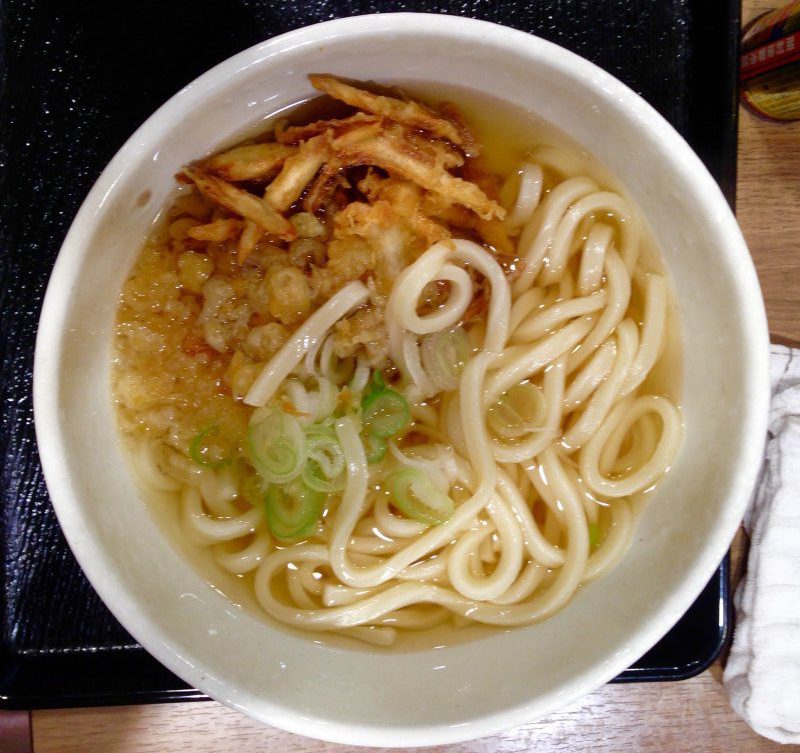
Where to eat this: 10 meters from Keisei bus stop nr. 3 on Sotobori Dori Street, across Tokyo station (Yeasu side). Price: ¥410
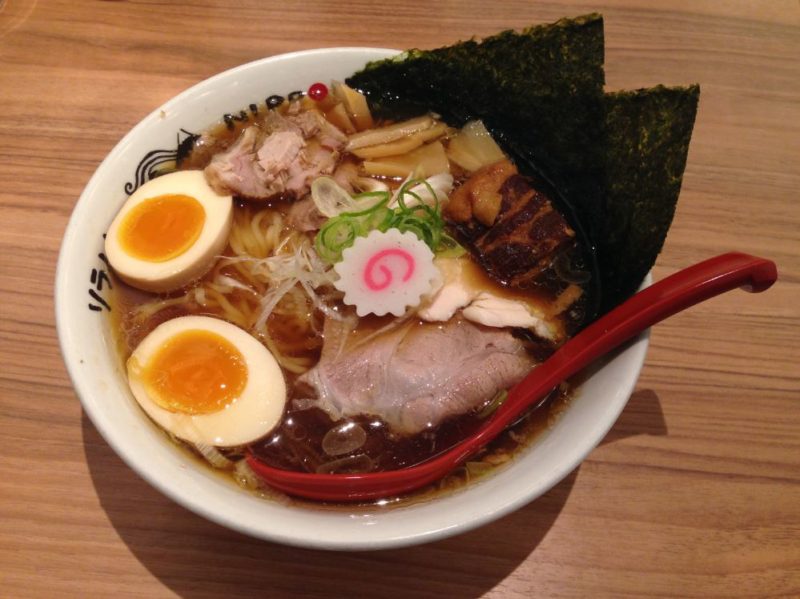
Where to eat this: in Tokyo's famous ramen street , located in the basement of Tokyo station. There are 8 ramen shops to choose from, good luck picking one, all the dishes look amazing…
But basically, it doesn't really matter where you decide to have a bowl of ramen in Tokyo , there are so many delicious options!
Price: ¥1000
Prawn tempura with rice

Where to eat this: 3 Chome-41-5 Yushima, Bunkyō-ku, Tōkyō-to 113-0034, +81 3-3837-3373 Price: ¥430
Tokyo on a budget: how to save money in Tokyo
Tokyo can be an expensive city to visit. However, with these tips, you will be able to visit Tokyo without breaking the bank.
Buy a Tokyo Subway 72-hour ticket (¥1500 per adult)
The advice I am going to give you now will save you lots of money.
I didn’t know this, but there are 24, 48, and 72-hour subway passes that entitle you to unlimited rides on Tokyo’s subway. This pass costs only ¥1500 per person!
We didn't buy this and paid a lot more for metro rides. On our first day in Tokyo, we paid separately for each fare.
This is the most expensive option, don't do this! It costs lots of money and you need to buy a ticket each time you travel on the subway which takes a lot of time as well.
On the other days we spent in Tokyo, we bought a subway day ticket which also gives you unlimited rides but only for a 24h period.
However, if you buy the 72-hour pass you don't have to spend ¥6200 (€50) on subway rides as we did, but only ¥1500 (€12) per person, saving you ¥3200 (€26)!
You can buy this pass after arriving at Narita airport or buy one online .
Order from vending machines

There is so much delicious food to be found in Tokyo and while you definitely have to try out as many different dishes as possible, buying your food from a vending machine instead of eating in a fancy restaurant will save you lots of money. And the quality will still be great!
Just follow the locals to sniff out the best places to eat on a budget, who knows where you will end up and what you will end up eating;-).
You can find some suggestions about where to eat in Tokyo on a budget above.
Buy food at a supermarket
Head to one of the bigger supermarkets (usually found in the basement of Tokyo's shopping malls) just before closing time. You'll find lots of discounted dishes for very low prices!
If you are on an extremely tight budget, 7/11 has acceptable food as well. However, I'd only choose this option if you cannot find a cheap local place to eat.
One of my favorite things about travel is to try out the local cuisine, so better to spend a bit more on food and save on accommodation than vice versa (in my opinion;-).
Where to go in Tokyo: in conclusion
That’s about it, everything you need to know about a 5-day trip to Tokyo. Again, you could spend much more time in this wonderful city.
However, I hope this itinerary will help you to have a wonderful time in Tokyo. So wonderful that you'll want to return for more…
Do you want to read more about traveling in Japan ? Check out my other posts as well:
- Japan itinerary
- Japan on a budget
- Japan off the beaten track
- Tips for driving on Hokkaido
- Kyoto itinerary
- Hiroshima itinerary
- Miyajima itinerary
- Osaka itinerary
- Japanese Alps itinerary
- Kanazawa to Shirakawago and Takayama to Shirakawago
- 3 days in Kamikochi
- Hiking to Koyasan
- Japan packing list
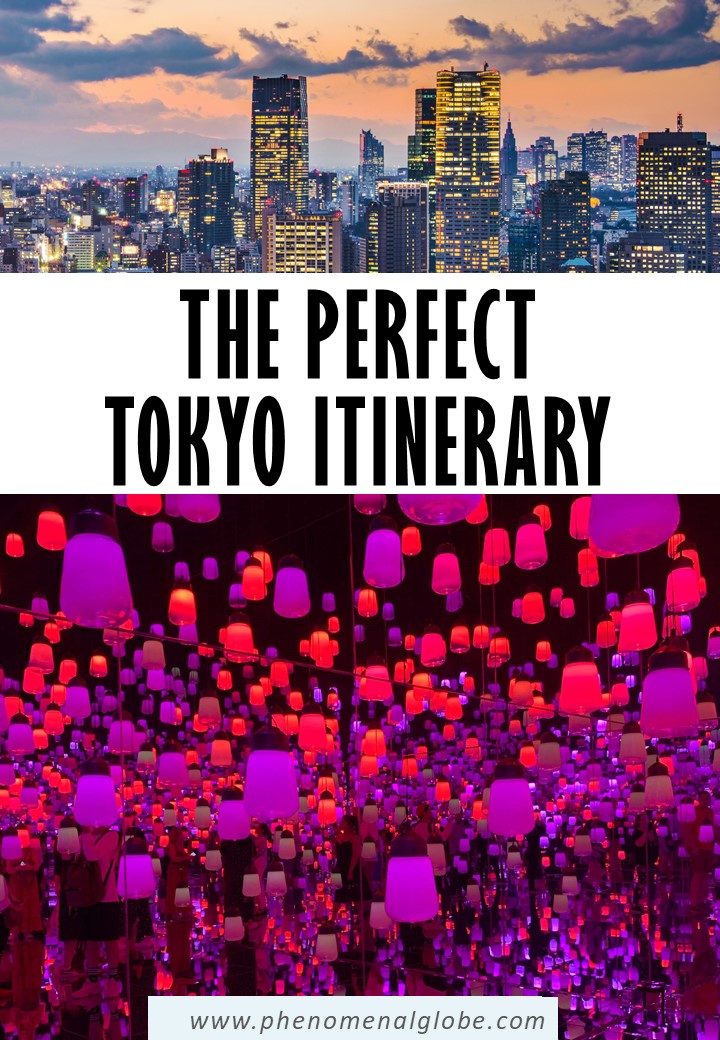
This post was updated in January 2023.
David Melican
Tuesday 12th of September 2017
Hi Lotte, you have a great blog. My wife and l (both 70+) are going on a organised tour in late March 2018. The tour finishes in Osaka and we'd like to go back to Tokyo for 3 days. What is the best way to get from Osaka to Tokyo i.e. 7 day rail pass or fly. Can we use the 7 day pass on Tokyo metro or subway plus get out to Narite for our flight back to NZ
Hello David,
Thank you for reading my blog:-). I wish you and your wife a wonderful trip to Japan, it's a fascinating country! March is the perfect time to visit, you'll be seeing the cherry blossoms (sakura!) and the weather on Honshu will be nice too.
About your question, the JR Rail pass can be used on the Narita Express but not on the Tokyo Metro. For the Tokyo Metro you would be better of purchasing the Tokyo Subway 72-hour Ticket (http://www.tokyometro.jp/en/ticket/value/travel/#anc02).
Because the JR Rail pass is quite expensive I think flying could be cheaper, Jetstar and Peach are usually cheap. However, if you plan on making day trips from Tokyo (to Hakone, Kamakura, Nikko, etc.) it could be worthwhile purchasing a rail pass.
Long story short, it depends on what you plan to do during your 3 days in/around Tokyo! I hope this helps! Have a great trip and feel free to ask any other questions you may have:-)
Friday 31st of March 2017
Thank you for publishing this excellent post. Isn't Tokyo a fabulous city? We love it so much that we are going back this year and I am currently doing some research on things to do. Last time we didn't pay enough attention to food. Where would you suggest going for someone who doesn't like fish?
Sunday 2nd of April 2017
Hey Katharina! Yes I absolutely loved Japan and am also planning a return trip this year;-). I am also not a huge fish fan so mostly ate a lot of ramen, udon, soba, etc. You can check my Japan food post for more details! Enjoy planning and perhaps we'll see each other in Tokyo! XX
Monday 27th of March 2017
Thanks Lotte for the blog. It's very informative and helpful coming from your own personal experience. Plan to visit Tokyo in April 2017 and will check out your tips.
Hello Mary, you are most welcome! I love sharing my experiences on the blog and I am always very happy to hear people find my posts useful. Have an amazing trip to Tokyo, hope you'll catch the cherry blossoms when you are there:-).
Thursday 24th of November 2016
A great post, thank you! i'm only there for one night/two days. What would you suggest? I'm feeling a little overwhelmed! I'm living in Seoul so pretty used to Asian culture, if that makes sense?
Haha, I was really overwhelmed too, Tokyo is massive. But as you live in Seoul, I'm sure you'll adjust quickly. If you have 2 days, I would recommend to go up the Tokyo Sky Tree, the view from the top is amazing and gives you a really great impression of just how big Tokyo is. I would also go to Kagurazaka, it was my favorite neighborhood in Tokyo. And perhaps choose either Ueno Park or Asakusa. Have a great trip!
- Skip to primary navigation
- Skip to main content
- Skip to primary sidebar
Travel & Food, Itineraries & Guides, Hotel Reviews
The Perfect Tokyo Itinerary With Must-Sees & Unique Attractions (2024 Updated Travel Guide)
March 11, 2024 by Bino 10 Comments
Tokyo is now one of the most popular destinations in East Asia, especially for Asian travelers. The capital of Japan has benefited in no small part by the weaker Yen and previous moves by the government to ease visa restrictions from visitors of nearby countries. With a population of 13 million people, the metropolis offers a great juxtaposition of the exotic and ultramodern. This is a city of maid cafes, of restaurants run by ninjas and where you can hire professional cuddlers to hug you for a small fee. At the other end of the scale, some parts of the city offer a peek into a more traditional side of Japan.
If you are also heading west, check out this recommended itinerary for Osaka and Kyoto full of lesser-known attractions.
I have visited Tokyo for eight times now and I always end up discovering a lot of new things to do in the city with each visit. Like the previous itineraries I’ve made, here are some suggestions on things to do in Tokyo and I have segregated the activities for first-timers, shopaholics and people seeking for something more unique.
Tokyo Itinerary
This itinerary presents the quintessential sights of Tokyo, perfect for first timers or those who prefer to obtain an overview of this humongous city.
Table of Contents
Day 1 – Asakusa, Tokyo Sky Tree, Ueno and Shibuya
A taste of traditional tokyo in asakusa.
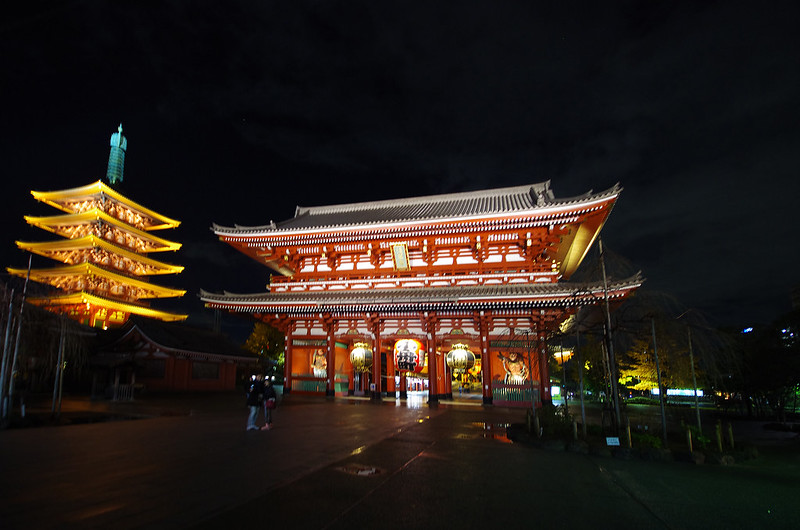
sensoji temple
Alight at Asakusa Station. Start early and beat the crowds by visiting one of Tokyo’s most atmospheric neighborhoods – Asakusa. While here, don’t miss the Sensoji Temple (they open at 6am from April to November / 6:30am from October to March) which dates back from the year 645.
To reach the temple, you go in via an iconic gate called Kaminarimon which is recognized as the symbol of the city. You also pass by a series of shops in a street called Nakamise . It’s full of interesting traditional handicrafts and food that you can easily spend hours here just browsing through the goods. You can also join a guided tour around Asakusa all while dressed up in a traditional kimono .

tonkatsu hasegawa
If you happen to be here during lunch time, check out Asakusa Sushi Ken (Asakusa 2, Chome 11-4) for some fresh and authentic sushi and delightful tempura. This is also a halal-certified restaurant. Alternatively, you can also make the short hop to the other side of the river to Ryogoku for Tonkatsu Hasegawa (3 Chome-24-1 Ryogoku), a popular restaurant known for their thick and juicy pork cutlets.
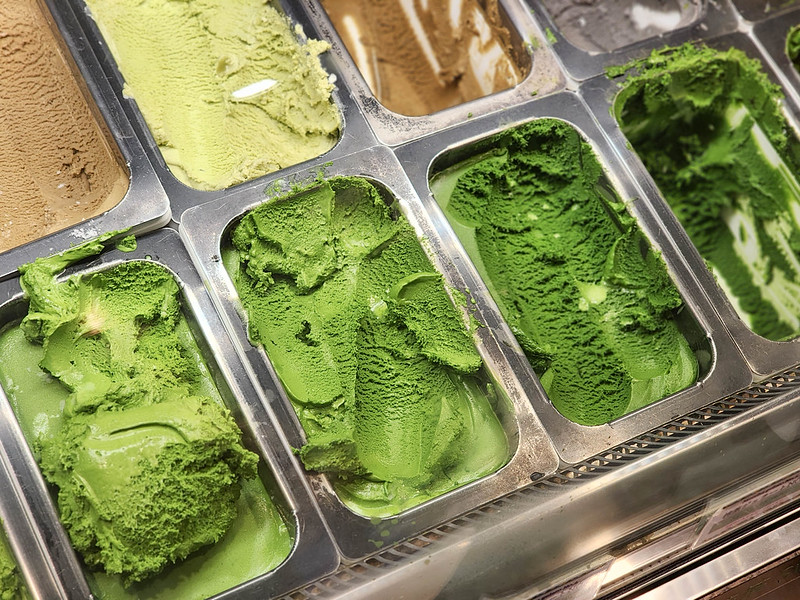
matcha ice cream in suzukien
If you are a matcha lover, Suzukien (3 Chome 4-3 Asakusa) is well-known for their matcha ice cream which come in 7 different versions depending on intensity, from weak to super strong. I went for the 5th one in terms of intensity and was already pretty buzzed after gulping down a scoop! Be prepared to queue.
Tip: For more traditional / old style areas in Tokyo, you can check out my guide on 3 traditional areas in Tokyo – Asakusa, Yanaka and Kagurazaka
Tokyo Skytree
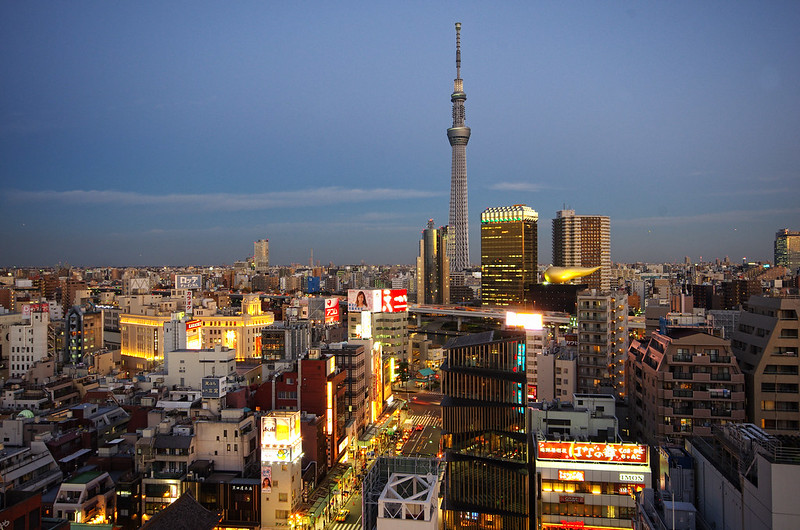
tokyo skytree as seen from asakusa
Since you’re already in Asakusa, the Tokyo Skytree is just a few stations away (or a short 20-minute walk). While it is an amazing structure – it is Japan’s tallest after all – I personally find the views too high to properly appreciate the city panorama. Alternatively, you can find some good viewing decks from which to see the tower instead. I stayed at The Gate Hotel by Hulic Asakusa Kaminarimon which has a rooftop bar that has excellent views of the Tokyo Skytree .
Museum Hopping in Ueno Park
From Asakusa, it’s a quick train ride to Ueno Station. While Tokyo has several parks, Ueno Park is different in the sense that the public grounds also contain several museums including the Tokyo National Museum, National Museum for Western Art, Tokyo Metropolitan Art Museum and National Science Museum. You can easily spend an entire afternoon here if you are a museum buff
Witness the World’s Busiest Crossing in Shibuya
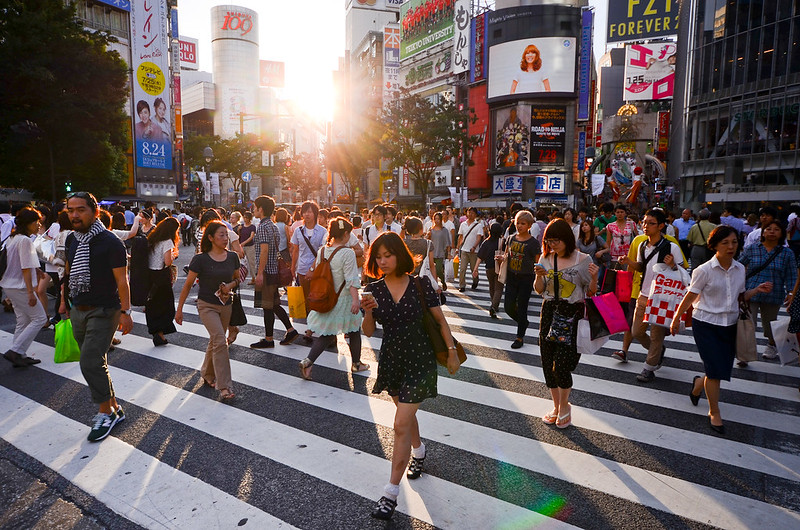
shibuya by candida.performa
From Ueno, you can easily take the Ginza line down to Shibuya Station. My favorite place to visit in Tokyo at night, Shibuya is perhaps one of the busiest crossings you’ll ever come to see anywhere in the world. The place is full of neon lights even at night and is a hub for youngsters. Don’t miss the statue of Hachiko while you are here. Shibuya is also the place to do a bit of shopping.

shibuya sky
If you prefer to do something new since your last visit, the Shibuya Sky which opened in late 2019 boasts of a 360 degree open air observation deck. This differs from the other observation decks in Tokyo as the others are mostly indoors. There are plenty of photo-worthy spots at the observation deck, including at one of the pointed corners which gives off a feeling of floating on air. There is usually a snaking queue of visitors waiting to have their photos taken at this spot, but it usually clears in about 20 minutes.
Tip: If you are looking to visit Shibuya Sky, the best time to come is during sunset. This is also the most popular time. Tickets are timed and if you are looking to secure a sunset spot, you’ll need to book tickets around a month in advance .
Day 2 – Ginza, Imperial Palace, Roppongi
Shopping in ginza.
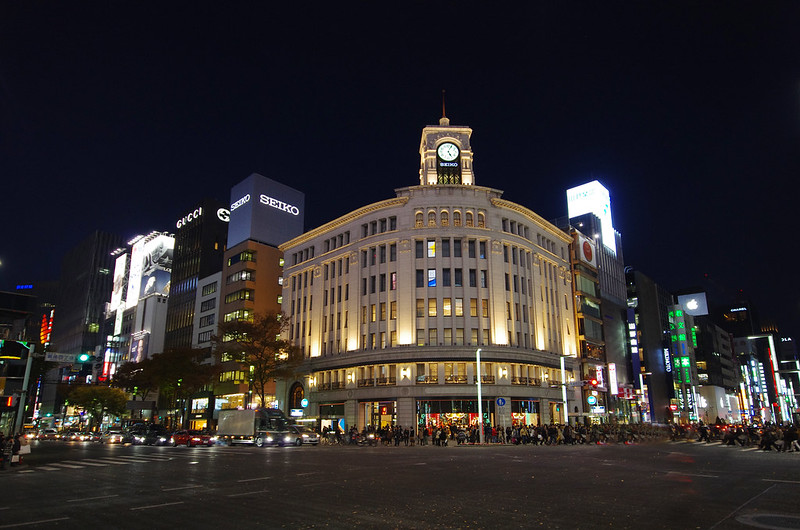
Take a stroll down the Ginza . This is historically Tokyo’s main shopping street. However, it is no longer the most high-end – Omotesando now lays claim to that. You can find a lot of well-known brands here including the largest Uniqlo store in the world. Opposite that is the high-end shopping mall, Ginza Six , which boasts of a sleek interior and plenty of specialty stores. If you visit during the weekends, you will fine Ginza to be a huge pedestrian-only zone.
If you are craving for ramen, Ginza Kagari (6 Chome-4-12 Ginza) often has a snaking queue of people coming here to try their signature chicken broth ramen which is brimming with collagen.
Tokyo International Forum

tokyo international forum
From the Ginza, it is a reasonable walk to the Imperial Palace area but first stop by the architecturally impressive Tokyo International Forum for a look-see. Make sure to drop by the upper floors to check out the astounding curves built with steel and glass.
Imperial Palace Grounds

seimon ishibashi bridge by ray
The Imperial Palace grounds is another 5 to 10 minute walk away. The area is extensive but is mostly closed to the public except during certain holidays and upon booking of a private tour with the Imperial Household Agency. Nonetheless, the moat around the palace is quite a popular tourist attraction. You can catch glimpses of a few imperial buildings while walking around it
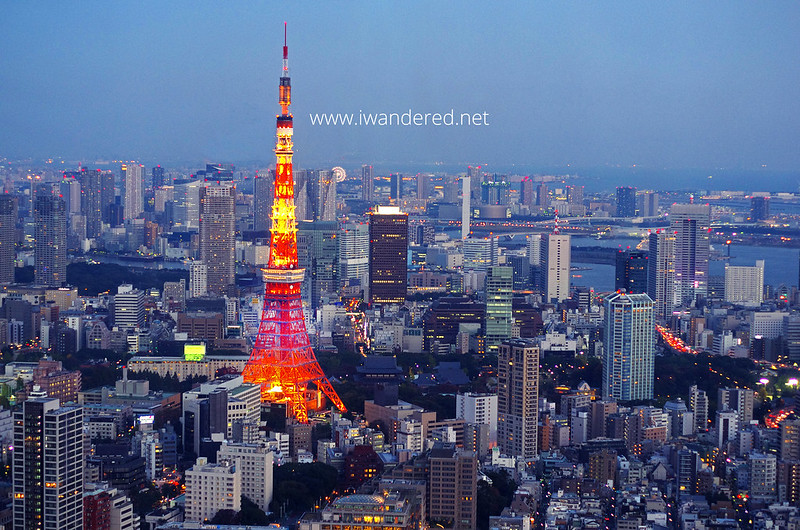
view of tokyo tower
One of my favorite places for panoramic views of the city is the Tokyo City View at the top of Mori Tower in Roppongi Hills. It is by no means the tallest observation deck in the city but you get to see a better view with some iconic buildings such as the Tokyo Tower and parts of the bay. You can book here to get a discount on the entrance fee.
Roppongi is also a buzzing nightlife district and highly popular with expats and tourists. There are plenty of foreigner-friendly bars and restaurants, including some with Michelin stars. If you ever get tired of Japanese cuisine (I can’t imagine anyone would), Roppongi is your best bet in finding restaurants catering to western or fusion cuisine
Day 3 – Harajuku, Omotesando and Shinjuku
Harajuku’s street culture.
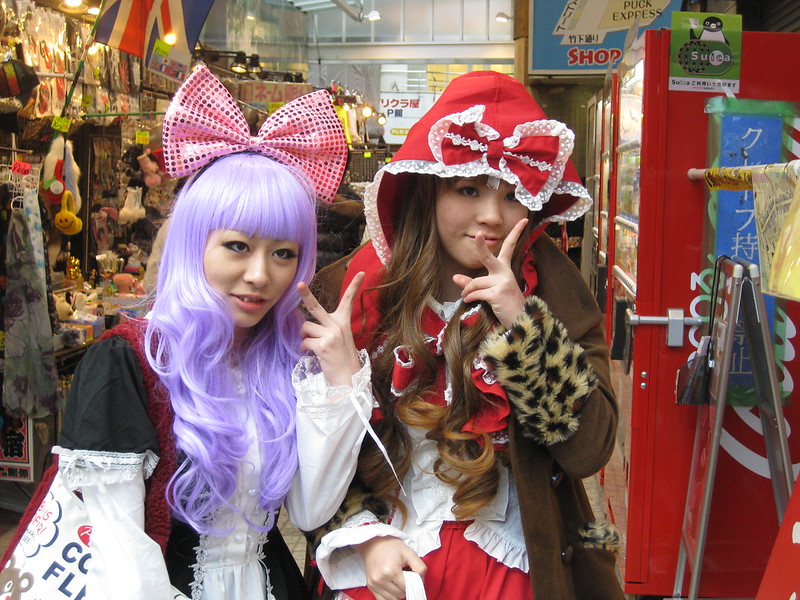
harajuku by flyingpurplemonkeys
Start the day at Harajuku which is known as a center of youth culture in Tokyo. If you are there during a weekend, you may find places such as Yoyogi Park filled with artists, musicians and cosplayers in fancy costumes.

meiji shrine
After having your fill gawking at the people, you can head to Meiji Shrine which is dedicated to the spirits of the former Emperor Meiji and his wife. The vast 70 hectare of forested land in the middle of the city is a breath of fresh air. Smelling the pine-scented vegetation, you’ll soon forget you’re in Tokyo.
Living the High Life in Omotesando

lobster roll from luke’s lobster omotesando
Tokyo’s most high-end shopping street, Omotesando , is just a short walk away from Harajuku. While most of the stores here sell things that are out of most people’s budgets, it is still a great place for people watching. There are also plenty of cafes around the area. If you are looking for a caffeine fix, backstreet cafes such as Lattest Omotesando are your best bets. Luke’s Lobster also has a branch in Omotesando It is frequented by locals and tourists alike. Be prepared to queue.
Shinjuku’s Nightlife

kabukicho in shinjuku
If you still haven’t had enough of Tokyo’s nightlife, it’s worthwhile to check out Shinjuku which offers a peek into what locals do after dark. You’ll find a mix between hole-in-the-wall bars, watering holes serving craft beer and whisky as well as live music venues. Areas to check out include Golden Gai and Omoide Yokocho , both near Shinjuku station.
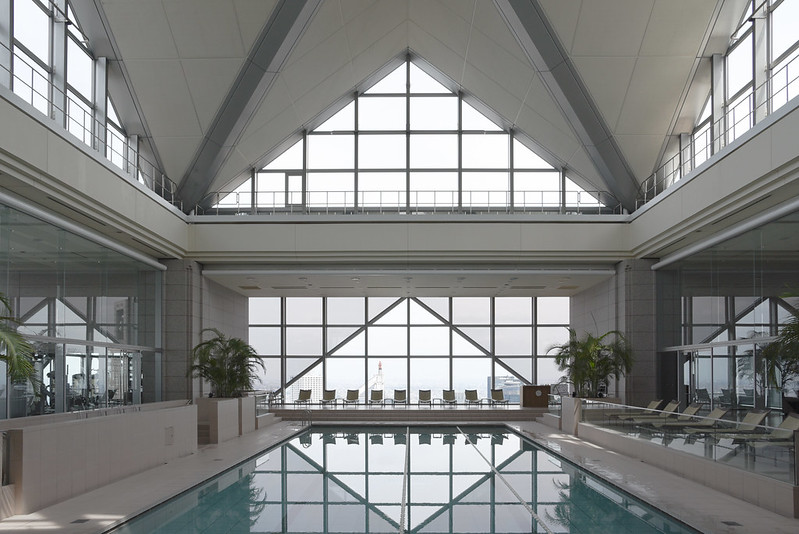
the iconic park hyatt tokyo – the “lost in translation” hotel
If you are a fan of the movie “Lost in Translation,” you’ll be pleased to note that the iconic Park Hyatt Tokyo is located well within Shinjuku. The rooms are of course, open to guests only, but you can relive scenes from the film at the New York Bar where Bill Murray’s character had chilled out in the film

shinjuku gyoen
If you manage to finish the other sights early and decide to head to Shinjuku before it gets dark, it’s worthwhile to check out Shinjuku Gyoen , one of the largest public parks in the inner wards of Tokyo. The park is one of the best places in Tokyo to see autumn colors in late November/early December and cherry blossoms in April
Tokyo For Shopaholics (and Hipsters)
Aside from the activities suggested above, you can add the following into your itinerary for a more well-rounded shopping experience in Tokyo

- One station away from Shibuya is Ebisu which offers a cool alternative to the traditional nightlife spots of Shinjuku or Roppongi. The establishments here are decidedly quirkier and less serious.
- Daikanyama and Nakameguro (again, near Shibuya) are also fun neighborhoods to explore with lots of boutiques housing independent labels. You’ll find bookstores sitting alongside clothing stores. Bakeshops and cafes also abound. If you are looking for Tokyo’s equivalent to a hipster neighborhood, these places are the best fit.
- Another interesting neighborhood to check out is Shimokitazawa which is filled with plenty of young and trendy shops, specialty boutiques and of course, lots of hipsters. Unlike the adjacent neighborhoods of Ebisu / Daikanyama and Nakameguro, Shimokitazawa is farther out (west of Shibuya).
- If you are looking to buy electronics, Akihabara offers all sorts of gadgets imaginable at relatively lower prices. Before buying, make sure that you can configure the product settings into your local language.
Unique Things to Do in Tokyo
The city is known for offering a lot of eccentric services that cater to just about any interest group. In case you’ve been to Tokyo so many times that you’re looking for something different, here are some unusual things to do in the city that you can add to your itinerary

robot restaurant in tokyo – one of the quirkiest things to do in the city (now closed)
- If you’ve been longing for intimacy but haven’t found anyone to express it with, Tokyo has what is called a cuddle cafe which allows clients to cuddle, hug or sleep together (in a non-sexual way) with another person for at least 20 minutes. One of the most popular of such cuddle cafes is Soine-ya ( KN Building 3F, 2-11 Sakumacho, Akihabara, Chiyoda-ku, Tokyo 101-0025)
- In a place that’s known for cosplay, the concept of a maid cafe would perhaps be not that surprising. Walk into one of these establishments and find yourself being served by young girls dressed as personal servants. With unmistakably cute and high-pitched voices, they’ll attend to your every need. Maidreamin which has 4 locations in Tokyo (Akihabara, Shijuku, Ikebukuro and Shibuya – book discounted tickets here ) allows its customers to immerse in this make believe world, even if for just a few hours.
- It may sound kitschy to some but Ninja Cafe and Bar allows you to dine in a medieval-looking venue, get a quick training on the way of a ninja and even walk around the surrounding neighborhood in a ninja outfit.
- Relive the 80s at the 8bit Cafe where fully functioning gaming consoles from the Nintendo Family Computer days are available for guest use. Play a game of Pac-man while having cocktails named after video game characters
- Go on a real-life Mario Cart ride (complete with costume) through the streets of Tokyo. Each ride takes about an hour and goes through some Tokyo tourist attractions. Do note that an international drivers’ license is required. You can book here for discounted tickets.
- I’m not totally sure why anyone would want to come ogle at parasites but for something truly offbeat, you can check out the Meguro Parasitological Museum which contains over 60,000 parasite samples
- The lack of space in Tokyo has made capsule hotels a popular concept. It’s not exactly the most luxurious accommodation option out there but you can consider staying in one for the novelty of it. You can compare for the best prices in booking capsule hotels here
Other Tips for Tokyo
- Travel Insurance: Japan is quite expensive overall and this is one of the countries where getting travel insurance is most worthwhile. If you reside in Singapore, check out Starr Travelead , one of the cheapest travel insurance. They have a promotion that comes with S$10 cash rebate that helps to offset the insurance cost.
- Electric Adapters: Japan uses Type A or B outlets for electricity so make sure you have the right adapters for your devices.
- Credit Card Usage: Even in an ultramodern city such as Tokyo, you’d be surprised to find that many establishments still don’t accept credit cards. Japan is still a predominantly cash society so it’s useful to bring the cash you need for your trip. Major hotels and department stores do of course accept credit cards but many smaller restaurants and independent stores don’t.
- Best time to visit Tokyo: While sakura season in April is undoubtedly the time to visit Tokyo to see it at its “prettiest,” this is also the most crowded time with hotels charging a premium in what is already a relatively expensive city. Other good times to visit Tokyo include late-April to May when it is still cool but you’ll find the tourist scene quieter as most would have just left after the cherry blossoms wither. Hotel prices are also cheaper at this time. Another good period to visit Tokyo is from mid-November to 1st week December. This is autumn season when the leaves change color. This is an alternative period to visit if prices during sakura season are too prohibitive.
- Where to buy sim cards: To keep up with your mobile internet needs, it may be wise to purchase a local sim card. While you can easily buy one when you arrive, purchasing a sim card in advance allows you to get a slight discount on the price. You can buy one here .
- Venturing out of Tokyo: If you are planning to visit other cities during your Japan trip such as Osaka, Kyoto, Nagano, etc; you may want to purchase a JR Pass or one of the regional passes instead. The JR Pass gives you unlimited rides on JR trains, shinkansen and the JR Line in Tokyo for a period of as little as 5-days. You can purchase the JR Pass here to obtain instant confirmation.
Getting From Narita Airport to Tokyo
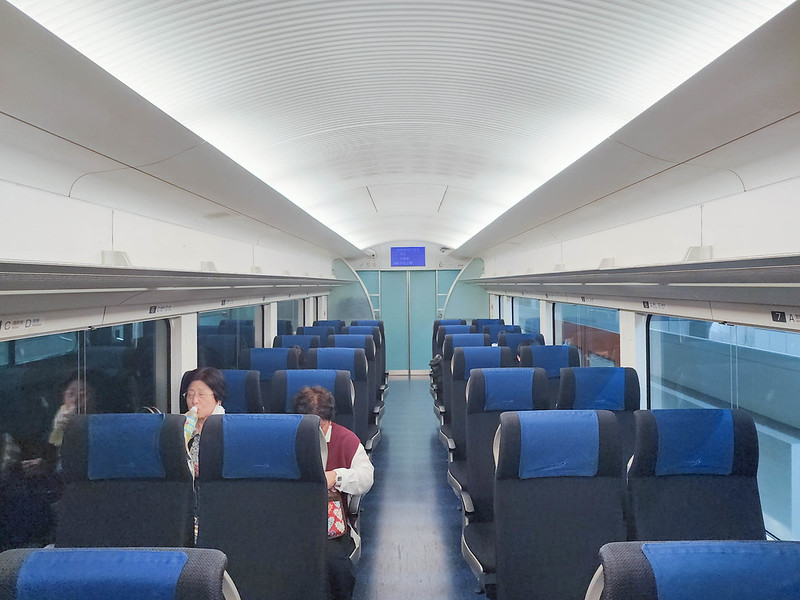
keisei skyliner from narita to tokyo ueno
Narita Airport, the main airport serving Tokyo (the other one being Haneda Airport) is located some 70 km away from town. A taxi ride takes more than an hour and can easily cost almost US$300. To get to the city quick and comfortably, take either:
- the airport limousine bus which stops in several downtown Tokyo hotels including Westin, Marriott, Aman, Shangri-la, Hoshinoya, Park Hyatt, etc and takes about 2 hours
- the Keisei Skyliner which takes you from the airport to the city in around 41 minutes. It makes 2 stops in the city, at Ueno or Nippori stations.
Getting From Haneda Airport to Tokyo
Haneda Airport is much nearer to Tokyo than Narita Airport but taking a taxi is still expensive and could set you back by almost US$100. Other quick and efficient ways to get to the city include the following:
- The Tokyo Monorail can get you from Haneda Airport to Hamamatsucho Station in as little as 13 minutes. From Hamamatsucho Station, you can easily connect to the JR lines or other subway lines to get you to your destination in Tokyo. Service on the Tokyo Monorail starts at 5AM and stops at around 11:30PM.
- The Asakusa Line of the Tokyo Subway connects to the Keikyu Airport Line for trips to Haneda Airport without having to change trains.
- If you are carrying heavy luggage, the airport limousine bus may be a better alternative as the route stops in several well-known hotels throughout the city. Do note journey times may be a bit longer but at least you won’t have to navigate Tokyo’s train network with your bags!
- You can also book private car transfers from the airport to anywhere in Tokyo. These private cars can accommodate up to 9 people inside the car so depending on the size of your group, it may actually be more efficient and economical to book this than taking public transport.
Getting Around Tokyo
Tokyo’s subway system is vast and local trains / subways can take you to almost any point of interest within the city. Taxis are also plentiful but I don’t recommend these as they are very expensive. For subways / local trains, you can either buy single tickets or a pass valid for a couple of days. I recommend buying a subway pass if you foresee yourself taking the subway at least 4 times each day. If you are in Tokyo for sightseeing, this condition is easily met. The subway passes come in 24, 48 and 72 hour variants.
Where to Stay in Tokyo
Budget – Rooms at Richmond Asakusa are quite modest but are among the most decently priced for a conveniently located 3-star hotel in Tokyo. The hotel is near Sensoji Temple with plenty of food options nearby. If you prefer to stay in the heart of Tokyo’s shopping area, the Sunroute Hotel Ginza is located mere steps from the renowned shopping street.
Midrange – I’ve stayed in a number of hotels in Tokyo but one I can recommend is The Gate Hotel by Hulic in Asakusa near the Sensoji Temple. Although styled as a boutique / 4 star hotel, I thought the offerings were quite luxe at a relatively more affordable price compared to other Tokyo digs. I still have fond memories of the freshly squeezed orange juice in the morning. Alternatively, the Daiwa Roynet Ginza Hotel is conveniently located if you wish to be situated near the prime shopping district.
Luxury – The iconic Park Hyatt Tokyo in Shinjuku is the cream of the crop where Tokyo hotels are concerned. It is worth staying here even for just one night like I did especially if you are a fan of the film, “Lost in Translation” which stars Bill Murray and Scarlet Johanssen.
For other Tokyo hotels, you can check out HERE .
You May Also Like
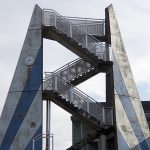
Hi, my name is Bino and I started I Wander around 15 years ago with the aim of sharing about some of my personal journeys and experiences, hoping that the information may benefit readers like yourselves. Let me know your thoughts by leaving a comment below. Alternatively, you can also email me at b i n o (at) iwandered.net. You can follow I Wander on Facebook , Telegram , or Instagram . Also, if you liked this article, please feel free to SHARE or RETWEET
More Posts - Website
Reader Interactions
Older posts.
February 7, 2017 at 12:04 pm
Thanks for this comprehensive post, very useful for my upcoming trip to Tokyo in April. Have pinned this on a shareable Google Map. If you’re interested to feature it in this post, I’ll be happy to share the link with you!
For reference: belaroundtheworld.com/how-to-create-your-own-map-itinerary-with-google-maps/
From a fellow travel blogger, Isabel belaroundtheworld.com
February 7, 2017 at 1:14 pm
Hi Isabel, thanks for writing in! Sure would love to feature your map here.
March 7, 2017 at 2:31 pm
I want to meet you personally Mr. Bino 🙂
April 19, 2017 at 7:52 pm
Good evening Mr. Bino .Thanks a lot for your useful tips and guide. That would be my guide for my Japan itinerary. I would like to ask more, we would be travelling dec 3-6 in Tokyo, considering the season, could you pls help me plan a really pleasant and enjoyable itinerary.. Much appreciation in advance.. Thanks.
April 19, 2017 at 11:21 pm
Hi Elsa, thanks for dropping by. The itinerary I suggested above is applicable for all seasons. Hope you enjoy your trip!
September 13, 2017 at 4:25 am
My wife and l (both 70+) are going on a organised 11 day tour in late March 2018 of Japan which uses Shinkansen (Bullet Trains) and buses. The tour starts in Tokyo (only 1 day) and finishes in Osaka, and we’d like to return to Tokyo to see more for 3 more days, then fly back to New Zealand. We haven’t as yet organised any tickets to get back to Tokyo (Ginza / Tokyo Station area) from Osaka. 1) Should we purchase a 7 day Rail Pass, or just a One way ticket, or fly ? 2) If we purchase a 7 day Rail Pass can we use it on the Tokyo subway, plus get to Narite Airport when we leave ?
September 14, 2017 at 2:02 pm
#1 – you did not mention how many train trips you are supposed to be taking. If it’s just Tokyo – Osaka one-way then it does not make sense to get the rail pass. #2 – Yes, the rail pass can be used for the JR line in Tokyo.
September 24, 2017 at 10:41 am
Hi there, I’m just wondering is there any public bath spots in Tokyo, like in Korea? (the sauna place, where people can have sauna, shower and rest for a while)
July 6, 2018 at 2:07 pm
Hi Bino thanks for your posts – we are hoping to do a January trip to Tokyo Kyoto in 2019 and wondering whether you would have any different itineraries for winter in these cities – also any tips in terms of temperatures and getting around if it snows etc etc Thanks
July 9, 2018 at 3:33 pm
Hi Jacqueline, my itinerary applies to all seasons. 🙂
Leave a Reply Cancel reply
Your email address will not be published. Required fields are marked *
Save my name, email, and website in this browser for the next time I comment.
The Ultimate Guide to Tokyo in 2023: Top Attractions and Things to Do
In the year 2023, Tokyo continues to stand as a bustling metropolis that seamlessly fuses time-honored tradition with futurism. This vibrant city unfolds a mesmerizing tapestry of diverse experiences, from serene tea ceremonies at ancient shrines tucked amidst skyscrapers to robot-led cafes in its high tech districts. Our Ultimate Guide to Tokyo in 2023 whisks you through the best of what this dynamic city has to offer, making sure you don’t miss a beat. So fasten your seatbelts as we dive into an adventure replete with cultural exploration, culinary delights, technology wonders, and prime shop-till-you-drop spots offering an intriguing blend of the past, the present and the future – all at once.
Our Guide to Tokyo in 2023 provides a comprehensive overview of this vibrant city, including top attractions like Sensō-ji Temple and the Tokyo Imperial Palace, delicious dining options ranging from street food to Michelin-starred restaurants, and fun activities such as shopping on Takeshita Street or visiting Shibuya Crossing. Additionally, our guide offers helpful tips for travelers on a budget, as well as unique experiences like watching sumo matches at Ryogoku Kokugikan or taking a day trip to Mount Fuji in Hakone. Whether you’re planning your first trip to Tokyo or are a seasoned traveler, our guide is designed to help you make the most of your visit.
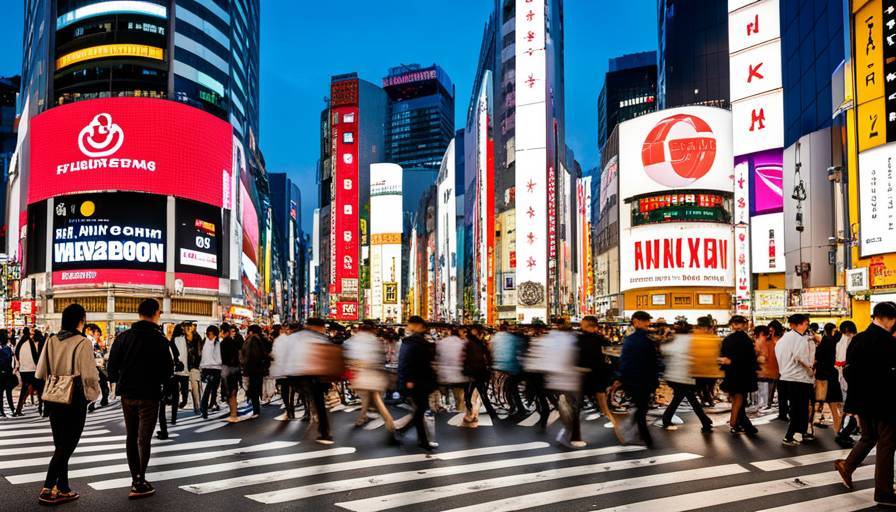
Table of Contents
Overview of Tokyo in 2023
Tokyo, the bustling capital of Japan, has always been renowned for its rich culture, technological advancements, and vibrant city life. In 2023, the city continues to captivate visitors with its unique blend of tradition and modernity. As you step into Tokyo’s streets, prepare to be immersed in a sensory feast that combines historical landmarks, cutting-edge architecture, exquisite cuisine, and an infectious energy that pulses through the city. Whether you are a first-time traveler or a frequent visitor, Tokyo offers an array of attractions and experiences that will leave you spellbound.
As you navigate through Tokyo’s neighborhoods, each one encapsulates its distinct charm and character. Shibuya/Harajuku/Ebisu is an epicenter of youth culture and a fashion mecca where colorful Harajuku street style converges with trendy shopping districts. The iconic scramble crossing at Shibuya exemplifies Tokyo’s vibrancy, with swarms of pedestrians crossing from all directions at once. This is where history meets progress – on one hand, you have traditional shrines and narrow alleys; on the other hand, world-class shopping centers and towering skyscrapers dominate the landscape.
Odaiba/Shiodome/Shinbashi offers a different facet of Tokyo, with its futuristic architecture and stunning waterfront views. This artificial island showcases architectural marvels like the Rainbow Bridge and the eye-catching Fuji TV Building. As you explore this area, don’t forget to take a ride on the giant Ferris wheel at Palette Town for panoramic vistas of the city skyline.
For those seeking high-end shopping experiences and glamorous surroundings, Ginza is not to be missed. Its wide boulevards are lined with flagship stores of internationally renowned luxury brands. Immerse yourself in cutting-edge fashion trends or indulge in culinary delights at renowned Michelin-starred restaurants scattered throughout this district.
To make the most of your Tokyo adventure, consider exploring the side streets in popular areas. Venture beyond the well-known attractions to discover hidden gems like local eateries and quaint stores that offer a glimpse into Tokyo’s vibrant street culture. Often, these smaller establishments provide a more intimate and authentic experience that allows you to truly connect with the city and its people.
The efficient Japan Railways (JR) train station network is a convenient way to navigate Tokyo, providing access to various neighborhoods and attractions. Staffed by helpful personnel, these stations also feature an array of restaurants and shops, making them convenient pit stops during your exploration of the city.
When it comes to immersing yourself in Japanese art and history, a visit to the Tokyo National Museum is highly recommended. It houses an extensive collection of exhibits that showcase the richness of Japanese culture, from ancient artifacts to traditional artwork and architecture.
One must-see landmark for a true Tokyo experience is the Hachiko statue located outside Shibuya Station. This bronze memorial commemorates the loyalty and devotion of a dog named Hachiko who waited diligently for his deceased owner every day for nearly 10 years. It serves as a reminder of love and dedication, attracting visitors from all over the world.
Just like the diverse neighborhoods that make up Tokyo, exploring this city is like flipping through chapters of a captivating book. Each page unravels new stories, offering countless moments to treasure.
Now that we have gained an overview of Tokyo in 2023 and explored some key neighborhoods, let’s dive deeper into the must-see historical landmarks that grace this magnificent city.
Must-see Historical Landmarks
Tokyo carries a rich historical legacy that intertwines seamlessly with its modern facade. From ancient temples to imperial palaces, stepping into these historical landmarks allows you to immerse yourself in Japan’s fascinating past.
When it comes to temples, one cannot overlook the grandeur of the Senso-ji Temple, located in the Asakusa district. This majestic Buddhist temple, founded in the 7th century, has withstood the test of time and remains an enduring symbol of Tokyo’s heritage. As you approach the Kaminarimon Gate (Thunder Gate) adorned with a massive red lantern, prepare to be enchanted by vibrant shopping streets leading up to the main temple complex. Take a moment to explore Nakamise-dori, where you can find an array of traditional crafts, snacks, and souvenirs.
Legend has it that two brothers found a golden statue of Kannon, the goddess of mercy, when they were fishing in the nearby Sumida River. The discovery led to the establishment of Senso-ji Temple, attracting pilgrims and visitors alike who seek blessings and explore its cultural significance.
Apart from Senso-ji Temple, Tokyo is home to numerous other historical landmarks that hold significant importance. Let’s discover more treasures that await us in this captivating city.
The Senso-ji Temple and other Shinto Shrines
One of the must-visit attractions in Tokyo is the Senso-ji Temple and the array of enchanting Shinto shrines scattered throughout the city. As you weave your way through the bustling streets of Asakusa, you’ll be captivated by the magnificent pagoda-style gates that lead to Senso-ji, Tokyo’s oldest and most revered temple. Stepping into its sacred grounds, you’ll instantly feel a sense of tranquility amidst the whirlwind of the city.
Legend has it that Senso-ji Temple was founded in 628 AD after two fishermen discovered a statue of Kannon (the Buddhist goddess of mercy) in their nets. Today, as you wander through Nakamise-dori – a vibrant shopping street leading to the temple – you’ll find an abundance of stalls selling traditional snacks, souvenirs, and memorable trinkets.
Once inside the temple grounds, take a moment to marvel at the magnificent five-story pagoda and the impressive Main Hall. Allow yourself to be immersed in the rich history and cultural significance of this iconic site. If you’re feeling adventurous, consider joining a serene tea ceremony or even trying your hand at Omikuji, where you can receive a fortune written on a strip of paper.
While Senso-ji Temple might steal much of the limelight, there are numerous other Shinto shrines in Tokyo that are equally enchanting. One such treasure is Meiji Shrine, nestled within lush forested grounds in Harajuku. Dedicated to Emperor Meiji and his wife Empress Shoken, this shrine offers visitors a peaceful escape from the bustling streets nearby. Take a moment to cleanse yourself at the Temizuya (water pavilion) before proceeding along the picturesque path lined with towering cryptomeria trees.
Another notable shrine is Nezu Shrine, famous for its vibrant azalea garden that’s a sight to behold during the spring months. And for those interested in exploring a shrine with a twist, head to the Kanda Myojin Shrine, which combines traditional Shinto practices with elements of modern pop-culture.
Close your eyes and take a deep breath as you soak in the spiritual atmosphere of these sacred sites. Tokyo’s shrines are not just tourist attractions; they are gateways to the rich cultural heritage of Japan.
After experiencing the serene presence of Tokyo’s temples and shrines, it’s time to shift gears and embark on a mouthwatering journey through the city’s culinary wonders. Let’s explore the top food and dining experiences that await you in Tokyo.
- In a recent 2023 survey by the Japan National Tourism Organization, Senso-ji Temple is still the top visited site in Tokyo, with over 30 million annual visitors.
- According to TripAdvisor, Tokyo Tower continues to be a crowd puller and has seen a significant rise of about 10% in tourists compared to previous years in 2023.
- The Tsukiji Fish Market, despite its move to Toyosu, is still a foodie’s paradise as depicted by its steady visitor growth rate of 8% since 2019, as mentioned by Statista’s report on Tokyo tourism in 2023.
Top Food and Dining Experiences
Imagine indulging in a steaming bowl of flavorful ramen, slurping up each noodle with glee as you savor the rich broth. Picture yourself biting into a crispy tonkatsu cutlet, delighting in its tender texture and savory flavor. In Tokyo, food isn’t merely sustenance; it’s an art form that nourishes both body and soul.
Tokyo is a foodie paradise with infinite opportunities to find the best Japanese food. Whether it’s traditional sushi at Tsukiji Fish Market or Michelin-starred dining experiences, there is something to satisfy every palate.
When it comes to ramen, Tokyo boasts an extensive array of renowned eateries. From Tsuta’s delicate truffle-infused broth to Iruka Tokyo’s delectable seafood ramen, you’ll be spoilt for choice. Other notable mentions include Yakumo’s rich miso ramen, Fūunji’s creamy tsukemen noodles, and Menya Hidamari’s spicy tantanmen.
For Udon lovers, Kirimugiya Jinroku serves up chewy noodles in a variety of tantalizing broths, while Sato Yosuke Ginza Inaniwa Udon specializes in the Inaniwa udon style known for its delicate texture. Menchirashi offers unique udon variations topped with an assortment of flavorful ingredients, and Kaneko Hannosuke is revered for its crispy tempura-coated udon.
Soba enthusiasts can indulge in the simplicity and elegance of Benten’s handmade soba noodles or savor the robust flavor profiles at Daian, where they serve various types of soba dishes that cater to different preferences.
And let’s not forget about tonkatsu — breaded and deep-fried pork cutlets. Ponchiken, Tonkatsu Marushichi, and Butagumi are just a few names that come to mind when seeking out Tokyo’s finest tonkatsu experiences. Each bite into the crispy exterior reveals tender, juicy meat inside.
If you’re craving tempura, Tempura Kakiage Yukimura is the place to be. Their tempura donburi, known as Tendon, features a glorious medley of deep-fried seafood and vegetables atop a bowl of rice, creating a tantalizing fusion of textures and flavors.
Tokyo’s food scene is a treasure trove waiting to be explored. From humble street stalls to Michelin-starred establishments, the capital city has something to entice every taste bud. So prepare yourself for a gastronomic adventure like no other as we uncover more culinary delights that await you in Tokyo.
- Tokyo’s food scene is a paradise for food lovers, with endless opportunities to try the best Japanese cuisine. From traditional sushi to ramen, udon, soba, tonkatsu, and tempura, there is something to satisfy every palate. Whether you prefer Michelin-starred dining or street food stalls, Tokyo has it all. So, embark on a gastronomic adventure in Tokyo and discover the countless culinary delights that await you.
Tsukiji and Toyosu Fish Markets
A trip to Tokyo wouldn’t be complete without visiting the iconic Tsukiji and Toyosu Fish Markets. These bustling marketplaces offer an immersive experience where you can witness the vibrant seafood trade that has been a cornerstone of Japanese culture for centuries.
First, let’s start with the legendary Tsukiji Fish Market, which held its place as the largest wholesale fish market in the world for many years. Although it shifted to a new location in Toyosu in 2018, the original market site still retains its charm and continues to attract visitors who want a taste of its history. Walking through the narrow alleys of this bustling market, you’ll be greeted by rows upon rows of vendors selling an astonishing variety of fresh seafood, from delicate sashimi-grade tuna to flavorful shellfish. Watch as expert fishmongers expertly slice, dice, and auction off their catch with impressive precision.
Just imagine strolling past rows of glittering fish, feeling the excitement and energy pulsating through the air. You might come across towering stacks of bright red crabs or buckets overflowing with plump oysters. The scent of the sea lingers as you pass stalls showcasing colorful displays of fresh uni (sea urchin), giant clams, and prawns the size of your palm. Engage with vendors who are more than happy to share tips on selecting the best fish for various dishes or recommend local delicacies to try.
For those seeking a glimpse into modernity, a visit to Toyosu Fish Market is a must. Located nearby Tsukiji, this state-of-the-art facility took over as Tokyo’s primary wholesale seafood market. Unlike its predecessor, Toyosu Fish Market is designed to offer visitors an elevated viewing experience while maintaining strict hygiene standards.
When you step foot inside Toyosu Fish Market, you’ll find yourself immersed in a larger-than-life world of seafood. The market is divided into three main sections: the wholesale area, the intermediate wholesale market, and the outer market. The wholesale area, which is off-limits to visitors during the early morning auctions, is where a significant amount of Tokyo’s seafood supply is traded. Witness the fast-paced action as buyers and sellers negotiate deals with lightning speed.
As you make your way to the intermediate wholesale market, you’ll be surrounded by an astonishing array of stalls displaying an abundance of fresh catches from around Japan and beyond. Take your time exploring the maze-like corridors, and let the vibrant sights, sounds, and smells overwhelm your senses. Grab a seat at one of the cozy sushi restaurants lining the corridors and indulge in some of the best sushi available in Tokyo – made with fish that was swimming mere hours before finding its way to your plate.
It’s worth noting that visiting both Tsukiji and Toyosu Fish Markets requires careful planning. Tsukiji Market usually operates in the early morning hours, while Toyosu Fish Market is more visitor-friendly throughout the day.
Modern Wonders of Tokyo
Beyond its historical landmarks and traditional markets, Tokyo boasts an impressive collection of modern wonders that showcase its innovative spirit and technological prowess.
One iconic symbol of modern Tokyo is Tokyo Tower. Standing tall at 333 meters, this communications tower offers breathtaking panoramic views of the city from its observation decks. As you ascend to the top, marvel at the sprawling urban landscape stretching as far as the eye can see. On clear days, you might even catch a glimpse of Mount Fuji on the horizon. At night, watch as Tokyo comes alive with a dazzling display of lights, a testament to the city’s vibrant nightlife.
Another must-see attraction is Shibuya Crossing, often dubbed as the busiest pedestrian intersection in the world. Located just outside Shibuya Station, this bustling intersection is an experience like no other. Picture yourself amidst a sea of people, waiting for the traffic signals to halt simultaneously before the swarm of pedestrians engulfs the intersection. As the lights turn red, the sheer energy and excitement swell as hundreds, if not thousands, of people move in every direction, creating a hypnotic dance of humanity.
Take a moment to stand at one of the corner vantage points, capture a video or snap a photo, and become part of this surreal urban spectacle. Shibuya Crossing encapsulates the essence of Tokyo’s vibrant energy and never-ending flow.
The modern wonders of Tokyo extend beyond these iconic attractions. From futuristic neighborhoods like Odaiba, with its architectural marvels and entertainment hubs, to cutting-edge digital art exhibitions like teamLab Borderless, where visitors can immerse themselves in awe-inspiring interactive artworks – Tokyo pushes boundaries and offers experiences that defy expectations.
Keep in mind that new attractions and experiences are constantly emerging in this dynamic city. It’s always worth researching and exploring what’s on offer during your visit to Tokyo.
Exploring Tokyo Tower and Shibuya Crossing
When it comes to exploring Tokyo, two iconic landmarks that should be at the top of your list are Tokyo Tower and Shibuya Crossing. These attractions offer a glimpse into the vibrant and bustling city life that Tokyo is known for.
Tokyo Tower stands tall as a symbol of the city’s modernity and elegance. With its striking orange-red color and towering height of 333 meters, it dominates the skyline and offers breathtaking views of Tokyo from its observation decks. As you ascend the tower, you’ll witness panoramic vistas that showcase the vastness and beauty of the city. On clear days, you can even catch a glimpse of Mount Fuji in the distance. Don’t forget to visit the foot town located at the base of the tower, where you can find various shops, restaurants, and even an aquarium.
After experiencing Tokyo from above at Tokyo Tower, head to one of Tokyo’s busiest intersections – Shibuya Crossing. Often called the “Scramble Crossing,” this intersection is famous for its organized chaos as hundreds of people cross in all directions when traffic lights turn red. It’s an exhilarating sight to behold as swarms of pedestrians flood the streets like a synchronized dance. Take a moment to immerse yourself in the energy and excitement of this dynamic intersection before exploring the surrounding area.
Just a short walk from Shibuya Crossing, you’ll find yourself in Shibuya Center Street – a hub for shopping enthusiasts. This vibrant street is lined with trendy boutiques, department stores, cafes, and entertainment venues. Whether you’re looking for high-end fashion or unique vintage finds, Shibuya Center Street has something for everyone. Take your time to peruse through the stylish shops and indulge in some retail therapy.
While Tokyo Tower and Shibuya Crossing offer glimpses into the modern side of Tokyo, there’s so much more to the city’s shopping scene.
Unique Shopping Experiences
Tokyo is a shopaholic’s paradise, where you can find anything from high-end luxury brands to quirky and affordable merchandise. The city boasts diverse shopping destinations, including large department stores, malls, boutiques, and street markets. Whether you’re in search of designer labels or unique Japanese souvenirs, Tokyo has it all.
One popular shopping district in Tokyo is Ginza, known for its luxurious shopping experience. Chuo Dori, a bustling avenue in Ginza, is lined with prestigious boutiques like Chanel and Louis Vuitton alongside more affordable options like Uniqlo and H&M. If you’re looking for a one-stop shopping destination, head to Ginza SIX. This newly opened shopping complex houses over 240 fashionable stores, restaurants, art galleries, theaters, and entertainment venues. It’s the perfect place to indulge in a day of retail therapy and cultural exploration.
On the other hand, if you’re seeking unique fashion trends and youthful energy, Harajuku is the place to be. Takeshita Street in Harajuku is famous for its quirky shops selling everything from funky clothing to vibrant accessories. Explore the colorful street and immerse yourself in the world of Harajuku fashion. For those wanting to dive deeper into this fashion-forward district, visit Laforet Shopping Mall – a multi-level retail space showcasing cutting-edge designs from both established and emerging designers.
Another must-visit spot for shopping enthusiasts in Tokyo is Akihabara Electric Town. Known as a haven for technology lovers, Akihabara offers an extensive range of electronics, anime merchandise, video games, and gadgets. You’ll find numerous specialty stores dedicated to all things geek culture. From retro gaming consoles to collectible figurines of your favorite anime characters, Akihabara has something to satisfy every enthusiast’s desires.
Tokyo’s shopping landscape is diverse and ever-evolving, ensuring that there’s always something new and exciting to discover.
Akihabara Electric Town and Harajuku Fashion Boutiques
When it comes to experiencing the vibrant and eclectic side of Tokyo, look no further than Akihabara Electric Town and the trendy boutiques of Harajuku. These two iconic neighborhoods are known for their unique atmospheres and offer a glimpse into the cutting-edge culture of Japan.
Akihabara Electric Town, often referred to as “Akiba,” is an absolute paradise for tech enthusiasts and anime lovers. The streets are lined with multi-story electronics stores, gaming arcades, maid cafes, and anime merchandise shops. As you explore the bustling streets, neon lights illuminate the area, creating a futuristic ambiance that is truly captivating. You can immerse yourself in the world of manga and anime by visiting iconic stores like Mandarake or indulging in some gaming at one of the popular arcades like Super Potato.
Imagine entering a store stacked from floor to ceiling with shelves upon shelves of old-school Game Boys, retro consoles, and limited edition collectibles. The nostalgic aura envelops you as you navigate through the crowds of enthusiastic shoppers looking for their favorite characters or video games. And when hunger strikes, fear not – Akihabara is also known for its themed cafes where waitresses dressed as maids serve adorable food and drinks.
Now let’s move on to another exciting neighborhood – Harajuku. This vibrant fashion district has earned a global reputation for its unique blend of avant-garde street style, quirky boutiques, and youth culture. The colorful Takeshita Street lies at the heart of Harajuku, lined with small shops selling everything from indie fashion labels to kawaii accessories.
As you walk through Takeshita Street, you’ll encounter a sensory overload of bold fashion choices, ranging from lolita dresses to gothic outfits adorned with eccentric accessories. Many international fast-fashion chains have also established their presence here, drawing in both locals and tourists with the latest trends. Don’t forget to visit the renowned Kawaii Monster Cafe, a whimsical eatery serving themed food and drinks in a fantastical setting.
Harajuku is not just about fashion; it’s also home to beautiful parks and shrines. Yoyogi Park, adjacent to Harajuku Station, provides a serene escape from the bustling streets. You can enjoy a leisurely stroll, have a picnic under cherry blossom trees during the spring season, or witness local performances by various artists.
A visit to Akihabara Electric Town and Harajuku Fashion Boutiques allows you to immerse yourself in Tokyo’s vibrant subcultures and experience firsthand the fusion of technology, fashion, and creativity that defines these neighborhoods. Whether you’re an anime aficionado, fashion enthusiast, or simply curious about Japanese pop culture, these areas are sure to leave a lasting impression on your Tokyo adventure.
Now that we’ve explored the urban charms of Akihabara and Harajuku, let’s shift our focus to the opportunities for day-trip adventures surrounding Tokyo.
Opportunities for Day-trip Adventures
While Tokyo boasts a plethora of attractions within its borders, venturing beyond the city limits opens up a world of possibilities for exciting day trips. From exploring majestic natural landscapes to immersing in centuries-old traditions, there are several destinations worth considering.
One unmissable day trip from Tokyo is a journey to Mount Fuji in Hakone. As one of Japan’s most iconic landmarks, Mount Fuji captivates visitors with its majestic beauty. On clear days, you can catch breathtaking views of this snow-capped peak from various vantage points. The Fuji Five Lakes region surrounds Mount Fuji and offers stunning landscapes that change with each season.
In Hakone, you’ll also find numerous hot springs or onsens, making it an ideal destination for relaxation and rejuvenation. The town is known for its traditional ryokans (Japanese inns), where you can indulge in luxurious baths and experience authentic Japanese hospitality. Apart from soaking in the onsens, exploring Hakone’s beautiful Lake Ashi, taking a ride on the Hakone Ropeway for panoramic views, and visiting historic sites such as Odawara Castle are must-do activities.
Picture yourself cruising across Lake Ashi on a pirate-themed ship while admiring the reflections of Mount Fuji on the calm waters beneath a clear sky. The refreshing air as you ascend the Hakone Ropeway provides stunning vistas of mountainside landscapes draped in lush greenery or vibrant autumn colors. And after a day of exploration, you can unwind in an outdoor hot spring surrounded by nature, relishing the tranquility and indulging in the therapeutic benefits.
Journey to Mount Fuji in Hakone
Embarking on a journey to Mount Fuji in Hakone is an unforgettable experience that allows you to witness the majestic beauty of Japan’s most iconic mountain. Located just a short distance from Tokyo, Hakone offers a perfect escape from the bustling city life, providing nature enthusiasts and adventure seekers with a multitude of activities to enjoy.
As you begin your journey, you’ll have various options for reaching Hakone from Tokyo. One popular choice is taking the Odakyu Romancecar train, which offers stunning views of the surrounding landscapes as you make your way towards Hakone-Yumoto Station. Another option is using the convenient and efficient Odakyu Highway Bus, which provides a direct route to Hakone.
Once you arrive in Hakone, there are several ways to explore the area and get closer to Mount Fuji. A popular method is utilizing the Hakone Ropeway, a scenic cable car ride that takes you up into the mountains, offering breathtaking panoramic views of Lake Ashi and its surrounding lush greenery. It’s an excellent opportunity to capture stunning photographs of Mount Fuji as it reveals itself between the hills and clouds.
Imagine standing at one of the ropeway’s observation decks, feeling the gentle breeze on your face while gazing at the snow-capped peak of Mount Fuji in the distance. The beauty and grandeur of this natural wonder are truly awe-inspiring, leaving visitors with a profound sense of appreciation for Japan’s rich natural heritage.
If you wish to get even closer to Mount Fuji, consider embarking on a boat cruise across Lake Ashi. The picturesque lake, surrounded by serene forests and mountains, offers tranquil moments as you admire its crystal-clear waters reflecting the stunning scenery around you. On a clear day, you might catch a mesmerizing reflection of Mount Fuji mirrored in the calm surface of the lake – an image that will forever be etched in your memory.
For those seeking an adrenaline rush and a closer encounter with Mount Fuji, exploring the Owakudani Valley is a must. This geothermal area, known for its hot springs and sulfurous fumes, provides an otherworldly experience amidst volcanic landscapes. Take a ride on the Hakone Ropeway to reach Owakudani and witness its unique terrain, where you can even enjoy black boiled eggs that are said to add seven years to your life.
In addition to the natural wonders, Hakone also offers cultural attractions such as the Hakone Open-Air Museum, where you can admire magnificent sculptures set against a backdrop of lush gardens and stunning mountain vistas. The museum showcases artwork from renowned artists around the world, creating a harmonious blend of art and nature.
Exploring Hakone is like embarking on a magical journey through Japan’s natural and cultural treasures. Each step reveals something new and captivating, leaving you with memories that will last a lifetime.
As you wrap up your unforgettable journey to Mount Fuji in Hakone, take time to relax in one of the traditional hot spring resorts known as “onsen.” These thermal baths offer rejuvenation for both body and soul, allowing you to soak in the tranquility while surrounded by nature’s beauty.
A visit to Mount Fuji in Hakone is not just about reaching the summit or taking breathtaking pictures; it’s about immersing yourself in the enchanting landscapes, connecting with Japan’s rich heritage, and embracing the serenity that nature offers. Whether you’re seeking adventure or seeking solace, this journey will leave an indelible mark on your heart.
Related Posts
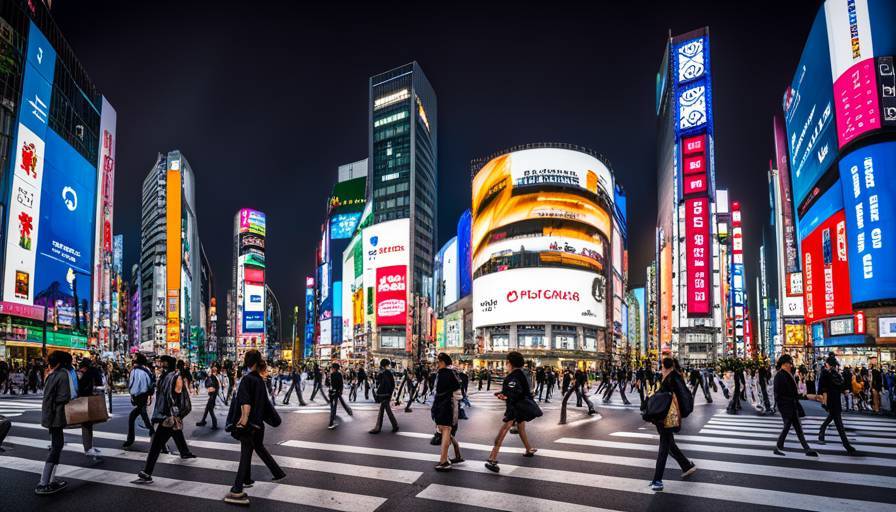
Things to Do in Tokyo in 2023: The Ultimate Travel Itinerary
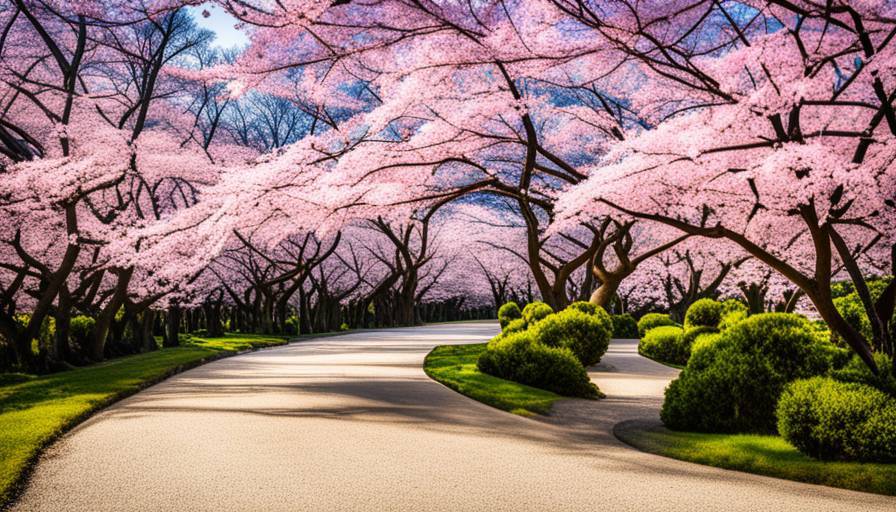
Top 10 Places to Visit in Tokyo: Must-See Attractions and Sightseeing
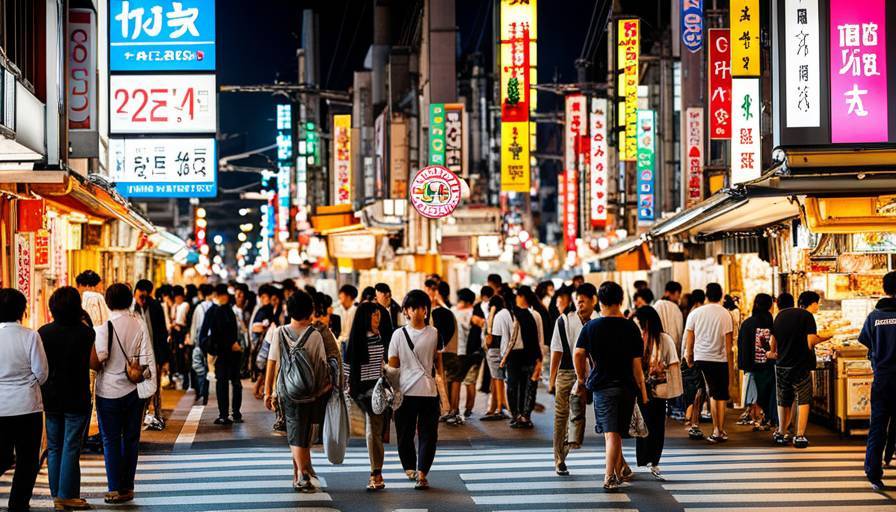
Tokyo Events Guide: Discover the Best Festivals and Concerts in Japan
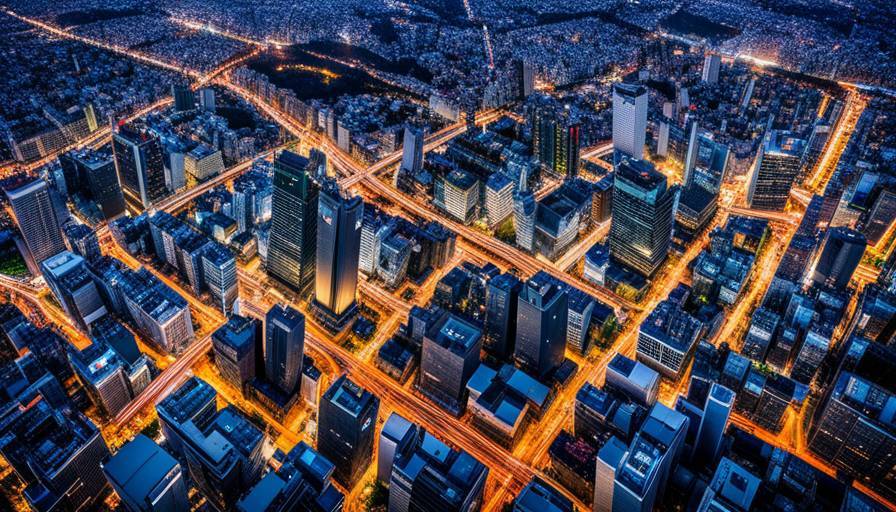
Hidden Gems in Tokyo: Discover Off the Beaten Path Secret Spots
6 Day Tokyo Itinerary: The Tokyo Guide For First Time Visitors
This page may contain affiliate links which earn us a commission at no extra cost to you to support the site. Thank you!
Tokyo, one of the most vibrant, lively and exciting cities in the world. A city filled with contrast, from robot bars to peaceful Shinto shrines, Tokyo has it all. With tons of districts to choose from, planning your trip may be a little overwhelming. That’s why I’ve put together a 6 day Tokyo itinerary to guide you. Tokyo is one of my all-time favourite cities in the world and I hope that this travel guide helps you with your own trip.
When visiting Japan for the first time, six days may seem like a long time to spend in Tokyo. There is so much to see in Japan! But because Tokyo is such a special city, I do recommend spending enough time here. This 6 day Tokyo itinerary includes 5 days in Tokyo and one day trip. This way, you can see the best things Tokyo has to offer, but also enjoy some of the great places just outside of Japan’s capital city. Let’s not waste more time, and dive in…
Shopping in Shibuya
Try purikura, drinks & pachinko, grab lunch at coco curry ichibanya, dinner and karaoke in harajuku, predict the future with o-mikuji, dinner in akihabara, hello kitty store, metropolitan government building, tokyo tower, roppongi hills mori tower, omoide yokocho (memory lane), day trip to mount fuji, how to get to tokyo from narita airport, international currency card.
* The Navigatio uses affiliate links . If you make a purchase through these links, I will receive a small commission at no extra cost to you. Thank you!
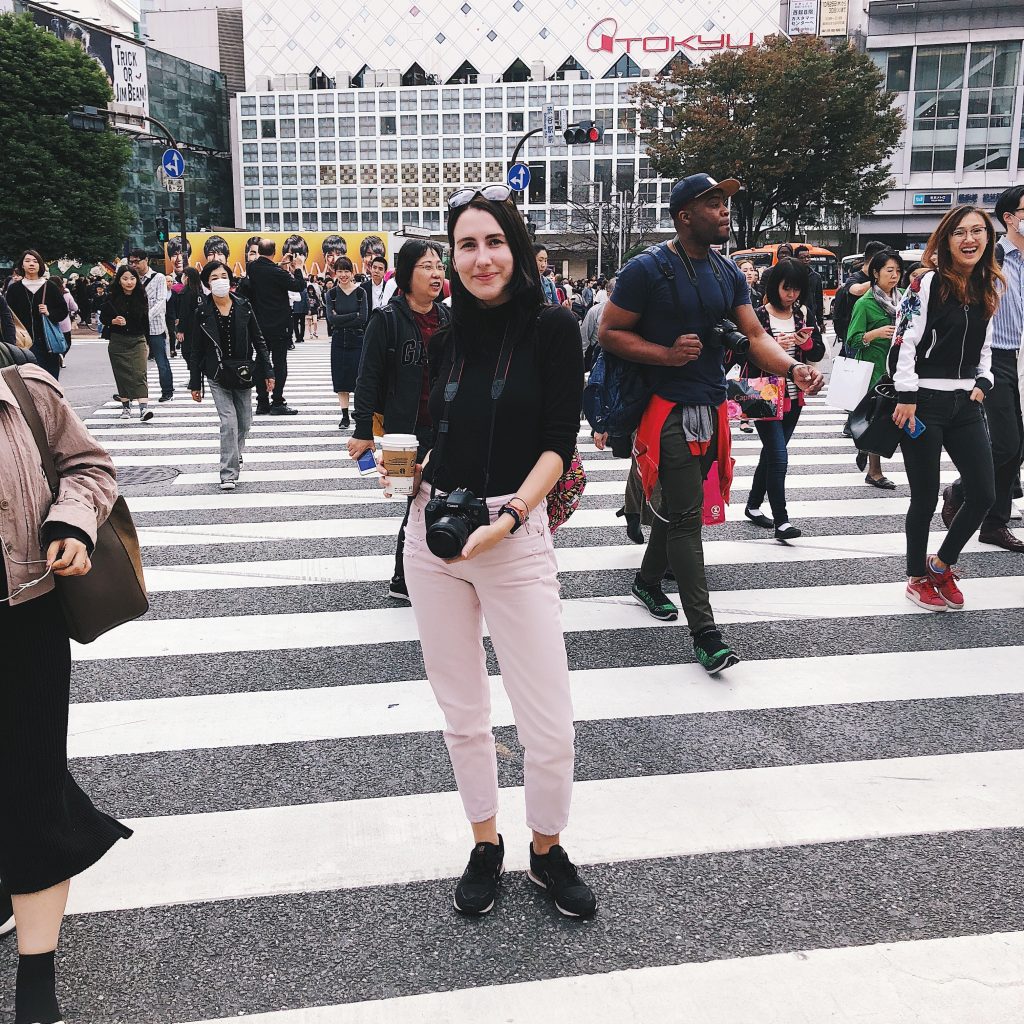
6 Days in Tokyo Map
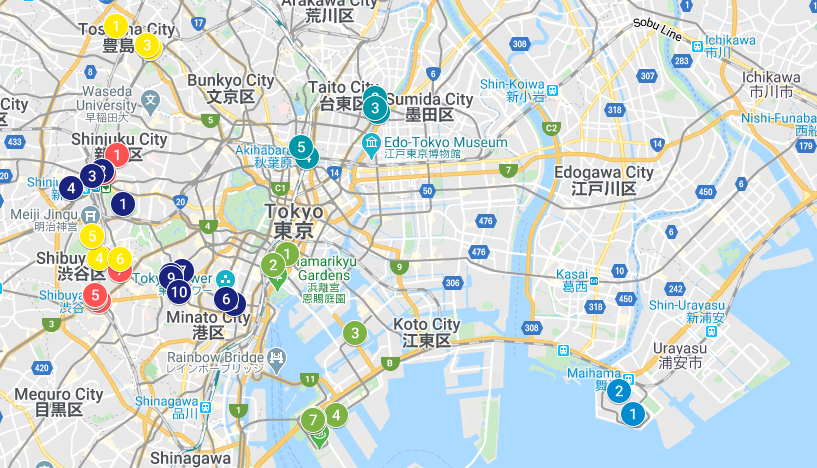
Tokyo Day 1: Pink Tokyo Day 2: Yellow Tokyo Day 3: Teal Tokyo Day 4: Green Tokyo Day 5: Dark Blue Tokyo Day 6: Light Blue Click here to view the map in Google Maps.
Planning your trip to Japan? Make sure to also check out my other articles about this beautiful country. Including:
- My Ideal Two Week Japan Itinerary For First Time Visitors
- Planning to spend more time in Japan? Check out my Three Week Japan Itinerary.
- How Expensive Is Japan? A 2 Week Budget Breakdown
- Looking for more cool Japan activities? Check out my top 50 best things to do in Japan !
6 Day Tokyo Itinerary
Day 1: shibuya, harajuku and shinjuku.
We start our six days in Tokyo in the Shinjuku district. This is where I also recommend booking a hotel. Shinjuku is a lively part of Tokyo and is known not only for being the commercial and entertainment centre of the city, but also for housing the busiest railroad station in the world: Shinjuku station .
The reason I recommend staying in Shinjuku is that it’s quite local to most things that are included in this itinerary and it’s easy to navigate to other parts of Tokyo using the metro/trains from here. On top of that, Shinjuku is filled with exciting bars and restaurants that you can visit in the evening after a long day of exploring.
The hotel we stayed in is called Hotel Sunroute Higashi Shinjuku and is located right next to the Higashi-Shinjuku station . This station is a LOT smaller compared to Shinjuku station, making it much easier to use. You can also check out the best ryokans in Tokyo .
We start our first day in Tokyo in Shibuya. From Shinjuku, you can use the metro to get here. It only takes a few minutes. Shibuya is the perfect place to start your Tokyo adventure because you immediately dive into the busy city life. It feels like Tokyo straight away – exactly what you’d expect. Shibuya is mainly known to be Tokyo’s business centre . And of course, the world-famous Shibuya Crossing !
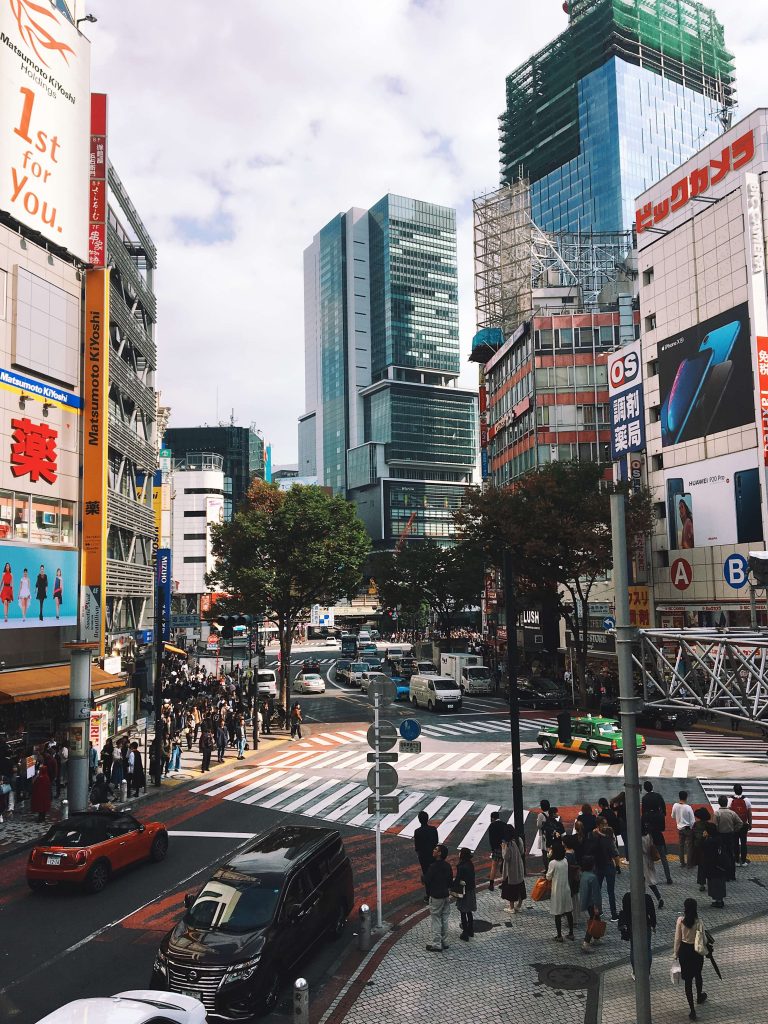
Hachiko Statue
Right outside Shibuya Station, you can find stop number one : the Hachiko Statue . You might have seen the movie or heard tales about this famous dog. If not, here is the tale of Hachiko:
Hachiko the dog came to meet his master every day at Shibuya station. Even after his master died, Hachiko would show up every single day until his own death. The statue is to commemorate his loyalty. Many people take pictures with the statue.

Shibuya Crossing
Then it’s time for the famous Shibuya Crossing! This crossing is one of the most famous and busiest crossings on the planet. Up to around 3000 people can cross here at the same time. As soon as the traffic lights allow pedestrians to cross, a sea of people washes over the streets. It’s quite remarkable – especially walking it yourself. One for the Tokyo bucket list for sure.
TOKYO T IP: Right across Shibuya Crossing, you can find a Starbucks Coffee. There is a seating area on the first floor, where you can find one of the best places to view the crossing from above. It’s the perfect place for some photos or a timelapse while getting your morning caffeine.
Combining the excitement of finally being in Tokyo and your Starbucks caffeine, we move over to some Shibuya Shopping. Shibuya is filled with some great shops. You can find some of the bigger main shops here, like Zara, H&M and Adidas, but there are also some unique Japanese gems here! Some shops to check out include:
- Vanguard Village (Pop culture and souvenirs) Opening hours: Mon-Sun 10 AM – 11 PM
- Shibuya 109 (Many smaller boutiques) Opening hours: Mon-Sun 10 AM – 9 PM
- MODI (Fashion shops, restaurants, bookstores and karaoke bars) Opening hours: Mon-Sun 11 AM – 9 PM
- MARUI (Also known as OIOI -mainly fashion items) Opening hours: Mon-Sat 11 AM – 9 PM Sun 11 AM – 8:30 PM
- MUJI (Wide variety of items) Opening hours: Mon-Sun 10 AM – 9 PM
- Disney Store Opening hours: Mon-Sun 10 AM – 9:30 PM
- Tokyu Hands (Crafts and DIY items) Opening hours: Mon-Sun 10 AM – 9 PM

Our afternoon starts in Tokyo’s Harajuku district. Harajuku refers to the area in Tokyo near Harajuku station (right between Shinjuku and Shibuya) – and is mainly known for its vibrant fashion and pop culture. You can take the metro from Shibuya Station to Harajuku Station, but it’s only 10-15 minutes on foot. If you have enough time after your shopping spree, I’d recommend walking. It’s a great way to see more of the city and enjoy the sights rather than looking at the metro walls. It also gives you a chance to grab some lunch at a 7-Eleven or Family Mart.
TOKYO TIP: Make sure to sit down somewhere to eat your lunch though – it’s frowned upon in Japanese culture to eat and walk at the same time!
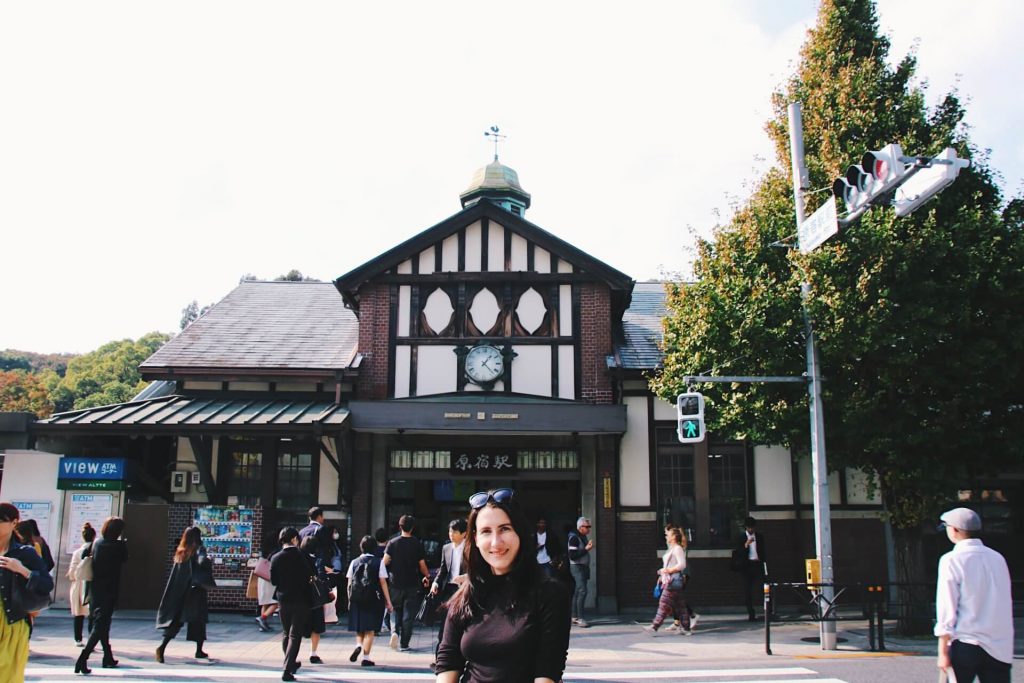
Shopping in Harajuku
Harajuku is filled with the cutest shops in Tokyo. Many Harajuku-styled outfits and accessories can be acquired here. It’s really fun to just have a wander around, checking out the shops on Takeshita Street and Omotesando Avenue . In these areas, there are tons of cute cafes and trendy restaurants to try too. Wander around, get lost here, you will find something worth taking home without a doubt.
TOKYO TIP: There is a small souvenir shop at the end of Takeshita Street that sells engraved chopsticks for a very affordable price. You can leave your name with the owner and he’ll engrave your name (+ your name in Japanese) on the chopsticks for you to take home.

If time allows it, wander around Ura-Harajuku . You’d be surprised how many amazing hidden gems you can find in the backstreets of Harajuku. Takeshita and Omotesando are great fun and are the main streets everybody recommends, but there are some lovely shops to discover in the streets surrounding the two main ones.

Enjoy a Harajuku Crepe
One thing you should definitely try whilst in Harajuku is the Harajuku crepe. The crepes sold in Harajuku are quite well known, and with good reason. There come with countless fillings to choose from and they are very, very tasty. There are a few shops selling them on Takeshita Street.

Another thing on the Harajuku-bucket-list is Purikura . Purikura is quite popular among Japanese teenagers, and a fun must-try while visiting this district. It’s kinda like a photo booth, but you can edit your photos afterwards. Edit them specifically to look more kawaii. Make your eyes bigger, add tons of sparkles and get a printed copy when you’re done.
We did this in a Purikura parlour on Takeshita Street named Purikura Nora . It had many different booths to choose from and seemed to be quite popular among the locals! It’s a nice little keepsake to take home with you for only 400-500 yen.
Opening hours: Mon-Sun, 9 AM – 11 PM

Shinjuku at night
After our afternoon strolling through Harajuku and picking up the necessary new outfit pieces and souvenirs, it’s time to slowly head back to Shinjuku. Because we really enjoy exploring the smaller, less touristy streets, we decided to walk back to Shinjuku rather than to take the metro. It only took 10-15 minutes. I would recommend you to do the same. This way, you’ll be able to find some of the best backstreets in Tokyo.
On your way back to Shinjuku, try to find a nice place for dinner. There are so many restaurants in Shinjuku, but I’d highly recommend finding a family-owned restaurant in one of the backstreets. We sat down somewhere and had some of the tastiest ramen I had all trip, for at little as ¥300. You can save so much money by avoiding the main streets where they know tourists will look for a quick bite to eat. Yay for yummy food and supporting local family-owned businesses!
End your evening by trying out one of the SEGA arcades or Japanese Pachinko! The arcades are filled with fun games to play and prizes to win. Do make sure to check out more than one floor though. We made the mistakes of only checking out the bottom floor for the first few days in Tokyo and got bored of all the crane machines. The fun games sit on the first floor and up – where you can play rhythm games and other fun arcade games.
Shinjuku is also home to many pachinko parlours. Pachinko is the Japanese form of gambling ( oops ), but instead of winning money, you win prices. I’m not suggesting you should go and gamble away your money, but it’s quite the experience to walk into a pachinko parlour and give it a go. Even just walking in and being overwhelmed by the sound of thousands of pachinko balls being won is an experience on its own.
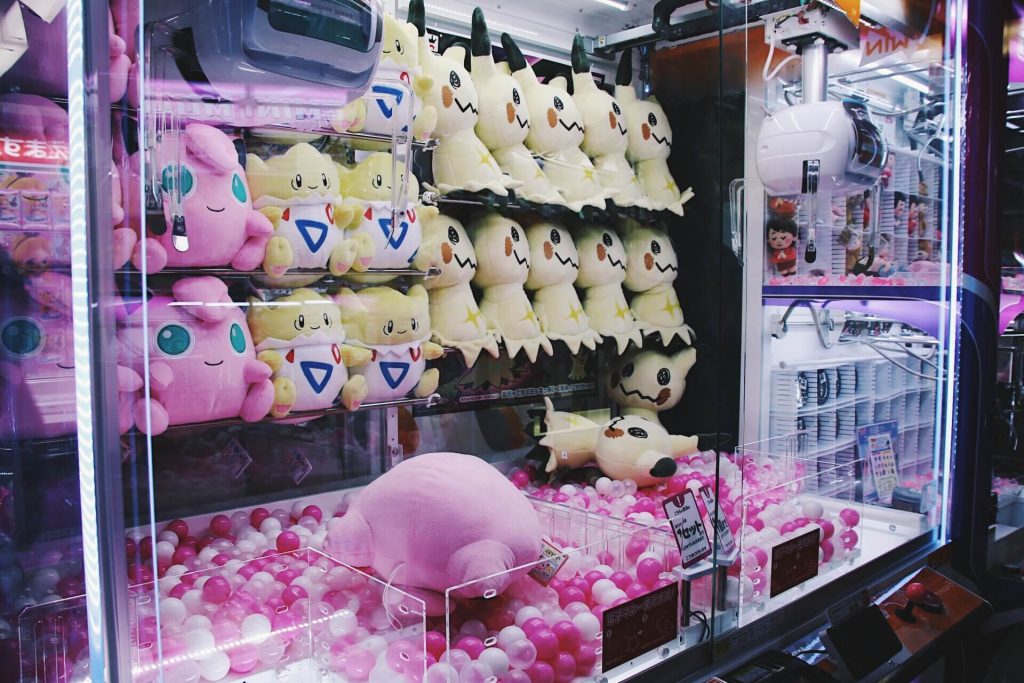
Get Your Free Japan Guide
Subscribe to our monthly newsletter and receive my FREE downloadable Japan Travel Guide . Including everything you need to know before visiting Japan!
You can unsubscribe anytime. For more details, review our Privacy Policy . (We promise not to spam!)
Almost there!
Thank you! Make sure to go to your inbox to confirm your newsletter subscription for your free Japan travel guide.
Day 2: Ikebukuro and Meiji Shrine
On day two of this six day Tokyo itinerary, we are going to explore Ikebukuro in the morning and head back towards Harajuku in the afternoon to visit Meiji Shrine. Ikebukuro is another one of Tokyo’s main city centres and is filled with shops and restaurants. It is also home to the Sunshine City Shopping centre, in which the Pokemon Mega Store is located. The Meiji Shrine, our afternoon plan, is located next to Harajuku. It is one of Japan’s most popular shrines to visit. Dedicated to Emperor Meiji and his wife, the Meiji Shrine stands beautifully and peacefully in the busy heart of Tokyo.
As we planned to spend the morning in Ikebukuro, we took the metro there in the morning. You can find a Family Mart right outside of the hotel in Shinjuku, where you can find some cheap but tasty breakfast items. We picked up a couple of bits there every morning as breakfast. This is much cheaper than having breakfast in your hotel and supermarket food is surprisingly tasty in Japan! Supermarkets like 7Eleven , Lawsons and Family Mart are a great way to save money while in Tokyo and not compromise on taste.

Explore Ikebukuro
Once we got to Ikebukuro station, we started exploring! This upcoming part of Tokyo is also known as Sunshine City. Shopping and entertainment are at heart and it really gives you that Tokyo-vibe you experienced in Shibuya on day one. Some shops you should definitely check out when in Ikebukuro:
- Bic Camera Ikebukur o (Electronics and tech) Opening hours: Mon-Sun 10 AM – 10 PM
- Loft (Cool household items and stationary) Opening hours: Mon-Sat 10 AM – 9 PM, Sun 10 AM – 8 PM
- Sun Drug (Japanese drugstore and cosmetics) Opening hours: Mon-Sun 10 AM – 10:45 PM
- Sunshine City Shopping Centre (Shopping centre filled with cool shops and restaurants) Opening hours: Shops open Mon-Sun 10 AM – 8 PM, restaurants are open Mon-Sun 11 AM – 10 PM
Visit Japan’s biggest Pokemon Centre
One of the main reasons we are spending the morning in Ikebukuro is the Pokemon Mega Store. This is the biggest Pokemon Centre in Japan! Once we arrived at Sunshine City shopping mall, we made our way to the second floor. This is where the Pokemon Mega Store is located. An absolute must-see for every fan of the gaming franchise!
Another fun thing to try when at the Pokemon Centre is to play the arcade game Ga-Olé . This arcade game that can be found at every Pokemon Centre and in a few arcades across Japan. In the game, you battle and catch Pokemon. Just like the regular Pokemon games. But if you do catch one, you get a physical cartridge with that exact Pokemon printed on it. You can then use that same cartridge to battle other Pokemon in the game. We had a lot of fun playing it! Especially because we visited the Pokemon Centre in Kyoto and Osaka, we were able to use the Pokemon we caught in our battles there.
TOKYO TIP: Make sure to walk to the back of the Pokemon Centre to find a wall filled with all the Pokemon in the franchise. A lot of people miss it because it is hidden a the back of the shop, but it’s a great photo opportunity.

You can find one of my favourite Japanese restaurant chains inside the Sunshine City shopping mall: CoCo Ichibanya . Obviously, Japanese cuisine has some of the most delicious dishes including sushi and ramen. But what most people don’t realise is that Japan does the best curries. CoCo Ichibanya is a great place to try them! (We totally didn’t end up eating at CoCo Curry four times during our first trip to Japan because we loved it so much…)
Ordering is super easy. You pick the amount of rice you’d like, the level of spice (personally, I’m very happy with a level 1) and add toppings. CoCo Curry only has one franchise store in Europe (London), and we went there just to relive the experience after returning from Japan. It’s just SO good!
CoCo Curry Ichibanya Opening Hours: Mon-Sun 11 AM – 10 PM

Meiji Shrine
In the afternoon, we head back to Harajuku station. You might have seen the iconic torii gate entrance of the Meiji Shrine on day one when visiting Harajuku. But today, it’s time to actually visit the famous shrine. From Harajuku Station, walking to the entrance only takes a couple of minutes.

This iconic shrine is dedicated to the spirits of Emperor Meiji and his wife. It was completed in 1920, eight years after his passing. After entering the temple grounds through the beautiful torii gate, you can enjoy a very serene walk through a beautiful forest which is made out of more than 100,000 trees. You almost forget you’re in one of the world’s busiest metropolitan cities! It’s so peaceful and quiet.
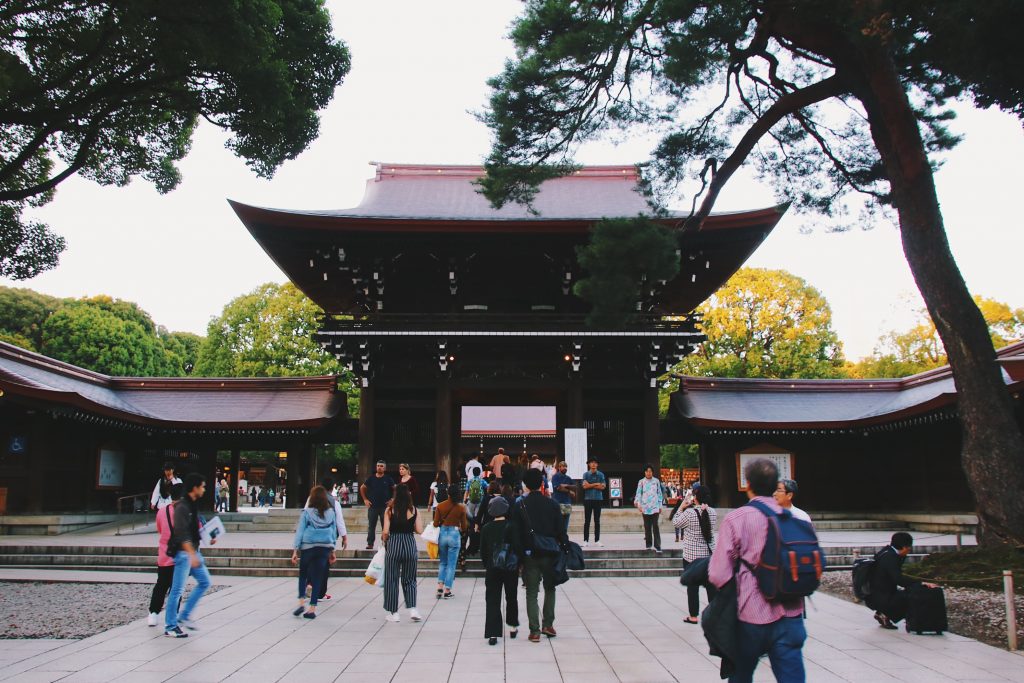
The shrine is open to visitors from dawn till dusk – make sure to check what time they close when you want to visit. We had to rush our visit a little because we arrived a bit later than planned! Especially during the darker months (October-March), the shrine closes a bit earlier.

Arriving at the main building of the Meiji Shrine, you might see tons of wooden plaques hung close together. These are called Ema plaques and are part of a special Shinto activity. You can buy one for ¥500, write down a wish or prayer and hang it with the others. The profits are used to maintain the shrine and its gardens.

After the Meiji Shrine closes, you can head back to Harajuku and grab some dinner. There are some great sushi and ramen places in Harajuku that are worth checking out. If you wanna avoid the pricy, more touristy places, it’s better to have a look in some of the quieter backstreets.
If you still have enough energy, Karaoke is the perfect way to end day two of this Tokyo itinerary. In the Harajuku area, there are many karaoke bars to choose from and it’s a really, really fun experience! You book a room for you and your travel company, order some drinks and snacks and sing your heart out. We were very lucky to have met up with a few friends that speak fluent Japanese, which made booking a karaoke room much easier.
Day 3: Asakusa and Akihabara
Day three of this six day Tokyo itinerary starts with a more traditional side of Tokyo. The Asakusa district lays in the north-east side of central Tokyo and is home to the popular Sensoji Temple. In the afternoon, we amplified Tokyo’s great contrast of the old and the new by visiting Akihabara (also known as Electric Town ). As a polar opposite of Asakusa, Akihabara is filled with skyscrapers and shops selling the latest electronics and merch to anime fans.
In the morning, we made our way to Asakusa to visit Sensoji Temple. From Asakusa station, you can walk to Sensoji Temple within 10-15 minutes. There are some little shops and eateries on the way to the shrine. If you haven’t had your breakfast yet, this is a great place to quickly grab something to eat.

Visit Sensoji Temple
Sensoji Temple (also known as Asakusa Kannon ) is the oldest Buddhist temple in the whole of Tokyo. It dates back to the year 645. Legend says that the temple has been build for the goddess of mercy, Kannon.
More than 30 million people visit the temple every year, so you can expect it to be a little busy. The temple grounds are gorgeous, you can easily enjoy walking around here for hours. Smaller temples and places to pray are spread across the map. Because the temple is popular by both tourists and locals, it’s recommended to not go on a weekend day ( like we did… ). The earlier you go, the quieter it will be. You can also visit the temple in the evening, that’s another way to avoid the huge crowds.
Opening hours: The temple grounds are open 24/7, whereas the main hall is open from 6 AM till 5 PM (from 6:30 AM in October to March). The temple is open every day of the year. Entree fee: It’s free to visit Sensoji Temple

One thing we tried was O-mikuji ( おみくじ). It’s a form of Japanese fortune telling. You can get any kind of fortune from “very fortunate” to “a great curse”. I bet you can guess how lucky I got….
Here is how it works. You pay ¥100 and shake the wooden box filled with sticks. After shaking, you remove one of the sticks. This stick has a number written on it. You then match the number with the drawers and receive your fortune. Even though I got the great curse, I’m still smiling 😉
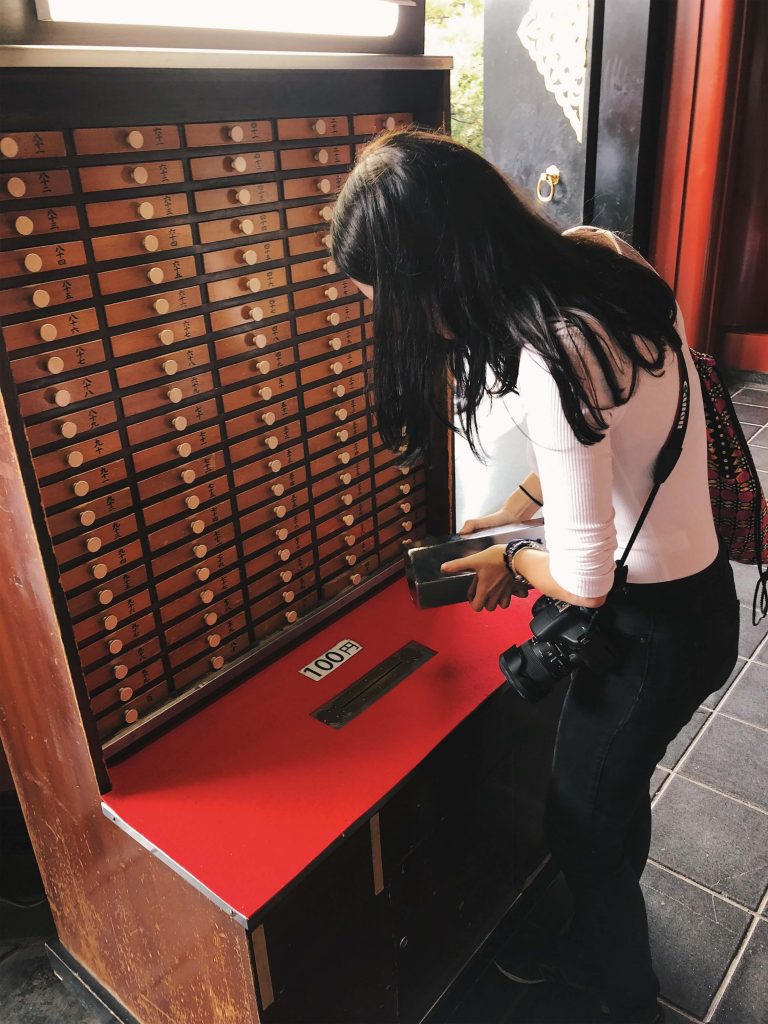
If you also receive a bad fortune, you can follow the tradition of tying the paper to one of the poles provided or a tree. The idea behind it is that the bad luck will stick to the poles or the tree instead of the person who drew it. Fingers crossed that actually worked. (Update: looking back now, I think the curse has followed me nonetheless!).

After visiting the temple, you can walk through Nakamise Street . This 200-meter long shopping street is located right outside Sensoji Temple. It’s the perfect place to find some souvenirs and snacks.

In the afternoon, it’s time to travel forward in time and visit Akihabara. Akihabara is also known as Electric Town . In this district, you can find everything electronic, anime and video game-related. It’s turned into a special kind of heaven for Japan’s diehard fans of manga, anime and other pop culture references – and man, it’s such a cool place to explore!
TIP: If possible, try to visit Akihabara on a Sunday. They close down the street for cars, which allows you to walk across the entire street and… you know… take some pictures for the gram 😉

Shopping and playing games in Akihabara
Akihabara turned into one of my favourite places in Tokyo. It’s basically video-game, electronics, and anime heaven. Even though I’m not big on anime, I love a good video game and the vibes reminded me of all the games I played and shows I watched as a kid. Akihabara has everything: game shops, electronic shops, anime figures and manga shops. Even if you’re not planning on spending any money, it’s fun to look at all the crazy stuff they sell. There are endless lists of things I could recommend in Akihabara, but here are a few things you should definitely check out:
- Retro game shopping in Retro Game Camp (and other retro game shops – for a full list, check out my full retro game shopping guide )
- Play in one of the many arcades
- Visit a Maid Cafe
- Shop in Yodobashi (basically a mall that sells EVERYTHING!)
- Shop in Don Quijote . There are many of these shops all across Japan, but the one in Akihabara is LARGE! A perfect place to find some affordable and weird souvenirs for friends and family.
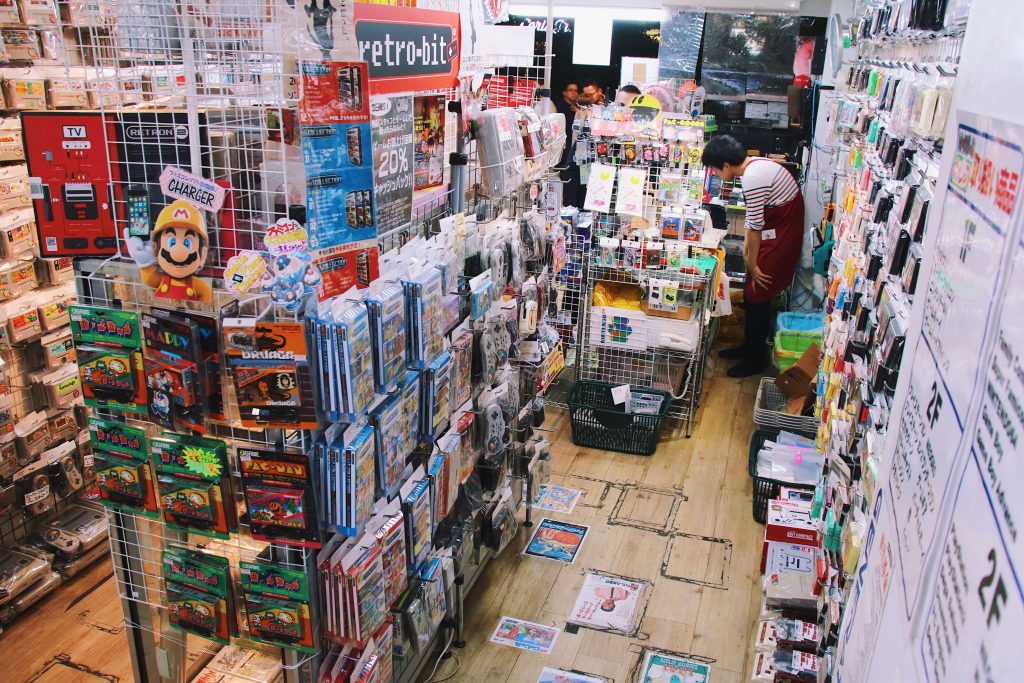
Akihabara lights up at night – so it’s worth staying around until the evening. Some of the main restaurants in this part of Tokyo can get quite expensive, so we ended up grabbing some cheap ramen near the train station. Akihabara also has a few crepe shops, and they’re just as tasty as the ones in Harajuku. If you missed out on trying one on the first day in Tokyo, I’d highly recommend giving it a go today. Also, make sure to try some of the arcades in Akihabara while you’re there in the evening. There are some great games to play!
Day 4: Ginza and Koto City
On the fourth day in Tokyo, we travelled down to Ginza and Koto City. It’s a little trip from Shinjuku, but because we’ve planned a full day on this side of the city, it’s more than worth it. On this day, we also plan on visiting the Teamlab Planets art exhibition and the Gundam Base.
Ginza is another famous shopping and entertainment hub in Tokyo. It’s on the expensive side, hosting upmarket brands and restaurants. Nevertheless, it’s a great place to wander around and ( window )shop. Ginza is quite upmarket and it’s not the cheapest place to shop. One square meter of land is worth over 10 million Japanese yen, making Ginza the most expensive part of Tokyo! Here are a few things to do and check out while in Ginza:
- Visit the Alice in Labyrinth restaurant. Themed restaurants and cafes are very popular in Japan. Many can be found all across Tokyo. This one, in particular, is very popular because of its amazing interior and dishes that are inspired by Alice in Wonderland.
- Shop until you drop in Chuo-dori, the most exclusive shopping paradise in Tokyo. (Or… window shop and save the oney for another trip to Japan).
- Watch a play in Kabukiza . There are daily shows where you can enjoy the traditional Japanese theatre.
- Escape the busy shopping street and relax in the Hamarikyu Gardens.

After having spent our morning in Ginza, we head over to Koto City. Its name translates to “ River East “. It may not be as popular as Shinjuku, Ginza or Shibuya, but that doesn’t mean it’s not worth a place on your itinerary! Let me show you why.
Visit Teamlab Planets/Borderless
Teamlab Planets or Teamlab Borderless is an art exhibition where you are part of the art – sounds pretty cool right? You move through water, climb a waterfall, get lost in an infinity room and bounce off massive bouncy balls.

I was really glad that nobody rushes us through the exhibition. Because you are given a specific time to enter the building, I expected it to be a timed experience. But luckily, we were able to walk through everything at our own pace. In total, we spent about 2 hours here.
Visit the Gundam Base
Next up: The Gundam Base! Gundam is an anime series that I was pretty unfamiliar with. Richard loved it as a kid, which is why we made sure to stop by. Even though I had never seen the show before, seeing the life-sized Gundam made it more than worth it.
TIP: Every hour, on the hour, the life-sized Gundam outside the shopping centre moves!

Inside the mall (hidden behind the massive robot), you can find the Gundam Base. Here you can pretty much any Gundam you want. Richard ended up buying four Gundams to put together after we arrived back home. It’s really cool to see how much creativity people put into these figures.

After visiting the Gundam Base, you can have a wander through the rest of the mall. There are some great shops located there – like the Hello Kitty Store and tons of cute fashion shops.

Day 5: Shinjuku, Minato, and Roppongi
On our fifth day in Tokyo, we take some time to properly explore Shinjuku. Even though we’ve obviously stayed in this part of Tokyo, we’ve not taken the time to see some of the main highlights of this exciting part of the city. In the afternoon, we move over to Minato and Roppongi – two more lively parts of Tokyo (including Tokyo Tower).
Home to the busiest train stations in the world, Shinjuku never sleeps. More than 2 million passengers use Shinjuku train station every single day. This Tokyo ward is home to many shops, offices and bars. From the skyscraper district, where you can find the Government Building, to Kabukicho – a popular part of Shinjuku for nightlife, nightclubs, love hotels and more…
Gyoen National Park
Even though Shinjuku is one of the busiest and most exciting parts of Tokyo, it also has a little green oasis where you can enjoy some peace and quiet. In this park, you can find a variety of French, English and Japanese gardens. As well as some beautiful pagodas, ponds, teahouses and little cafes where you can buy fresh ice cream and mochi. This park is a must visit when you are in Japan during cherry blossom season. But even in the other seasons, it’s a lovely little break from the business that is Tokyo.
Gyoen National Park opening times: 9 AM – 4:30 PM (Closed on Mondays) Entrance fee: 500 yen

You may have come across a few themes cafes/restaurants by now. Japan is FULL of them. Name a theme and there is probably some type of eatery out there that fits your wishes. Personally, I would recommend avoiding any animal cafes in Japan because there is a lot of evidence that shows these are very cruel to the animals that live there. Instead, why not try one of the other crazy themed restaurants. Need a recommendation? Check out the Robot Restaurant in Shinjuku .
This overload to your senses is one of the most unique Japanese experiences in this itinerary. It’s crazy! But really fun! While enjoying your meal, you can enjoy humans take the stage with… robots. Have you ever heard anything more anime? Do make sure you have a reservation if you want to visit the Robot Restaurants, it’s a very popular one!
In the Skyscraper District of Shinjuku, you can find the Metropolitan Government Building. This 243 meter tall building with two large towers is a popular tourist attraction due to its observation decks. At 202 meters high, you can enjoy a stunning view of the city for FREE. On a clear day, you can even see Mount Fuji from here!

Visit Zojoji Temple
Because there’s no station near Tokyo Tower, I’d recommend heading to Hamamatsuchō Station and walk from there. The walk to Tokyo Tower from Hamamatsuchō station has some pretty sights. My favourite has to be the Zojoji Temple. It feels so serene and peaceful at the temple and we really enjoyed feeling the calm after such a busy week in Japan’s busiest city.
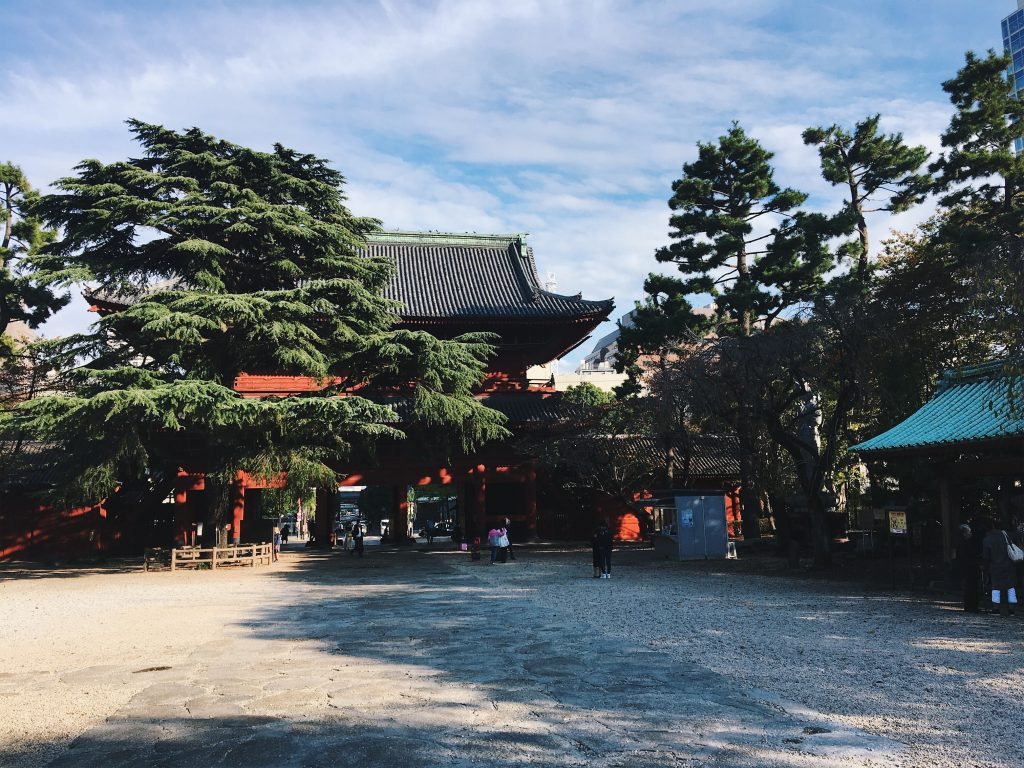
Afterwards, head towards Tokyo Tower. This iconic piece of Tokyo stands 333 meters tall, making it the second tallest structure of Japan. The Tokyo Skytree takes the top spot on that list 😉 The Tokyo Tower was inspired by the Eifel Tower, but is 13 meters taller.
You can visit the main deck at 150 meters for a small fee. This can be reached with an elevator or the stairs – both are paid. You can go even higher to the top deck at 250 meters. On a clear day, you can even catch a glimpse of Mount Fuji from there! It is, quite expensive though (in my opinion). You can find up-do-date ticket prices here . Personally, I think you can get a better view of the Tokyo Skytree. (That way, you can also see the iconic Tokyo Tower in your view!).
If you want to avoid paying the fee, I’d still recommend going inside. You can explore the first few levels for free. There are shops and restaurants, including the One Piece Tower indoor amusement park and One Piece shop. Perfect for those who enjoy the anime!

Roppongi is the most high-class district of Tokyo. With a vibrant nightlife scene and some of the best art museums of the city, it’s a pretty great spot to add to your itinerary. The name of this Tokyo ward literally translated to “six trees”.
Roppongi Art Triangle
As well as being a business hub, Roppongi is known for its art museums. Three of the best art museums in Tokyo are located within walking distance from each other in the Roppongi Art Triangle.
- Mori Art Museum
- The National Art Museum
- Suntory Museum of Art
The luxury of Roppongi doesn’t end at its art scene. You can also find one of the most stunning views across Tokyo in Roppongi Hills. The open-air observation deck on the Mori Tower allows you to see Tokyo from above (with the iconic Tokyo Tower right in the middle).
Go all the way to the top of the Mori Tower to find the “Tokyo City View”. For an admission of 1800 yen, you can enjoy the view from even higher.

Back to Shinjuku
And we end our 5th day in Tokyo back in Shinjuku. Only a few minutes from the train station, you can find Omoide Yokocho (also known as Memory Lane). Make sure to check this before going back to your hotel.
Omoide Yokocho is a narrow but extremely atmospheric alleyway in Shinjuku. Decorated with lanterns and seasonal decorations (cherry blossoms, autumn leaves…), it really shows the contrast between old and new in Tokyo. Especially with the big neon advertising boards luring in the background.
You can find many traditional eateries on this street too. Small yakitori stands where smoke is being blown into the street from their grills. Sit down, enjoy some freshly grilled chicken skewers and a cup of delicious sake. What a way to end this day!
Omoide Yokocho is open every day from 5PM till midnight.

Day 6: Day Trip From Tokyo
Even though you could easily spend a month in Tokyo and still find new places, taking a day trip from Tokyo is something I’d highly recommend. It’s a way to see more of the country and experience Japanese culture in a new way. Here are four options for day trips when spending six days in Tokyo.
Disney Sea Or Disneyland Tokyo
Make sure to buy tickets for Disney Sea or Disneyland Tokyo before you leave, this way you’ll be able to save some money. It also avoids any waiting time in the queues when arriving at the parks. Just like any other Disney park, Disney Sea is filled with rides, shops and amazing decor. Our favourite rides were:
- Journey to the centre of the Earth
- Raging Spirits
- Indiana Jones Adventure: Temple of the Skull
- Sindbad’s Storybook Voyage

Unfortunately, the day we visited Disney Sea was a rainy day! Make sure to keep an eye on when the shows and parades happen the day you’re visiting. You can find this in the daily schedule you receive when entering the park. Japan knows how to do their shows and the Fantasmic! end show was absolutely amazing – totally made up for all the rain!
Day trip to Hakone
Hakone is one of the most popular day trips from Tokyo, because of its beautiful scenery. It takes about 1 to 1,5 hours to get to Hakone from Tokyo. Calming onsens (Japanese hot springs), one of the most beautiful views of Mount Fuji and the Hakone shrine that looks out over Lake Ashi. Visiting Hakone for the day makes for a little escape from all the Tokyo chaos. Here are a few things you should definitely do/see when in Hakone:
- Hakone Shrine: Possibly the most famous attraction in Hakone is Hakone Shrine (pictured below). This large torii gate stands on the banks of Lake Ashi. Especially after having spent a few days in the busy metropolitan city of Tokyo, taking some time to enjoy the serene atmosphere of this shrine is a perfect way to unwind.
- Visit an onsen: Known for its many onsens, Hakone is the place to visit one yourself. These hot springs are very popular in Japan – by both tourists and locals alike – and make for a unique experience. In more traditional onsens, you have to be completely naked and genders are separated. If that’s not your thing, check out Yunessun Onsen. Here, you can keep on your bathing suit and they don’t separate men and women.
- Owakudani (Boiling Valley) : If you want to see the remains of an erupted volcano, you can do that in Hakone. By taking up a gondola towards the mountain summit, you can walk around the volcanic zone. Even though it’s been over 3000 years since this volcano erupted, you can still see the smoke. You can also buy a black egg here, which has been boiled in naturally boiling water. Legend says it will prolong your life.
You can find more information about how to get to Hakone from Tokyo, how to get around the city and what other things you can do there in this article by Japan Rail.
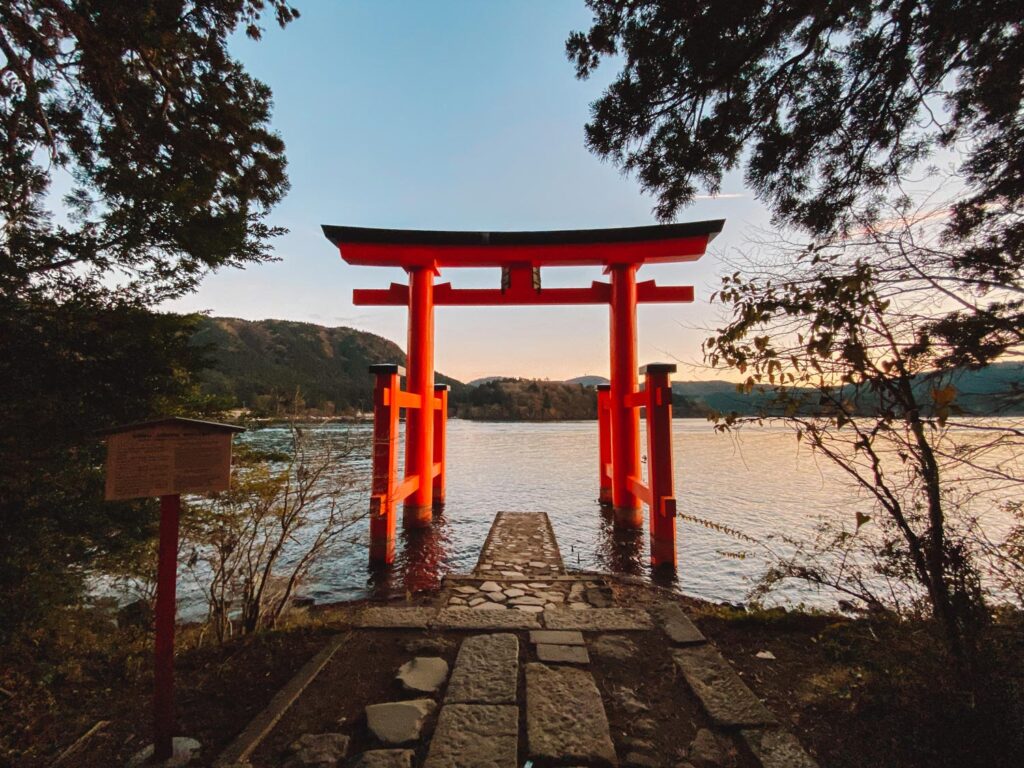
Day trip to Nikko
Another great option for a day trip from Tokyo is visiting Nikko. It takes about 2 hours to get there, but the beautiful scenery is more than worth it. With the Nikko Pass , you can save some money on your day trip to Nikko. This city is mainly known for its forests, waterfalls and nature hikes. If you want to visit Nikko for one day , make sure to add these to your to-do list:
- Rinnoji Temple: This UNESCO world heritage site was originally founded by the Buddhist monk. This monk brought Buddhism to the city in the 8th century.
- Toshogu Temple : This temple is most likely to be the most popular temple in Nikko. This resting place of Tokugawa Ieyasu is beautifully decorated and unlike any other temple in Japan.
- Shinkyo Bridge : A sacred bridge that acts as a gateway to the temples (pictures below). It’s an icon of Nikko.

Mount Fuji isn’t located too far from Tokyo, making this a great day trip when staying in Tokyo. Japan’s most famous and iconic volcano is often pictured when portraying Japan and turned into a must-see when you have enough time. This 3776 meter high volcano is also the tallest mountain in the whole of Japan. During the months of July- September, you can also choose to climb the mountain. But because this takes a good chunk of time, I would recommend booking a hotel in the vicinity.
If you’re not really the climbing kinda person (or you’re not visiting during the climbing season), you can still enjoy some of the great views of this stunning mountain. Because there are no direct trains to most of these viewing spots, I recommend booking a tour with a travel company . They will drive you there and make sure you get to see the best spots for photos and viewing. The advantage of booking a tour is that you don’t have to worry about finding the best spots yourself.

Tokyo Travel Tips
Now we’ve covered what to do when spending 6 days in Tokyo, let’s cover some tips on how to make your trip to Tokyo without any hassle. Please find some extra information about Tokyo, where to stay, how to get there and some cultural differences to keep in mind.
Where to stay in Tokyo?
Picking a hotel in Tokyo can seem a little daunting. The city is enormous, so where is the best place to stay? I’ve written a full guide on where to stay in Tokyo with my favourite hotels and areas.
We stayed in Shinjuku, right next to one of the metro stations. Shinjuku is a very exciting part of Tokyo – tons to do and it has a great nightlife scene. Because the metro was literally right outside the door, we could easily go to other parts of Tokyo without any hassle. The hotel we stayed in is called Hotel Sunroute Higashi Shinjuku.
During our time in Japan, we also stayed in Central Tokyo for a few nights. We stayed in the Belken Hotel Tokyo . The location is perfect, only a short walk from Tokyo Central Station and the room was very affordable. The only downside was that the room was incredibly small. Most hotel rooms in Japan aren’t huge, but the hotel in Shinjuku was a lot bigger and more comfortable – which makes sense when looking at the price difference. If you want to travel on a budget, I’d recommend the Belken Hotel Tokyo . The beds were perfectly fine, and so was the bathroom (even though it was on the small side). Plus, you probably won’t spend a lot of time in the hotel anyway.
How to get to Tokyo?
If you are flying to Tokyo, you most likely will arrive at either Narita Airport or Haneda Airport . Either airports have relatively easy access to the city centre, even though Haneda is located much closer to the centre.
How to get to Tokyo from Haneda airport?
Haneda Airport is located only 15 kilometres from the city centre. To get to Tokyo, you can either take the train, bus or get a taxi. The cheapest and fastest way is by taking the train. Taxis might be a little faster but are a lot more expensive.
After arriving, I’d recommend buying a Suica Card at the airport’s train station. This card is an electronic travel pass which can be topped up at any station in Japan. After buying it and putting some money on it, you are good to go!
The best way to get to Tokyo from Haneda Airport is by taking the Keikyu Line to Shinagawa Station, then change to the Yamanote Line to Tokyo Central. This takes about 30 minutes in total. You can check out this article that explains how to get to Tokyo from Haneda Airport via different routes.
If your flight arrives at Narita Airport, it’ll take a little longer to get to the city. This airport is located 60 kilometres away from Tokyo. Here are the two easiest ways to get to Tokyo from the airport:
- Use the JR Narita Express to get from the airport to Tokyo Station. This journey will cost 3000 yen and takes one hour. This journey is covered by the JR Pass , in case you are planning to use it for your time in Japan. Otherwise, I’d recommend getting a Suica Card at the train station or buying a single ticket. If you are unsure what the JR Pass entails, please check out my Japan Rail Pass Guide .
- On a budget and not using the JR pass? You can use the JR Sobu Line to get to Tokyo too. This will cost 1340 yen and will take an hour and a half.
How to get around Tokyo?
Tokyo is a large city and because this 6 day itinerary covers more than one district, you are going to use the public transport system available. It’s impossible to explore the city entirely on foot! Luckily, Tokyo has an amazing metro system that is very easy to use – even if you don’t speak Japanese.
It’s a good idea to get a Suica card . This electronic travel pass allows you to scan in and out of any train station in Japan and automatically takes the correct fee. You can top them up at any train station. This way, you save a lot of time and hassle having to buy individual tickets. You also save money, as the card takes the exact fee from your card every time you tap out.

Culture tips for Tokyo
Japanese culture and customs may differ quite a bit from what you’re used to at home. In order to avoid looking like a fool (or accidentally offending anybody), here are a few tips to keep in mind when in Tokyo.
- Don’t walk and eat at the same time: this is frowned upon in Japan. If you buy a snack, either stand still while eating or find a place to sit.
- Don’t eat on public transport (unless you’re on the Shinkansen): Eating on the metro or on the bus is also something that’s not done in Japan. The only exception is when you are travelling by bullet train.
- Don’t make phone calls on public transport: Another no-go is making phone calls while travelling on public transport. As many locals use this time to relax, think or sleep (especially on longer journeys), it’s very rude to be loud.
- Don’t tip at restaurants: While tipping is seen as a nice gesture in most other countries, it’s not something you should do in Japan. It’s actually seen as an insult – “You must not make enough money, so here is some extra”.
- Don’t play with your chopsticks: This is seen as bad table etiquette. Also, stay clear from putting your chopsticks up straight in your bowl of rice – in Japanese culture, this is only done at funerals.
- Do carry a plastic bag for trash: Even though Japanese streets are among the cleanest I have ever seen, there are NO trashcans anywhere. Most Japanese people keep their trash with them and throw it away at home. Make sure to pop a little plastic bag in your backpack to store trash if needed.

Tokyo Travel Essentials
Pocket wifi.
One of the best tips for Japan that I can give you is to get pocket wifi! This little device gives you access to the internet literally everywhere – it is an absolute lifesaver on a trip like this. We got ours from Japan Wireless (for 16 full days, we only paid £60).
Make sure to book your Japan Pocket Wifi before your trip. You can pick it up from the airport after arriving, and you drop it off at the airport again once you leave the country.
Plug adaptor
For those travelling from the UK, mainland Europe or North America, you will need an adaptor plug to charge any of your electronic devices. Personally, I use the one from Iblockcube. You can use this adapter wherever you go and use any type of plug (even comes with 4 USB hubs). I’d highly recommend getting one of these. Especially when travelling to Tokyo and you want to charge your camera, phone and pocket WiFi, you will need all the hubs you can get!
Suica Travel Card
Getting around Tokyo on public transport is a lot easier than I expected. All you need to do is get a Suica Card and you’re good to go. This card can be bought and topped up at any train station. Once bought, you tap in and out of stations when using the metro, train or tram. It automatically takes the correct amount of yen off. Super easy and it saves you so much time and money. If you’re travelling to other cities like Kyoto and Osaka, you might want to consider getting a Japan Rail Pass in order to save some money.
You can buy a Suica Card at the train station at the airport after arriving in Japan. Buying one is super easy and can be done at one of the ticket machines. There is an “ English ” button to guide you through the process without any hassle.
Even though Japan is known to be a very cash-based society, having an international currency card is a must. Rather than a credit card, you can top up a currency card whenever you want to. If you lose it, you don’t have to worry about it being linked to your bank account. I would recommend getting a card with Monzo (if you are a UK resident) or Transferwise. They use the daily exchange rate when taking out yen or paying in shops – meaning you get the best currency rates wherever you are.
Conclusion: 6 Days in Tokyo Itinerary
That concludes my 6 day Tokyo itinerary. I cannot wait to return to the city and explore it some more – I have the feeling you could spend weeks there and still find new places!

Nele (Nay-la) graduated from Manchester Metropolitan University with an English and Creative Writing Degree and has lived in the UK for nearly 10 years. She has had an interest in Japan and its culture for as long as she can remember. Since her first trip in 2018 surpassed all expectations, she has continued to return to Japan to explore more of all it has got to offer. You can read her full story here .
33 thoughts on “6 Day Tokyo Itinerary: The Tokyo Guide For First Time Visitors”
If I didn’t want to go to toyko before then I definitely do now! Everything looks amazing, and Im not going to lie the Pokémon mega store sounds like a dream in itself. Id literally end up buying everything x
Kayleigh zara 🥀 http://www.kayleighzaraa.com
Thank you Kayleigh, such a sweet comment! So glad you enjoyed the post 🙂 Haha, I definitely had to keep an eye on my purse when going to the Pokemon store – so much cute plushies!!
What an amazing post! So detailed and your photos are incredible! I’d loooooove to visit Tokyo one day.
Thank you Olivia, so glad you enjoyed the post. Hope you get to visit it one day, it’s such an amazing city <3
Japan is one of those places that is on my bucket list. I am fascinated by all the contrasts you can find in there – Tokyo is a perfect example. I have to admit crossing that road seems frightening! I always wonder when I think about visiting there whether it’s an overwhelming place. I loved reading this post and your pictures are amazing.
Thank you Madi! <3 Such a sweet comment 🙂 I really loved seeing the contrast in the city, from such old temples to the latest high-tech. Haha, I can see why you think it might be a bit scary - it's definitely super busy but when you cross it yourself, it doesn't feel as bad! I thought it felt really cool, actually ^^
Wish i had spent more time in Tokyo and hope to go back!
I hope so too, Roo! Miss it so much!
Oh my gosh this post is amazing! I love how detailed you’ve been and I have wanted to go to Tokyo for so long, there are definitely some places I’ve added to my list for Tokyo!
Love, Amie ❤ The Curvaceous Vegan
Thank you Amie, super glad you liked the post! If you need any help planning a trip to Japan, feel free to ask me anything! <3
Never noticed how bright and rich in colour Tokyo is till I read your post and saw all your pics! Looks like you’ve had an adventure-filled week! Also the pic of you sitting on the street with all that life around you is dope!
Akihabara is definitely a town I wanna visit as gaming was such a big deal in my childhood and it’d be nice to literally go to a place that’s heavily inspired. Since some of the biggest gaming consoles and PCs I played on were manufactured in Japan.
Johnny | Johnny’s Traventures https://johnnystraventures.com
Thank you Johnny, what a lovely comment to read! I’m so happy I was able to bring that across through my photos 🙂
Akihabara is THE place for you then, my friend! Such a cool part of Tokyo, especially if you like video games 🙂
The crepe looks good!
It was delicious!
You packed so much into your time! Your photos are amazing, and it sounds like you had an incredible time. I gotta say, all of that food looks delicious and has made me hungry haha. Cora | http://teapartyprincess.co.uk/
Hahaha, we tried to make the most of it! Thank you so much, it really was such a beautiful city to visit – I’d love to go back soon!
This is such a beautiful post, especially since Tokyo has been on my wishlist for the longest time and I am hoping to be there this Autumn. Your post will surely help me plan my days there. I love the pictures too
So glad you enjoyed the post! If you need any help with planning your Japan trip, feel free to message me 🙂
Love how detailed this itinerary is. Japan has to be my number one place I want to travel right now! Thanks for the well-rounded post!
Thank you for those kind words! Hope you get to visit Japan soon, it really is such an amazing country!
Loving this guide – Japan is next on my list. P.S that curry looks AMAZING. drooling.
IG: https://www.instagram.com/carrieproject/
Lovely detailed post Nele, we recently saw a lot of the same places on our trip, except Disney. We’ve just come back from our third Japan trip and miss it like crazy!
I am travelling with four kids….and have googled so many things about what to do in one week stay in Tokyo. Your detailed account is very helpful and very detailed. I am better prepared. Thanks again.
I really loved your detailed post about Tokyo. It was my daughter who provided me the link to it because I am really trying to convince my wife for a 7-day stay in that city. Since we will celebrate our 30th wedding anniversary next year in April, it might be the perfect timing to do so. We will surely need some more time to do the things you did and described so well. I cannot wait till the moment that the flight tickets come on sale! I think I will feel a kind of lost in this Tokyo world but I am sure I will be loving it.
One thing though: what is the best way to get from the closest airport to the city?
Hey! Thank you so much for your comment, super glad to hear you enjoyed the post. I think Tokyo would be fabulous for a 7-day stay with your wife. There is so much to do and see, and it really makes you appreciate the culture in Japan.
As for your question, I’d recommend flying to Haneda airport because it’s located close to the city. From Haneda, it’s really easy to take public transport (like the train or tram) and it takes you to the centre of Tokyo in about 30-40 minutes. Alternatively, you can take a taxi from there (it’ll just be a bit more expensive) – Hope that helps! 🙂
Hi. Very useful post. I’m planning on taking my two teenage kids to Tokyo soon. I’m sorry to ask the obvious question, but how much did the week there cost you, a rough ball-park figure, of course. Thanks.
Thanks so much James, really glad you enjoyed the post! I have a full budget breakdown of our trip here: https://thenavigatio.com/is-japan-expensive/ – hope that helps ^^
Wow that’s a great list ,comprehensive and so useful
Tokyo is one of my favourite places in the world! I just loved the contrast between the history and temples to the modern bustle and manga culture. Can’t believe I totally missed Ginza and Koto City, gives me a reason to go back I guess! My favourite area was Akihabara haha
Missing Japan so much after reading this article! I thoroughly enjoyed Tokyo during my trip a few years ago but didn’t manage to go to Nikko, which sounds really interesting. Also, the culture tips section is very useful, well done!
I have been twice to Tokyo and there are still a few things from your list I didn’t do! Thanks to you I know what to do next time I will go there!
I’m one of the few people in the world that has never really been interesting in traveling to Japan, but in recent years I’m getting more and more curious. I suppose Tokyo would be the first place I would visit once I go so this is super helpful!
Im so sad coz i was meant to be flying there in May! thanks for this article, im saving it for when i reschedule!
Leave a Comment Cancel reply
This site uses Akismet to reduce spam. Learn how your comment data is processed .
Must-Read Articles

50+ Best Things To Do In Japan

Is The Japan Rail Pass Worth it?

The Perfect Three Week Japan Itinerary
Japan Travel Tips Group

The Japan Travel Newsletter
Sign up to get inspired! Receive insider tips, special discounts and more to plan your perfect Japan trip.
You have successfully joined our subscriber list.
japan travel Blog
Tokyo Kyoto Osaka Hiroshima Hakone Kobe Nikko Nara Kyushu All Japan Content
Plan Your Trip
Best Things To Do Japan Rail Pass 2 Week Itinerary 3 Week Itinerary Accommodation Japanese Phrases
About The Navigatio Work With Us

Tokyo Travel Guide
Last Updated: June 3, 2024
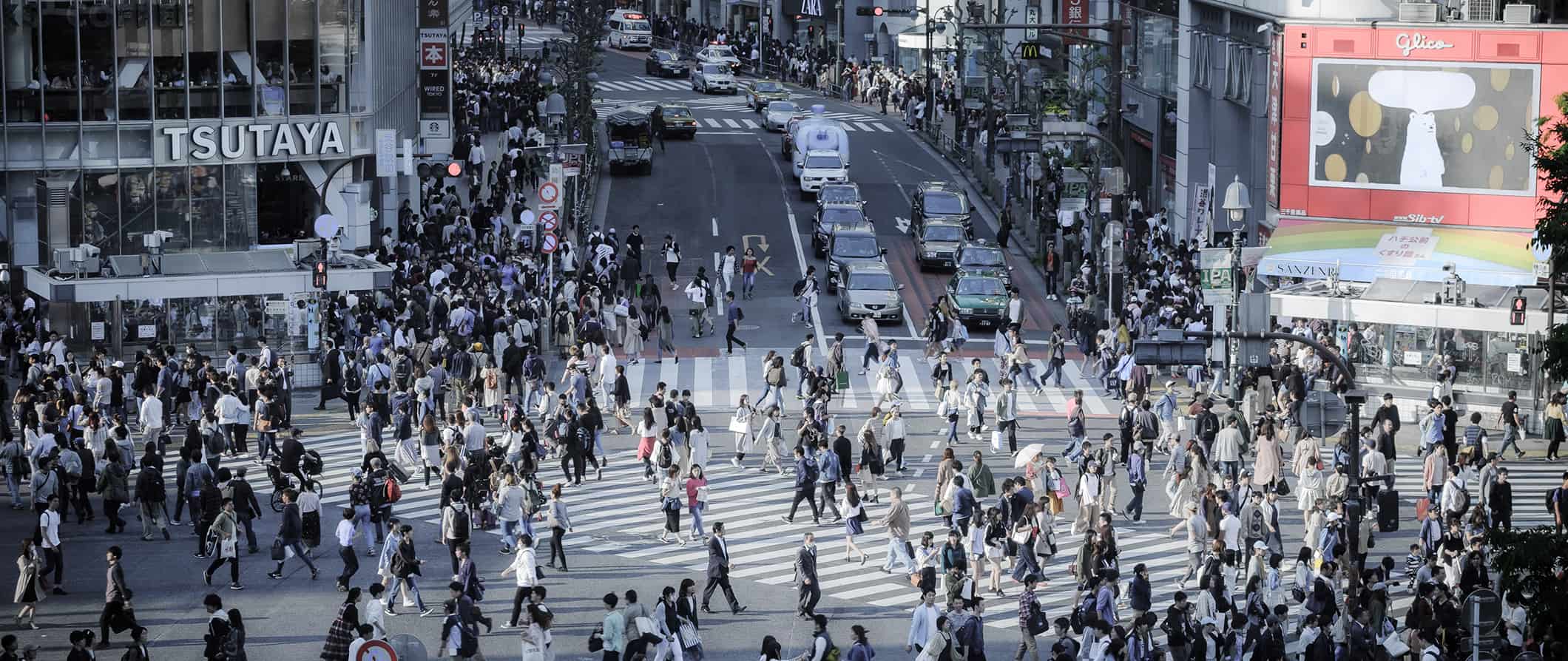
I love Tokyo. I think it is one of the most interesting cities in the world. I love that it’s a fast-paced, modern metropolis that still embraces its traditional roots. I love the orderly crowds when you expect chaos and the never-ending list of amazing things to see and do. I love the wild nightlife scene of the Japanese “salaryman” bars, cocktail bars, karaoke bars, nightclubs, and jazz venues.
Everyone falls in love with Tokyo. Seriously.
This travel guide to Tokyo can help you navigate on a budget, see the major sights, take part in its eclectic nightlife, and get off the beaten track a bit.
Table of Contents
- Things to See and Do
- Typical Costs
- Suggested Budget
- Money-Saving Tips
- Where to Stay
- How to Get Around
- How to Stay Safe
- Best Places to Book Your Trip
- Related Blogs on Tokyo
Top 5 Things to See and Do in Tokyo
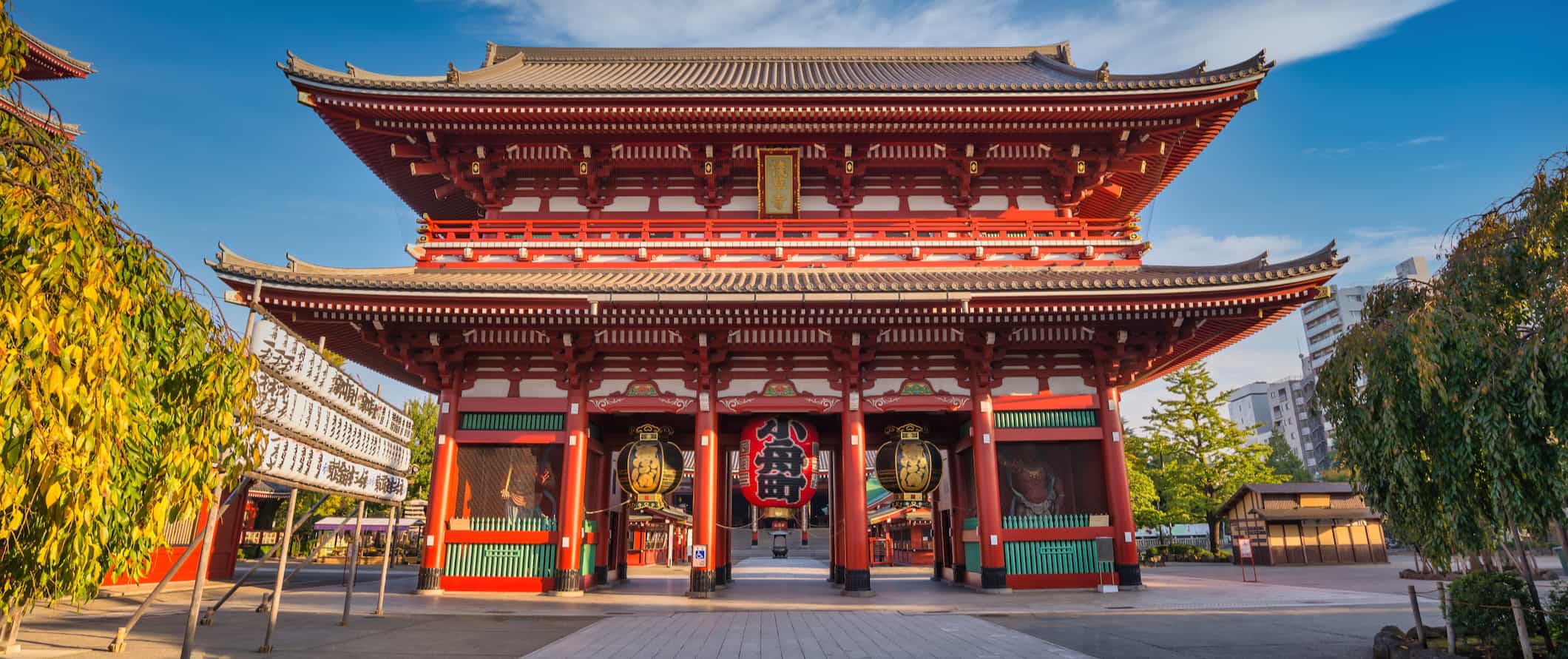
1. Admire Senso-ji Temple
The original Buddhist temple here was built in the seventh century. The current restored temple, just a quick walk from the Asakusa train station, is beautifully painted in rich reds and lives in an oasis of ancient structures nestled among modern skyscrapers, including a five-story pagoda and the famous Kaminarimon aka “Thunder Gate,” constructed in 941. There’s also a huge statue of Kannon, the goddess of mercy, inside the main hall, and other statues of ancient gods and goddesses, lanterns, and much more throughout the grounds, which are free to enter and open 24/7. The temple itself is open daily 6am–5pm (6:30am October-March). Get there early to avoid the crowds. On the weekends, you’ll want to get there by 8am.
2. Visit the Tokyo Tower
Built in 1957, this bright Eiffel Tower doppelgänger stands approximately 333 meters (1,092 feet) and is made entirely out of steel. It was Tokyo’s tallest structure until the Skytree was built in 2010 (where admission is 1,800 JPY when booked online ). You can pay to go up 250 meters (820 feet) to the top floor of the tower to take in expansive views of the city, though the main observation deck (150 meters or 492 feet up) offers views that are just as impressive. On a clear day, you can even see Mt. Fuji. Admission is 1,200 JPY for the main deck or 2,800 JPY to go to the top.
3. See the Tsukiji and Toyosu Fish Markets
Tsukiji Fish Market opened in 1935 and for decades was the most famous wholesale fish market in the world. In October 2018, it moved its wholesale (inner) market and fish auction to a new location in Toyosu and doubled in size, now including a fruit and vegetable section and rooftop garden.
If you want to experience the wholesale market auctions, head to Toyosu, where there are also endless fishmongers at rows upon rows of tables. However, you can no longer walk the floor unless on an organized tour, so it’s a little bit of a bland experience as otherwise you are just looking down from a viewing platform.
While the Tsukiji inner market moved, you can still visit the outer market, which has rows and rows of \ retail stalls, as well as tons of restaurants, and is still in its original spot. Here you can get a taste of what the market used to be like, while eating some incredible food and picking up souvenirs. Food and drink tours of the Tsukiji Outer Market are around 13,500 JPY.
Both markets are closed Sundays, holidays, and some Wednesdays. Some stalls at the outer market open as early as 5am, but the majority open around 6am. The place is really crowded by 9am, so get there as early as you can. It’s a great place to go if you wake up early from jet lag!
4. Admire the Imperial Palace
The Imperial Palace is the primary residence of the emperor of Japan. Built in the late 15th century as a feudal city-within-the-city and inhabited by various warrior clans, Edo Castle, as it was called through most of history, was renamed when the then-emperor moved Japan’s capital from Kyoto to Tokyo in 1869. While visitors aren’t permitted inside the palace and other buildings, the grounds are a peaceful place to wander. For access to limited areas of the grounds, book a free tour in advance on the Imperial Palace website.
5. Explore Ueno Park
Ueno Park is home to over a thousand cherry blossom trees as well as the Tokyo National Museum (admission is 1,000 JPY), both the oldest and largest art museum in Japan, with the world’s largest collection of art and artifacts from Asia. The park is also the site of Ueno Tosho-gu, a Shinto shrine for several shoguns (free, but it’s 500 JPY to visit the inner shrine); the National Museum of Nature and Science (630 JPY); the Tokyo Metropolitan Art Museum (admission varies by exhibition); the National Museum of Western Art (500 JPY); the Shitamachi Museum (300 JPY); and the Ueno Zoo (600 JPY), Japan’s oldest zoo, which has four hundred animal species. There are plenty of places to sit and relax or have a picnic. On weekends, you usually find some events or festivals here too.
Other Things to See and Do in Tokyo
1. watch a sumo match.
Ryogoku Kokugikan, Japan’s most famous sumo wrestling arena, hosts tournaments three times each year, in January, May, and September. The sumo wrestling that we see today dates back to the 17th century, though its origins far precede that. To this day, it’s one of the most popular traditions in the country. If you’re in town at the right time, this is a must-see.
Tickets sell out quickly so book online in advance. Prices vary but start around 3,200 JPY for arena seats. You can book a ticket online here (you’ll be accompanied by a guide too, so you can learn more about the tradition as it unfolds before your eyes). To learn more about the sport in in the off-season, book a tour of a sumo stable .
2. Take a walking tour
Walking tours are a great way to get the lay of the land while connecting with a local guide. I always go on one or two when I first arrive somewhere, as then I can get recommendations and tips for the rest of my trip.
Tokyo Localized offers several free walking tours, including a classic overview of the city, and walking tours of both the famed Harajuku and Shinjuku neighborhoods. If you’re willing to spend a bit on a paid tour (starting at 1,800 JPY), dive into Tokyo’s most important traditional districts on a Yanaka District tour or a Asakusa tour . Both of these areas have great historic significance for Tokyo.
3. Go on a day trip to Mount Fuji
Hakone is a picturesque mountain town located an hour outside of Tokyo. It is known for its stunning views of Mount Fuji, aka “Fuji-san,” one of Japan’s three holy mountains. It’s easy to go for the day and spend some time in the area and hike a bit of the mountain (weather permitting). Hakone, also famed for hotels with private onsen (hot springs), is a good place to spend a couple nights if you have the time. Be sure to get the Hakone Free Pass , which provides round-trip train travel from Tokyo’s Shinjuku Station and access to eight attractions at a bundled rate of 6,100 JPY.
4. See the Hachiko statue
This is a life-sized bronze statue of an Akita dog located outside Shibuya Station, the fourth-largest commuter station in the world (and Shibuya Crossing is the world’s busiest intersection). The legendary Hachiko would greet his owner there on his return from his daily commute, until the owner passed away at work in 1925. Hachiko visited the train station daily and waited for his owner until he also died in 1935. He is a national hero in Japan, and his story is well known, as it highlights virtues of loyalty and devotion, which are highly valued in Japanese culture. You can find Hachiko, unsurprisingly, at the Hachiko Exit.
5. Shop at Akihabara Electric Town
Akihabara, or “Akiba,” is a bustling district in central Tokyo known for its vibrant electronics, anime, manga, and gaming culture. You’ll find streets full of gadgets, anime merchandise, card games, and collectibles. Stop and play in one of the plethora of video game shops. This area is also where you’ll find the famous maid cafés, where servers dress up as maids and serve you food and drinks. The girls on the street are promoting the more hole-in-the-wall options, which are a lot more culturally fun than the big touristy ones. (They aren’t cheap, though, as you have to buy drinks packages and pay a fee, but it’s kitschy and fun.)
6. Wander Roppongi Hills
Roppongi Hills is one of Tokyo’s more upscale neighborhoods. The National Art Center is located here, featuring 12 galleries that showcase rotating exhibitions by contemporary artists (admission is free). One of Tokyo’s tallest buildings, Mori Tower, is also in Roppongi; it contains the hip Mori Art Museum, which features Japanese modern art (2,000 JPY admission), and Tokyo City View, a 52nd-floor vantage point of the endless concrete jungle (admission to the viewpoint is 2,000 JPY when booked online, with an additional 500 JPY for the rooftop Sky Deck). Additionally, the neighborhood is famous for high-end restaurants (including a lot of omakase sushi eateries), clothing stores, and cafés. It’s much more low-key and suburban than other parts of Tokyo.
7. Drink on Golden Gai
This district, lined with backstreet bars, may be touristy, but it’s one of the most fun in Tokyo. These zigzag alleys are filled with hole-in-the-wall bars serving cheap drinks. Each is unique, so it’s fun to pop in and out of them. It’s very touristy, but you’ll find a lot of Japanese people here too. It’s quite crowded on the weekends, so go early before the bars fill up. If you want a deep dive into the area, take a food tour . Arigato Tours runs an evening tour around Golden Gai and Omoide Yokocho in Shinjuku that will show you around and let you sample the best ramen and yakitori in the area.
8. Get on a suijo-bus
For centuries, one of the traditional ways to get around has always been via water bus. There are even floating restaurants, known as yakata-bune , as well as lunch and dinner cruises that you can book. Expect to pay at least 13,000 JPY for a cruise with a meal . Regular ferries vary greatly depending on the route and company, but generally range from 860 to 1,700 JPY.
9. Visit the Great Buddha
Make a day trip to the small city of Kamakura to see its 13-meter (43-foot) bronze statue of Buddha, built in 1252. The statue was initially constructed within Kotoku-in Temple, but that has since been washed away by several storms, so the statue now sits in the open air. Usually, you can even go inside it as well (there’s nothing to really see, but it’s neat to step inside a centuries-old work of art). Admission to enter the temple grounds is 300 JPY, while it’s 20 JPY to go inside the statue.
Kamakura is on the proposed list for UNESCO World Heritage Sites and is also home to important Zen temples and shrines of historical significance to Japan. The journey there takes around an hour and is free with a Japan Rail Pass .
10. Check out a sento
A sento is a traditional Japanese public bathhouse, typically separated by gender. While they were originally built to accommodate those that did not have such facilities at home, they are now a great place to go for some peace and relaxation. The Japanese are not shy, so you need to be comfortable with nudity. Many sento are traditional, but some modern “super sento” offer more luxe amenities, including massages, fitness facilities, and cafés. A budget-friendly sento costs around 500-700 JPY. If you have tattoos, you may not be allowed to enter (or you may have to cover them), so double-check your chosen facility’s policy before heading over.
11. Have fun at Tokyo Disneyland
I’m a sucker for Disney. You’ll find many of the same classic rides from Disney World here, like Splash Mountain, Big Thunder Mountain, The Haunted Mansion, and everyone’s favorite teacup ride, The Mad Tea Party. But Tokyo Disney has several unique attractions as well, like “Pooh’s Hunny Hunt” and “Journey to the Center of the Earth.” Ticket prices vary depending on the day and time, but full-day admission begins at 7,900 JPY for adults and 4,400-6,200 JPY for children, depending on their age. It’s best to book online in advance .
12. Have dinner with ninjas
For a unique dining experience, head to Ninja Tokyo (formerly Ninja Akasaka). It’s super fun! This ninja-themed restaurant is set in a medieval, Edo-era “village.” The wait staff are clothed in stereotypical, all-black “ninja” garb and trained in all sorts of ninjutsu magic tricks and simple illusions. You’ll order your meal off of old scrolls while being entertained by the skillful feats of your server. Prices range from 6,000 JPY for a six-course vegetarian dinner to 18,000 JPY for an eight-course dinner including premium Wagyu steak. You’ll definitely need to book this in advance.
13. Tour the Tokyo Metropolitan Teien Art Museum
Built in 1933, this beautiful Art Deco edifice was originally the official residence of Prince and Princess Asaka (who are a branch of the imperial family). Asaka founder Prince Yasahiku studied and lived in France from 1922 to 1925 and wanted to bring this architectural style to Japan, which explains the building’s unique design and decor. After various incarnations, including serving as the prime minister’s residence and a state guesthouse, this building eventually found its current purpose as a small museum in 1983 and is now home to rotating modern art exhibitions. Admission varies depending on the exhibition, while entrance to the garden is 200 JPY.
14. Try superhero go-karting
Want to speed around the busy streets of Tokyo in a go-kart while wearing a costume? Of course you do! There are a number of companies that let you dress up as Mario or Luigi, a Marvel superhero, or Pikachu and race through the city in go-karts (just like in the Mario Kart video games). There are both private and group tours , with multiple departure locations, that cruise through different neighborhoods. Expect to spend about 1-2 hours and 10,000-18,000 JPY per person, depending on the options you choose. An international driving permit is required. This activity books out far in advance.
15. Visit one of the many quirky cafés in town
Tokyo has all sorts of over-the-top, weird, and wonderfully themed cafés. These include monster cafés, vampire cafés, owl cafés, cat cafés, dog cafés, religious-themed cafés, and much more! If you’re seeking a unique dining experience that highlights Japan’s kawaii (cute) side, research which such cafés are near you. They’re all around, so you never have to go far to find one.
16. Try a food tour
Japanese cuisine is world-renowned, featuring delicate ingredients and flavors that vary greatly both seasonally and regionally. Arigato Travel offers a ton of different food tours in Tokyo. You can either sample a bit of everything on its Flavors of Japan Tour (on which you visit seven shops, each specializing in a different regional cuisine), or dive deep into one dish, such as on the Ultimate Ramen Tasting Tour. I really like the Shimbasa tour, as it takes you to a part of town most people just pass through. Tours start at 22,000 JPY.
17. Take a cooking class
In addition to food tours, cooking classes are a great way to learn something new and connect with local chefs. There are a lot of options to choose from, from sushi-making workshops to a wagyu cooking class .
18. Experience a tea ceremony
Learn about the highly specific and meditative ways to prepare and serve tea, and then enjoy it, accompanied by traditional sweets. Maikoya in Shinjuku is one of the best places to do it in Tokyo; ceremonies cost 2,700 JPY without a kimono or 5,400 JPY with one.
19. Immerse yourself at teamLab Planets TOKYO
This digital art installation is a multisensory and immersive experience where you become part of the artwork, walking barefoot through the four exhibition spaces and gardens as you interact with the installations’ elements in unique ways. teamLab is really popular and generally sells out at least a few days in advance, so I recommend getting your tickets online ahead of time .
20. Go museum-hopping
Beyond the aforementioned classic museums, Tokyo has plenty of fascinating ones dedicated to specific aspects of Japanese culture and history. For anime fans, there’s the whimsical Ghibli Museum, designed by famed director Hayao Miyazaki and dedicated to the animated films from Studio Ghibli (admission is 1,000 JPY, advance reservations required). For photography lovers, there’s the Tokyo Photographic Art Museum, which has both permanent exhibitions on Japanese photographers as well as temporary international exhibitions (admission varies depending on the exhibit). And for history buffs, the Fukagawa Edo Museum features a full-scale replica of a 19th-century neighborhood, with 11 traditional buildings that you can wander around, asking questions of the helpful volunteer docents (admission is 400 JPY).
And that’s just scratching the surface — there are many, many more! If you plan to visit a few museums, it’s worth it to get the Tokyo Museum Grutto Pass (2,500 JPY for admission to 101 museums and other attractions).
For information on other cities in Japan, check out these guides:
- Hiroshima Travel Guide
- Kyoto Travel Guide
Tokyo Travel Costs
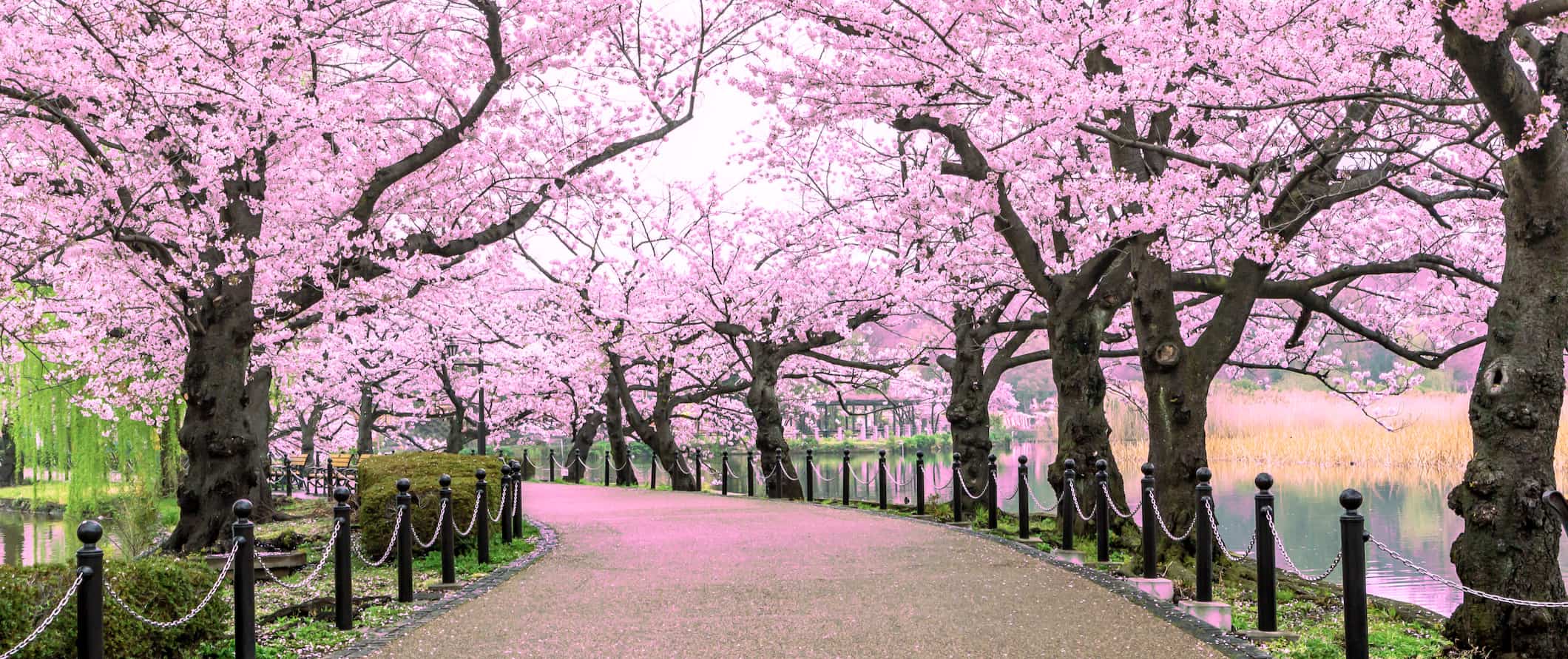
Hostels – Most hostels in Tokyo cost around 4,000-7,500 JPY per night for a bed in a dorm of any size. For a private room with a twin or double bed, expect to pay 10,500-17,500 JPY per night. Prices are the same year-round.
Free Wi-Fi, private lockers, and self-catering facilities are standard in most hostels. Only a few include free breakfast, so research and book in advance if this is important to you.
Budget hotels – If you’re looking for a budget hotel, expect to pay at least 10,000 JPY for a double bed at a two-star location. For a mid-range, three-star hotel, prices start at 12,500 JPY per night, while capsule hotels start at 6,500 JPY for a tiny pod that is essentially just a bed. If you want to stay in a Western chain (think Hilton), expect to spend at least 20,000 JPY or more a night, depending on the brand.
Airbnb is tightly regulated in Japan. It is hotel rooms and guesthouses rather than people’s homes. And prices aren’t that much cheaper than hotels: private apartments or homes on Airbnb usually start around 10,000-15,000 JPY per night. Private rooms aren’t very common and only slightly cheaper, at 7,500 JPY per night.
Food – Japanese cuisine is made up of internationally recognizable dishes, including sushi and sashimi, tempura, gyoza, and miso soup, as well as various noodle-, beef-, and seafood-centric courses. Plus, there’s izakaya (small plates), yakitori (grilled food), curry bowls, BBQ, and so much more. One of the best things about visiting Japan is the food.
There are tons of cheap food options in Tokyo. Soba, curry, and donburi (bowls of meat and rice) cost 400-700 JPY. Ramen costs around 1,200-1,500 JPY. Fast food (think McDonald’s or KFC) is around 750 JPY for a combo meal. Kaitenzushi , or conveyor belt sushi, costs 150-700 JPY per piece.
You can also find plenty of inexpensive meals and prepackaged items at 7-Eleven, Family Mart, or Lawson. Prepackaged meals of noodles, rice balls, tofu, and sushi are all available for 300-500 JPY, making for cheap lunches. (Supermarkets have many meal sets at similar prices too.) The food is actually really good (even the locals eat them all the time), so if you want a quick, cheap meal, don’t be afraid about getting food here.
Inexpensive lunch spots cost around 1,500 JPY. Mid-range restaurants (think three courses, big dinner type of places) cost around 3,000 JPY per person. If you want to splurge, Tokyo is the perfect place to do it, with the highest concentration of Michelin-starred restaurants in the world. Meals at these restaurants cost between 10,000-30,000 JPY. You can also find some all you can eat BBQ spots throughout the city for 4,000-7,000 Yen. (My favorite is Bebu-Ya in Shibuya.)
A beer costs around 600-800 JPY, a glass of wine is 1,000 JPY and up, and cocktails start at 800-1,200 JPY. At the higher end cocktail bars, you’ll pay between 1,600-1,800 Yen per cocktail. A latte is 600 JPY, while a bottle of water is 100-130 JPY. Tokyo also has a lot of all you can drink places that are between 4,000-5,000 Yen. You’ll find a lot of them in the Shibuya area.
For a list of my favorite places to eat in Tokyo, check out this blog post .
Buying groceries costs 5,000-6,500 JPY per week for basic staples like rice, seasonal vegetables, and some fish.
Backpacking Tokyo Suggested Budgets
If you’re backpacking in Tokyo, budget 16,000 JPY per day. On that budget, you’d staying in a hostel dorm room, buying a rail pass, eating relatively inexpensive local food like ramen or donburi with the occasional nice meal, visiting a few paid attractions, and doing a couple of days tours.
On a midrange budget of 29,500 JPY per day, you can stay in a private Airbnb or hostel room, eat out at some budget restaurants, indulge in some drinks, do some paid activities like visiting a quirky café or going go-karting, and rent a bike for a day or take the occasional taxi.
On a “luxury” budget of 80,000 JPY per day or more, you can stay in traditional Japanese accommodations or hotels, dine in nicer restaurants, enjoy drinks as often as you want, go on paid tours, and take more taxis. This is just the ground floor for luxury though. The sky is the limit!
You can use the chart below to get some idea of how much you need to budget daily, depending on your travel style. Keep in mind that these are daily averages — some days you’ll spend more, some days you’ll spend less (you might spend less every day). We just want to give you a general idea of how to make your budget. Prices are in JPY.
Tokyo Travel Guide: Money-Saving Tips
While Tokyo is one of the most expensive cities in the world, there are still plenty of ways to reduce your costs while visiting. There are lots of free activities, inexpensive dining options, and even cheaper drinks if you know where to look. Here are some ways to save money:
- Skip the taxis – Since cabs can be expensive (they have a 475 JPY starting fare), use public transportation to save money. Tokyo’s Metro runs until midnight, with routes throughout the city, while JR East shuts down at 1:20am. If you can be home before then, you’ll save a ton by avoiding taxis.
- Shop at the 100-yen stores – There are many 100-yen shops (like dollar stores) where you can grab premade meals, groceries, water, toiletries, and household items. This is where you should purchase necessities, allowing you to eat and shop on a budget. Just ask your hostel or hotel where the nearest “Hyaku En” shop is located.
- Eat at 7-Eleven – 7-Eleven, Family Mart, and other convenience stores sell a variety of meal sets for under 500 JPY, which can make for a cheap lunch option. Additionally, supermarkets sell these at similar prices. You can also find a lot of cheap meals (such as curry, ramen, and donburi) at the major bus or train stations. Locals regularly eat these, so don’t be shy!
- Get a transportation pass or prepaid card – Chances are you’ll be using a lot of public transportation to get around. Be sure to get a transit day pass or prepaid card. There are a variety of passes available, since there are many subway and railway companies operating various lines. One-day passes range from 600 to 1,600 JPY.
- Get a Tokyo Museum Grutto Pass – If you plan on visiting a lot of museums, it’s worth it to get this pass, as it’s only 2,500 JPY and gives you admission to 101 museums and other attractions. It’s available as a digital ticket too, which streamlines getting into each museum.
- Stay with a local – Using sites like Couchsurfing that connect you with hosts not only gets you a free place to stay but provides you with the opportunity to learn about local life. Just make inquiries far in advance — the response rate in Japan isn’t great. Try requesting accommodation with expats, as they are generally more active on the platform.
- Work for your room – Certain hostels in Japan let you work for your room. A typical arrangement may involve spending a few hours in the morning cleaning in exchange for free accommodation. Inquire in advance to see if any hostels offer this option for your target dates.
- Sleep in an internet or manga café – These 24-hour cafés are host to late-night gamers, partiers, and businessmen who didn’t make it home after a night out. They rent by the hour, so if you just need to kill some time but don’t want to splurge on a hostel or hotel, consider a café. Some offer beds, though most just have comfortable chairs. Food and snacks are generally included in the price. Rates can be as low as 1,500 JPY per night.
- Buy food at night – After 8pm, many supermarkets discount their fresh foods. If you take advantage of this evening special, you can save up to 50% on the majority of your fresh food purchases.
- Stay at a capsule hotel – If you’re on a tight budget, stay at a capsule hotel. They are a little cheaper than hostels and can help you pinch pennies. Just don’t expect anything fancy!
- Bring a water bottle – The tap water here is safe to drink, so bring a reusable water bottle to save money and reduce your plastic use. LifeStraw makes reusable bottles with a built-in filter so you always know your water is clean and safe.
Where to Stay in Tokyo
Tokyo has lots of hostels, and they’re all comfortable, clean, and social. Here are some of my recommended places to stay:
- Hostel Bedgasm
- K’s House
- Unplan Kagurazaka
For more suggestions, check out my list of the best hostels in Tokyo !
How to Get Around Tokyo
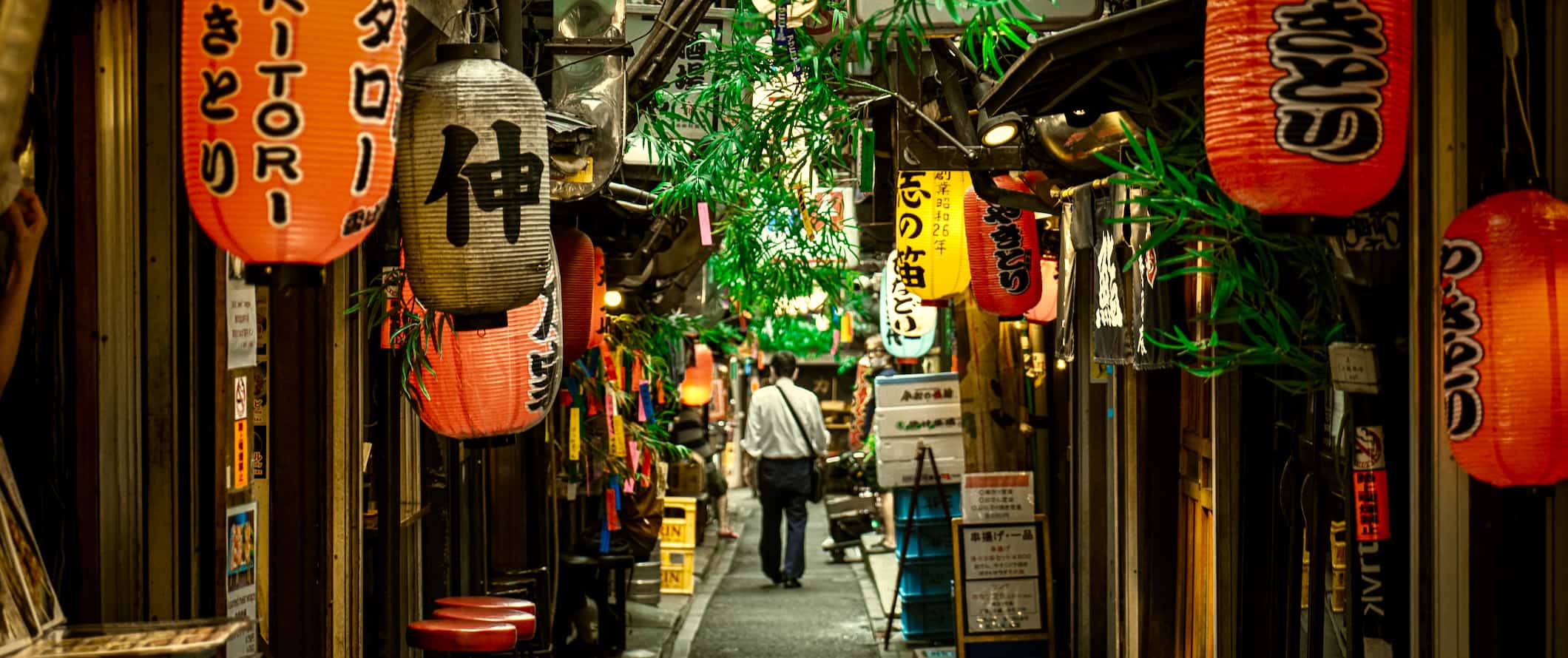
Public transportation – Buses are widely available in Tokyo, though you can usually get by without them, because the subway and train systems are comprehensive. If you do need to take the bus, fares are around 210 JPY for adults and 110 JPY for kids. Toei is the main bus company providing service. A single-day bus pass for Toei lines is 700 JPY (available for purchase directly from the driver). Buses run approximately 6am-10pm.
The metro and Japanese Rail (“JR”) systems throughout Tokyo are the most efficient in the world. They ferry almost nine million riders daily and are known for being extremely punctual. The metro system is made up of 13 different lines, with single-ride tickets starting at 170 JPY (165 JPY with a PASMO or Suica card).
Adults can purchase a 24-hour pass for 800 JPY, a 48-hour pass for 1,200 JPY, and a 72-hour pass for 1,500 JPY, with half-price passes for children. These work on all Tokyo metro and Toei subway lines. JR lines, however, are excluded and tickets for those must be purchased separately.
You can also use a prepaid and rechargeable PASMO passport card (for use on the subway, rail, and bus) or Suica card (for use on JR East lines). Mobile apps for both are available for iPhones and Androids, though the apps are not always compatible with international smartphones. While these cards don’t offer discounted fares, they streamline using public transportation, as you don’t have to fumble with cash every time you ride. These are a great option if you’re not going to make use of an unlimited daily pass. Just keep in mind that you can’t get any of the money back that you put on the card, so load only as much as you need.
Metro trains are available 5am-12am, with women-only cars for added security and safety. Things get busy at rush hour (7:30am-9:30am and 5:30pm-7:30pm on weekdays), so avoid those times if you are able to.
There are also five Metropolitan JR lines in Tokyo (Yamanote, Chuo, Keihin-Tohoku, Sobu, and Saikyo), so if you have a Japan Rail Pass , you can utilize these lines at no additional cost.
Taxi – Taxis in Tokyo aren’t cheap, so I’d avoid them if you can. Fares start at 475 JPY and go up by 415 JPY per kilometer. Skip them!
Ridesharing – Ridesharing in Tokyo isn’t any cheaper than taxis, so don’t expect any savings here. DiDi is the go-to ridesharing app in Tokyo; its prices are generally on par with (or higher than) the JapanTaxi app or Uber.
Bicycle – Tokyo is relatively safe for cyclists. There are many bike lanes, and many locals commute via bicycle. There are both bike-share and bike rental options. For a full-day rental or 24-hour bike share, expect to pay 1,000-1,600 JPY, though pricing varies greatly. Hourly rentals may be found for 200-300 JPY, if you prefer a short-term rental. Often, rental companies charge an additional fee for bike helmets and may require a deposit.
When to Go to Tokyo
The most popular time to visit Tokyo is during the spring or fall, when, respectively, the cherry blossoms come out or the leaves change color and the temperature is cooler.
Temperatures in June-August hover around 32°C (89°F) and it is very humid. It’s not my favorite time to go. The air is very stuffy, and it’s super hot.
Personally, I recommend the shoulder seasons as the best times to visit Tokyo. April-May and October-November see cooler temperatures and better air. Late March through early April is cherry blossom season, so expect massive crowds everywhere.
While winter in Tokyo is cold, it is not unbearable. Temperatures usually sit around 10°C (50°F) during the day and drop to around 2°C (36°F) at night. The city is much quieter during this time as well. Snow isn’t common and, when it does fall, it usually melts within a day or two.
How to Stay Safe in Tokyo
Japan is one of the safest countries in the world. Even in Tokyo, home to 10 million people, there’s virtually zero chance you’re going to get robbed, scammed, or hurt. In fact, Tokyo is consistently ranked as one of the safest cities in the world.
Scams here are virtually nonexistent, but if you’re worried about getting ripped off, you can read about common travel scams to avoid .
Your main risk here is from Mother Nature. Earthquakes and typhoons are common, so make note of the exits when you arrive at your accommodation. Download offline maps to your phone, as well, in the event you may need to navigate during an emergency.
While exploring, note that Japan does not issue building addresses in the order we are used to, so it is easy to get turned around or lost. Also, Japanese citizens possess significantly less English-language fluency than you may have encountered in prior travels, with less than 10% being fluent. Make sure you have an offline map and language app just to be safe.
Solo female travelers should generally feel safe here; however, the standard precautions apply (never leave your drink unattended at the bar, never walk home alone intoxicated, etc.). As a solo female traveler, you may have to watch out for occasional lewd behavior. Some have reported inappropriate behavior, such as men asking personal questions or catcalling. Groping has been reported on the cramped subways. Many train lines have “women-only” cars during rush hour (you’ll see pink signs directing women on where to board), so you can use those if you feel the need.
Japan’s emergency number is 110. For nonemergency assistance, you can call the Japan Helpline at 0570-000-911.
The most important piece of advice I can offer is to purchase good travel insurance. Travel insurance protects you against illness, injury, theft, and cancelations. It’s comprehensive protection in case anything goes wrong. I never go on a trip without it, and I’ve had to use it many times in the past. You can use the widget below to find the policy right for you:
Tokyo Travel Guide: The Best Booking Resources
These are my favorite companies to use when I travel. They consistently have the best deals, offer world-class customer service and great value, and overall, are better than their competitors. They are the companies I use the most and are always the starting point in my search for travel deals.
- Skyscanner – Skyscanner is my favorite flight search engine. They search small websites and budget airlines that larger search sites tend to miss. They are hands down the number one place to start.
- Hostelworld – This is the best hostel accommodation site out there with the largest inventory, best search interface, and widest availability.
- Agoda – Other than Hostelworld, Agoda is the best hotel accommodation site for Asia.
- Booking.com – The best all around booking site that constantly provides the cheapest and lowest rates. They have the widest selection of budget accommodation. In all my tests, they’ve always had the cheapest rates out of all the booking websites.
- Get Your Guide – Get Your Guide is a huge online marketplace for tours and excursions. They have tons of tour options available in cities all around the world, including everything from cooking classes, walking tours, street art lessons, and more!
- SafetyWing – Safety Wing offers convenient and affordable plans tailored to digital nomads and long-term travelers. They have cheap monthly plans, great customer service, and an easy-to-use claims process that makes it perfect for those on the road.
- LifeStraw – My go-to company for reusable water bottles with built-in filters so you can ensure your drinking water is always clean and safe.
- Unbound Merino – They make lightweight, durable, easy-to-clean travel clothing.
- Japan Rail Pass – This is a flexible transportation pass used for navigating Japan. Similar to the Eurail pass in Europe, it turns expensive bullet trains into budget-friendly modes of transportation. You honestly can’t visit Japan without one.
Tokyo Travel Guide: Related Articles
Want more info? Check out all the articles I’ve written on backpacking/traveling in Japan and continue planning your trip:
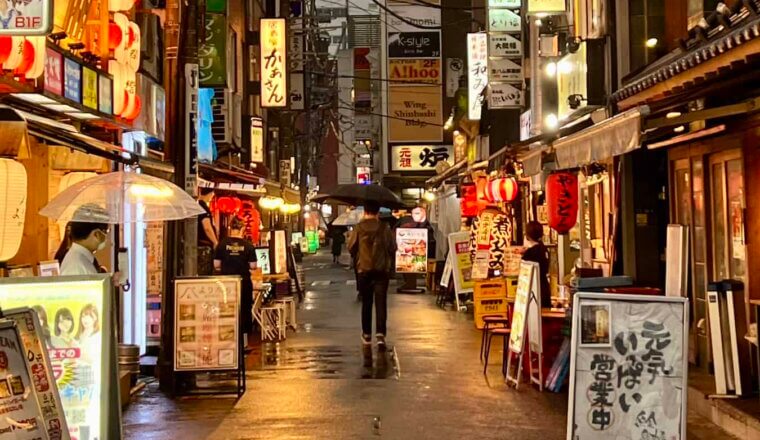
How to Spend Your Time in Tokyo: A Suggested Itinerary
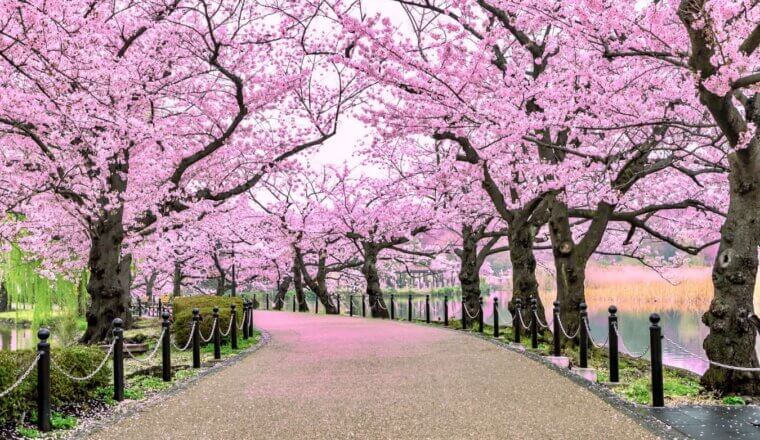
The Perfect 7-Day Japan Itinerary for First-Time Visitors
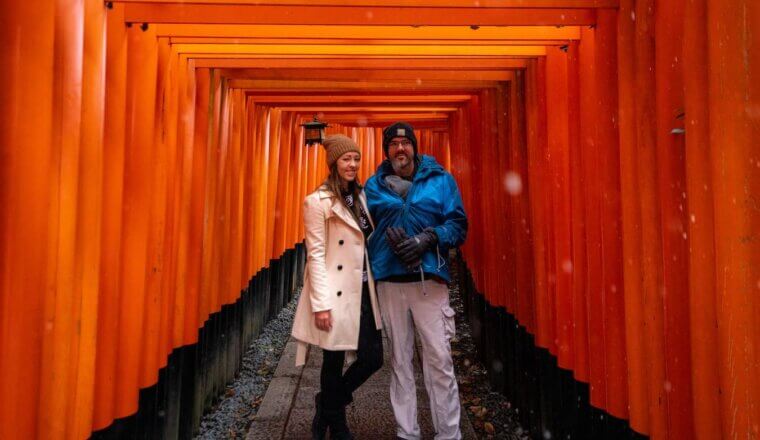
How to Travel Japan with a Baby
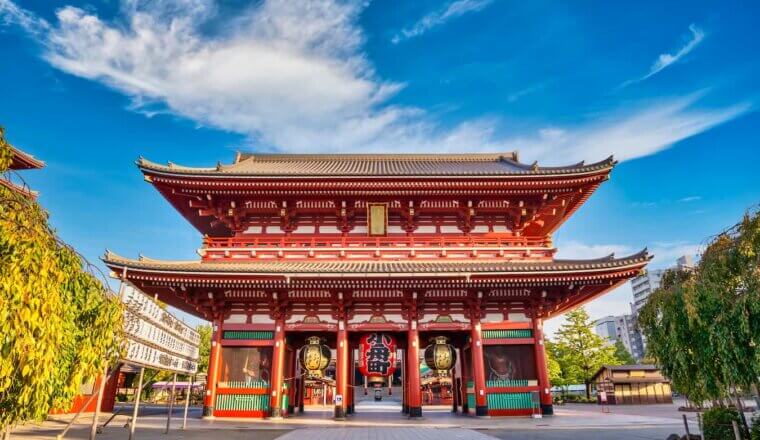
Where to Stay in Tokyo: The Best Neighborhoods for Your Visit
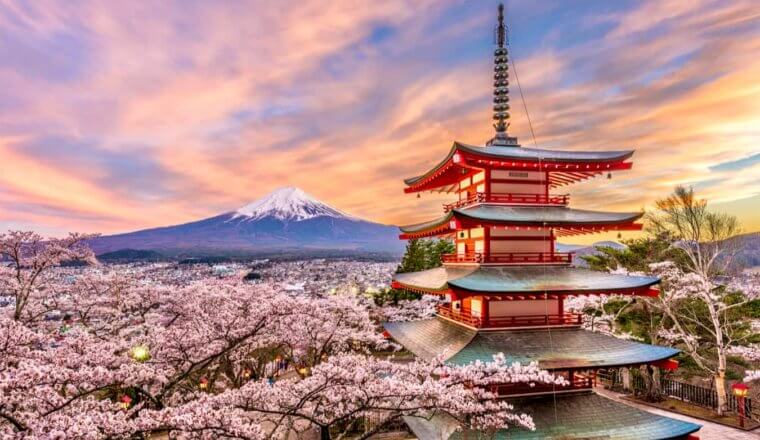
The Ultimate Japan Itinerary for First-Timers: From 1 to 3 Weeks
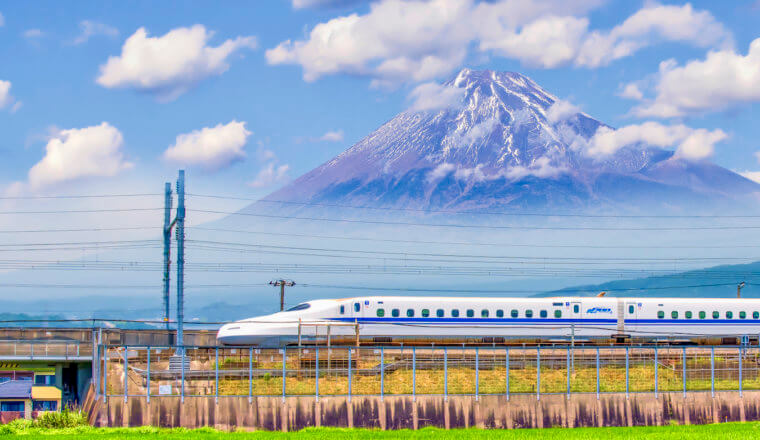
A Complete Guide to the Japan Rail Pass
Get your free travel starter kit.
Enter your email and get planning cheatsheets including a step by step checklist, packing list, tips cheat sheet, and more so you can plan like a pro!

- Where To Stay
- Transportation
- Booking Resources
- Related Blogs

9 New Attractions in Tokyo in 2023 You Shouldn’t Miss
by Venese | Jan 4, 2023 | Japan Travel | 0 comments

There was a time when 2023 seemed so far off in the future, but it is now here! A new year is here, which means new exciting events, concerts, festivals and long-awaited openings! Let’s take a look at the new attractions in Tokyo that you should look forward to in 2023!
Among these, the opening of a Harry Potter theme park in Toshimaen, an exhibition that brings the world of Jurassic World to life, and the first Cirque du Soleil performance in Tokyo in five years are scheduled to happen. And of course, Team Lab Borderless is set to reopen in spring 2023.
Make sure to check the official websites to find the most up-to-date information on these new attractions in Tokyo!
Table of Contents
1. Haneda Airport Garden

羽田エアポートガーデン
Open: 31st January, 2023
https://www.shopping-sumitomo-rd.com/haneda/shopping/
The full opening of the Haneda Airport Garden, directly connected to Haneda Airport’s Terminal 3 (international flights), has finally been confirmed, having been postponed due to COVID-19.
Two brands of airport hotel directly connected to the terminal, a luxury type (‘Hotel Villa Fontaine Premier Haneda Airport’, 160 rooms) and a high-end type (‘Hotel Villa Fontaine Grand Haneda Airport’, 1557 rooms), opened on 21st December 2022.
In the same building, different unique facilities will open, such as the “Sumitomo Fudosan Shopping City Haneda Airport Garden”, a commercial facility with about 80 shops, and the “Natural Hot Spring Izumi Tenku no Yu Haneda Airport”, where you can view aircraft from the open-air bath.
2. Cirque du Soleil
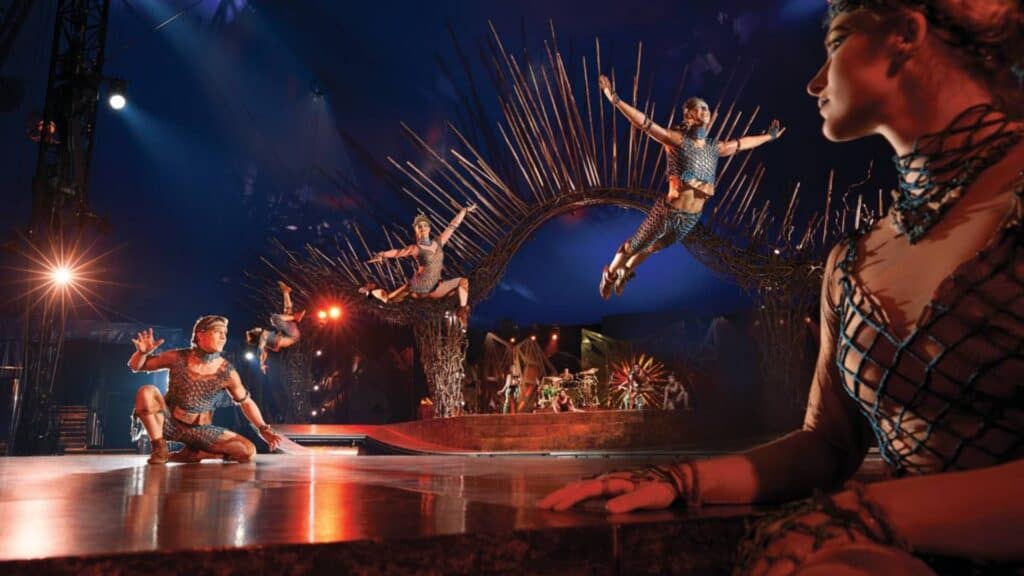
シルク・ドゥ・ソレイユ
Open: February 2023
https://www.alegria-jp.com/
Cirque du Soleil will return to Japan in February 2023 after an extended break due to COVID. This season’s tour will be ‘Daihatsu Alegria: New Light’, a revamped version of the show first performed in 1994.
Alegria is a 135-minute show, featuring a series of spectacular performances, including acrobatics, aerials and fire dances. It is a fantastical and profound story of an artist who overworks his body to the limit in a kingdom that has lost its former glory.
The show opens in Odaiba on Wednesday 8th February 2023 and runs until Sunday 4th June. It will be followed by an Osaka tour, scheduled to start in July.
3. Tokyo Midtown Yaesu
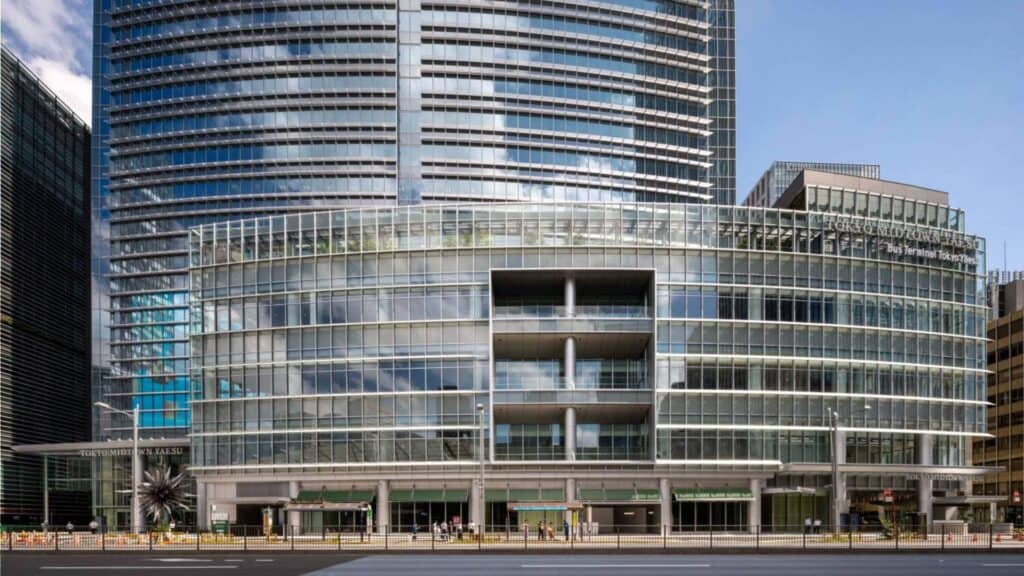
東京ミッドタウン八重洲
Open: 10th March, 2023
https://www.yaesu.tokyo-midtown.com/
The Yaesu area in front of Tokyo Station is undergoing redevelopment. The grand opening of Tokyo Midtown Yaesu, some of which, such as the bus terminal and shops, have already opened earlier in 2022, will finally take place.
The 45-storey low-rise building will feature 57 shops, including shops focusing on Japanese brands. In April, the Bulgari Hotel Tokyo is scheduled to open on a higher floor for the first time in Japan.
4. Tokyu Kabukicho Tower
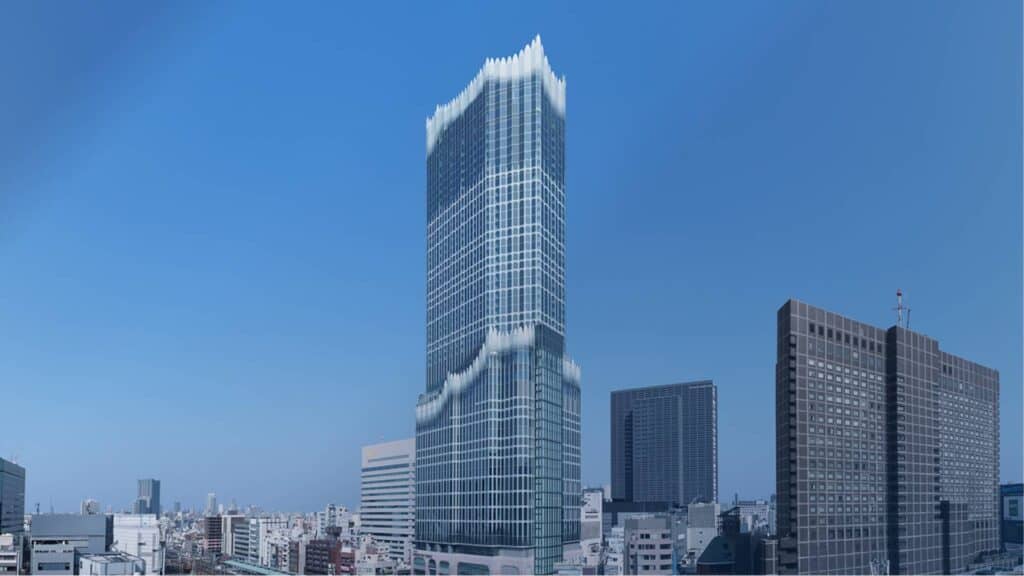
Open: April 14th, 2023
https://tokyu-kabukicho-tower.jp/
Tokyu Kabukicho Tower is a 48-storey skyscraper complex with a hotel, cinema, theatre, live music hall and other facilities opened in Kabukicho, Shinjuku.
The theme of the complex is “Festival” and includes an entertainment food hall combining food, music and visuals, a Namco Bandai amusement spot, a Sony dungeon experience facility and a luxurious training gym.
There are a variety of places where you can play until the wee hours. The concept is “mastering what you love”. Immediately after its opening, a collaboration was held on the theme of the anime Evangelion, which is closely associated with the former facility.
5. Jurassic World Exhibition
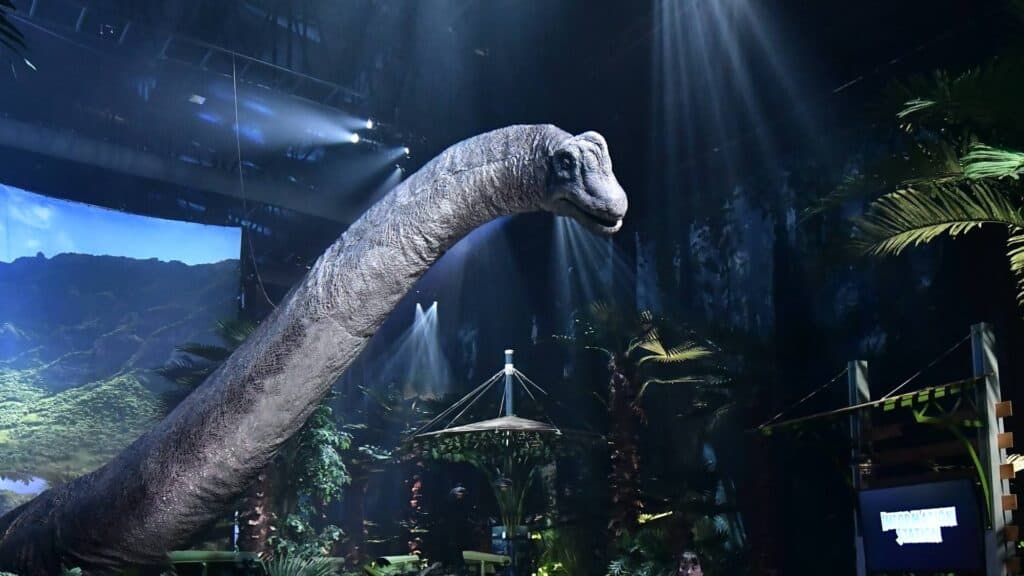
ジュラシック・ワールド展
Open: Spring, 2023
The popular film Jurassic World has fans around the world. It has recently been decided that a Jurassic World exhibition will be held in Tokyo in 2023. The exhibition venue will be inspired by the island of Isla Nublar, where life-size dinosaurs will be recreated in astonishingly realistic detail. We know what happens when you bring an actual dinosaur to life. In a way, this robotic replica is better than the real thing.
At the Hammond Institute for Creation Research, dinosaurs from ‘Jurassic World’ are recreated, and dinosaur eggs in incubators can be seen.
Dinosaurs such as the gentle giant Brachiosaurus and the aggressive carnivore T-Rex are also on display. The exhibition is currently on show in London.
6. Warner Bros Studio Tour Tokyo – Making of Harry Potter
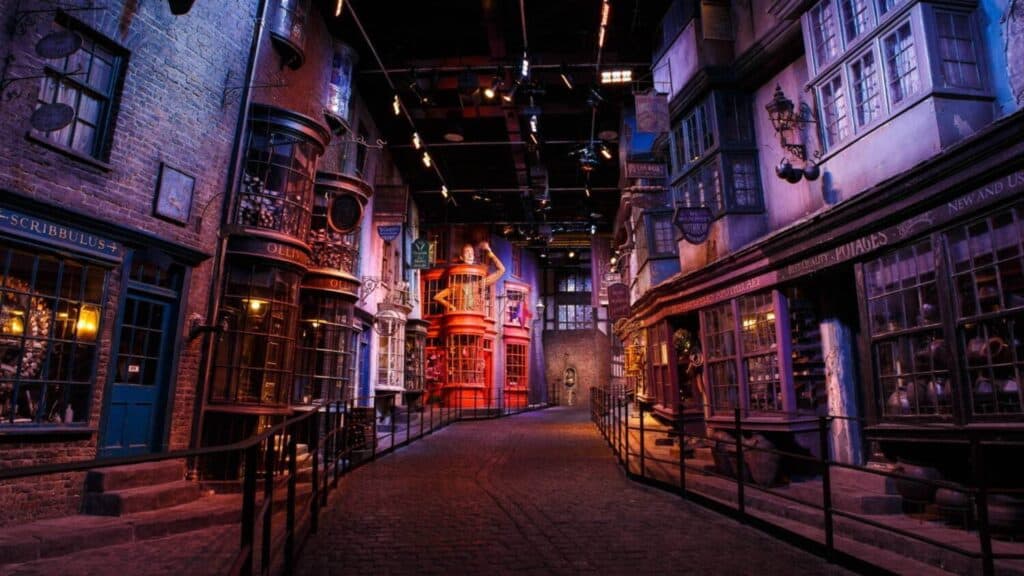
ワーナー ブラザース スタジオツアー東京‐メイキング・オブ・ハリー・ポッター
Open: Summer 2023
An entertainment facility that allows visitors to experience the world of the Harry Potter and Fantastic Beasts series of films, to be opened on the former site of Toshimaen in Nerima-ku, Tokyo, and will be the second to open in the world after the UK’s Studio Tour London, which opened in 2012 and is still difficult to book. The vast site, which is two times the size of the Tokyo Dome, features the Great Hall from the films, the nine and three-quarter line Hogwarts Express to the Wizarding World, Diagon Alley and an interactive experience where visitors can actually become a moving portrait by taking a photograph of themselves in front of the portraits.
7. Dogenzaka-dori

道玄坂通 dogenzaka-dori
Open: September 2023
https://dogenzaka-dori.com/
In the middle of Shibuya’s once-in-a-century redevelopment, Dogenzaka-dori dogenzaka-dori, a large 28-storey complex comprising shops, offices and a hotel, will open on the site of Don Quijote on Dogenzaka.
The Hotel Indigo Tokyo Shibuya will be the fourth hotel to open in Japan, following Hakone, Karuizawa and Inuyama Yurakuen in Aichi. The hotel will have a total of 272 guest rooms, a café and bar with an outdoor terrace, a fitness gym and other facilities, and rooms occupying the upper floors will offer panoramic views of Mt Fuji and the Tokyo Sky Tree.
8. Hanamichi Tokyo Kabukicho

ハナミチ東京 歌舞伎町
Open: October 1st, 2023
Hanamichi Tokyo Kabukicho is a new spot will open in Shinjuku where you can enjoy Edo clothing, food and theatre in one place. On the basement floor is the Kabukicho Theatre, a new generation popular theatre venue where you can enjoy popular theatre.
On the second floor, a kimono and kimono rental shop and the retro coffee shop Coffee Seibu Honten, established in 1964, have relocated and opened; on the third floor, a food court based on the theme “If there had been a food court in the Edo period” and on the fourth floor, a barbecue terrace. The third floor is a food court themed ‘If there had been a food court in the Edo period’, and a barbecue terrace is scheduled to open on the fourth floor.
9. Toranomon-Azabudai Project
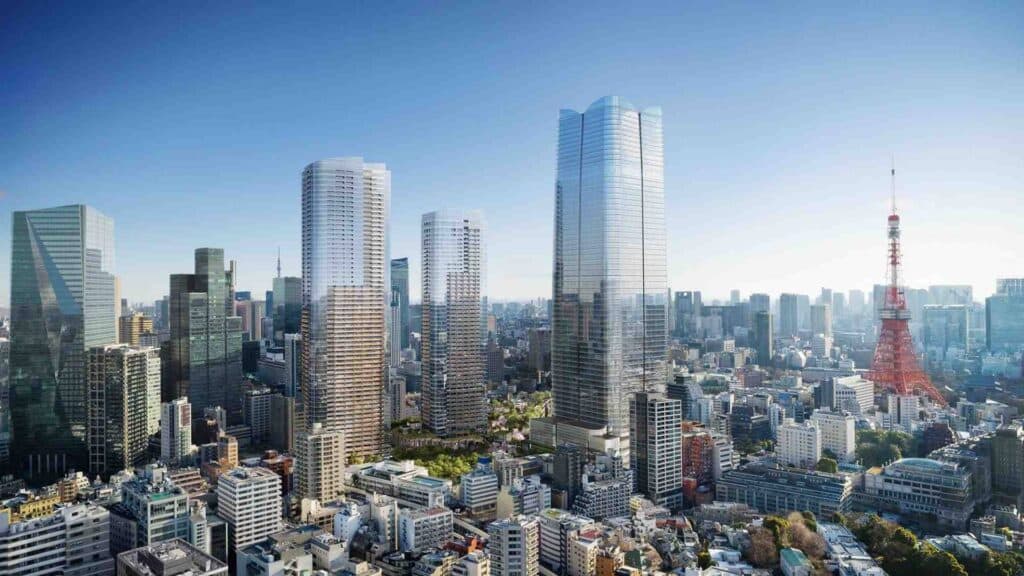
虎ノ門・麻布台プロジェクト
A new town with three high-rise buildings will be created in a vast area of approximately 8.1 ha, adjacent to ARK Hills in Akasaka and surrounded by Roppongi Hills and Toranomon Hills. One of the buildings is 330 m high, surpassing Abeno Harukas to become the tallest building in Japan.
The area will feature Amanresort’s sister hotel brand Janu Tokyo, which will make its first appearance in Japan, Amanresidence Tokyo, the first urban residence in Japan, the TeamLab Borderless digital art museum, which is popular both in Japan and abroad, and 150 shops. It will be a major opening on a grand scale, reminiscent of the opening of Roppongi Hills.
The following is an introduction to the eight new spots opening in Tokyo in 2023. Tokyo continues to see major openings. Although overseas travel is still far away due to the weak yen and other factors, it seems that even domestic urban areas can be exciting enough to enjoy.
Are you excited for these new attractions in Tokyo? There are so many events, festivals, celebrations happening in Japan, especially Tokyo, all the day. Make sure to stay tuned so you don’t miss out on any events!
Submit a Comment Cancel reply
Your email address will not be published. Required fields are marked *
Save my name, email, and website in this browser for the next time I comment.
Recent Posts
- Top 28 Must-Go Japan Amusement Parks That Aren’t Disney: Unparalleled Fun for Kids and Adults Alike!
- Top 38 Essential Osaka Travel Tips You Must Know Before Visiting Japan’s Food Capital!
- Top 35 Critical Kyoto Travel Tips You Must Know Before Visiting Japan’s Cultural Capital!
- Best June Events in Japan: 10+ Unmissable Experiences That Will Ignite Your Summer Spirit
- Rainy Day in Tokyo: 45 Perfect Places to Escape the Downpour!
Recent Comments
- Best June Events In Japan: 10+ Unmissable Experiences That Will Ignite Your Summer Spirit on Discovering Tranquility: 9 Day-Use Onsens in Hakone for A Fun Getaway
- Rainy Day In Tokyo: 45 Perfect Places To Escape The Downpour! on Your Go-To Guide for TeamLab Planets Tokyo: Discovering the Enchanting Wonders of 11 Artworks and Beyond!
- Rainy Day In Tokyo: 45 Perfect Places To Escape The Downpour! on Top 25 Tokyo Travel Tips You Must Know For A Memorable Visit to Japan’s Capital!
- Department Store Delights: Exploring Shopping In Japan on 20 Day Trip ideas from Tokyo to get in touch with nature
- Department Store Delights: Exploring Shopping In Japan on 10 Best Souvenirs in Japan to Buy and Bring Home
- Tokyo Cheapo (繁體中文)
New Tokyo Attractions to Look Forward to in 2023
It’s going to be an exciting year. With both long awaited reopenings and promising new attractions, there’s a lot to look forward to in 2023. And if you’re anything like us, you just can’t wait.
So, let’s get into the details. Here’s the lowdown on new Tokyo attractions opening this year.
TeamLab Borderless
2023 Azabudai

Great news for the instagrammers out there — TeamLab Borderless is reopening. Sadly, there’s no set date yet. When it does reopen, it will be as part of the shiny new Azabudai Hills project . We don’t know much about what the move means for Borderless just yet, but we’re sure it’s going to be just as visually spectacular as the original. It was the world’s first Digital Art Museum afterall.
Animate Ikebukuro
March 16, 2023 Ikebukuro
Anime fans won’t want to miss this one. Animate Ikebukuro will reopen after some very exciting rennovations. When it reopens, the nine-floor building will be the world’s largest anime store, complete with an in-house theater, event space, and special exhibition floor. Plus, the reopening coincides with the store’s 40th anniverary, so there’s sure to be some fun events lined up. Don’t forget to visit Animate’s event page — so that you can time your visit with an autograph session, special exhibition, or new release.
Kabukichō Tower
April 14, 2023 Shinjuku

This fancy new skyscaper is set to make its mark in the nightlife district of Kabukichō in Shinjuku. At 48 floors, plus five floors below ground, this dining and entertainment complex will open in stages. First up will be floors one to five, which are mostly full of restaurants, on April 14. The festival-themed “Shinjuku Kabuki Hall — Kabuki Yokochō” (新宿カブキhall~歌舞伎横丁) looks to be a clear stand out among the options revealed so far. Kabukichō Tower will also be home to a new live music venue, Zepp Shinjuku (which replaces the Zepp Tokyo in Odaiba that closed last year).
Ikebukuro Sky Circus
April 18, 2023 Ikebukuro
For stunning views, you can’t get much higher than Ikebukuro Sky Circus (also known as Sunshine 60 Observatory). After six months of rennovations, it’s reopening with a lovely new greenspace called Tenpō Park. Overall, the area is intended to be family friendly, making it a great option for travelers with young children.
Studio Tour Tokyo — The Making of Harry Potter
Summer 2023 Nerima
Diehard Harry Potter fans will want to know about the new Harry Potter attraction opening in Tokyo this year. Officially called “Studio Tour Tokyo — The Making of Harry Potter,” this isn’t a theme park, so don’t expect rides. Instead, it will be a walking tour showcasing sets, props, and costumes. It’s being built on the location of the old Toshimaen themepark. Read more on what we know about the Harry Potter Studio Tour so far.
Yebisu Brewery Tokyo
Late 2023 Ebisu

If you like beer, you’ll like this one. The Yebisu Museum of Beer in Yebisu Garden Place is undergoing some exciting rennovations. It’s scheduled to reopen in late 2023 under a new name, “Yebisu Brewery Tokyo,” and will have an on-site brewery alongside the museum. So you’ll be able to learn about the popular beer, and then drink it fresh from the tap — all in one location.
Like we said, it’s going to be an exciting year to be in Tokyo. Planning your trip already? Check out our ultimate guide to planning a trip to Japan .
- Attractions
Get our Tokyo Cheapo Hacks direct to your inbox

A Beginner's Guide to Shibuya - Scramble Crossing, Shopping & Great Views!

How and Where to Buy Shinkansen Tickets

Hidden Gems: 4 Unique Tokyo Bars You MUST Try!

Top Japanese Phrases You Need Before Traveling to Japan

Top Things to do in Odaiba: Gundam, Museums & Tokyo Bay

Hakone Day Trip from Tokyo

When to See Cherry Blossoms in Japan

Tokyo Events This Week: Hydrangeas, Sanno Festival, and Torigoe Matsuri
Tokyo events for Monday, June 3 to Sunday, June 9, 2024.

New Video! Where to Buy Anime Merch in Tokyo
From vintage anime goods in Nakano Broadway to official merch and secondhand stores.

June 2024: 7 Tokyo Events Not to Miss
Fireflies, the famous Sanno and Torigoe festivals, phở — and more.


The Japan Bus Pass: Does Road Beat Rail?
It's cheaper than the JR Pass, and not just available to tourists.

10 Tokyo Flea Markets for Bargain Hunting
You'll want to bookmark this one.

New Video! When is the Worst Time to Visit Japan?
Winter, spring, summer, or fall? It can be hard to know the best time to book your Japan trip for.

New Video! Hidden Gems: 4 Unique Tokyo Bars To Try
From local izakaya to themed establishments, Tokyo has a bar for every vibe and person.

Taste of Hakone: Easy Day-Trip Itinerary
From hot springs and museums to shrines and pirate ships, here's our DIY guide.

Recommended hotels located nearby

Close without accepting
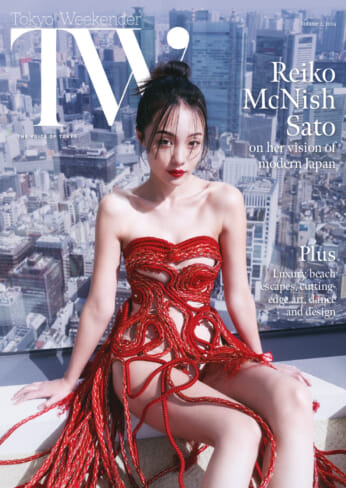
Japan Life News & Opinion Art & Culture
What’s New in Tokyo in 2023
New year, new Tokyo
January 20, 2023 Updated On January 24, 2023
New year, new Tokyo – from finally finished skyscrapers to reopening beloved spots after renovations. Tokyo maintains its reputation as the metropolis where new skyscrapers rise to alter the cityscape, cutting-edge technology rules and pop culture excitement is at an all-time high. We selected the biggest new developments in Tokyo in 2023.
New Tokyo Cultural Landmarks
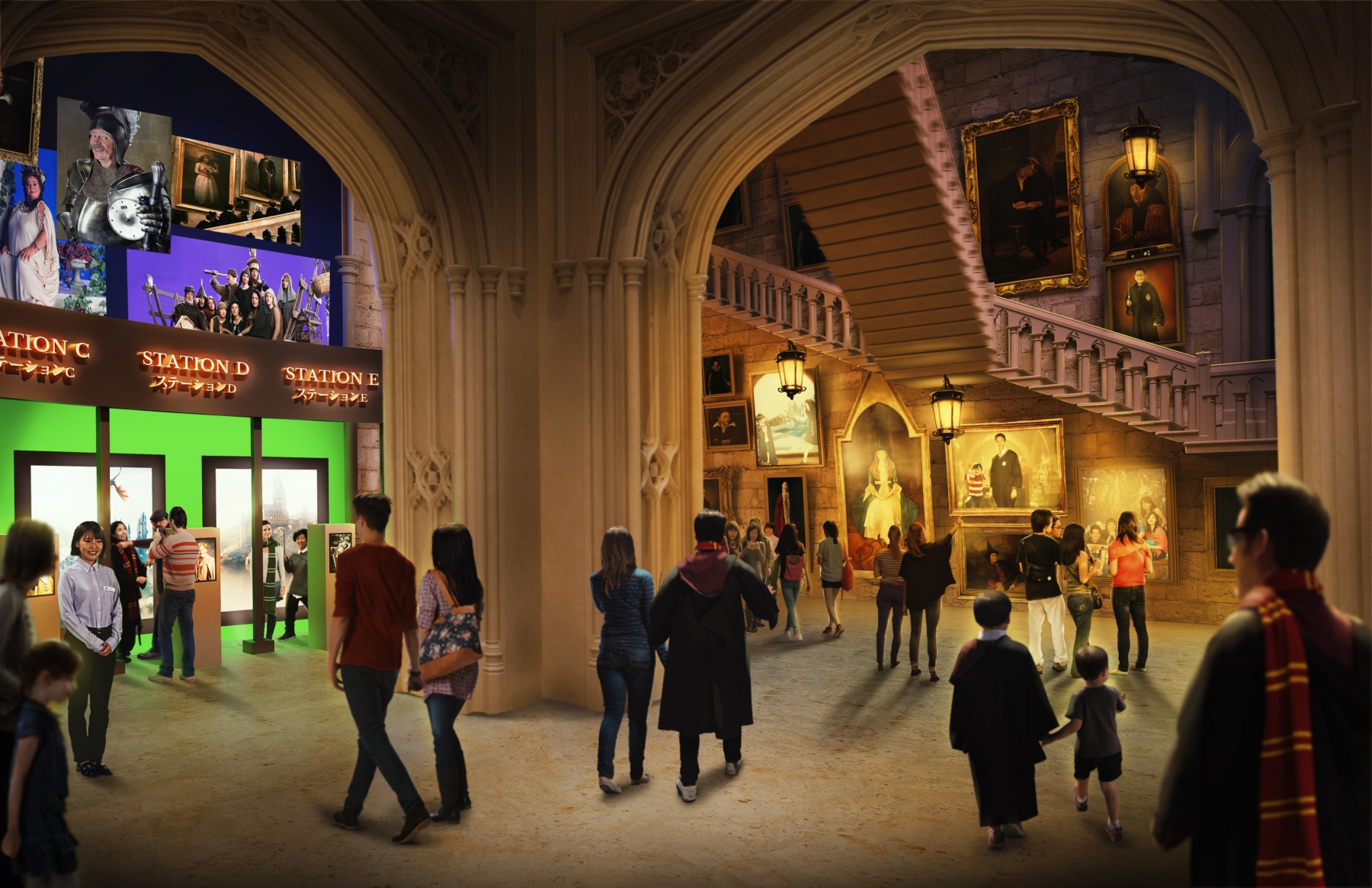
© Warner Bros. Entertainment Inc.
1. Warner Bros. Studio Tour Tokyo — The Making of Harry Potter (Summer 2023)
Potterheads can walk where dreams are made in this behind-the-scenes tour of the Harry Potter and Fantastic Beasts film series. The original Warner Bros. Studio Tour — The Making of Harry Potter opened in London in 2021, while the one coming to Tokyo in 2023 will be the second worldwide. The vast entertainment facility (the size of two Tokyo Domes) is on the site of the former Toshimaen amusement park in Nerima Ward. It will feature the iconic Hogwarts Great Hall, Diagon Alley and even a chance to board the Hogwarts Express at Platform 9¾. You can take a moving portrait of yourself and drink Butterbeer in the café for a perfect day immersing yourself in this fantasy world.
Reservations are required in advance.
2. Jurassic World: The Exhibition (Date TBA, 2023)
Packing up its bones from London, this official Universal Studios exhibition of all things Jurassic will soon land in Tokyo sometime in 2023. The attraction will transport you to the fictional locations of the films, including the Hammond Creation Lab where you can see dinosaur eggs in incubators. The realistic life-size animatronic dinosaurs will roar and move, blurring the lines between reality and fantasy.
More details will be announced later this year.

3. Animate Ikebukuro Flagship Store (March 16, 2023)
Animate’s flagship store in Ikebukuro will be the biggest anime store in the whole world and one of the certified 88 Anime Pilgrimage spots for 2023. The new flagship store will encompass the old Animate store that’s been there for 40 years and expand to contain a café, an exhibition space, a theater in the basement and an event space on the ninth floor for various performances. Of course, it will have multiple floors of anime merchandise, media, manga volumes and even manga drawing art supplies. The Animate Ikebukuro official website has already listed events such as autograph signing sessions and special screenings in March.
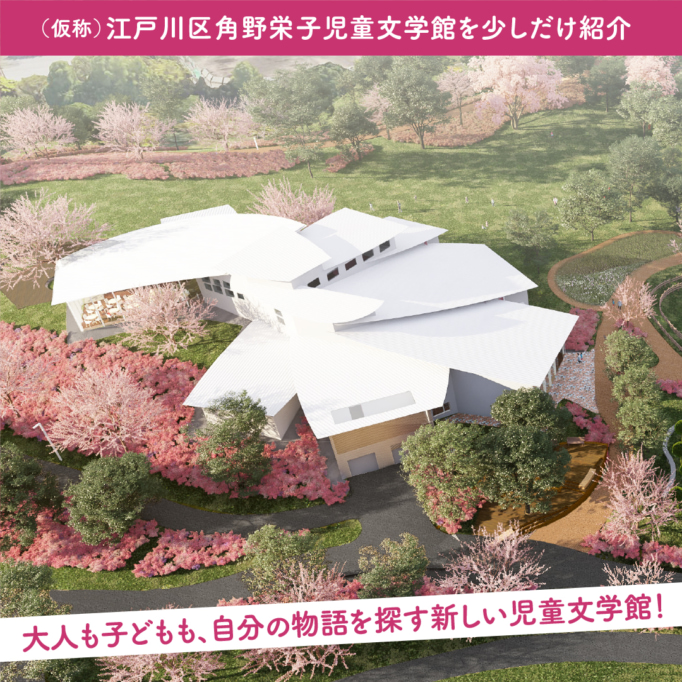
4. Eiko Kadono Children’s Literature Museum (July 2023)
Eiko Kadono is an illustrious author of children’s literature. She’s most well-known for writing the Kiki’s Delivery Service series of novels that were adapted into an animated film by Studio Ghibli. She has written many other works and in 2018 she won the prestigious International Hans Christian Andersen Award for Writers. The author was born in Tokyo’s Edogawa Ward, the location of the new museum dedicated to her .
The building designed by Kengo Kuma and Associates utilizes a lot of pink and white to create the fantastical atmosphere prevalent in Kadono’s books. Visitors can expect lots of cats and even a pink replica of Koriko, the city from Kiki’s Delivery Service. The museum is designed to invoke a sense of adventure and discovery as you move through its halls. Surrounded by nature in Nagisa Park, it will also have a playground and a pony center next to it. Kadono hopes children will have fun all day and go home inspired to create their own stories.
New Tokyo Architecture
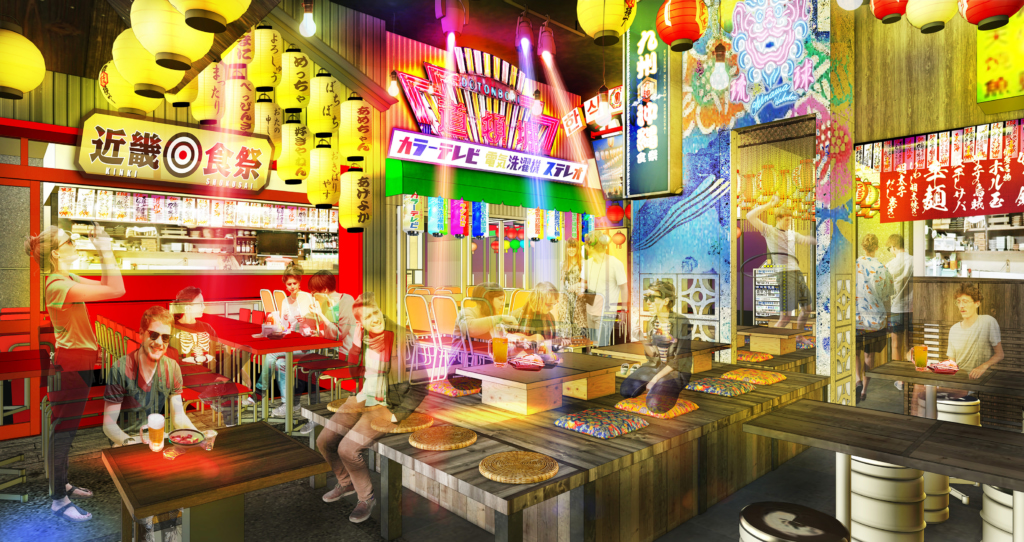
5. Tokyo Kabukicho Tower (April 2023)
A super high-rise complex facility with 48 floors above ground and five floors underground, Tokyo Kabukicho Tower houses not only hundreds of stores but even two hotels, a cinema, a theater and a live music hall.
Bellustar Tokyo (floors 39 to 47) and Hotel Groove Shinjuku (floors 18 to 38) boast excellent city views. You can watch a movie, play or concert and then grab a drink or a meal in the same building. The whole second floor will be a yokocho-style area with numerous small eateries. The third floor will be dedicated to pop culture with Bandai Namco’s giant arcades and neon lights spread out, while Sony Music Entertainment will take over the fourth floor to create a hi-tech experience with escape rooms and dungeons, among other things. The fifth floor will be dedicated to health and wellness with facilities such as a terrace swimming pool and a gym open 24 hours. For the ultimate convenience, buses to and from Haneda and Narita airports will stop directly outside the basement of the tower.

6. Tokyo Midtown Yaesu Grand Open (March 2023)
The third Midtown shopping and office complex, Tokyo Midtown Yaesu (located at the Yaesu exit of Tokyo Station) is set to join the already popular Tokyo Midtown Roppongi and Tokyo Midtown Hibiya. It will enclose a variety of shops and restaurants showcasing the best in Japanese craftsmanship, luxury and gourmet. On the second floor, there is a public green space open to all. The bus terminal inside it and some shops have already opened. There’s also the Chuo Ward Elementary School (floors one to four), which was on this site before the redevelopment. The grand opening, however, is scheduled for March 2023.
The luxury Bulgari Hotel Tokyo inside the complex (floors 40 to 45) will open a month later, in April 2023. The building will use sustainable green energy and will be as contactless as possible. Facial recognition technology will enable smart doors and smart elevators. There will also be delivery robots connected to 5G technology.
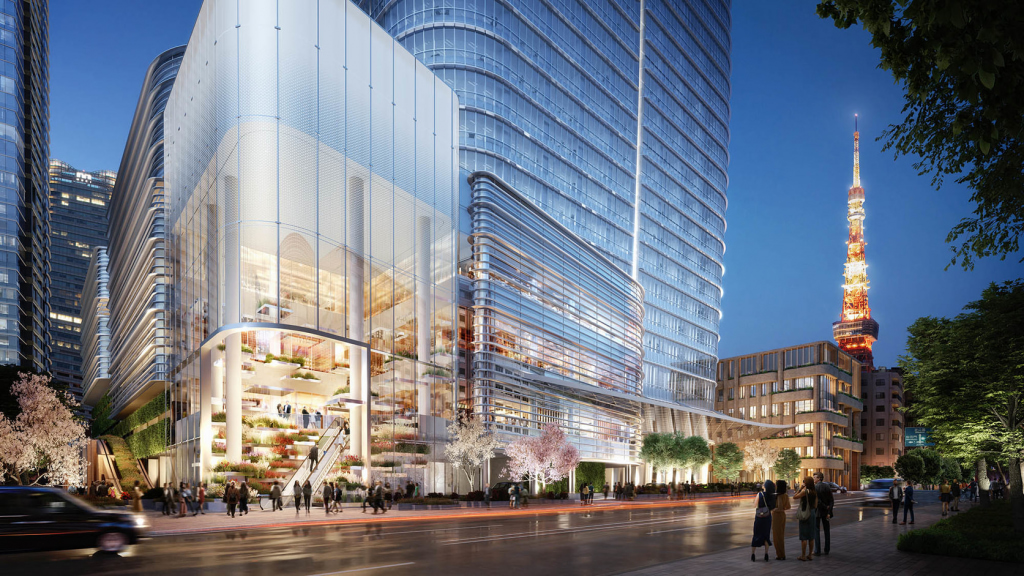
7. Azabudai Hills Development Completed (Date TBA, 2023)
Three decades in the works, this cutting-edge, eco-conscious city within a city developed by Mori Building will be complete in 2023. It is adjacent to Ark Hills and in between Roppongi Hills and Toranomon Hills, effectively linking all of these centers to create one big cultural and economic hub. The Azabudai Hills complex is focused on greenery, public space and a healthy lifestyle. What’s more, 100 percent of the electricity supplied to the neighborhood will be from renewable sources. This complex will house shops and restaurants, offices, schools and Tokyo’s tallest residential tower. There’s also the new teamLab Borderless digital art museum and luxury hotel Janu Tokyo, Aman’s sister brand.
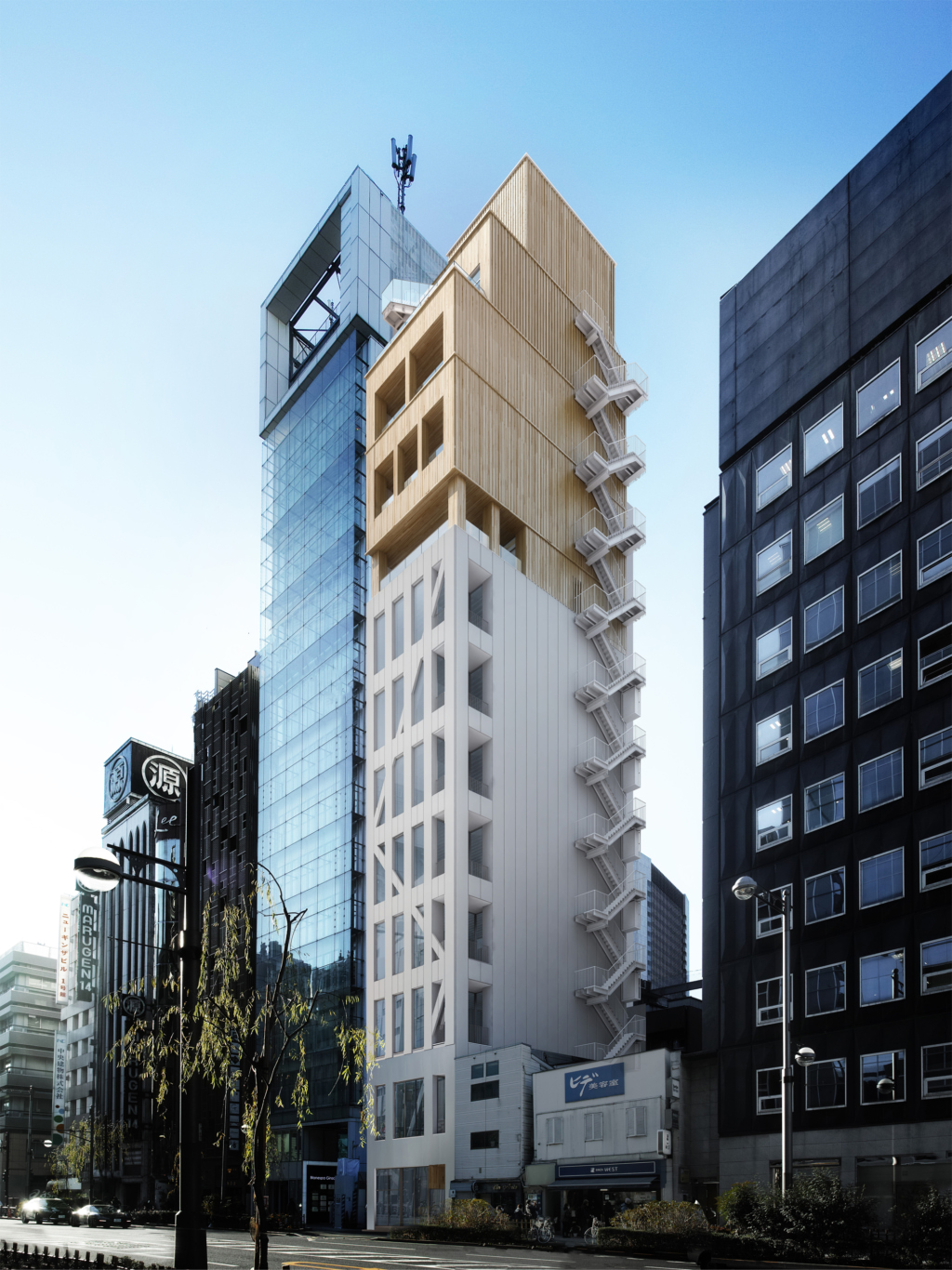
8. Wooden High-Rise Building (May 2023)
Many major architects in Japan have expressed dreams to build high-rise buildings and skyscrapers out of wood, partly tapping into Japanese carpentry traditions and partly inspired by the movement for more sustainable architecture. While major architecture companies have envisioned a wooden skyscraper , one company is starting small with an achievable project. The Ginza Takagi Building (provisional name), a flagship building of the Takagi Group, will have 12 floors and a basement. The plan is to house retail stores on the first and second floors, offices from the third to the eighth floor and restaurants from the ninth to the 12th floor. The restaurant floors will be completely made of wood. The rest of the building, meanwhile, will have a wooden façade.
Re-openings
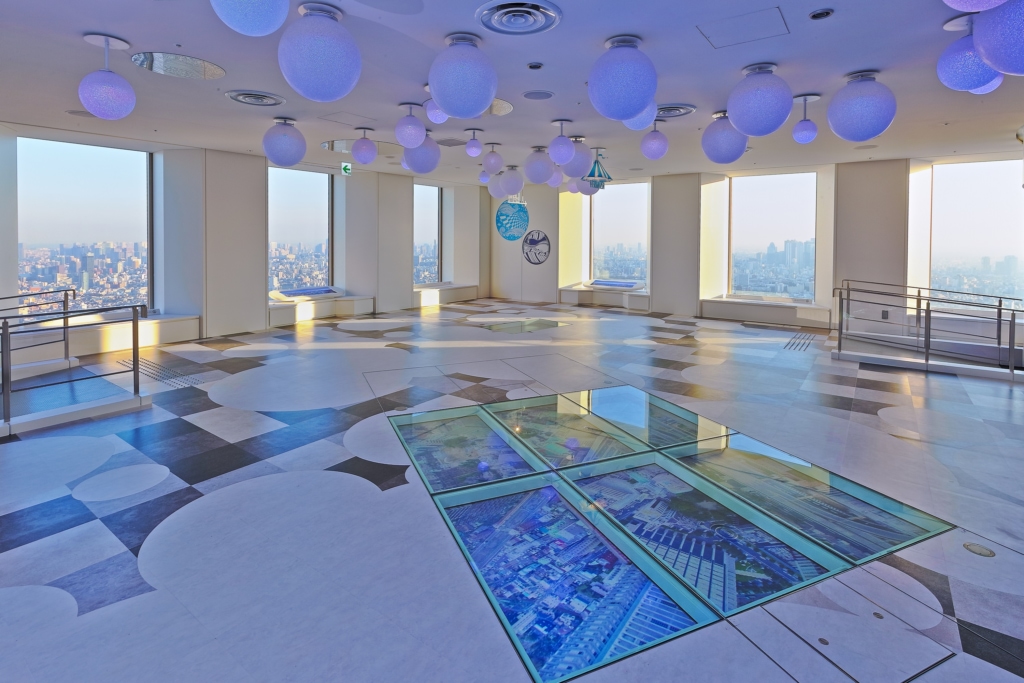
9. Ikebukuro Sunshine City Sky Circus Sunshine 60 Observatory (Spring 2023)
In 2023, the popular shopping and entertainment complex Sunshine City will celebrate its 45th anniversary. Among the many events planned to commemorate the anniversary is the reopening of the renovated Sky Circus Sunshine 60 observatory. This observatory is popular as it offers great photo spots and a view of Mount Fuji on a clear day. In addition to the great panoramic views of Tokyo from above, there are VR and 4K experiences. While in Ikebukuro Sunshine City, you can also check out the popular aquarium.
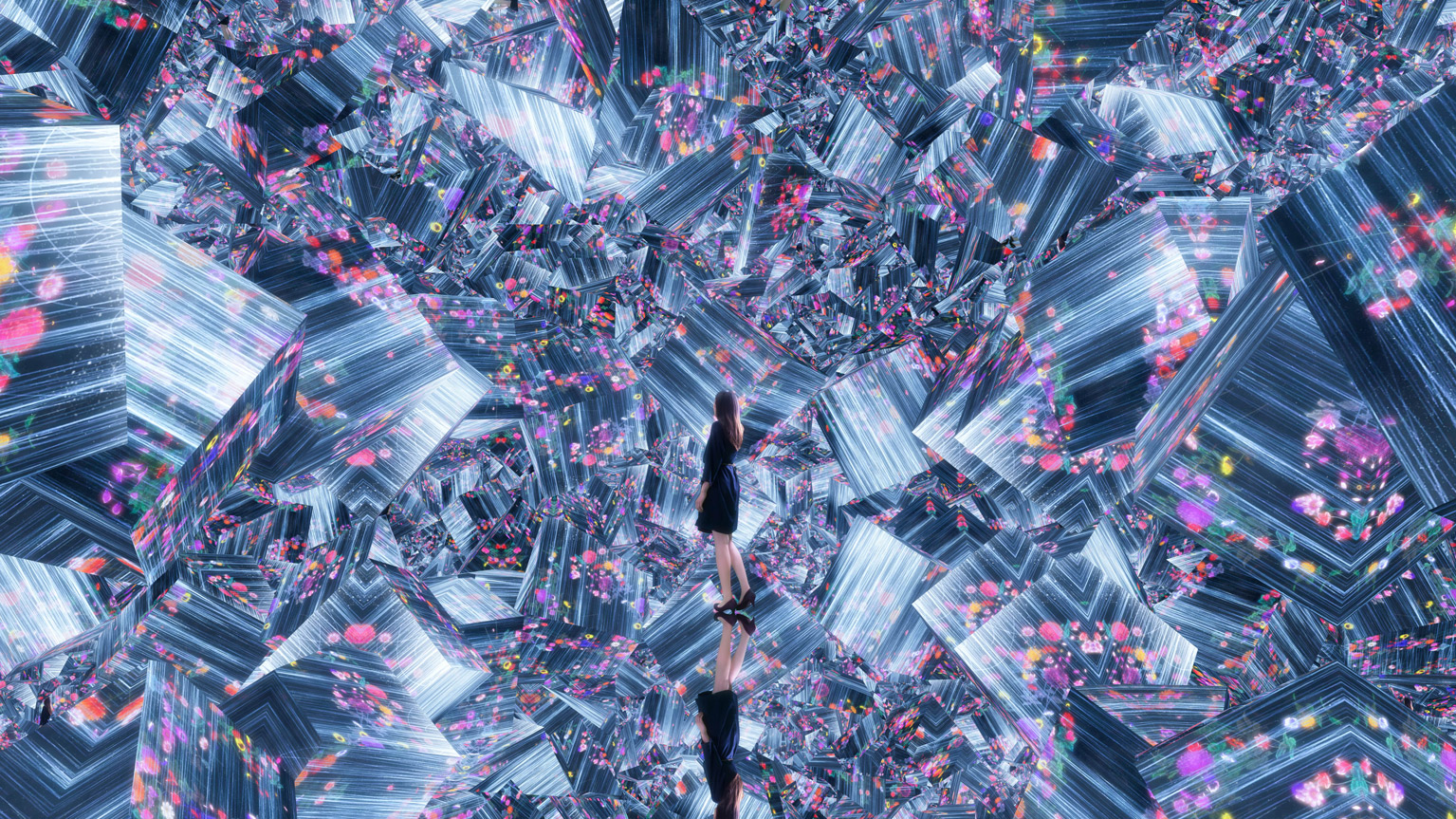
teamLab Borderless Tokyo ©teamLab
10. teamLab Borderless (End of 2023)
The world’s first digital art museum, teamLab has been dazzling with interactive exhibits of light and sound. In Tokyo, where it all began, teamLab closed its Borderless museum in August 2022 but with the promise of reopening in 2023. Dates are yet to be announced, but the new Borderless is set to open later in the year in the newly developed Azabudai Hills area. It promises to be even more wonderful, inspiring and borderless. In the meantime, visitors can still enjoy teamLab Planets in Toyosu (still open at the time of writing).
Related Posts
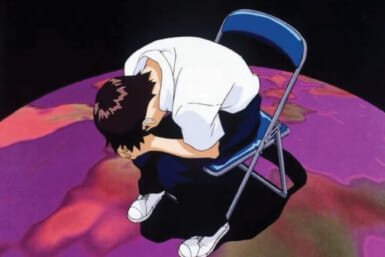
Anime Studio Gainax Files for Bankruptcy
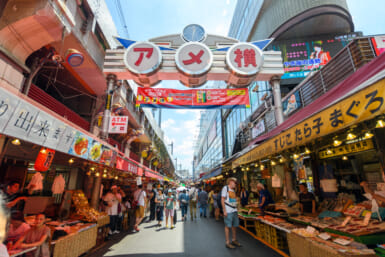
The Best Things To Do in Tokyo This Month: June 2024
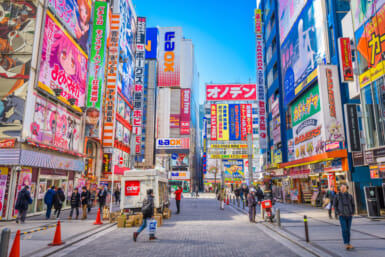
The Best Anime and Manga Events in Tokyo: June 2024

Japanese Slang: 5 Words to Add to Your Vocabulary to Sound Like a Local
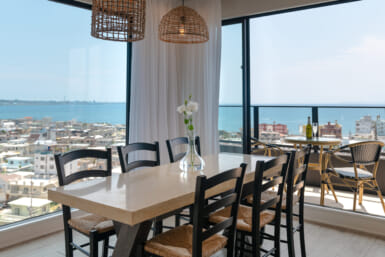
The Blue Steak Wonder Hotels: A Design Lover’s Dream in the Heart of Okinawa
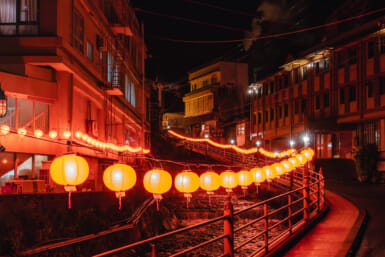
Whisked Away to Higashi Izu
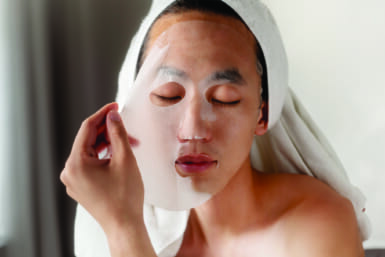
The Best Sheet Mask for Brightening and Moisturizing

Tara: A Mystical Oceanside Town Where You Can Feel the Moon’s Power
- Things to Do
- Food & Drink
- Shopping & Style
- Coca-Cola Foodmarks
- Restaurants & Cafes
- Music & Nightlife
- Neighborhoods
- Los Angeles

10 best events and things to do in Tokyo this winter 2023
What to see, eat, drink and do in the city to tide you over until cherry blossom season in late March 2023
When the days become shorter and teeth-grittingly cold, locals set up a kotatsu in their living rooms, a table with a heated duvet that is impossible to get out of once you’re settled in. If you happen to own one of these odd-looking centre-pieces in your living room, that is admittedly one good reason to stay in all day – but we’ll give you a few more reasons to go out.
With the city decked in thousands of shimmering lights for the annual illumination displays , it’s almost a blessing that the sun goes down so early as Tokyoites venture out to their favourite neighbourhoods for wintery activities with friends and family.
RECOMMENDED: Most beautiful winter destinations in Japan
The best things to do in Tokyo this winter

Take a date to see the illuminations
- Things to do
Illumination displays are one of the main attractions of winter in Tokyo. An outing to see the illuminations is a popular date idea because the spectacle of all those dazzling lights in gold or majestic blue is just so romantic at night (and, frankly, all the better for your wallet as these public displays are free). Even if you’ve decided not to give in to the pressures of cuffing season this year, these displays are worth a quick detour when you’re making your way around the city.

Have a soak in an onsen
- Health and beauty
Having a long, hot onsen bath is a favourite local pastime. So with the weather being so cold, it’s a good time to ease your tired body with a nice warm soak. Most bathhouses will have a number of different baths, indoor as well as outdoor, with different kinds of minerals in the water to soften your skin. While there are many famous areas around Japan known for natural volcanic hot springs, there are still plenty of options within the city that are easily accessible and open all hours of the night.

Lace up your skates
- Ice skating
You don’t have to be a world class figure skater to go for a glide around the rink. A number of outdoor skating facilities have popped up around Tokyo, where people of all ages gleefully take to the ice to practice some impressive tricks, or learn to skate a little more smoothly than last year. Whether you’re a seasoned skater or prefer to stay close to the sidelines as you make your way around the rink, these outdoor skating spots are sure to add some flair to the winter months.

Gather a group of friends for hotpot
- Restaurants
Nabe, or nabemono, is the Japanese word for hot pot cuisine, where diners can have a casual get-together and share a communal, belly-warming meal that’s as delicious as it is nourishing. The dishes are similar in that they typically involve simmering a variety of meat and vegetables in one large pot to be enjoyed on chilly nights by a large group of people, but differ in the base of their broth and the way they’re meant to be eaten. Check out our guide to the most common types of nabemono with a few of our favourite spots for hotpot.

Get your vegetables in with soup curry
A winter staple that often gets overlooked in favour of ramen, soup curry is a Hokkaido speciality of tender meat and seasonal vegetables in a soul-warming curry broth. At Rojiura Curry Samurai , you can have your soup tailored exactly to your liking, from the number of nutrient-packed veggies to add as toppings to the spice level of your broth.
Soup bases, which are all additive-free, range from coconut shrimp flavour to Japanese-style curry broth. The range of toppings, on the other hand, includes slow cooked pork belly, crispy fried chicken and cheese mochi, among other nourishing delicacies. The soup shop can also be found on UberEats, so you don’t even have to leave the house to fill your belly with this warming dish.

Sweat it out in a sauna
In the coldest days of the year, one might even start dreaming longingly of Tokyo’s roasting summer heatwaves. If you find yourself chilled to the bone and missing the sensation of sweating, one way to revive your body is through a leisurely sauna session at one of the city's many bathhouses.
Most of the onsen and designer sento facilities in the city like Paradise or Koganeyu have communal saunas in addition to hot spring baths, but there are also places like Solo Sauna Tune , where you can book a private sauna booth all to yourself.

Check out teamLab's scenographic debut
- Theatre & Performance
Digital art collective teamLab is branching out from its immersive exhibitions with its scenographic debut in a new production of Giacomo Puccini's opera Turandot . Devised by American theatre director and choreographer Daniel Kramer, the modern interpretation of the classical opera premiered in Geneva in 2022 and is set to be performed with a local cast in Tokyo from February 23 to 26. You can learn more about the upcoming production here .

See the world’s best circus performers
The circus is coming to town! It’s been five years since Cirque du Soleil’s last show in Tokyo, so we’re thrilled that the Canadian company’s world-class acrobats and performing artists are coming back to Japan in early February. For this upcoming season, Cirque du Soleil will be putting on a revived version of Alegría – one of the company’s most popular shows that has toured over 255 times since it was first performed in 1994. Alegría: In a New Light will open in Odaiba, Tokyo on February 12 and run through June 4. You can read more about the show and how to get tickets here .
More winter fun

6 best onsen destinations in Japan
Warm up as well as rejuvenate your body and mind at these scenic hot spring resorts, easily accessible from Tokyo

Winter getaways from Tokyo
Embrace the cold and head out to these snowy adventures near Tokyo – all perfect as a weekend or short overnight trip

The best places to go glamping in Japan
Want to go camping without roughing it? These comfy tents and domes let you enjoy a luxurious time in nature
[image] [title]
Discover Time Out original video
By entering your email address you agree to our Terms of Use and Privacy Policy and consent to receive emails from Time Out about news, events, offers and partner promotions.
🙌 Awesome, you're subscribed!
Thanks for subscribing! Look out for your first newsletter in your inbox soon!
- Terms of use
- Work for Time Out
- Time Out Group
- Advertising
- Modern slavery statement
- Manage cookies
Time Out Tokyo
- Magazine subscription
- Digital edition
- Buy the guide to Tokyo
Time Out products
- Time Out Worldwide

Tokyo Itinerary: The Best 7-Day Guide for a Fantastic Trip
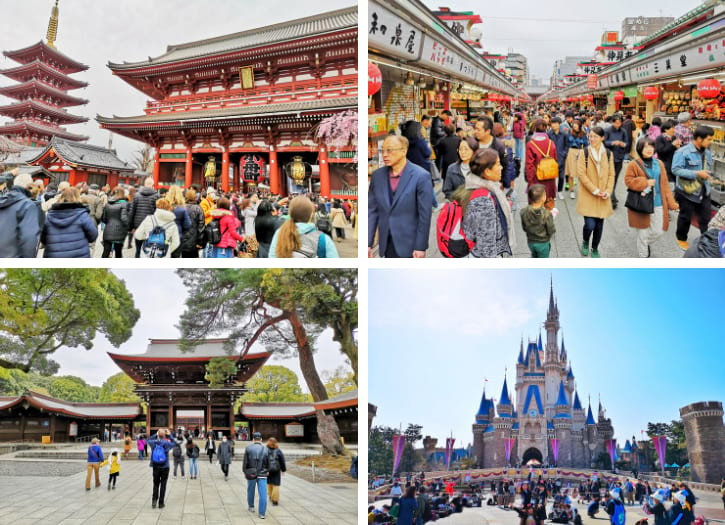
This Tokyo itinerary for 7 days will guide you to a smooth and unforgettable trip in the city .
I’ll show you the best route to visit Tokyo’s most popular attractions , so you can spend more time enjoying the sights and less time traveling.
Trust me, the itinerary I’m showing you for 7 days in Tokyo will save you lots of planning time and make sure your trip to this amazing city is fantastic . 😊
Plus, I’ll point out where to enjoy the city’s delicious and budget-friendly sushi, ramen, yakitori, and tempura. Ready for this adventure? Let’s go!
See the Best of Tokyo with Our Very Clear Travel Itinerary Below
Day 1: warner bros. studio tour tokyo and shinjuku, day 2: meiji shrine, harajuku and shibuya, day 3: tokyo disneyland, day 4: ueno, ameya yokocho, asakusa, and tokyo skytree, day 5: take a day trip to mt fuji from tokyo, day 6: disneysea, day 7: tokyo metropolitan government building and odaiba, tokyo itinerary 7 days map, the most efficient way to travel around tokyo, where to stay in tokyo, japan sim card and pocket wifi, related posts.
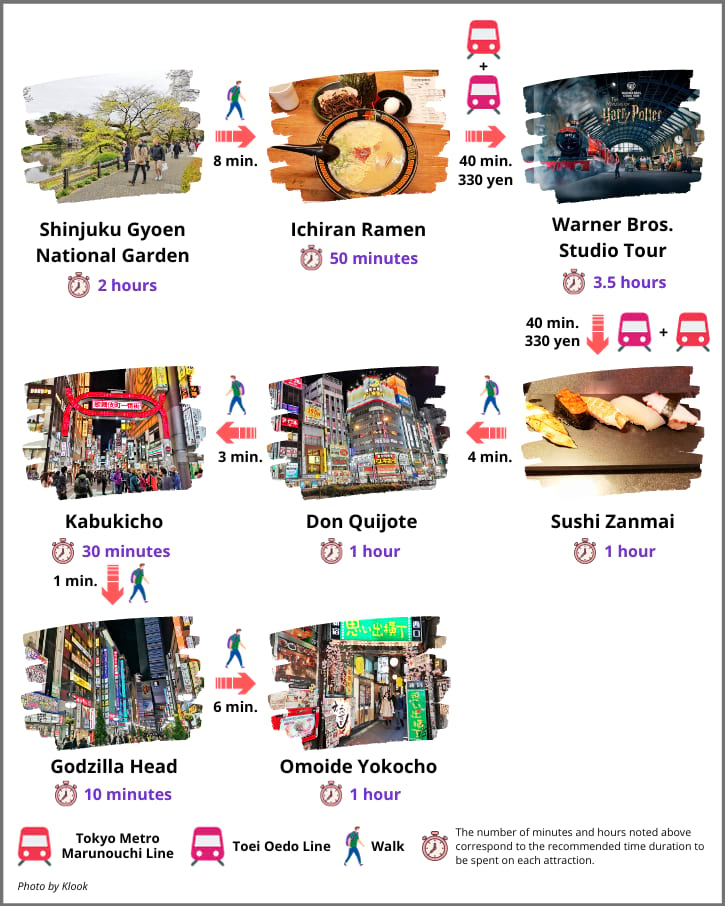
Tokyo itinerary day 1 timetable:
- 10:00 AM: Shinjuku Gyoen National Garden
- 12:00 PM: Ichiran Ramen (Lunch)
- 1:30 PM: Warner Bros. Studio Tour Tokyo
- 5:40 PM: Sushi Zanmai Shinjuku Higashiguchi (Dinner)
- 6:40 PM: Don Quijote
- 7:40 PM: Kabukicho
- 8:10 PM: Godzilla Head
- 8:20 PM: Omoide Yokocho
If you’re interested in learning more about Shinjuku, feel free to read my article on the best things to do in Shinjuku . You can also access all my Tokyo travel guides here .
For those visiting Osaka, don’t miss out on my comprehensive Osaka travel guides , which include a detailed 3-day itinerary to help you make the most of your trip.
1. Shinjuku Gyoen National Garden – 2 hours (10:00 AM to 12:00 PM)
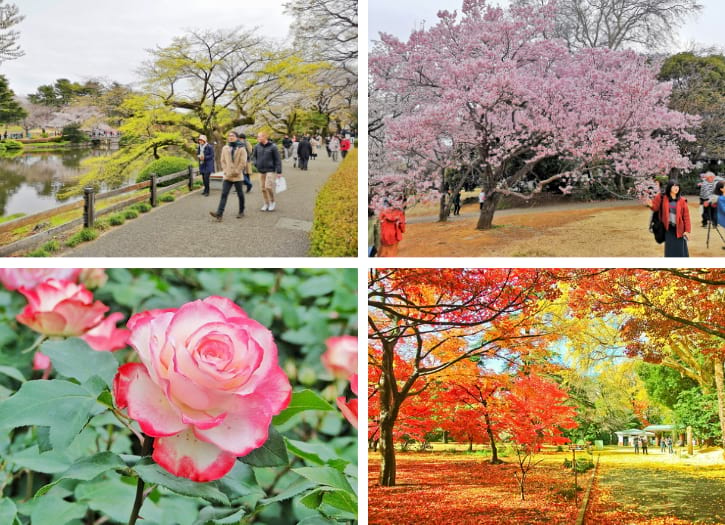
Shinjuku Gyoen National Garden in Tokyo is a must-visit spot . It’s a big, beautiful park perfect for relaxing .
When you go, don’t miss the Japanese and France Formal gardens – each one is different and special.
You’ll be captivated by the stunning scenery that changes with the seasons. In summer, the garden bursts with colorful flowers.
Spring is famous for its breathtaking cherry blossoms , and in autumn , the golden hues of maple trees are a sight to behold .
Even in winter , from December to February , the snow-covered trees create a magical landscape .
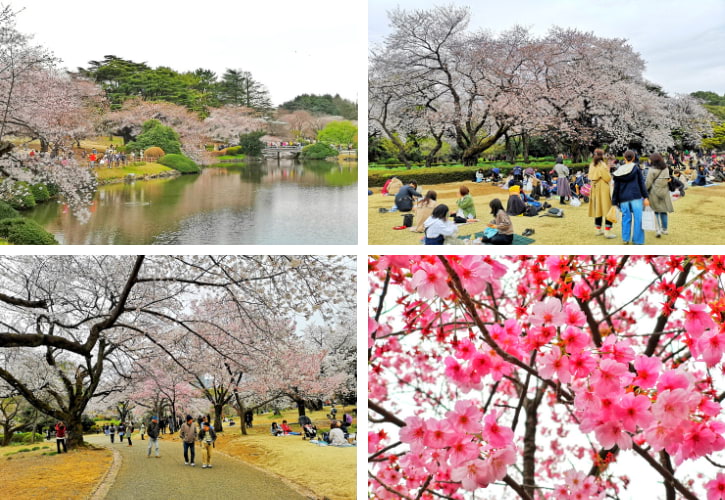
Whether you’re up for a peaceful walk, a picnic, or just some time to sit back and embrace nature, this park is ideal.
And don’t forget your camera – the garden’s beauty is absolutely photo-worthy .
To help you easily navigate the garden, simply download the Shinjuku Gyoen National Garden map here.

2. Ichiran Ramen – 50 minutes (12:00 PM – 12:50 PM)
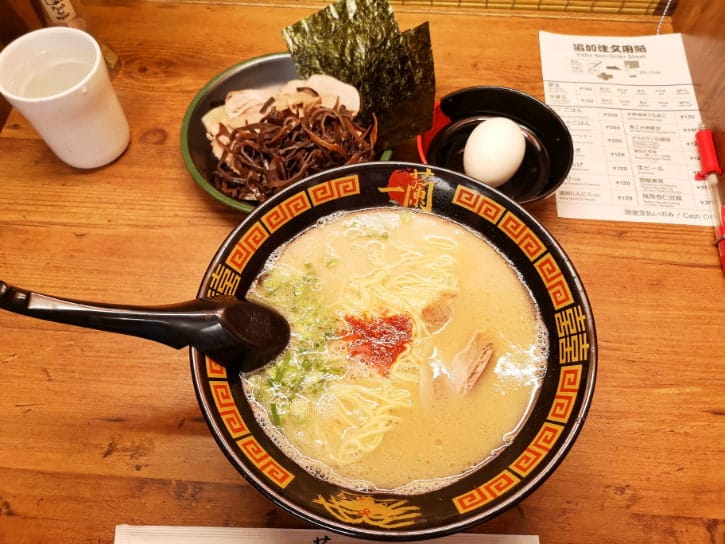
When visiting Tokyo, be sure to add Ichiran Ramen to your itinerary ; you won’t regret it.
This ramen shop is really good at making tonkotsu ramen. It’s a special pork soup you’d want to taste , and it only costs 980 yen .
If you feel like treating yourself, pay a little extra for additional toppings like extra pork slices, egg, dried seaweed, and more. It’s a small price to pay for such a satisfying meal!

3. Warner Bros. Studio Tour Tokyo – 3.5 hours (1:30 PM – 5:00 PM)
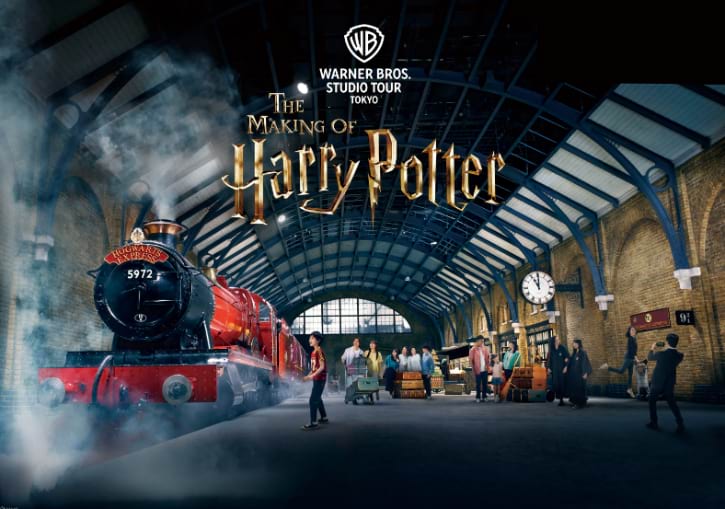
I highly recommend including Warner Bros. Studio Tour Tokyo when doing your own itinerary because it’s an incredible experience , especially for movie enthusiasts.
You get to see how movies are made, from special effects to set designs . There are also props and costumes from famous movies.
For Harry Potter fans, the behind-the-scenes insights are a real treat. Plus, the photo opportunities are fantastic – you’ll have memories to cherish .
Trust me, it’s a unique experience that adds something special to your Tokyo trip!
Important Tip: Purchase your Warner Bros. Studio tickets online here before arriving, as there’s no on-site counter for ticket purchases, and tickets sell out very fast.

4. Sushi Zanmai Shinjuku Higashiguchi – 1 hour (5:40 PM – 6:40 PM)
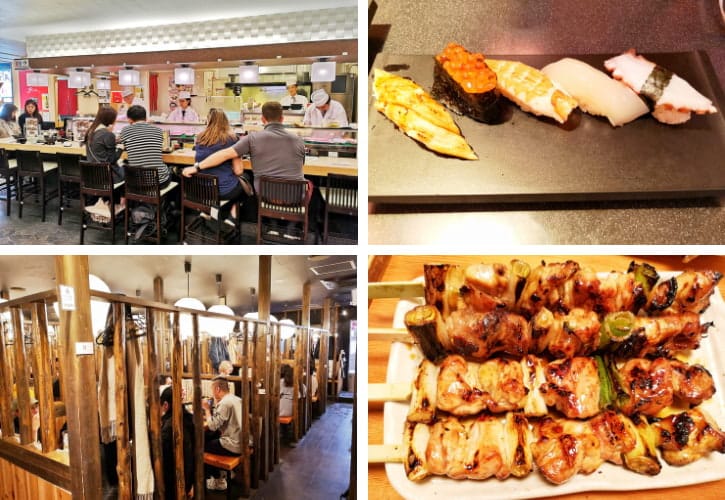
On your first night in Tokyo , you have 3 delightful dinner options to choose from . Pick the one that best suits your taste from the list below.
- Sushi Zanmai Shinjuku Higashiguchi: This popular sushi spot offers a wide range of sushi and traditional desserts. Expect to spend about 2,000 yen per person.
- Torikizoku: A great place for affordable yakitori (chicken skewers) and other dishes like meatballs, with each order costing 360 yen for 2 skewers.
- Hakata Tenjin Ramen: For more ramen, head here. Prices range from 600 to 1,100 yen. Their top dish, with roasted pork fillet, seaweed, and spring onion ramen, is 1,100 yen.

5. Don Quijote – 1 hour (6:40 PM to 7:40 PM)
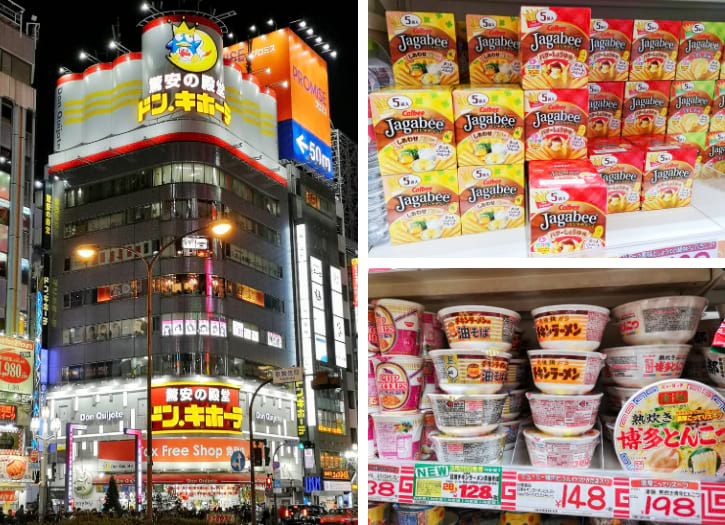
After dinner, visit Don Quijote , a 24-hour discount store . It’s the top spot in Tokyo for snacks, drinks, instant noodles, and souvenirs .
Plus, it’s tax-free , so you can save money on Japanese treats . Make sure to add it to your list.

6. Kabukicho – 30 minutes (7:40 PM to 8:10 PM)
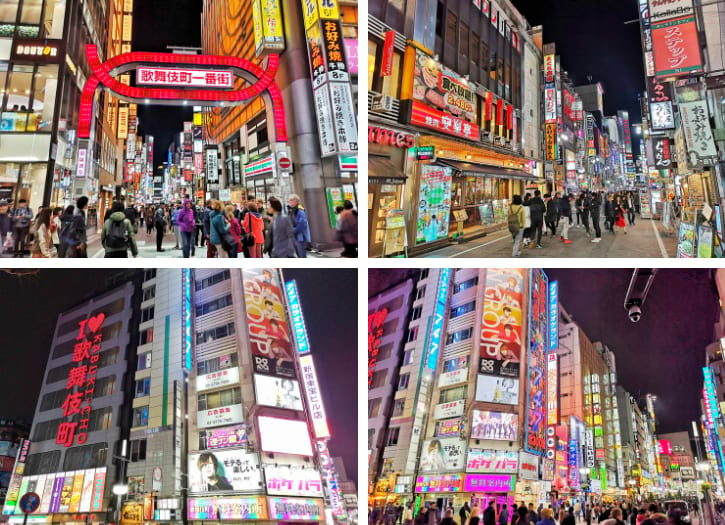
Once you’re done with shopping, Kabukicho is a great spot to have on your evening itinerary .
This renowned red-light district offers a night full of vibrant entertainment . However, it’s best to simply stroll around and soak in the sparkling ambiance .
Be cautious of accepting offers from locals to visit bars and nightclubs, as they can come with high costs and potential hidden fees.

7. Godzilla Head – 10 minutes (8:10 PM to 8:20 PM)
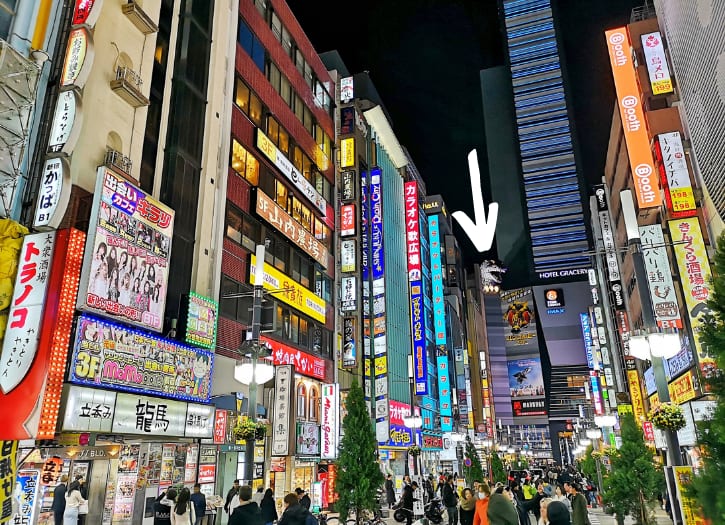
While exploring Tokyo, make sure not to miss the iconic Godzilla Head situated in Kabukicho .
Here, you can snap a selfie of the iconic character and listen to his intense roar. At times, this giant also emits smoke and laser lights.

8. Omoide Yokocho – 1 hour (8:20 PM to 9:20 PM)
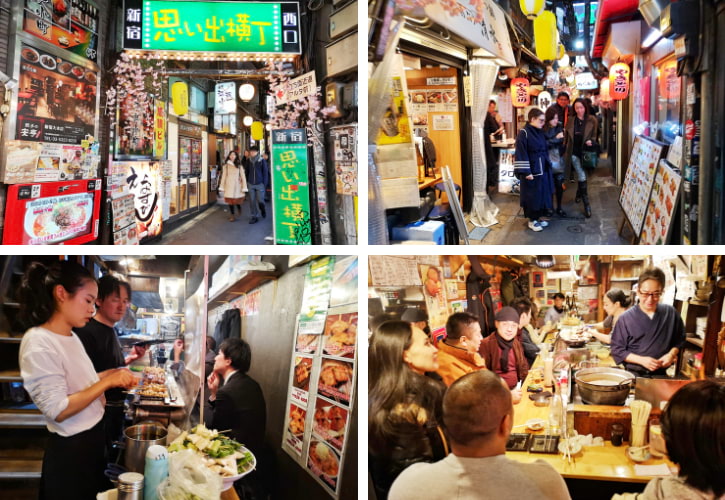
Walking down Omoide Yokocho is a must for a fun night. This alley has a cool, old-school feel and is famous for its yummy yakitori chicken .
And when you’re there, you should definitely try the grilled chicken at one of the small eateries. It’s delicious!
Plus, there are lots of tiny bars around with different kinds of drinks .
Don’t worry if you don’t speak Japanese – most stalls have menus in English . It’s a great way to experience local Tokyo life!

The Tokyo itinerary planned for day 2 covers the areas listed below:
- 9:00 AM: Meiji Shrine
- 11:00 AM: Harajuku’s Takeshita Street
- 1:00 PM: Shibuya
1. Meiji Shrine – 2 hours (9:00 AM to 11:00 AM)
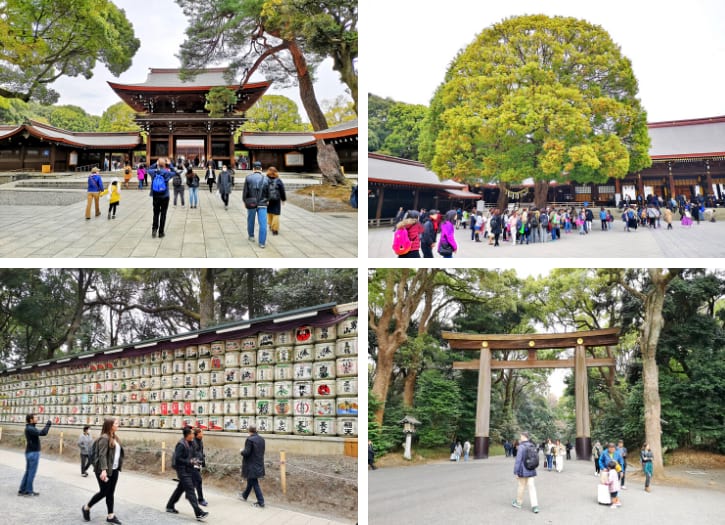
Kick off your Tokyo morning adventure at Meiji Shrine which is located right in the middle of a pretty forest .
As you visit, you’ll pass through grand torii gates and tree-lined paths, all surrounded by the beauty of nature .
Once at the shrine, explore its traditional architecture and witness Shinto rituals. If you’re lucky, you might even see a traditional wedding there.
This serene spot in the bustling city is perfect for relaxation and learning about Japanese culture .

2. Harajuku’s Takeshita Street – 2 hours (11:00 AM to 1:00 PM)

A quick overview of the itinerary for visiting Takeshita Street, one of Tokyo’s most popular and busiest streets:
- 11:00 AM: Stroll Around the Street
- 11:15 AM: Paris Kid’s
- 11:45 AM: Daiso
- 12:15 PM: Totti Candy Factory
- 12:25 PM: Marion Crepes
- 12:35 PM: McDonald’s/ Yoshinoya (Lunch)

a) Stroll Around the Street – 15 minutes (11:00 AM to 11:15 AM)

Put Takeshita Street on the list for your Tokyo sightseeing trip. It’s a great place for shopping and trying new foods .
This lively street is packed with cool shops selling trendy clothes, unique accessories, and fun souvenirs .
Don’t forget to try the street food here – the crepes and cotton candy are amazing !
There are also lots of cafes where you can relax and watch the bustling street.
b) Paris Kid’s – 30 minutes (11:15 AM to 11:45 AM)
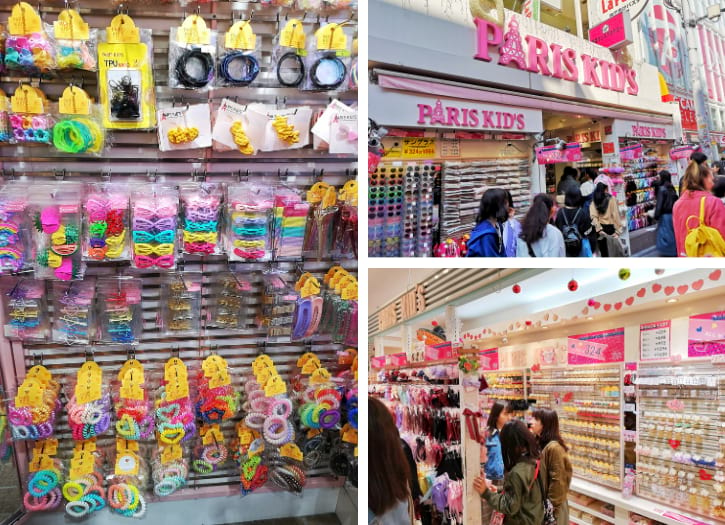
If you’re looking for stylish yet inexpensive accessories , head to Paris Kid’s . This store has all kinds of cute stuff for your kids, from hair clips to bow ties to flower crowns .
On top of that, they have sunglasses, key chains, jewelry, and character goods . So, shop all you want and bring home your wished list.
c) Daiso – 30 minutes (11:45 AM to 12:15 PM)
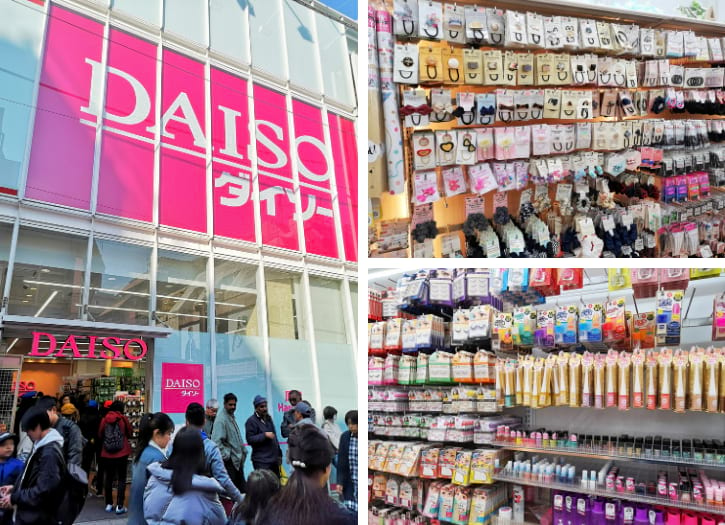
Don’t miss the chance to visit Daiso . This popular 100-yen store is a crowd favourite, known for its budget-friendly shopping .
It’s packed with a wide range of items, from quirky Japanese stationery and adorable kitchen gadgets to cute home decorations .
Whether you’re on the hunt for unique souvenirs or just eager to immerse yourself in the local shopping scene, Daiso is an essential stop on your Tokyo adventure.
d) Totti Candy Factory – 10 minutes (12:15 PM to 12:25 PM)
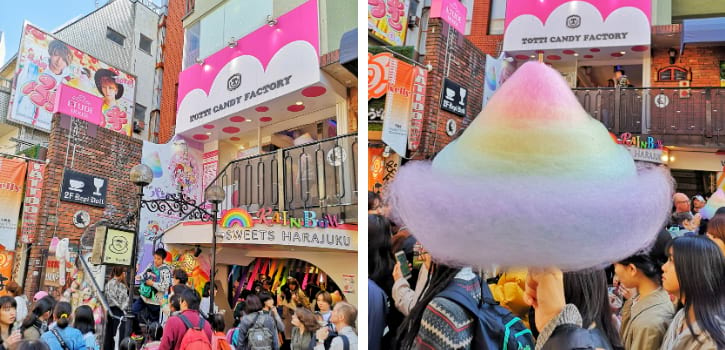
When exploring Takeshita Street in Tokyo, make sure the Totti Candy Factory is in your travel list . This candy wonderland is seriously a dream destination for the sweet tooth .
Inside this adorable store are different arrays of sugary treats. They have lollipops, cake pops, marshmallows, sour candies, and gummies.
And of course, don’t dare miss their best-seller, the giant rainbow cotton candy !
e) Marion Crepes – 10 minutes (12:25 PM to 12:35 PM)
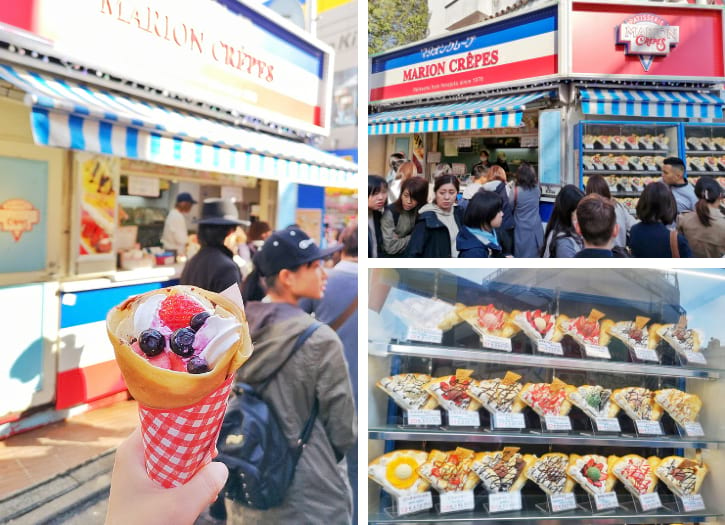
While in this street, you’ll also come across another top-rated food spot , the Marion Crepes .
Their crepes are tasty, and you can enjoy them while walking around.
There’s a variety to choose from, like strawberry ice cream with whipped cream and fruit , or even unique ones like tuna, cheese, and curry fillings .
f) McDonald’s or Yoshinoya – 25 minutes (12:35 PM to 1:00 PM)
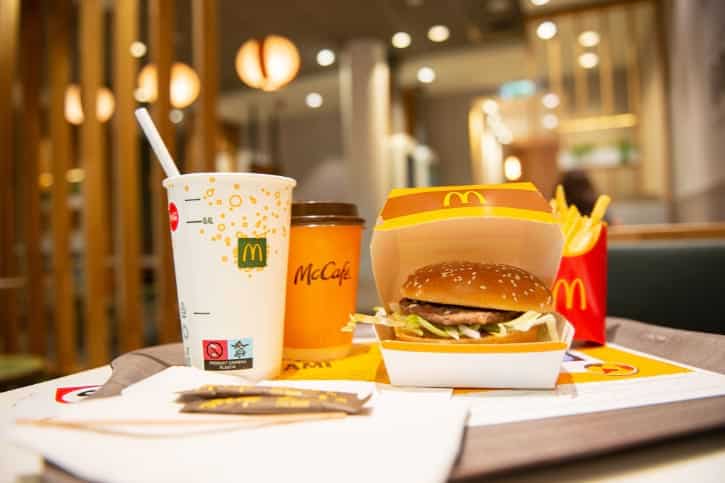
If you’re hungry, you can have your lunch at one of the restaurants listed below, all of which are located on Takeshita Street.
- McDonald’s: If you’re craving chickens or burgers, head to this famous fast-food chain. This is a great option for those who want to save money. The chicken burger costs 200 yen, while the beef burger is priced at 220 yen.
- Yoshinoya: For tasty Japanese foods at an affordable price, you can take your lunch here. They have bento meals, beef bowls, and other Japanese treats to choose from. All priced at around 700 yen each.

4. Shibuya – 8 hours (1:00 PM to 9:00 PM)

The attractions that will be visited in Shibuya during the afternoon are:
- 1:00 PM: Hachiko Statue
- 1:15 PM: Shibuya Crossing
- 1:30 PM: Disney Store
- 2:00 PM: Nintendo Tokyo
- 3:00 PM: Shibuya Center-gai
- 4:00 PM: Mega Don Quijote
- 5:00 PM: Shibuya 109
- 6:30 PM: Uobei Shibuya Dogenzaka (Dinner)
- 7:00 PM: Shibuya Sky at Shibuya Scramble Square

a) Hachiko Statue – 15 minutes (1:00 PM to 1:15 PM)
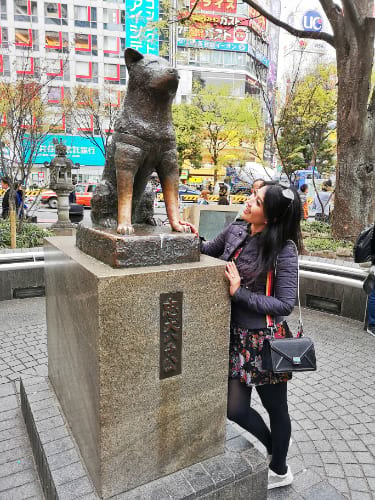
Start your Shibuya exploration at the Hachiko Statue. It’s right outside Shibuya Station and is a famous meeting spot .
Hachiko was a loyal dog, and his statue is a symbol of loyalty and friendship. It’s a great place to take photos.
b) Shibuya Crossing – 15 minutes (1:15 PM to 1:30 PM)
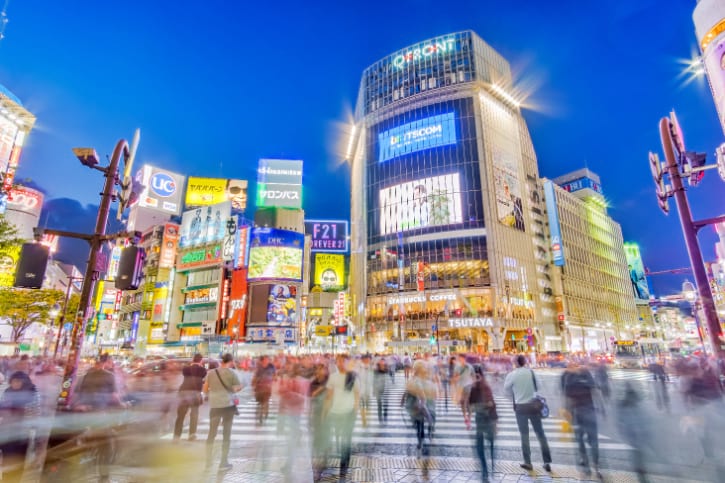
Shibuya Crossing is an amazing sight you shouldn’t miss. It’s known as one of the busiest pedestrian crossings in the world .
When you’re there, take a moment to just watch the wave of people crossing from all directions – it’s really something special .
Make sure to cross it yourself too; it’s an experience! There are lots of shops and restaurants around, so after crossing, you can explore or grab a bite to eat.
c) Disney Store – 30 minutes (1:30 PM to 2:00 PM)
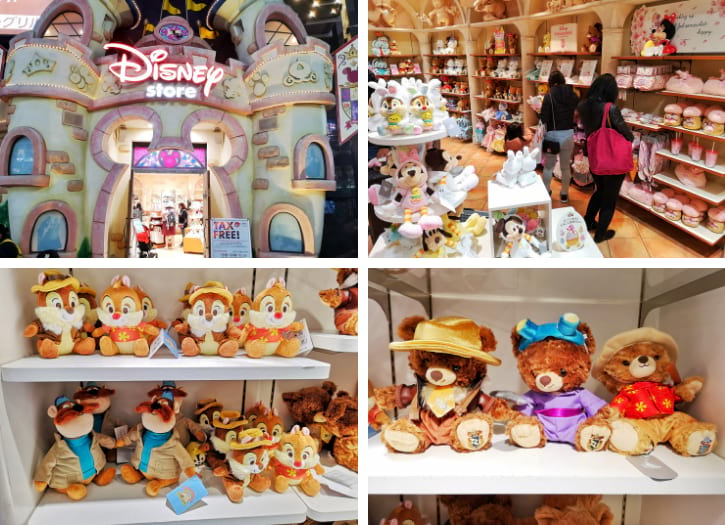
Other than Tokyo Disneyland and DisneySea, Disney Store is another great site to buy Disney items .
Check out the extensive assortment of cute plush toys of your favourite Disney characters.
This famous Disney retail store also offers different collectibles and character clothes .
Besides the great goodies, the shop’s design is notable. Take some snaps of the castle-like features while shopping around.
d) Nintendo Tokyo – 1 hour (2:00 PM to 3:00 PM)

Nintendo TOKYO is on the 6th floor of Shibuya PARCO and it’s a haven for gamers.
Here, you’ll find exclusive items like one-of-a-kind Mario plushies and special Link figures that are hard to come by elsewhere.
Don’t forget to get a photo with the big Mario statues , too. It’s a cool spot to capture memories.
For anyone who loves Nintendo, this is your spot in Shibuya. Don’t miss out on the fun!
e) Shibuya Center-gai – 1 hour (3:00 PM to 4:00 PM)
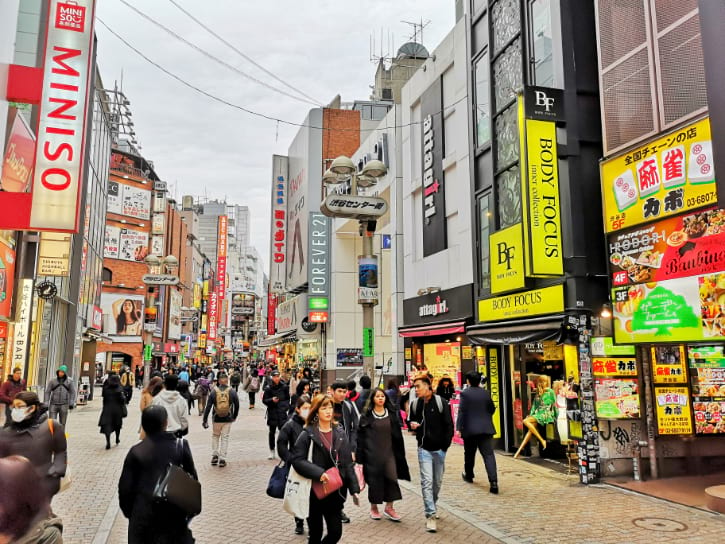
Go hunting for some fashion items at Shibuya Center-gai. This area is known for its many famous fashion brands like H&M, GU Shibuya, UNIQLO, ZARA, and even Prada .
On top of that, you’ll also find popular chain stores like Mega Don Quijote and Miniso.
Take a walk along this bustling street, and you’ll discover more treasures like upscale boutiques, local restaurants, and cozy bars.
It’s a must-visit for shopping and experiencing Tokyo’s vibrant street culture. Enjoy your time exploring!
f) Mega Don Quijote – 1 hour (4:00 PM to 5:00 PM)
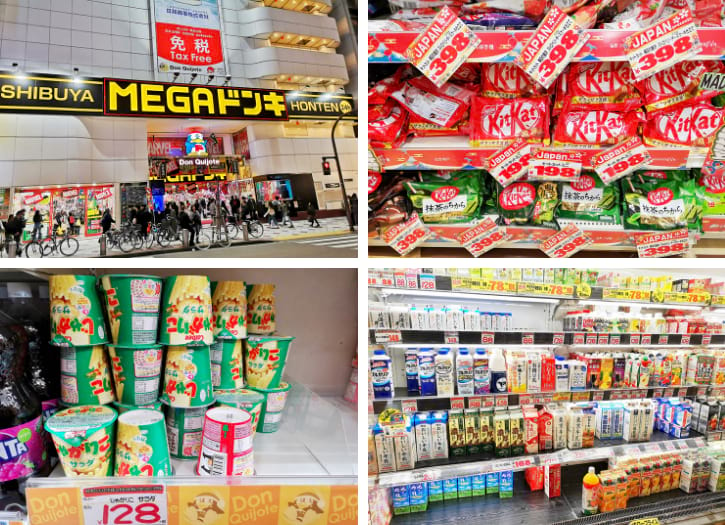
Proceed to Mega Don Quijote for another round of shopping.
This renowned chain store offers various Japanese snacks like Calbee, Sennarido Wasabi Pistachios, Kororo, and Umaibo.
For the chocolates, see their selection of Kit Kat, Macadamia Chocolates, Meiji Almond Chocolate, and Pocky.
You’ll also find a lot of Japanese instant noodles , including Nissin Mouko Tanmen, Maruchan Seimen Tonkotsu, Ippudo, and Maruchan Menzukuri Miso.
g) Shibuya 109 – 1.5 hours (5:00 PM to 6:30 PM)
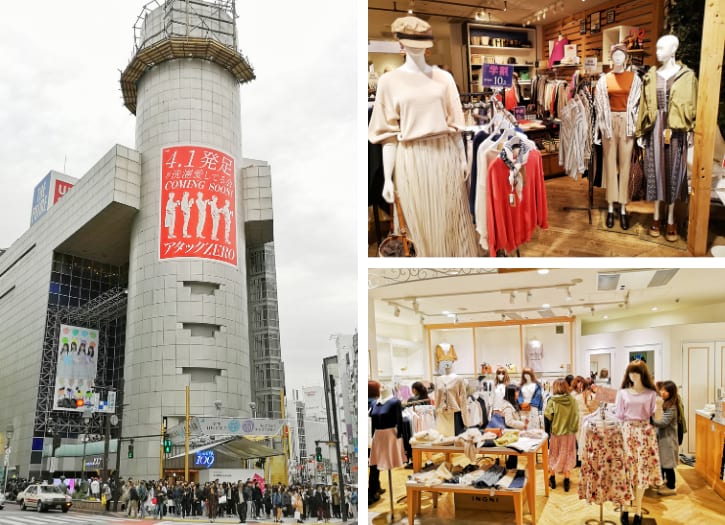
The next stop is Shibuya 109 , which is also a prominent store for the latest fashion trends .
This is a great site for trendsetters and fashionistas looking for reasonably priced items .
Look into the stylish collection of dresses, shirts, pants, skirts, and all kinds of apparel .
They also have a range of shoes, bags, and accessories for your fashion needs.
h) Uobei Shibuya Dogenzaka – 30 minutes (6:30 PM to 7:00 PM)
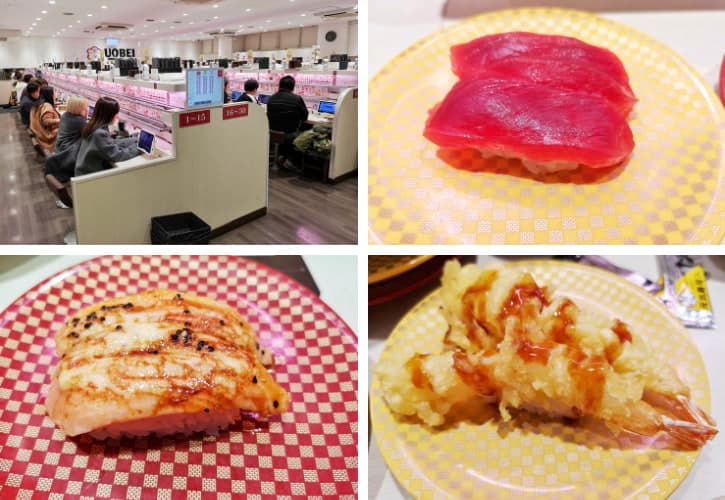
Uobei Shibuya Dogenzaka is one of the famous conveyor belt sushi restaurants in Tokyo .
Here, you get the freshest sushi variations at an affordable price .
Since this is a rotating sushi diner, it’s much easier to order your favourites using the built-in tablet. Most of the sushi here costs between 110 yen and 130 yen per plate .
i) Shibuya Sky at Shibuya Scramble Square – 2 hours (7:00 PM to 9:00 PM)
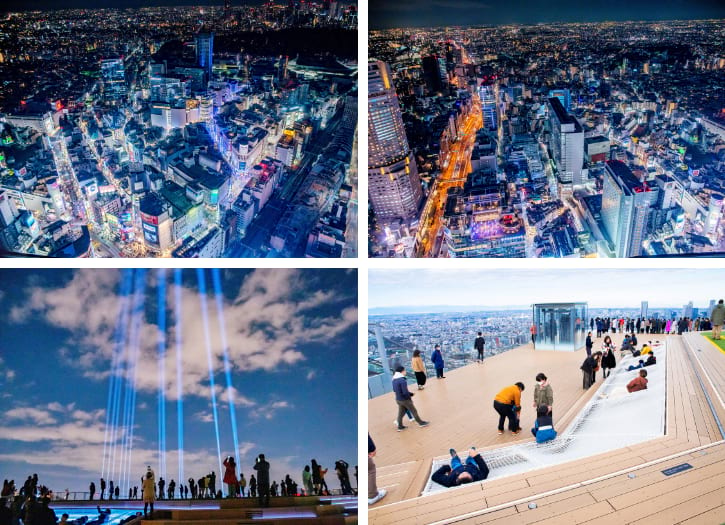
At night, head to the popular attraction in Tokyo, Shibuya Sky . From here, you’ll enjoy a panoramic view of the cityscape .
And if you go here during night-time, then you’ll be surrounded by glittering buildings and city lights.
The view here is truly breathtaking, and this place is a must-visit.
Take Note: Tickets for Shibuya Sky are very popular. It is recommended that you buy the entry tickets here in advance to avoid being sold out on the day of your visit.
SHIBUYA SKY consists of 3 zones:
- SKY GATE: It’s located on the 14th floor, where you can purchase entry tickets. From here, take the elevator up to the 45th floor. And then, ride the escalator to reach the Sky Stage and Sky Gallery on the 46th floor.
- SKY STAGE: This outdoor observation deck offers breathtaking views of the city. Here, you can capture the spectacular skyline dotted with gigantic buildings. This is also a nice location to see some Tokyo landmarks like the Tokyo Tower, Roppongi, Mount Fuji, and Tokyo Bay.
- SKY GALLERY: Another great spot to catch the panoramic Tokyo cityscape is this indoor observation deck. Additionally, this area comes with unique features like a viewing gallery, a cafe, and a bar lounge.

All travelers should ensure their itinerary has Tokyo Disneyland on it. This magical place is truly a dream destination for both kids and adults .
Just imagine walking into a world filled with Disney magic. You’ll find everything from classic attractions like “It’s a Small World” to exciting rides like “Splash Mountain”.
But there’s more than just rides. You can watch amazing parades with dazzling floats and characters dancing in the streets .
And, of course, you’ve got to snap a photo with Mickey and Minnie .
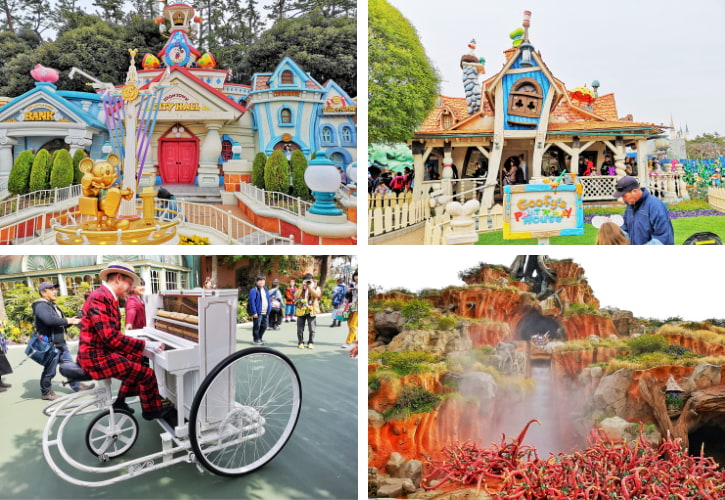
I took a lot of beautiful photos of the rides and shows during my trip. All these are included in my other article, so try to read my guide to the best Tokyo Disneyland rides for more details.
Tokyo Disneyland doesn’t sell tickets at the park. You need to buy them online . Don’t wait too long to get your tickets. It’s a really popular place, and tickets can go fast .
Plan ahead and click here to book your Disneyland tickets early , so you don’t miss out.

You can refer to my article on how to get to Tokyo Disneyland if you’d like more details about reaching the park.
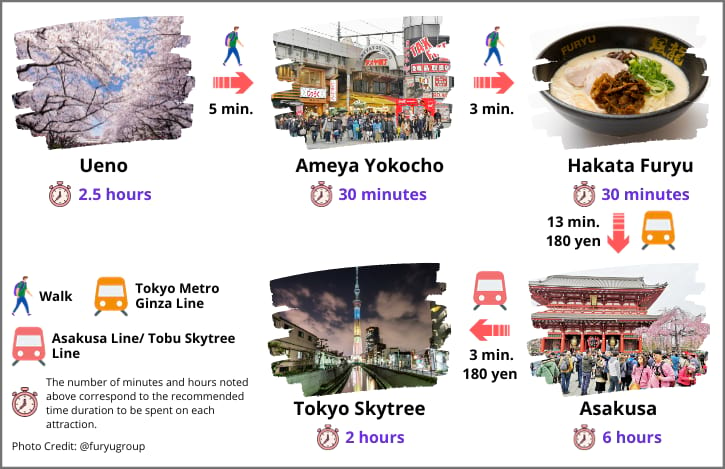
The places to go in Tokyo on the fourth day of the itinerary:
- 9:00 AM: Ueno
- 11:30 AM: Ameya Yokocho
- 12:00 PM: Hakata Furyu (Lunch)
- 12:30 PM: Asakusa
- 6:30 PM: Tokyo Skytree
1. Ueno – 2.5 hours (9:00 AM to 11:30 AM)
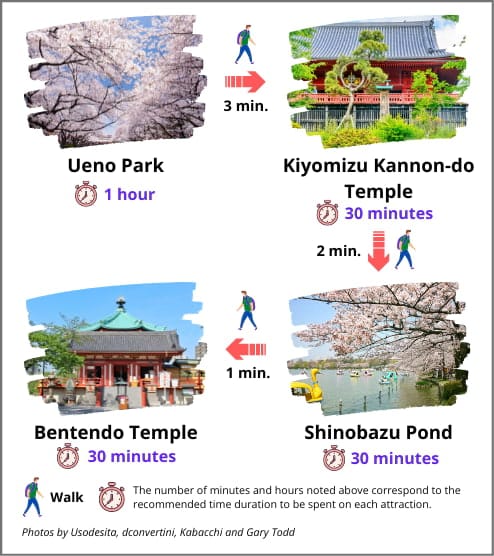
Make your morning memorable by exploring Ueno . Surrounded by beautiful natural views, this garden allows you to fully immerse yourself in nature. Here are the main highlights of what to explore in this area.
- 9:00 AM: Ueno Park
- 10:00 AM: Kiyomizu Kannon-do Temple
- 10:30 AM: Shinobazu Pond
- 11:00 AM: Bentendo Temple

a) Ueno Park – 1 hour (9:00 AM to 10:00 AM)
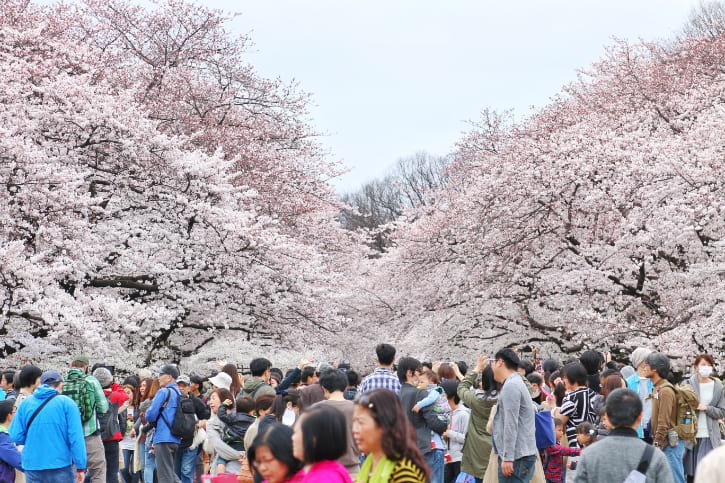
Get started with your day by checking out Ueno Park . This large and beautiful public park in Ueno neighbourhood , Tokyo is such a beautiful place to stroll around .
You will be encircled by stunning views to help you relax and enjoy your trip . While navigating the park, take some pictures and appreciate the natural scenery .
And if you visit during springtime , you’ll be welcomed by the spectacular cherry blossom all over the pathways .
b) Kiyomizu Kannon-do Temple – 30 minutes (10:00 AM to 10:30 AM)
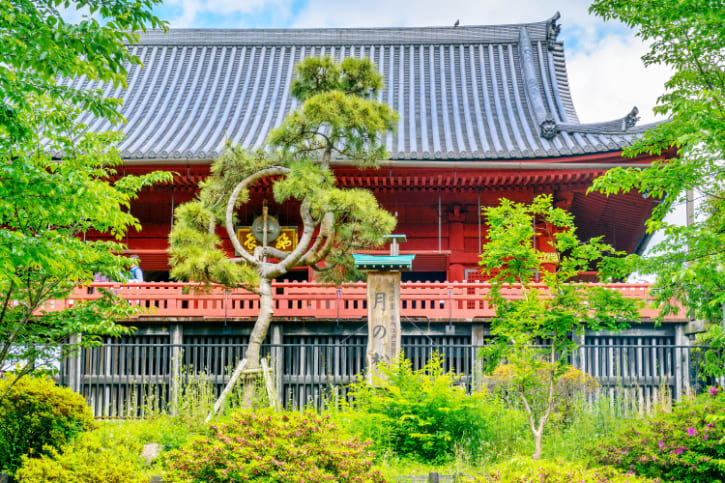
After wandering around, head to the Kiyomizu Kannon-do Temple and pay your respects to the thousand-armed goddess of mercy.
This shrine is frequented by women who wish to conceive and pray for their children’s protection and good health.
The temple itself is a work of art. Look closely into the architecture, which follows the unique Koyomizudera temple design in Kyoto.
c) Shinobazu Pond – 30 minutes (10:30 AM to 11:00 AM)
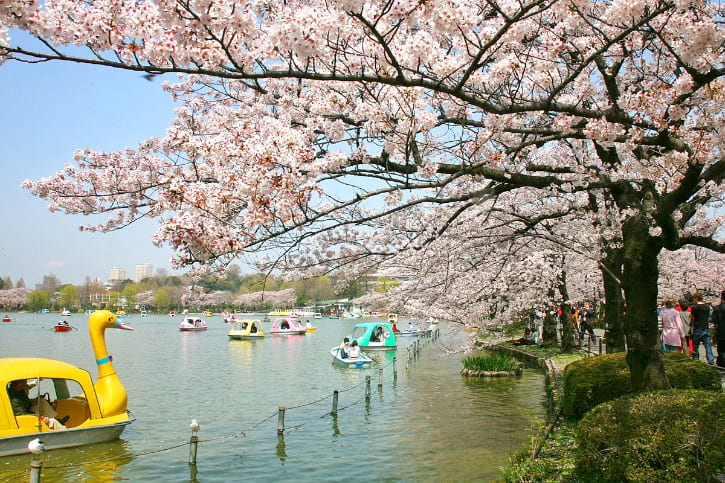
Another favourite spot is the Shinobazu Pond . This spacious area is actually divided into three sections .
The first one is the lotus pond , which is filled with beautiful lotus flowers .
The second one is the duck pond , which shelters ducks and other freshwater birds .
The last area is none other than the boat pond . Rent a boat, paddle around, and enjoy the water surrounded by greenery .
d) Bentendo Temple – 30 minutes (11:00 AM to 11:30 AM)
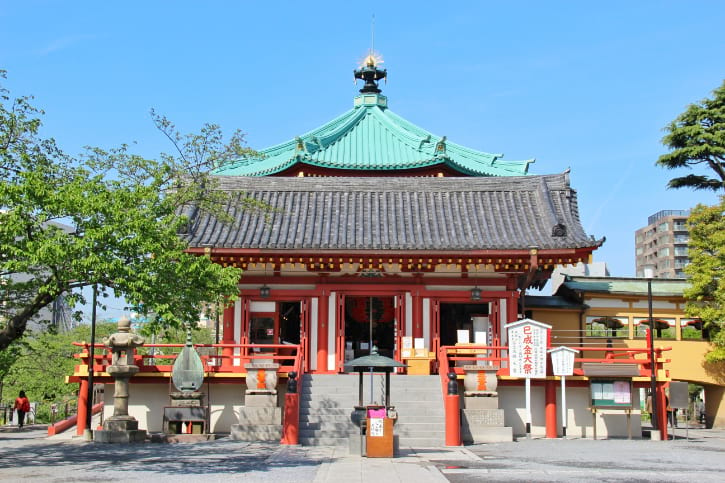
Spot the Bentendo Temple, a hexagonal structure sitting in the heart of Shinobazu Pond.
This religious tower is dedicated to the goddess, Benzaiten , for the peace and prosperity of the locals . It is also known that praying here grants you good fortune .
So during your visit, pay homage to the goddess and call upon your personal intentions, whether it’s for academics, finances, or health.
2. Ameya Yokocho – 30 minutes (11:30 AM to 12:00 PM)
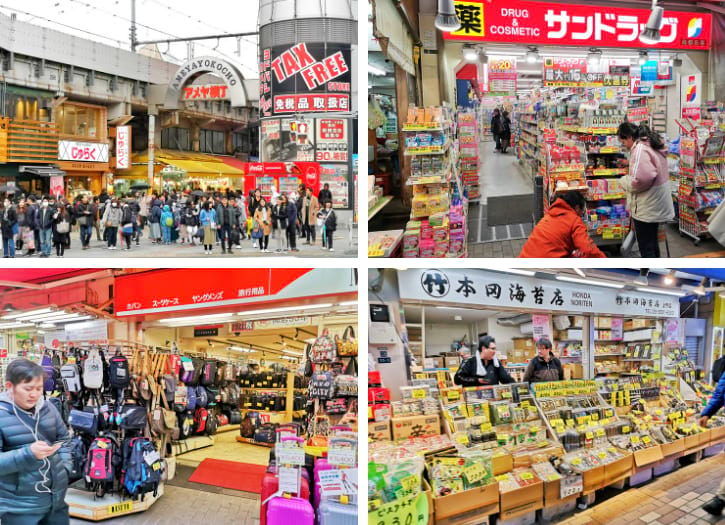
After your Ueno exploration, it’s time to set off to Ameya Yokocho , which actually means candy store alley .
Stroll along the passageway and you’ll find plenty of local stores selling all kinds of products, from clothes to bags and cosmetics .
And of course, you can’t miss the dried food, fresh produce, and spices .
While roaming around, you will also come across a lot of fruit vendors . Grab some of these fresh treats on a stick and enjoy.

3. Hakata Furyu – 30 minutes (12:00 PM to 12:30 PM)
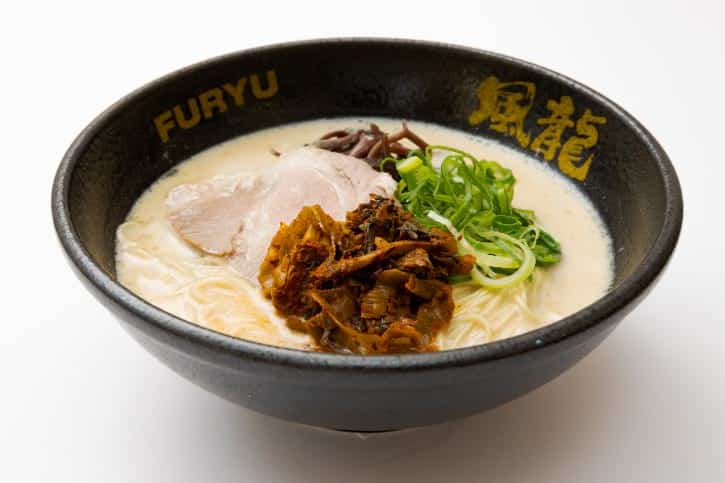
You have 3 lunch options here. Personally, I would recommend Hakata Furyu .
- Hakata Furyu: Try a Tonkotsu ramen that comes in different noodle textures. This shop allows you to choose the hardness of the noodle―soft, medium, hard, and very hard options. The price is 1,020 yen.
- Menya Musashi Bukotsu Soden: This shop serves Tsukemen, a unique ramen wherein the noodles are consumed after dipping it in the soup. They also provide three taste options―white, black, and red.
- Matsuya: Savour a bowl of beef rice in this famous restaurant. Aside from serving tasty food, this is a great spot if you want to save money.

4. Asakusa – 6 hours (12:30 PM to 6:30 PM)

Itinerary details for afternoon in Asakusa :
- 12:30 PM: Dress Kimono
- 1:30 PM: Nakamise Shopping Street
- 2:30 PM: Sensoji Temple (The Most Beautiful Temple in Tokyo)
- 3:00 PM: Suzukien Asakusa
- 3:30 PM: Asakusa Denboin-Dori
- 4:00 PM: Shin-Nakamise Shopping Street
- 5:00 PM: Return Kimono
- 5:30 PM: Asakusa Culture Tourist Information Center
- 6:00 PM: Tendon Tenya/ Unatoto (Dinner)

a) Dress Kimono – 1 hour (12:30 PM to 1:30 PM)

Experience how it feels like to be a local by wearing a kimono. This traditional attire exudes the uniqueness and sophistication of Japanese culture.
And if you want to try one, you can check out this famous shop that offers excellent kimono rental service .
On top of that, they also provide hairstyling for women . Just make sure to make a reservation in advance online because they are often fully booked.
b) Nakamise Shopping Street – 1 hour (1:30 PM to 2:30 PM)
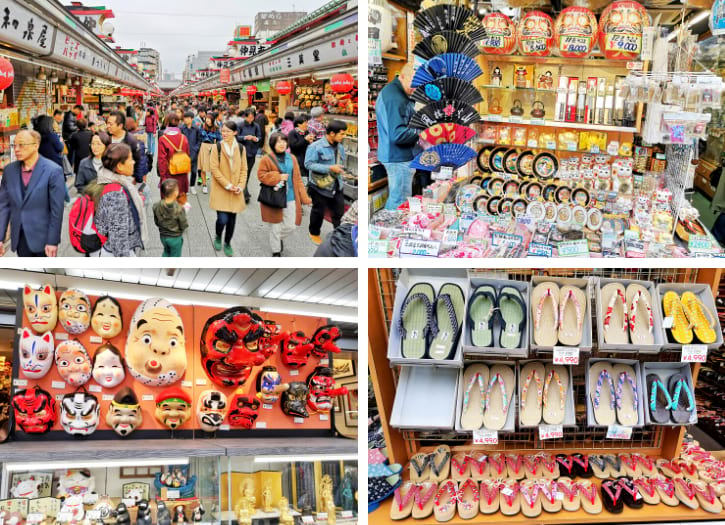
When you visit Nakamise Shopping Street , you’re in for a real treat. This bustling street leads to Senso-ji Temple and is full of life.
It’s lined with small shops selling everything from traditional Japanese souvenirs like fans and lantern magnets to tasty local snacks.
I recommend trying some of the street food here – Kaminari Okoshi , which are crispy, puffed rice crackers, and Kibi Dango , mochi-like snacks that are renowned Japanese sweets.
It’s also a great place to pick up unique gifts . The atmosphere is lively, and there’s always something interesting to see.
c) Sensoji Temple – 30 minutes (2:30 PM to 3:00 PM)
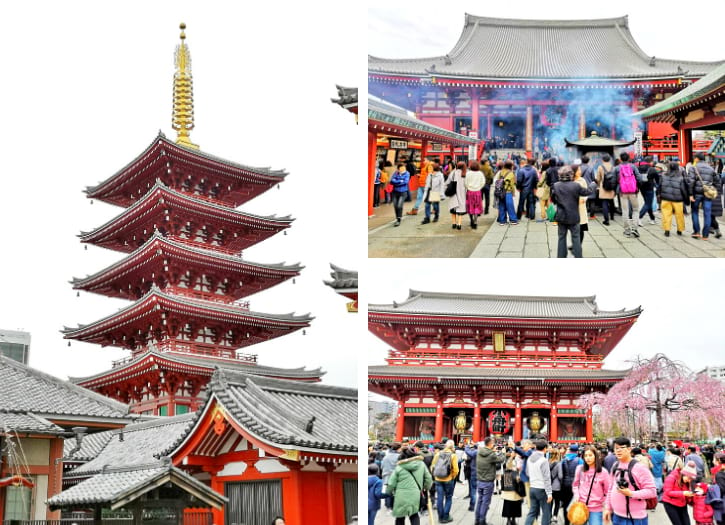
When in Asakusa, you should pay a visit to Sensoji Temple , which is considered Tokyo’s oldest temple .
Before entering the temple complex, you’ll see a famous red lantern hanging at the entrance gate called Kaminarimon . Be sure to snap a photo there .
Then, proceed to explore the unique architectural design of the main shrine . Just beside the temple is the 5-storey pagoda , which is also worth checking out .
d) Suzukien Asakusa – 30 minutes (3:00 PM to 3:30 PM)
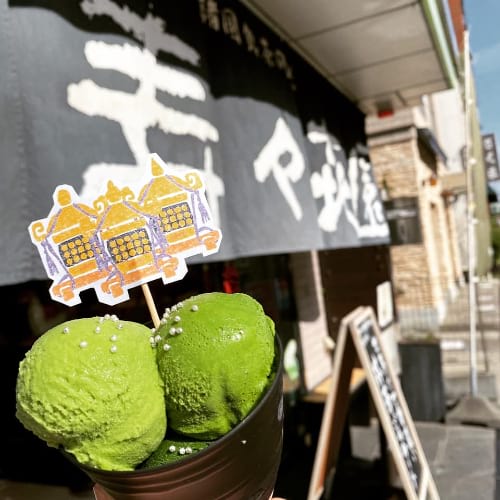
During your exploration, don’t miss the famous ice cream of Suzukien Asakusa . Choose from their variety of green tea flavours.
They have seven matcha intensity levels, with the richest as the most bitter one .
So, if you’re a matcha fanatic, you’d definitely fall in love with their amazing selection of matcha flavoured gelato .
e) Asakusa Denboin-Dori – 30 minutes (3:30 PM to 4:00 PM)

Don’t forget to check out the Asakusa Denboin-Dori. This charming street, located right next to the famous Senso-ji Temple , is like a step back in time.
Here, you’ll feel like you’ve stepped back in time. The street is lined with shops and stalls that sell traditional Japanese crafts, snacks, and souvenirs .
It’s perfect for finding unique gifts or just enjoying the old-time atmosphere.
And remember to bring your camera – the traditional architecture and bustling street life make for great photos .
Asakusa Denboin-Dori is more than just shopping; it’s a slice of old Tokyo you’ll love to explore.
f) Shin-Nakamise Shopping Street – 1 hour (4:00 PM to 5:00 PM)
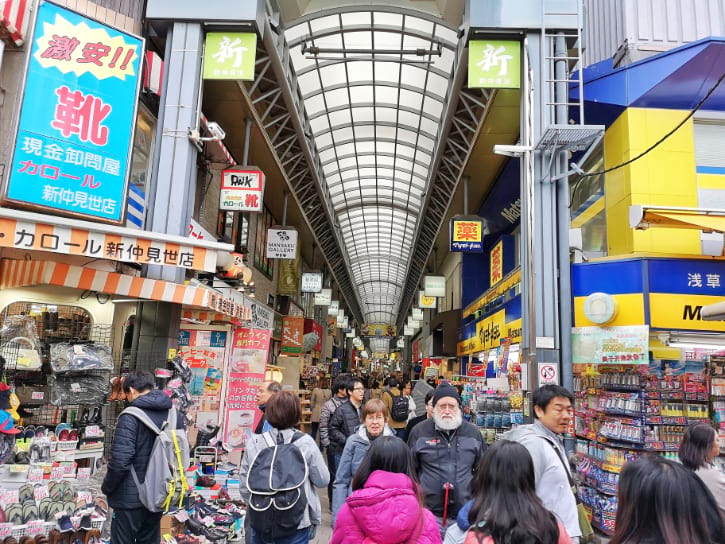
Walking through Shin-Nakamise Shopping Street , you’ll be impressed by the array of local items on display.
This street is filled with shops offering clothes, accessories, and traditional Japanese items .
It’s less crowded than the main Nakamise street , so you can shop at a more relaxed pace .
g) Return Your Rental Kimono – 30 minutes (5:00 PM to 5:30 PM)
Next, return your rented kimono, and then proceed to the next spot mentioned below.
h) Asakusa Culture Tourist Information Center – 30 minutes (5:30 PM to 6:00 PM)
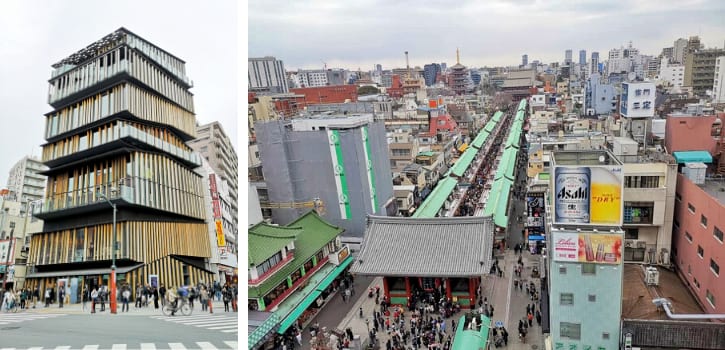
The Asakusa Culture Tourist Information Center is a stunning sight , even from afar.
Its architecture, resembling stacked boxes, is truly unique and catches the eye.
This building is a favorite among photographers for its striking appearance.
Don’t forget to visit the 8th floor for breathtaking views of Sensoji Temple, Nakamise Street, and Tokyo Skytree .
i) Tendon Tenya – 30 minutes (6:00 PM to 6:30 PM)
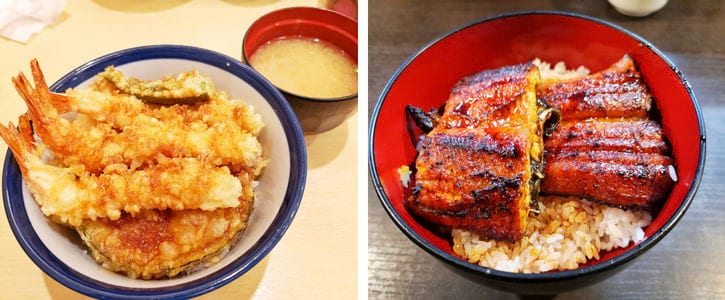
There are two popular restaurants in Asakusa where you can enjoy your dinner.
- Tendon Tenya: Try some of Tokyo’s best tendon at Tendon Tenya. They have a great menu with different tendon and Teishoku dishes. The top choice is the “All-Star Tendon” for 720 yen.
- Unatoto: This famous unagi place offers delicious, affordable eel dishes. You can pick from various eel bowls and sets. Their classic grilled eel rice bowl costs 590 yen.

5. Tokyo Skytree – 2 hours (6:30 PM to 8:30 PM)
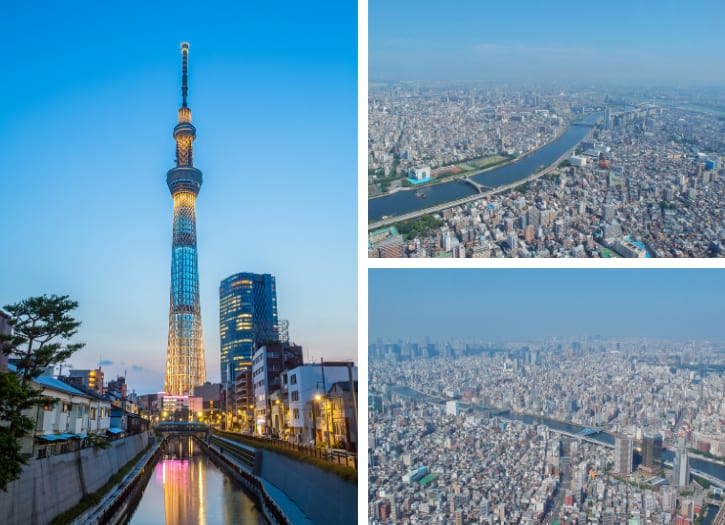
In the evening, spend some time at the Tokyo Skytree . It’s more than just a tower – it’s the tallest in Japan and offers incredible views of the city .
The Tembo Deck and Tembo Galleria are the main attractions of the building. From these observation decks, you’ll see various Tokyo landmarks illuminated by the city lights.
My tip: go in the evening to see Tokyo light up at night. It’s an experience you won’t forget.
Remember to buy your Tokyo Skytree tickets online , as they are in high demand and go fast , especially during peak season. Another advantage of booking online is that you can get an extra 15% discount .

Our day 5 itinerary involves taking a day trip from Tokyo to Mt. Fuji . I encourage you to visit this place because the landscapes here are incredibly beautiful.
Some of the things you can do there include exploring Lake Kawaguchiko and Oshino Hakkai . These two are very popular spots in the area.
You can also ride the Kachi Kachi Ropeway to easily capture the beautiful Mount Fuji as your background .
Try to check out my post on Tokyo to Mount Fuji day trip here to learn the best ways to reach the area. This also guides you in discovering all the must-visit attractions.
Transportation Guide:
For a stress-free trip to Mount Fuji from central Tokyo , you can check out the popular Bus Tour 1 / Bus Tour 2 / Bus Tour 3 here.
These buses take you directly to Mount Fuji and its surrounding attractions. Super convenient!
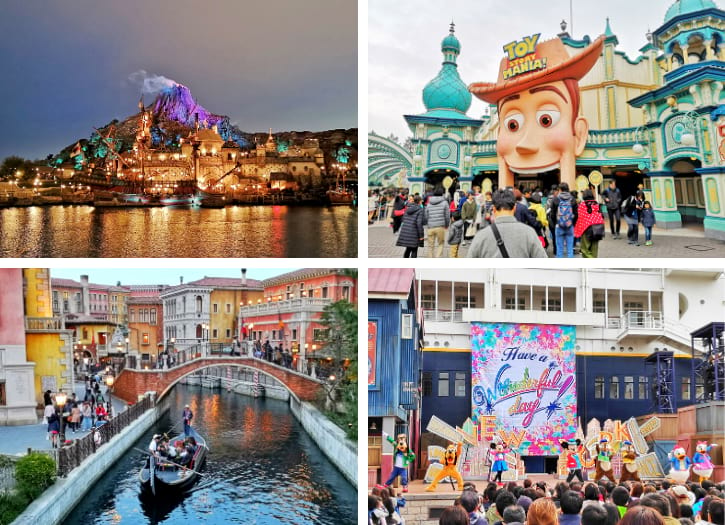
If you’re heading to Tokyo DisneySea , you’re in for an exciting day! The park focuses on ocean stories and offers a variety of thrilling and family-friendly rides .
Start at Mediterranean Harbor , which looks just like an Italian port and has cool water shows .
Don’t miss Mysterious Island with its volcano and awesome rides like “Journey to the Center of the Earth” .
Be sure to check out Toy Story Mania! in the American Waterfront area, a super fun 4D interactive ride based on the Toy Story movies.
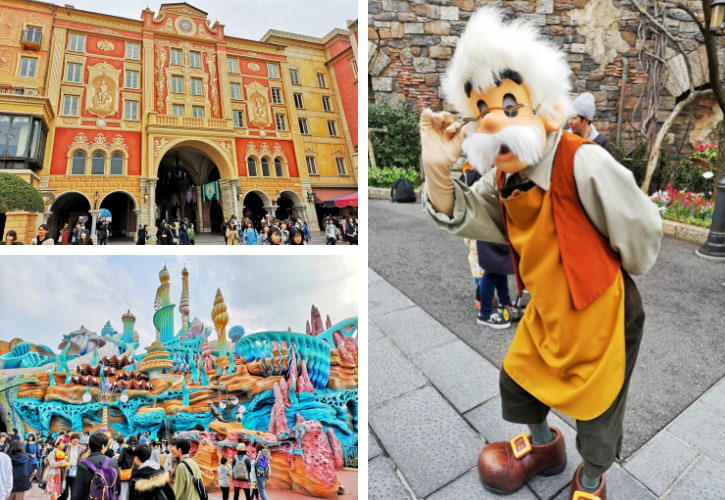
And that’s not all – you’ll get the chance to meet beloved Disney characters like Mickey Mouse, Donald Duck, and even Geppetto . These character meet-ups are great for memorable photos and interactions.
Each area has its own special rides, shows, and food. Also, the night shows over the water are a must-see.
Recommendation: Buy your DisneySea tickets online here before your trip. Tickets are not available for purchase on-site. Book them early, as they often sell out quickly.

On day 7 of this Tokyo itinerary, you will be going the following spots:
- 9:00 AM: Tokyo Metropolitan Government Building
- 11:30 AM: Odaiba
1. Tokyo Metropolitan Government Building – 1.5 hours (9:00 AM to 10:30 AM)
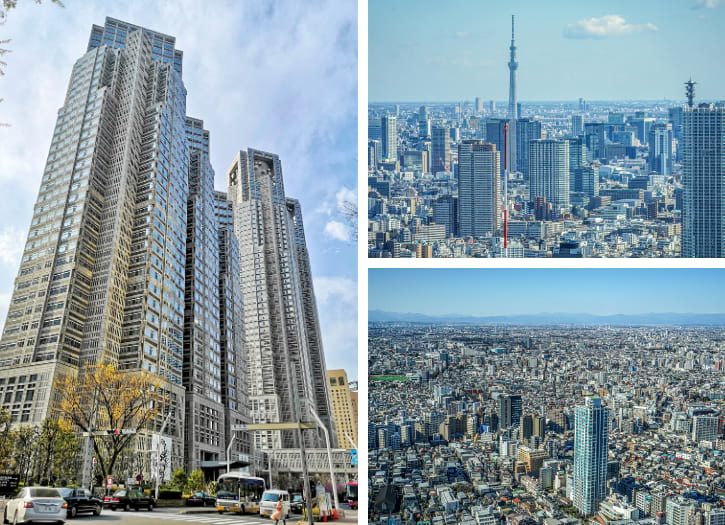
On the first stop of your last day trip , you’ll visit the Tokyo Metropolitan Government Building .
This building houses two observation decks : the North Tower and South Tower .
Conveniently, both decks are free to access . From these observation points, you can catch a glimpse of iconic sights like the Tokyo Skytree and Tokyo Tower .
And on a clear day , it’s easy to spot the famous landmark in Japan, Mount Fuji . For the best views , pick the North Observatory .

2. Odaiba – 8.5 hours (11:30 AM to 8:00 PM)

Itinerary breakdown for touring Odaiba :
- 11:30 AM: teamLab Planets TOKYO
- 1:30 PM: Food Court at DiverCity Tokyo Plaza (Lunch)
- 2:30 PM: Unicorn Gundam Statue
- 2:35 PM: Fuji Television Building
- 3:35 PM: Odaiba Statue of Liberty
- 3:40 PM: Odaiba Takoyaki Museum
- 4:10 PM: Tokyo Joypolis
- 6:10 PM: Odaiba Seaside Park
- 7:10 PM: Eggs ‘n Things (Dinner)

a) teamLab Planets TOKYO – 2 hours (11:30 AM to 1:30 PM)

You really can’t skip teamLab Planets TOKYO when you’re in Tokyo.
This amazing art museum is all about interactive, digital art.
You’ll walk through rooms with beautiful light displays and sounds that create an immersive world . The exhibits change around you, making you feel like you’re part of the art .
It’s a special experience that’s really unforgettable. You’re going to have a great time there!
A little suggestion: Book your teamLab Planets tickets in advance , as they tend to sell out quickly.

b) Food Court at DiverCity Tokyo Plaza – 1 hour (1:30 PM to 2:30 PM)

Head to the 2nd-floor Food Court at DiverCity Tokyo Plaza for lunch. It’s a great place to eat with a variety of options.
Try the Japanese ramen for a taste of local flavors or opt for tempura for a satisfying meal.
And if you’re in the mood for a classic favorite, you can grab a burger . It’s convenient and has something for everyone . Enjoy your meal!
c) Unicorn Gundam Statue – 5 minutes (2:30 PM to 2:35 PM)
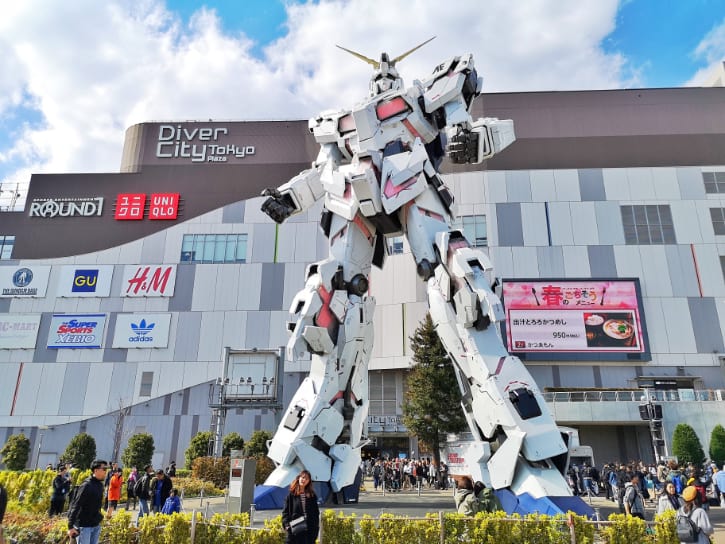
The towering Unicorn Gundam Statue is certainly hard to ignore. Catch a glimpse of this incredible structure that is positioned in front of DiverCity Tokyo Plaza .
And just along the area, you’ll see a landscape of flowers.
d) Fuji Television Building – 1 hour (2:35 PM to 3:35 PM)
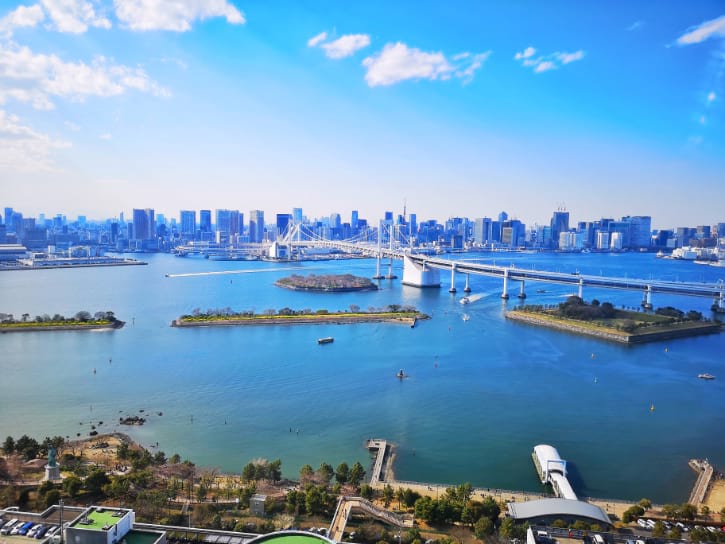
Check out the Fuji Television Building in Odaiba . It’s not just a TV station; it’s an attraction itself.
The building has a unique, futuristic design . You can go up to the observation deck for an amazing view of Tokyo Bay and the Rainbow Bridge .
They also have exhibits about popular TV shows and a shop where you can buy cool souvenirs. It’s a fun place to learn about Japanese TV and enjoy great views. Don’t miss it!
e) Odaiba Statue of Liberty – 5 minutes (3:35 PM to 3:40 PM)
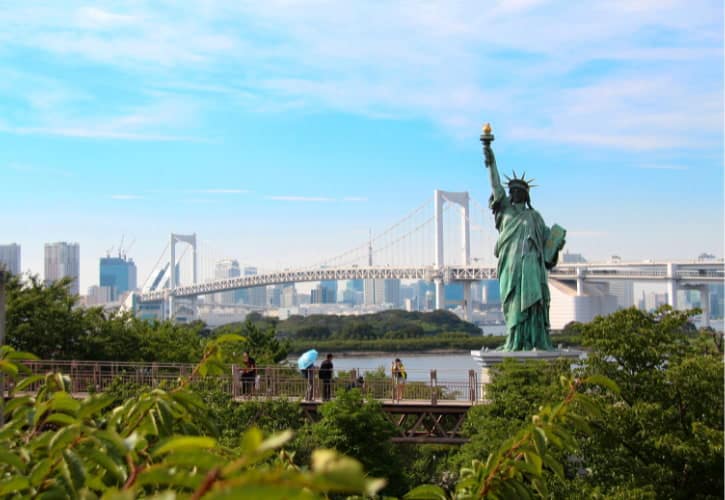
But of course, the Odaiba Statue of Liberty is a distinctive landmark in the area . So be sure to drop by the location and see its wonderful glory.
When taking a photo of the statue, don’t miss to include the Rainbow Bridge for a more panoramic capture.
f) Odaiba Takoyaki Museum – 30 minutes (3:40 PM to 4:10 PM)
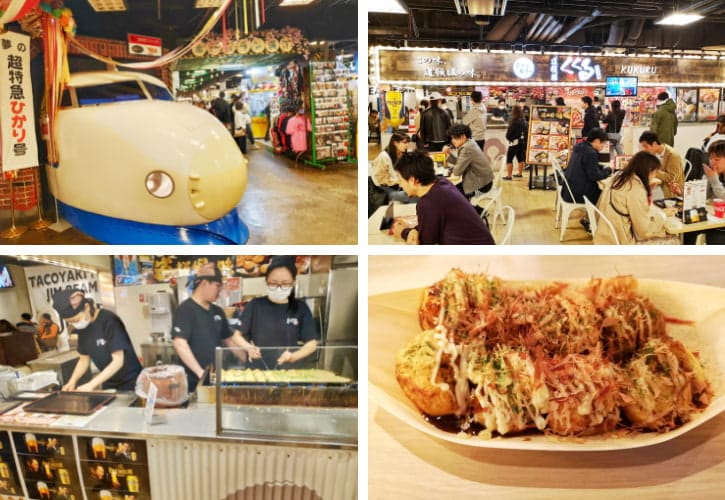
From the name itself, Odaiba Takoyaki Museum welcomes you to a place fully dedicated to Takoyaki lovers !
There are several stalls selling all kinds of Takoyaki flavors , so be sure to check them out.
Aside from that, there are lots of souvenirs available!
Plus, the unique Takoyaki designs all over the place are truly magical. So, take your time exploring this famous food theme spot and capture as many photos as you want.
g) Tokyo Joypolis – 2 hours (4:10 PM to 6:10 PM)
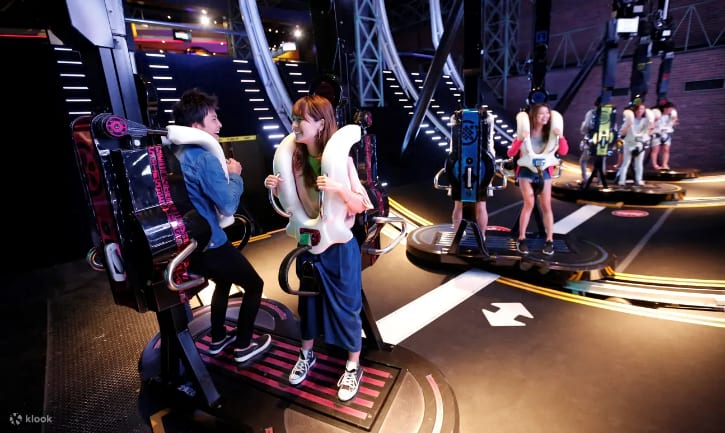
Have fun at Tokyo Joypolis with your family and friends. It’s a huge indoor amusement park, packed with thrilling rides and virtual reality games .
You’ll find roller coasters , arcade games , and a variety of VR experiences that are super fun .
Don’t miss out on the half-pipe ride and the VR zombie game. It’s the perfect place to spend a few hours, especially if you love gaming and rides. You’re sure to have a blast!
And if you decide to visit the place, you may purchase your Tokyo Joypolis tickets online and enjoy up to 20% OFF!
h) Odaiba Seaside Park – 1 hour (6:10 PM to 7:10 PM)
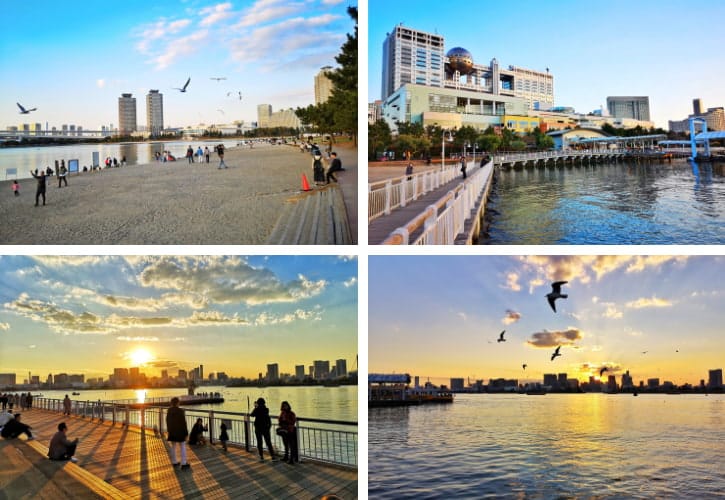
If you want to simply relax, include Odaiba Seaside Park in your schedule. This coastal green space is surrounded by blue vistas and green nature views.
And from afar, you can see the cityscape and some iconic landmarks.
Catch sight of the Rainbow Bridge and the Fuji Television Building.
Or you may just wander around the vast area and enjoy the scenery . Afterward, you can explore the eateries and shops nearby.
i) Eggs ‘n Things – 50 minutes (7:10 PM to 8:00 PM)
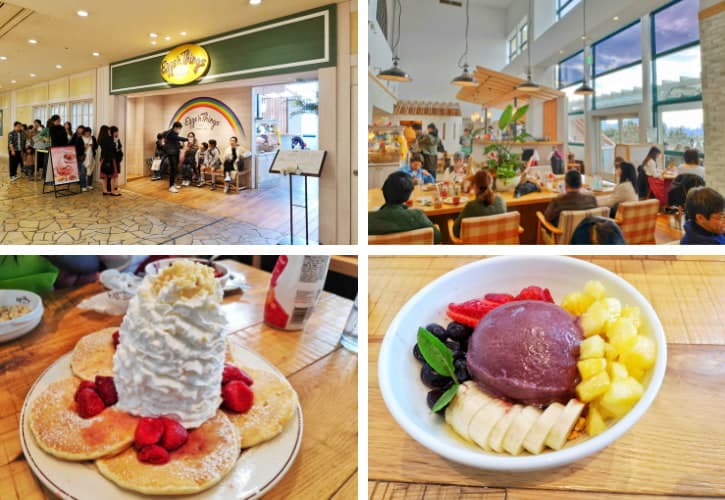
After a fun-filled day, head to Eggs ‘n Things and have a hearty dinner.
Although this restaurant is known for its breakfast options, they have lots of savory meals.
Go over their menu of tasty dishes, including spam & eggs , grilled potatoes , and chicken burger .
Complete your meal with their classic waffles or crepes. And for your drinks, choose from their selection of juice, coffee, lemonade, and soda.
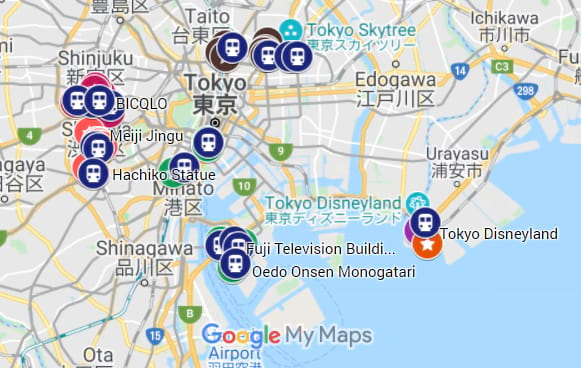
To help you easily visualize this travel plan in Tokyo from day 1 to day 7, you can refer to the map above.
The easiest way to get around Tokyo is by using subways and trains , which can take you to most tourist spots.
You can use Google Maps to help find routes and estimate travel times.
I recommend obtaining a Welcome Suica card for efficient and affordable travel in the city. This card helps save both time and money.
Why use the Welcome Suica Card
- Save time when commuting around Tokyo via train. Using your card, you simply tap it at the ticket gate and you can hop aboard the train with ease.
- There’s no need to queue up for buying individual tickets at ticket vending machines every time you board a train.
- It is very convenient and reliable. Plus, it allows you to ride the JR trains, metros, buses, and even taxis in Tokyo with ease.
- You can also use the card when buying items from convenience stores like 7-eleven, Lawson, and Family Mart.
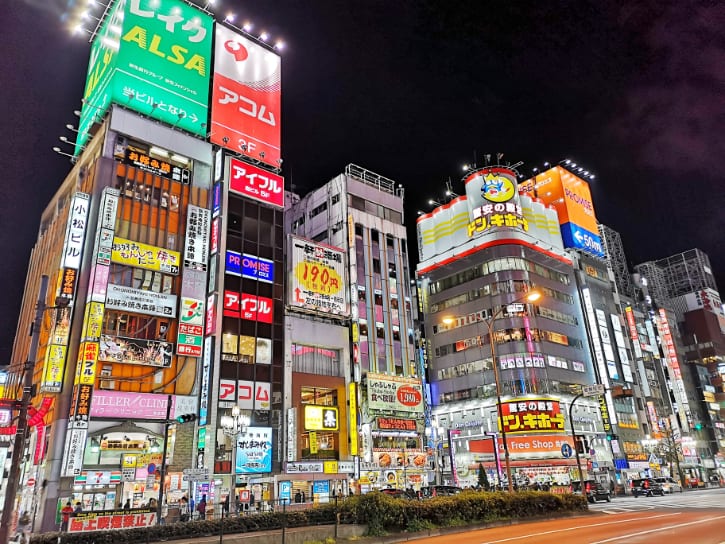
The best place to stay in Tokyo for travellers is Shinjuku . And if you want to stay in this area, make sure to book your hotel in advance .
Most hotels in the area sold out faster because of its convenient location ; hence, many travellers prefer to stay here when travelling to Tokyo.
Recommended Hotels in Shinjuku
- Citadines Central : Close to the JR train station with a Lawson store at the entrance and a 7-Eleven nearby. Don Quijote, Matsumoto Kiyoshi, and Kabukicho are just a 5-minute walk away.
- JR Kyushu Hotel Blossom Shinjuku : Only a minute away from both Lawson and 7-Eleven, and a 2-minute walk to Shinjuku Station.
- Tokyu Stay Shinjuku : Near Shinjuku-sanchome Station and a 5-minute walk to well-known Tokyo restaurants like Sushi Zanmai and Ichiran.
- Hotel Sunroute Plaza : Offers airport limousine service to Narita and Haneda. FamilyMart and Lawson are around the corner, and it’s a 4-minute walk to the train station.
6 Main Reasons Why Shinjuku is the Best Area to Stay in Tokyo for Tourists
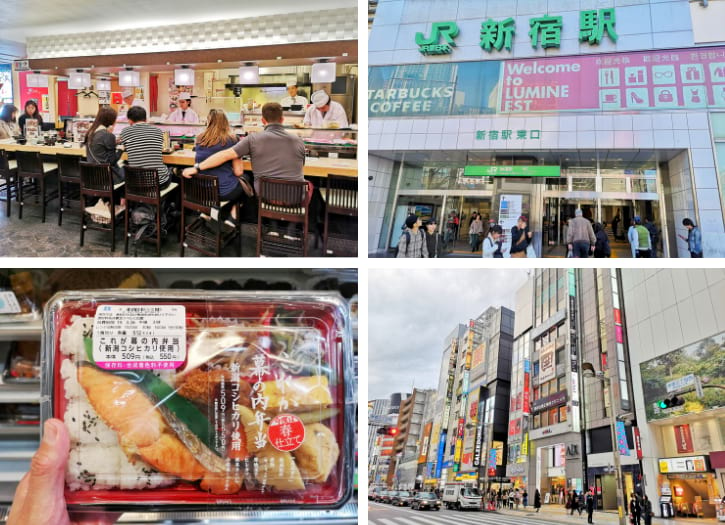
- Delicious Foods at Affordable Prices: This area is surrounded by many budget-friendly restaurants like Tendon Tenya, Hakata Tenjin, and Matsuya, as well as mid-range restaurants such as Ichiran and Sushi Zanmai.
- Convenient Train Access: Easily accessible JR and Tokyo Metro Stations provide quick links to major tourist spots.
- Plenty of 24-Hour Convenience Stores: FamilyMart, 7-Eleven, and Lawson are all nearby, offering snacks, meal boxes, and essentials.
- Great Shopping Options: For fashion, head to Bicqlo and Uniqlo; for beauty products, Matsumoto Kiyoshi and Daikoku Drug are close by. Don Quijote is perfect for Japanese snacks.
- Easy Bus Ride to Haneda Airport: For easy transportation from Haneda Airport to Shinjuku , take the limousine bus transfer for 1,250 yen. The travel time is around 30 minutes.
- Quick Access to Narita Airport: There is also a direct limousine bus from Narita Airport to Shinjuku , taking about 105 minutes. For a faster option, the Narita Express train takes 85 minutes and costs 3,250 yen.
For easy travel in Tokyo, get a Japan SIM card or rent a pocket WiFi . This helps with route searches and navigation on Google Maps. You can book them online and pick up at Haneda or Narita Airport.
My Tokyo guide for 7 days is now complete. I hope this itinerary helps you make the most of your visit to this vibrant city!
Travelling to Seoul? Take a look my Seoul itinerary here.

20 Best Tokyo Disneyland Rides You Shouldn’t Skip for All

17 Best Tokyo DisneySea Rides You Can’t Miss Now

17 Top Things to Do in Shibuya with My Ideal Itinerary
7 thoughts on “tokyo itinerary: the best 7-day guide for a fantastic trip”.
hello, I’m henokh wiranegara from Indonesia, thank you very much for making a blog about Tokyo, complete with itinerary photos, location photos. it really makes it easier for me to enjoy Tokyo. I have never found a blog as interesting as this one. Thank you very much for helping me on my holiday in Tokyo with my family. Thank you very much.
Thank you so much for this! I can see how much work you put into this. I like that there’s a suggested hours per spot and you’ve provided an infographic of the itinerary. I am glad came across your blog.
Thank you for your kind words, Maeriz! It took me many days to create this itinerary, and I hope it will make planning a trip to Tokyo easier for others and save them time on research. I’m glad to hear that you found the suggested hours and the infographic helpful. I wish you a wonderful journey to Tokyo!
I had been stuck for weeks trying to create an itinerary for my trip and your blog made everything much easier. Thank you so much!!
Thank you so much, Josh. So much work you put into this is amazing. I will use it for my upcoming trip with my family from Australia. I’m glad I came across your blog. I have added your page to my favorites. Thanks again for a very informative post. Truly helpful.
Hello, thank you so much for this detailed and well presented tokyo trip guide this is very helpful for us 1st timers in Japan. I would just like to ask which hotel to go while on the said location since I have 2 kids with me. Thank you!
Hey Joy, sorry for getting back to you late! I’d suggest choosing either the Hotel Sunroute Plaza or the JR Kyushu Hotel Blossom Shinjuku. These two hotels are really close to the Shinjuku train station, which could be super convenient for you, especially with two kids in tow.
Leave a Comment Cancel reply
Send me an email when the author replied my comment. (Please take note your comment only will show on this blog post after approved by me to prevent spam comments.)
Winter Illuminations in Tokyo
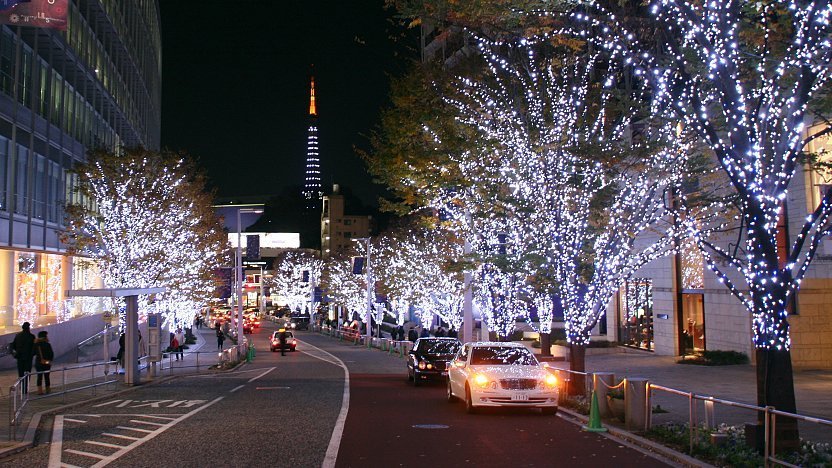
Below is a list of some of Tokyo 's best winter illuminations . See also our nationwide list of illumination events . (Photos are from previous years)
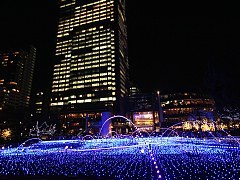
Questions? Ask in our forum .
Links and Resources
Tokyo midtown, odaiba decks, roppongi hills, tokyo dome city, yebisu garden place, meguro-gawa minna no illumination, aonodokutsu shibuya, hotels around tokyo.
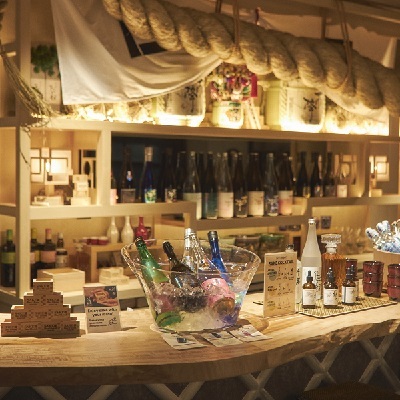
Experiences around Tokyo

Protect Your Trip »
Best places to visit in japan.
Known as the Land of the Rising Sun, Japan's civilization dates as far back as 30,000 years. Today, the archipelago seamlessly blends its rich history with its ultra-modern present. And while its capital, Tokyo, is a must-visit for first timers, Japan has so much more to offer travelers of all types, from cherry blossoms to white sand beaches to soothing onsen (hot spring spas). U.S. News took into account cultural attractions, culinary options and accessibility (among other factors) to bring you the best places to visit in Japan. Have a favorite? Vote below to help decide next year's ranking.
Izu Peninsula

This metropolis is a feast for the senses. Neighborhoods like Ginza and Akihabara buzz with flashing lights and larger-than-life shopping, while Meiji Shrine and the Tokyo Imperial Palace give you a look into Japan's storied past. There are also a number of green spaces like Shinjuku Gyoen National Garden, which acts as a place to escape from the chaotic, concrete jungle. What's more, Tokyo is regularly regarded as a top foodie city thanks in part to its abundant Michelin-starred restaurants (the most you'll find in any city in the world), so come hungry.

Travelers most interested in Japan's history and traditions should head to Kyoto. Centrally located on the archipelago, Kyoto has long been considered the cultural capital of Japan. Here, you'll find more than 1,000 Buddhist temples and 400-plus Shinto shrines (you can't miss the Kiyomizu-dera Temple and Fushimi Inari Taisha), including a whopping 17 UNESCO World Heritage sites. You can also stroll through geisha districts like Gion and Miyagawacho, admire classic wooden architecture and visit traditional teahouses before checking out more modern attractions, such as the Kyoto Aquarium.

Nikko is the place to go to see lavish architecture surrounded by nature. Head to Nikko National Park, one of Japan's oldest national parks, to enjoy an up-close look at traditional structures situated alongside mountains, lakes, waterfalls and hot springs. The park is especially beautiful in fall when its trees display vivid shades of yellow, red and orange. The 103 Edo-era (1603–1868) temples and shrines in Nikko include world-renowned sites like Toshogu Shrine and Rinnoji Temple.

Situated about 35 miles southwest of Kyoto, this port city is worth a visit for its food alone. One of the city's most famous dishes, the tasty pancake-like okonomiyaki (which means "grilled as you like it" in Japanese), is made with batter, cabbage and your choice of meat and other toppings. After you've gotten your fill of the delectable local cuisine, explore the flashy Dotonbori neighborhood, check out the reconstructed 16th-century Osaka Castle or head to contemporary sights like Universal Studios Japan and the Osaka Aquarium Kaiyukan.

As Japan's second most populous city, Yokohama is often touted as a more approachable and more affordable alternative to Tokyo (located 22 miles northeast). As one of the country's first ports to open to international trade, Yokohama features unique culture fusions, including a sizable expat population, Western-style buildings in the Yamate area and the largest Chinatown in Japan (it has more businesses than residents). While here, visitors can explore Minato Mirai 21, the city's modern central district teeming with skyscrapers and shopping malls, and visit museums ranging from the Cup Noodles Museum to the Mitsubishi Minatomirai Industrial Museum.

More than 160 islands comprise Okinawa, a top destination for snorkeling and diving. The Japanese prefecture boasts proximity to multiple coral reefs teeming with fish, manta rays and hammerhead sharks that you can access from beautiful beaches like those found on Okinawa's Kerama Islands. These 20-plus islands are also ideal places to see migrating whales between January and March. Back on the main island, visitors will find one of the world's largest aquariums, several castle ruins and a museum that focuses on Okinawa's unique history and culture. And on the less developed Iriomote Island, adventurous travelers can hike to awe-inspiring waterfalls.

Spared from World War II air raids and the major natural disasters that have affected other Japanese cities, Kanazawa on the western coast is home to some of the country's best-preserved architecture from the Edo period. Sites like Kanazawa Castle, Seisonkaku Villa and Myoryuji temple are popular among visitors, as are the Higashi Chaya geisha district and Nagamachi Samurai District. Plus, no trip to Kanazawa would be complete without a visit to the resplendent Kenrokuen Garden. With its water features, bridges and a variety of flowering trees that add beauty to any season, Kenrokuen is often described as the perfect garden.

Nestled in the mountains of the Gifu prefecture, Takayama is ideal for visitors looking for a rural retreat with a dose of history. Start your visit with a rickshaw ride through the well-preserved old town, which features sake breweries, traditional residences and shops that date back to the feudal ages. Then, head to the Hida Folk Village, a former farming village with 30 gassho-style houses. When you've worked up an appetite, indulge in must-try local specialties including Hida beef and Takayama ramen. To further immerse yourself in Takayama culture, visit during the Takayama Festival, held for two days every spring and fall.

The country's tallest mountain and one of its most iconic landmarks is a popular destination for outdoor recreation. For centuries, Japanese artists and poets have been inspired by Mount Fuji's almost perfectly round form. The Fuji Five Lakes region at the foot of this UNESCO World Heritage Site makes a great base for the thousands of climbers who visit each year. Enjoy the area's museums and amusement park during the warmer months. Or, arrive in winter to soak in the onsen and ski Mount Fuji's slopes.

Located on Kyushu (Japan's third-largest island), Fukuoka offers travelers a mix of urban sprawl, sandy coastlines and ancient temples and shrines. Can't-miss sights include Tochoji Temple – home of the largest sitting wooden Buddha in Japan – and Nokonoshima Island, which features colorful flower fields and beautiful views of the surrounding bay. Fukuoka is also known for its incredible Hakata ramen, so be sure to try this tasty dish at one of the city's many food stalls. Plan your visit around one of Fukuoka's lively festivals, such as the Hakata Gion Yamakasa, which takes place throughout the first half of July.

Head to the smallest of Japan's four main islands if you're looking to get off the beaten path. Shikoku is best known for its 88 Temple Pilgrimage – a nearly 750-mile loop that covers sacred sites around the island. Whether you're trekking this path or creating your own, you'll encounter Shikoku's natural beauty (think: forest-covered mountains and an unspoiled coastline). Meanwhile, the city of Kochi features cheap eats and a well-preserved castle. If you're visiting in mid-August, add Shikoku's cultural pinnacle, Awa Odori, to your itinerary. One of the most famous festivals in Japan, this dance celebration in the city of Takushima is a must-do.

Mountainous Hakone is one of Japan's most popular hot spring destinations. Nestled within the Fuji-Hakone-Izu National Park, the town features 17 different hot springs, plus a hot spring theme park with unique baths like one with coffee and another with mulled wine. After you've dried off, visit one of Hakone's art museums, such as the Hakone Open-Air Museum, the Okada Museum of Art or the Hakone Museum of Art. No Hakone vacation would be complete without enjoying spectacular views of Mount Fuji from Lake Ashinoko and the Komagatake Ropeway.

After an earthquake caused significant damage to the city in 1995, Kobe rebuilt itself into a thriving cosmopolitan city. You'll want to remember to bring your appetite when you visit. Kobe is famous for its namesake beef, as well as its sake. It's also considered one of Japan's most attractive cities, with sleek architecture and beautiful green spaces like Sorakuen Garden. For some of the city's best views – especially at sunset – go to the top of Mount Rokko or ride the Kobe Nunobiki Ropeway. End your evening exploring Nankinmachi (Kobe's compact Chinatown) or dining at one of Kobe Harborland's waterfront restaurants.

For many, Hiroshima brings up memories of war, as the city is where the world's first atomic bomb attack occurred in 1945. But today, Hiroshima is a city of peace, with the vast Peace Memorial Park as the center for monuments and memorials like the the Children's Peace Monument and the UNESCO-certified Hiroshima Peace Memorial (Atomic Bomb Dome). It is also a city of great beauty. Travelers can take a scenic stroll through Shukkeien Garden, peruse the exhibits at the Hiroshima City Museum of Contemporary Art or visit Sandankyo Gorge to hike or boat past its beautiful waterfalls, caves and coves.

Tourists flock to the island of Miyajima (formally named Itsukushima) for its prime attraction: Itsukushima Shrine and its postcard-worthy torii gate. To see the shrine at its most picturesque, try to visit during high tide, when the gate appears to float on the water. Since the island is just a 30-minute ferry ride from Hiroshima, it makes for a great day trip. However, visitors may want to stay the night at a charming ryokan (Japanese-style inn) to experience Miyajima at its most serene and walk by the illuminated shrine at night.

An outdoor-lover's delight, Matsumoto is just 22 miles east of Kamikochi, an awe-inspiring valley in the Hotaka mountain range. But though it serves as a gateway to the Japanese Alps, this city in central Japan should not be skipped over. As the birthplace of contemporary artist Yayoi Kusama, known for polka dots and pumpkins, Matsumoto pays her tribute at the Matsumoto City Museum of Art. Meanwhile, those who prefer more ancient masterpieces can visit Matsumoto Castle, one of the oldest and grandest castles in the country.

Japan's first permanent capital is famous for housing the Great Buddha, a nearly 50-foot-tall bronze statue of Buddha. You'll find this jaw-dropping national treasure in Nara's Todaiji temple, which is the one of the largest wooden buildings in the world. While on the temple grounds, explore the deer-filled Nara Park and the ornate Kasuga Taisha shrine. Also save time for visiting Yakushiji Temple, one of Japan's oldest temples that dates back to A.D. 730.

This peninsula situated 62 miles southwest of Tokyo makes a great getaway from the busy city. It is popular among locals and tourists alike thanks to its relaxing hot springs and stunning beaches. These, along with various museums and ryokans, can be found in cities like Atami and Shimoda on the Izu Peninsula's eastern coast. During spring visits, travelers will also want to check out Kawazu's vibrant pink blooms at the Kawazu Cherry Blossom Festival. Meanwhile, on the southern and western coasts, vacationers will find more rugged yet equally scenic coastlines, such as Cape Irozaki and Dogashima.
Vote to Add these Destinations to the Rankings

Chubu Sangaku National Park

Shirakawa-go and Gokayama
You may be interested in.

Best Places to Visit in Asia

Best Places to Visit in Thailand

World's Best Places to Visit for 2023-2024

Africa & The Middle East
Best Places to Visit in Africa in 2023

Best Places to Visit in October 2024

Australia & The Pacific
Best Places to Visit in Australia and The Pacific in 2023
If you make a purchase from our site, we may earn a commission. This does not affect the quality or independence of our editorial content.
Recommended
The 28 Best Water Parks in the U.S. for 2024
Holly Johnson|Timothy J. Forster May 8, 2024

The 18 Best Napa Valley Wineries to Visit in 2024
Lyn Mettler|Sharael Kolberg April 23, 2024

The 25 Best Beaches on the East Coast for 2024
Timothy J. Forster|Sharael Kolberg April 19, 2024

The 50 Best Hotels in the USA 2024
Christina Maggitas February 6, 2024

The 32 Most Famous Landmarks in the World
Gwen Pratesi|Timothy J. Forster February 1, 2024

9 Top All-Inclusive Resorts in Florida for 2024
Gwen Pratesi|Amanda Norcross January 5, 2024

24 Top All-Inclusive Resorts in the U.S. for 2024
Erin Evans January 4, 2024

26 Top Adults-Only All-Inclusive Resorts for 2024
Zach Watson December 28, 2023

Solo Vacations: The 36 Best Places to Travel Alone in 2024
Lyn Mettler|Erin Vasta December 22, 2023

26 Cheap Beach Vacations for Travelers on a Budget
Kyle McCarthy|Sharael Kolberg December 4, 2023

- TOKYO MARATHON 2023
- TOKYO MARATHON 2021
- TOKYO MARATHON 2020
- More information
- Media Section
- Press Releases
- Use of the Tokyo Marathon Properties
- General Information ▼
- Volunteers ▼
- Official Shop

2025 Convention Announcement
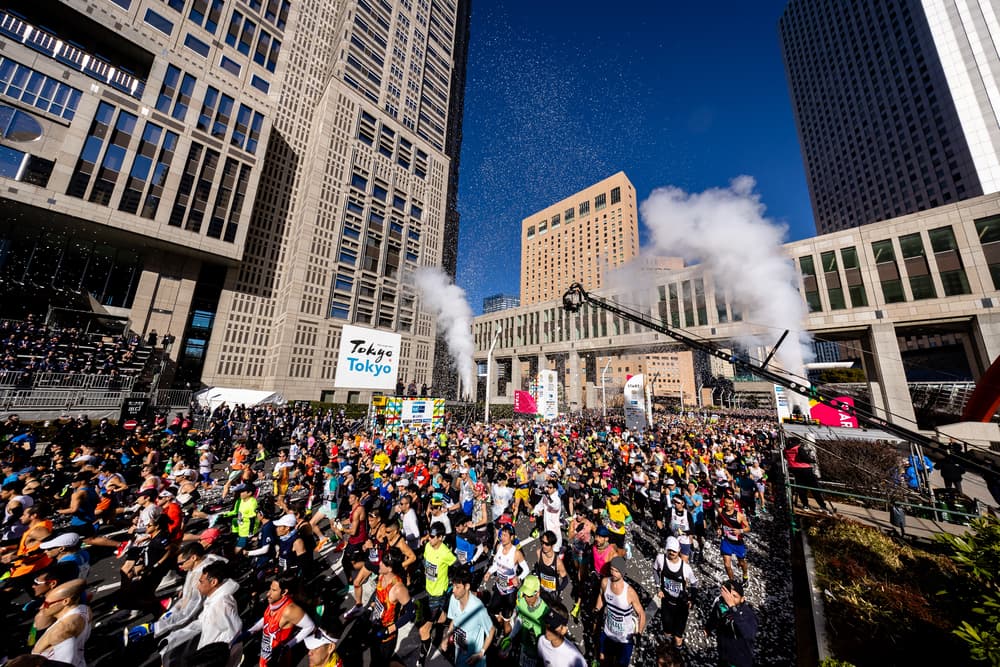
Tokyo Marathon Performance
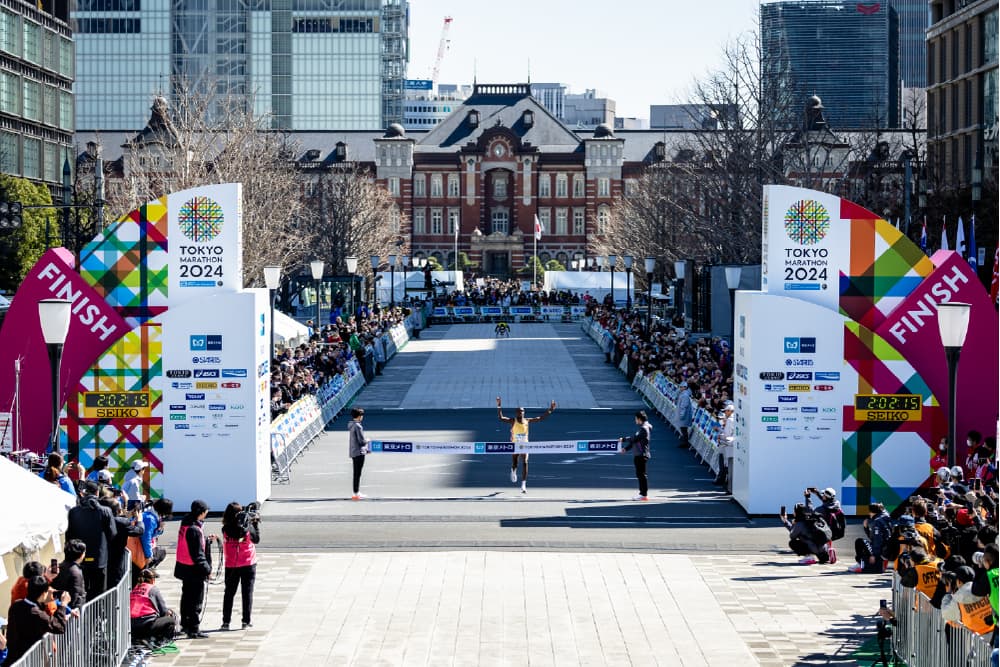
- --> --> -->